













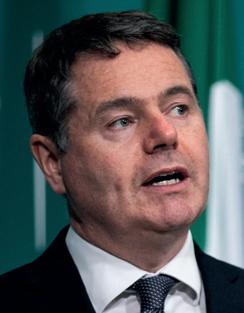
A global leader National Broadband Ireland’s David McCourt Informing Ireland’s decision-makers... €4.95 Feb/Mar 23 issue 56 Minister of State at the Department of Transport Jack Chambers TD outlines road safety priorities for 2023 Head of the Oireachtas Library and Research Service Madelaine Dennison on meeting members’ needs PENDPDR Minister Paschal Donohoe TD reflects on the delivery of NDP infrastructure plans Infrastructure and construction • Offshore wind • Road safety • Retrofitting
Croke Park, Dublin
Major sponsors
Sponsors








Technology partner































Energy Ireland 2023 will bring together all the key stakeholders in the Irish energy sector to discuss and debate the key drivers of the energy transition and the current energy price crunch. It will look forward to the developments that will decarbonise Ireland’s increasingly integrated energy system.




Speakers include:



















































Eamon Ryan TD Minister for Environment, Climate and Communications

Aoife MacEvilly Commission for Regulation of Utilities



Paul Münnich

Agora Energiewende




Anouk Honoré
The Oxford Institute for Energy Studies



Tanya Harrington
Renewable Energy Ireland



KEY THEMES FOR ENERGY IRELAND 2023
• Improving Ireland’s energy security



















Geopolitical context to the energy transition


• Developing Ireland’s offshore wind energy

































• resources

• Decarbonising Ireland’s gas network
Future electricity system development
• Role of renewable energy technologies in the






































































































































































































































































































• energy transition


















• energy future


Importance of digital networks in Ireland’s






























11th-12th May 2023
2023 For more information +353 (0)1 661 3755 • www.energyireland.ie • info@energyireland.ie Sponsorship opportunities available
•
Register now
www.energyireland.ie
online




















Contents 97 Road safety 98 Minister of State Jack Chambers TD on consolidating road safety progress 104 European Road Safety Charter 106 Safe Routes to Schools 113 Retrofitting 114 Retrofit: A step change in delivery 118 DECC Assistant Secretary Barry Quinlan on decarbonising Irish homes 128 Addressing a skills deficit 132 University of Galway’s Marie Coggins on air quality and ventilation in retrofits 144 Europe 144 President of the European Court of Human Rights: Síofra O’Leary 146 Public affairs 146 Cabinet reshuffle 150 Spring 2023 Legislative Programme 152 Interview: Head of the Oireachtas Library and Research Service, Madelaine Dennison 158 Political platform: Green Party TD Patrick Costello 160 Back page: Women for Election CEO Caitríona Gleeson 12 Digital Events Print 18 Round table discussion hosted by Offshore wind sponsored by Infrastructure and construction sponsored by 160 Road safety sponsored by 04 Matters arising 08 Issues 08 Climate Action Plan 2023 12 Cover story: National Broadband Ireland’s David McCourt 18 Round table discussion: The future of eMobility in Ireland 31 Infrastructure and construction 32 Minister Paschal Donohoe TD on delivery of the National Development Plan 36 Ireland’s major infrastructure pipeline 42 DHLGH Assistant Secretary for Water, Fintan Towey, discusses reform in services 46 Budget 2023 and capital expenditure 58 Housing completions and construction slow down 67 Offshore wind 68 Minister Eamon Ryan TD on accelerating offshore delivery 72 DECC Principal Officer for offshore wind, AnneMarie Clancy, on the phased planning approach 76 Offshore wind’s role in green hydrogen production 68 152 72
WATER IRELAND 2023


WEDNESDAY 19TH APRIL
Water Ireland 2023 will bring together key stakeholders on the island of Ireland to discuss the challenges and opportunities facing the sector. This year’s conference will open with a plenary session looking at the strategic issues, including European water policy developments. The focus will then turn to the impact of climate change on water supply and use in Ireland. The afternoon will look at the challenges in developing water infrastructure. The conference will close with a panel discussion bringing all these issues together as we look to the future outlook for the sector.
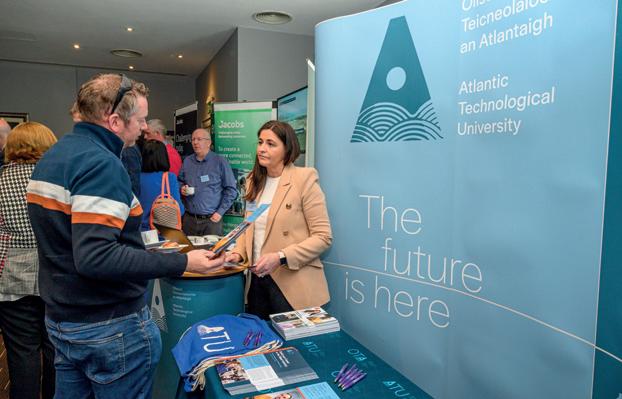


Limited sponsorship and exhibition opportunities available…

There are a limited number of sponsorship and exhibition opportunities available! This is an excellent way for organisations to showcase their products or services they wish to promote. For further information on sponsorship and speaking opportunities and how your organisation can benefit, contact Karen Reilly on +353 (0)1 661 3755 or email karen.reilly@eolasmagazine.ie

BY
HOSTED
T: +353 (0)1 661 3755 W: www.waterireland.ie E: registration@waterireland.ie MORE INFORMATION AVAILABLE SOON
MIDLANDS PARK HOTEL, PORTLAOISE
Digital Events Print
The emigrant isle…
Ireland’s people are her greatest asset and, perhaps unfortunately, her greatest export. Between year ending April 2018 and year ending April 2022, an average of 56,260 people – just over 1 per cent of the total population – emigrated from the State each year.
In total, there are approximately 1.47 million Irish-born citizens living outside of the State – not including those living in the North. Equating to 29 per cent of the current population of the State, this figure is a fraction of the 70 million diaspora. In other words, a population equivalent to almost a third of the State’s existing population are émigrés. Meanwhile, it is estimated that one-third of the total number of Irish abroad are from the North.
Across the Anglosphere alone – Australia (100,684, 2021), Britain (523,014, 2021), Canada (29,300, 2021), and the US (111,886, 2019) in particular –almost 800,000 Irish-born people are carving out a social, economic, and cultural existence on foreign soil. These figures do not include the ‘undocumented Irish’, of which there are between 10,000 and 15,000 in the US.
How ironic then, given that the emigrant experience is embedded in our island nation’s psyche, that anti-immigrant feeling has spewed onto the streets of Irish towns and cities. A fringe of conspiracy theorists, the dregs of nauseating internet fora, and unabashed ultra-nationalists are playing Pied Piper to a cohort of naïve and/or disenchanted individuals from socioeconomically deprived communities.
Exposing the hypocrisy of such recent disturbances, the modern experience of the global Irish – from the west coast of the US to the east coast of Australia – and their value to Ireland, is personified by Irish American entrepreneur and National Broadband Ireland Chairman, David McCourt, whose parents left County Galway on an earlier wave of emigration and settled in south Boston, Massachusetts. In our cover story interview, McCourt discusses efforts to spearhead the rollout of the National Broadband Plan and the opportunities of modern and futureproofed broadband infrastructure for Ireland.
Elsewhere, this issue of eolas contains dedicated reports on infrastructure and construction; offshore wind; road safety; and retrofitting. Interviewees and contributors include: Minister for Public Expenditure, NDP Delivery and Reform, Paschal Donohoe TD; Minister for the Environment, Climate and Communications, Eamon Ryan TD; Minister of State at the Department of Transport, Jack Chambers TD; University of Galway senior lecturer Marie Coggins; Head of the Oireachtas Library and Research Service, Madelaine Dennison; and Women for Election CEO, Caitríona Gleeson.
Editorial
Ciarán Galway, Editor ciaran.galway@eolasmagazine.ie
Odrán Waldron, Deputy Editor odran.waldron@eolasmagazine.ie
David Whelan
david.whelan@eolasmagazine.ie
Fiona McCarthy fiona.mccarthy@eolasmagazine.ie
Joshua Murray joshua.murray@eolasmagazine.ie

Advertising Sam Tobin sam.tobin@eolasmagazine.ie
Design
Gareth Duffy, Head of Design gareth.duffy@eolasmagazine.ie
Jamie Hogan jamie.hogan@eolasmagazine.ie
Events
Lynda Millar lynda.millar@eolasmagazine.ie
Become a subscriber!
Annual subscriptions:
€15.00 + €5.00 P&P
Contact: Sharon Morrison
Email: subscriptions@eolasmagazine.ie
Online: www.eolasmagazine.ie
eolas Magazine
Owen McQuade, Publisher owen.mcquade@eolasmagazine.ie
bmf Business Services
Clifton House
Lower Fitzwilliam Street
Dublin, D02 XT91
Tel: 01 661 3755
Web: www.eolasmagazine.ie
Twitter: @eolasmagazine
• This product is made of FSC®-certified and other controlled material.
• This product is made of material from well-managed, FSC®-certified forests and other controlled sources.
• This product is made of material from well-managed FSC®-certified forests, recycled materials, and other controlled sources.
• This product is made of material from well-managed FSC®-certified forests and from recycled materials.
• This product is made of recycled materials and other controlled sources.
eolas Issue 56 February/March 2023 www.eolasmagazine.ie
Ciarán Galway
Homelessness at record levels
The homelessness report for December 2022 has reported an increase of 30 per cent from December 2021. Figures released by the Department of Housing, Local Government and Heritage show that 11,632 people, including 3,442 children, spent the week prior to and including Christmas Day in a state of homelessness, the highest figure ever recorded in the State.

71 per cent of the adult homeless population are located in Dublin, as are 75 per cent of homeless children.
The spike in homelessness comes in spite of the thenTaoiseach Micheál Martin TD and Housing Minister Darragh O’Brien TD signing a ban on evictions, a measure which is set to expire on 1 April 2023.
Minister O’Brien has stated that the ongoing eviction ban is “under review” by the Government and acknowledged that the homelessness figures are “too high” and that it is “a really difficult situation”.
Sinn Féin housing spokesperson Eoin Ó Broin TD has described the homelessness figures as “disturbing” and called on the Government to extend the temporary winter eviction ban.
“This is the first time homelessness has risen in December for some time. The fact that it has happened while the winter ban on evictions is in place is deeply disturbing.”
Curley resigns from HSE citing extreme resistance to change
Martin Curley has resigned as head of digital transformation at the HSE, saying that Ireland has “potentially the worstperforming healthcare system in the northern hemisphere”.

In a statement on LinkedIn on 17 January 2023, Curley stated: “We have called off this particular ascent on Everest. Bad weather prognosis and supply chain and funding blockages. We could still succeed but there would be too many casualties, including me.”


Curley stated that the reason for his resignation was an “extreme resistance to change” within the HSE, where he had been tasked with introducing new technologies into the healthcare system.
“These technologies are available. If we could just scale them, Ireland could leapfrog from being number 80 in the world to in the top 10 within the next five or six years but we just have to decide to do it,” Curley told RTÉ.

He further said to RTÉ, when asked if the HSE was ‘fit for purpose’: “I will be very honest, no it is not”.
Curley has stated that he has found “a more promising alternative route, with a much more well situated and welcoming base camp”. He stated this prior to taking up a new role as professor of innovation at Maynooth University.

HOUSING HEALTH matters arising 4 eolas matters
Four new appointees in Coimisiún na Meán
Minister for Tourism, Culture, Arts, Gaeltacht, Sport and Media, Catherine Martin TD, has appointed four members to leadership roles within the newly established Coimisiún na Meán.
The four appointees are: Jeremy Godfrey as Executive Chairperson; Niamh Hodnett as Online Safety Commissioner; Rónán Ó Domhnaill as Media Development Commissioner; and Celene Craig as Broadcasting Commissioner.
Ó Domhnaill’s appointment as Media Development Officer will see him resign his role as Coimisinéir Teanga, a role he had held since 2014 and gave him a central role in the formulation of the revised Official Languages Act.

Coimisiún na Meán was established following the passage of
the the Online Safety and Media Regulation Act in December 2022.

The Act stipulated the Government to dissolve the Broadcasting Authority of Ireland, establish a regulatory framework for online safety, update the regulation of television broadcasting and video on-demand services, and transpose the revised Audiovisual Media Services Directive into Irish law.
Minister Martin said: “Coimisiún na Meán [will] oversee a comprehensive new regulatory framework for traditional broadcasting services, video-on-demand services and, for the first time, for online services. Coimisiún na Meán will also be responsible for implementing many recommendations made by the Future of Media Commission.”
‘Inefficient and unsafe’ child mental health services


A “lack of governance” is contributing to “inefficient and unsafe” child and adolescent mental health services (CAMHS) in the State, a report has found.

Published in January 2023, the report, carried out by the Inspector of Mental Health Services, states that poor management has resulted in “failure to manage risk, failure to fund and recruit key staff, to look at alternative models of providing services when recruitment becomes difficult, and failure to provide a standardised service across and within CHOs”.
The report critiques the structural funding model which does not allocate a specific budget for child and adolescent mental
health services, instead forcing these services to compete for funding with the wider HSE. According to the Inspector of Mental Health Services, “it is unclear how the decisions to provide a discipline in one area and not in others are made”.
An additional problem is a lack of risk management strategies in the State’s child and adolescent mental health services. The report states: “We [the Inspector] made repeated requests for an action plan to address the risk. The plan, when finally received, did not assure us that there were sufficient actions to address the risks.”
PUBLIC AFFAIRS HEALTH matters arising 5 eolas matters
New Coimisiún na Meán Media Development Officer Rónán Ó Domhnaill.
Government aims to reduce vacant homes
The Department of Housing, Local Government and Heritage has announced an action plan to reduce the number of vacant homes in the State.
Currently, there are 166,752 vacant homes, according to figures provided for in Census 2022, accounting for 7.9 per cent of the total housing stock in the State.
The Government makes it clear throughout the report that vacant housing is a problem “not unique to Ireland”, and that Ireland’s rate of vacancy – just shy of 8 per cent – is less than other EU member states such as Portugal, Spain, Hungary, and Greece. However, Ireland’s vacancy rate is above states such as Poland, France, Germany, and the Netherlands.

The report states that the Government will continue with ongoing projects such as Town Centre First – A Policy Approach for Irish Towns, Our Rural Future, and the broader National Planning Framework.
The main prong of the new action plan is to allocate €150 million to local authorities to assist them with projects to regenerate derelict and vacant homes.

Announcing the strategy, Minister Darragh O’Brien TD stated: “While significant work remains to be done, real progress is being made in addressing vacancy. Our sense of urgency remains, and we are determined to build on what we have achieved to date.”
Varadkar: English has paid “a big political price”
In the immediate aftermath of the December 2022 cabinet reshuffle, Damien English TD resigned his roles as Minister of State in the departments of Social Protection and Enterprise, Trade and Employment.


English, it was alleged on the online media website The Ditch, failed to declare ownership of an existing home in his planning application for a new property in 2008. It is further alleged that he failed to declare this ownership in the Dáil register of interests.

Announcing his resignation, English stated: “I reviewed this application, made in 2008, and it is clear to me that I failed to inform Meath County Council about ownership of my house in Castlemartin. This was wrong, not up to the standard required and I apologise for doing so.”
Taoiseach Leo Varadkar TD stated that English had paid “a big price political price” but that “there is a requirement on anybody in the public service to abide by rules and regulations and engage correctly and appropriately with public bodies”.
Replacing English in both roles is Neale Richmond TD in his first cabinet appointment. The Dublin Rathdown TD stated on social media: “Honoured and delighted to be appointed to serve as Minister of State with responsibility for Employment Affairs and Retail Businesses.
“Keenly aware this hasn’t come about in ideal circumstances but looking forward to taking on this new responsibility.”

matters arising
HOUSING
AFFAIRS 6 eolas matters
PUBLIC
Forestry agreement reached despite controversy
A deal on forestry has been agreed between Coillte and Gresham House, a British-based asset management firm, which will see Gresham House assume control of the Irish Strategic Forests Fund, and management over around 12,000 acres of Irish land and the €200 million allocated to the fund.

The Government has been criticised by protesters and opposition TDs alike, with Sinn Féin TD Réada Cronin saying in the Dáil: “Pimping out our land and prostituting it to a foreign investor for its private profit is not only horrifying and nonsensical, it is also downright disrespectful and unpatriotic.”
Minister of Agriculture, Food and the Marine, Charlie McConalogue TD, stated that the deal was not the Government’s “preferred option”.
He continued: “Our preferred option is for farmers to plant forest on their own land… That is what we have designed the new forestry programme to achieve. However, this fund is an option Coillte has put in place to help us reach our highly ambitious forestry targets.”
Minister for the Environment, Climate and Communications, Eamon Ryan TD, at Leaders’ Questions on 26 January 2023, said that cultural change was needed in Coillte.
“There is a range of new, closer-to-nature agroforestry solutions which we have not delivered in the last 90 years of forestation. It is fundamentally changing and needs to go further.”

‘Significant’ migrant wage gap
The average immigrant worker in the State earns 40 per cent less than the average Irish-born worker, a report has found.
The report, carried out by the Economic and Social Research Institute (ESRI), states that foreign workers are significantly more likely to be in lower quality jobs. “[Immigrants] are less likely to work in professional/managerial occupations (33 per cent compared to 44 per cent of Irish nationals).”


It further outlines that non-Irish nationals are much less likely to be members of trade unions or staff associations (13 per cent compared to 34 per cent for Irish nationals).
Within the immigrant workforce, eastern Europeans earn 40 per cent less per hour than their Irish counterparts. Part of
this wage gap can be explained by differences in social and demographic characteristics such as education level, the kinds of jobs undertaken, and employers. “However, even after we account for these differences in characteristics, east Europeans still earn 20.5 per cent less than Irish nationals.”
For workers from western Europe, North America, and Oceania, the gap is much smaller. “This is partly because they have higher educational qualifications, but they still get lower rewards for education than Irish workers,” the report states.

African workers, even when factors such as educational background are taken into consideration, earn on average 14 per cent less than Irish nationals.

ENVIRONMENT ECONOMY 7 eolas matters matters arising
Climate Action Plan 2023: A welcome roadmap
Representing the second annual update to Ireland’s ongoing Climate Action Plan (CAP), CAP 2023 is the first to be prepared following the Climate Action and Low Carbon Development (Amendment) Act 2021 and sets out a roadmap to halve emissions by 2030.
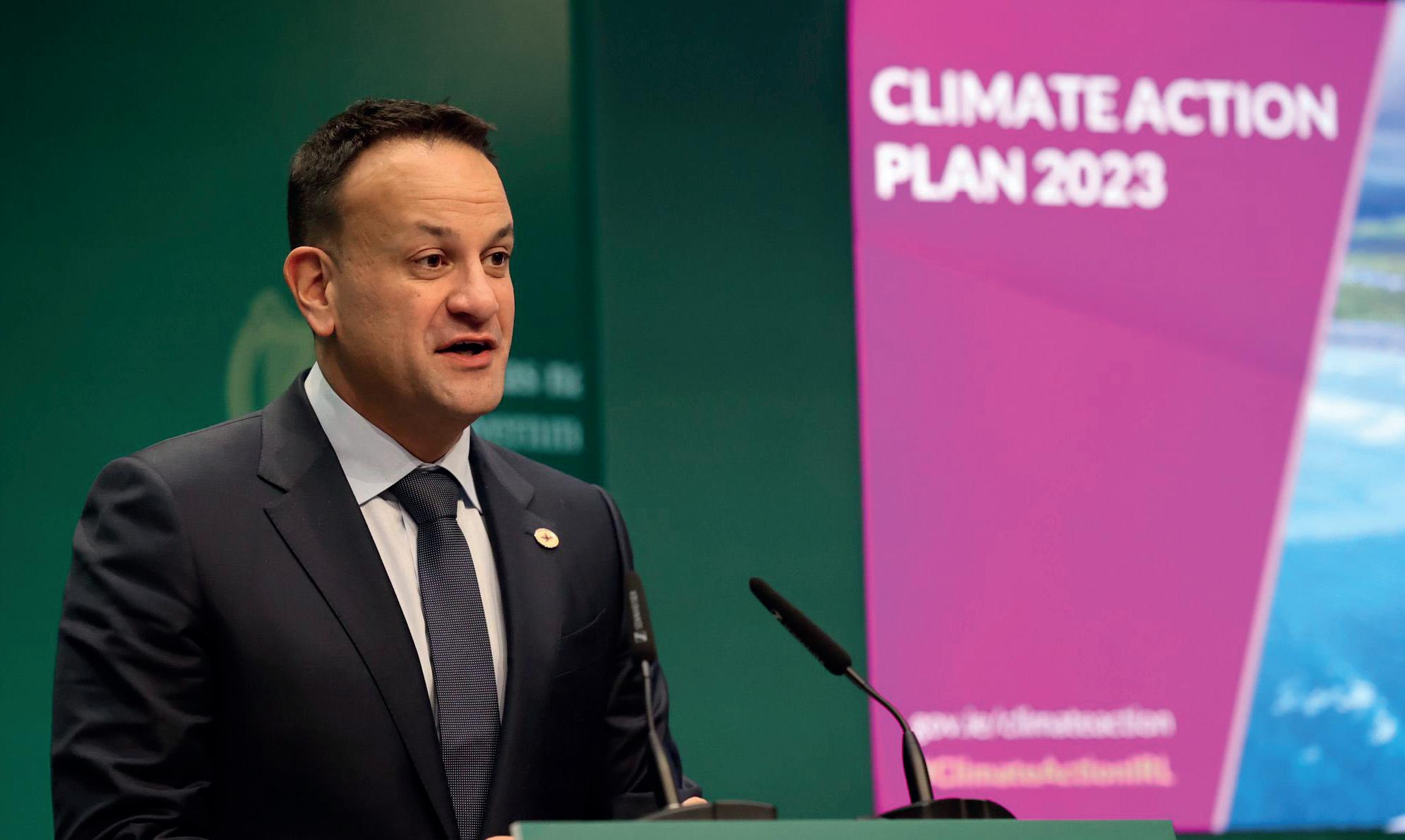
The plan seeks to implement the legally binding carbon budgets and sectoral emission ceilings introduced under the Act and identifies six “vital high-impact sectors” as part of the plan.
Where CAP 2023’s predecessors focused on Ireland’s contribution to the need to reduce global emissions and mitigate the planet’s temperature rise, the most recent plan pointedly highlights the local consequences of climate change, not least an almost 10oC increase in average surface air temperature over the last century, and an annual sea level rise of
between 2mm to 3mm since the early 1990s.
Importantly, the plan builds on engagement and research carried out under the National Dialogue on Climate Action in 2022, which the Government says “will inform and support a strengthened social contract between the Government and the Irish people around climate action”.

Feeding into the importance of broad citizen engagement, CAP 2023 pledges to a just transition committee, as an advisor to government, with specific progress indicators.

The National Development Plan (NDP) sets out investment of some €165 billion to 2030, boasting a rise of public investment to 5 per cent of GDP* as well above the 3 per cent of GDP average.
Renewable electricity

Underpinning the critical role renewable electricity will play in decarbonising other sectors, CAP 2023 raised the ambitions of existing targets (see figure 1). CAP 2023 commits to 22GW of new renewable capacity by 2030, a significant rise from 15GW in CAP 2021. Among the most important measures included in the plan is raising the proportion of renewable electricity to 80 per cent by 2030, setting a target of 9GW from onshore wind, 8GW from solar, and up to 7GW of offshore wind energy, 2GW of which will be for hydrogen production.
Electrification will play a big part in the decarbonisation of the heat sector. CAP 2023 does not increase the previously outlined ambitious target to retrofit 500,000 homes and 400,000 to use heat pumps by 2030 but does accelerate
8 eolas issues issues eolas
Climate Action Plan 2023 implements the carbon budgets and sectoral emissions ceilings, setting a roadmap for taking decisive action and halving emissions by 2030.
Credit: Merrion Street
Figure 1: CAP 23: Electricity and renewables targets
recognising that Ireland’s land use change and forestry sector is a carbon source rather than a carbon sink. Actions include a Forestry Programme 2023-27 and Coillte’s Strategic Vision, launching the Common Agricultural Policy Strategic Plan, and continuing Bord na Móna programmes aimed at peatland restoration.

Marine
In relation to the marine environment, ambitions for at least 5GW of offshore require the development of a comprehensive planning and consenting regime. The establishment of the Maritime Area Regulatory Authority and the development of Marine Planning Guidelines are the basis for increasing renewable generation in the years ahead.
targets for 2025 and 2030. Alongside a pledge to install 680,000 renewable energy heat sources in new and existing buildings, CAP 2023 sets out that all new dwellings will be designed and constructed to nearly zero energy building (NZEB) standard by 2025, and zero emission building standard by 2030. Sectoral emissions ceilings require a 45 per cent reduction in emissions for commercial/public buildings and a 40 per cent reduction in emissions for residential buildings by 2030. A 20 per cent target has been set for both for 2025.
Actions in the residential sector for 2023 include publishing a National Heat Policy Statement, accelerating the delivery of district heating schemes, implementing recommendations of the District Heating Steering Group, and publishing a geothermal policy statement.
Alongside efforts to support the continued rollout of retrofit schemes, CAP 2023 sets out efforts to boost supply chains, and skills and support low-cost finance. A National Heat Policy Statement is expected in 2023.

Transport
Targets to decarbonise transport set out in CAP 2021 have been enhanced. CAP 2023 outlines a 20 per cent reduction in total vehicle kilometres travelled, and a
50 per cent reduction in fuel usage. Added to that are a 50 per cent reduction in daily active travel journeys and a 130 per cent increase in daily public transport journeys. Alongside continuing programmes of work in public transport, an EV charging strategy is set to be published in 2023, with charging infrastructure and charge point schemes to be led by the recently established Zero Emission Vehicles Ireland Office. The plan targets one-in-three private cars on Irish roads to be electric by 2030.
Agriculture
The plan commits to using less chemical nitrogen and more targeted use of fertiliser, while maintaining the same level of grass growth through multi-species swards, estimated to require between 150 to 200 AD plants of scale. A national biomethane strategy is expected in 2023 and The Renewable Heat Obligation 2024 is flagged as support. Other measures include improving the genetics of our herds to reduce emissions and improve productivity. The Government says it will incentivise increased organic farming and diversification into forestry, biomethane and energy production. Tillage farming is expected to cover up to 400,000 hectares by 2030.
The ongoing Land Use Review is set to inform the sector’s emission ceiling,
At the launch of CAP 2023, Taoiseach Leo Varadkar TD said that climate action should be seen as an opportunity, rather than an obligation or burden.
“It is about warmer homes, cleaner air, fewer journeys, less time commuting, more remote and home working, more jobs, and regional development,” he says.
“We should be the generation that turns the tide on climate change and biodiversity loss and leaves the planet to the next generation in a better condition than we inherited it. Within a generation, Ireland can become energy independent by harnessing our untapped renewable energy resources. We can reap the rewards for our people that come with it – greater energy security, stable prices, new industries producing green fertilisers and green hydrogen, more jobs, and regional development.”
Calling for a “dramatic shift”, Minister for the Environment, Climate and Communications and Transport, Eamon Ryan TD, adds: “The Climate Act 2021 and Climate Action Plan 2023 leave little room for manoeuvre. It is the responsibility of ministers, key economic sectors, and industries to demonstrate that they are on a clear path to halve our emissions by 2030 and achieve net zero by 2050.
“Our approach is based on the principle of fairness, ensuring a just transition where costs and benefits are shared equitably.”
9 eolas issues issues eolas
Target 2025 2030 Renewable electricity share 50% 80% Onshore wind 6GW 9GW Solar Up to 5GW 8GW Offshore wind At least 5GW (additional 2GW for green hydrogen production) New flexible gas plant At least 2GW Demand side flexibility 15-20% 20-30%
Northern Ireland (SONI).
Since 2007, EirGrid and SONI have operated the all-island wholesale electricity market as part of a joint venture known as the Single Electricity Market Operator (SEMO).
In 2008, EirGrid acquired SONI. Owned by Northern Ireland Electricity (NIE), SONI’s sale to EirGrid was in line with a desire to enhance the independence of the North’s transmission system operator. The decision to launch demerger proceedings comes after a critical report by the Northern Ireland Utility Regulator in 2021, which said that SONI was insufficiently independent of its parent company.
“The current governance structure is inadequate to ensure the protection of the interests of Northern Ireland consumers over the long term,” stated the report by the Utility Regulator, which also suggested that consumers in the North may have been overcharged for
their electricity because of how the grid operator was being run.
The recommendation for sweeping changes to how SONI was operated, was initially met with resistance by EirGrid, who argued that the Utility Regulator’s proposals were based on an assertion or assumption that there is some form of conflict of interest between EirGrid and SONI.
“This conflict has not been evidenced and does not in fact exist. Indeed, quite the contrary,” EirGrid wrote in a consultation on SONI governance by the regulator, highlighting that the Utility Regulator had explicitly stated in the consultation document that it had not identified any harm or specific performance issues that would have given rise to the need for the proposed governance measures for SONI.
EirGrid, as part of its submission, warned that a demerger would have an “adverse
impact” on electricity consumers on the island, and significant implications for the single electricity market on the island of Ireland.

The demerger proceedings come at a time when energy security on the island of Ireland has been under intense scrutiny, not least because of the decarbonisation agenda, and compounded by an EU shift away from the purchase of Russian fossil fuels. EirGrid’s latest Generation Capacity Statement predicted a “challenging outlook for Ireland” with capacity deficits identified for the decade to 2031.
The Utility Regulator’s decision took effect within the SONI TSO licence from 26 October 2022 and at the end of January 2023, EirGrid submitted a €3 million tender to “appoint a consultancy business to design, manage and implement this demerger project”.

The tender notification also stated that: “SONI Ltd will separately appoint consultants to design, manage and implement this demerger project reporting into the SONI Ltd Board. These projects will run in parallel to ensure completion of the demerger”.
EirGrid has set out that the framework agreement period for the demerger will be for an initial duration of two years with the option to extend annually for up to an additional three years, subject to the satisfactory performance of the supplier.
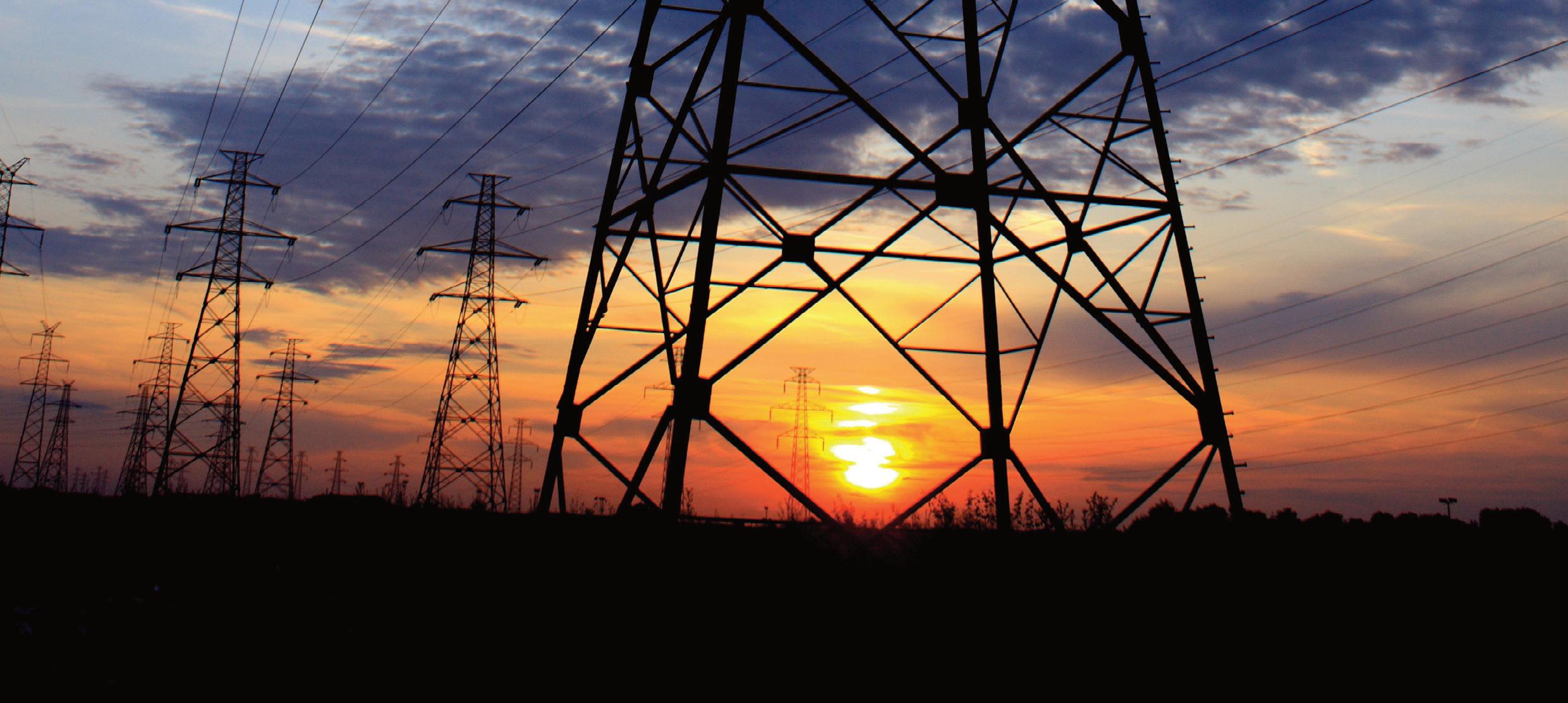
All-island electricity market faces ‘significant implications’ as demerger proceedings launched
EirGrid, the State’s national electricity grid operator, is seeking to appoint consultants to design, manage, and implement its demerger from the System Operator
issues
10 eolas issues
eolas

A global leader
As of 2022, high-speed broadband connections under the Government’s National Broadband Plan (NBP) have been established in every county in the State. David McCourt, Chairman of National Broadband Ireland (NBI), the company tasked with spearheading the project, discusses the opportunities of modern and futureproofed broadband infrastructure for Ireland.
Dwarfing all national infrastructure projects undertaken since rural electrification, the National Broadband Plan is a government initiative to make available high-speed broadband infrastructure for all premises in the State, ensuring that “every citizen and business, no matter where they are based, can progress together”.
Indeed, with an intervention area spanning 96 per cent of the State’s landmass and encompassing over 560,000 premises and 1.1 million homes, the network is projected to require a total of 140,000km of fibre cable, more than 1.5 million poles, and over 15,000km of underground duct networks.
Replacing traditional copper telecoms networks, optical fibre cables – coated silica glass strands – have the capacity to carry significant data over vast distances and will futureproof the broadband network. Wherever possible, the rollout will utilise existing infrastructure to avoid duplication.

For David McCourt, the priority today is the same as the day when Granahan McCourt won the NBP contract. “We have an ambitious build schedule to meet, and we are motivated to do everything in our power to deliver the rollout on time and on budget. Most importantly, we are working with the Government and other partners to
make sure that the National Broadband Plan does not just bring enhanced streaming speeds to rural Ireland, rather that it creates jobs and reduces unemployment,” he says.

Having secured the €3 billion contract to build, operate, and maintain the new national high-speed broadband network in November 2019, Granahan McCourt incorporated a new Irish registered company – National Broadband Ireland –to deliver the objectives of the NBP.

Ultimately, the NBP aims to connect 65,000 farms, 44,000 small businesses, 679 schools, and 1.1 million people across every county in the State. Despite delays

12 cover story
12 cover story
aggravated by the Covid pandemic and associated public health restrictions, McCourt is confident about the momentum that’s now being achieved in the rollout.


“For context, 45 days after we signed the contract for the National Broadband Plan, Covid hit and completely disrupted our access to materials and skills. That was a real problem early on,” the NBI Chair explains, before adding: “However, we have overcome those challenges and have consistently narrowed the subsequent delay to delivery.”
Ahead of schedule for the Covid-adjusted annual target for the contract year ending 31 January 2023, as set by the Department of the Environment, Climate and Communications, NBI’s rollout delivered over 102,000 premises passed and more than 232,000 premises under construction.

Meanwhile, 760 high-speed broadband connection points (BCPs) are now available, providing free public access at community facilities in every county. These BCPs pave the way for homes, farms and businesses to get their premises connected with minimum speeds of 500Mbps.
Transformative policy
A son of Galway emigrants and a native of Boston, Massachusetts, McCourt keenly reflects on “several visionary and bold policy decisions which have served to transform Ireland”. Among these, he includes the Rural Electrification Scheme beginning in 1946, the advent of free post-primary education in the 1960s, the expansion of the motorway network from the early 1990s onwards, and the recent referenda campaigns.
Firmly categorising the NBP as an initiative with the capacity to have a similarly transformative effect, the NBI Chair emphasises: “Through the implementation of the NBP, Ireland has become one of a very small and prestigious number of countries to make the availability of high-speed broadband a human right.”
While acknowledging that such policies invariably encounter short-term challenges and even controversy, he asserts: “Ultimately, long-term policies – such as the NBP – have allowed Ireland to evolve from a relatively small agrarian country to a global leader.”
Progress in 2022
As of the end of 2022, more than 30,000 homes,
4
13 eolas issues 13 agenda issues
cover story
cover story
“Through the implementation of the NBP, Ireland has become one of a very small and prestigious number of countries to make the availability of high-speed broadband a human right.”
David McCourt, Chairman of National Broadband Ireland (NBI)
RISE Global Foundation board; a charity partner to National Broadband Ireland.
farms, businesses, and community facilities have been connected to – or have requested connection to – the NBI high-speed fibre network, guaranteeing them access to minimum broadband speeds of 500Mbps.
Reflecting on this progress, McCourt highlights that a further 120,000 premises can order or pre-order connection, while two-thirds of the entire intervention area –around 375,000 premises – have been surveyed, and of these 350,000 have been through detailed designs. Similarly, over 860 BCPs – community facilities through which the public can access free high-speed broadband – and schools have been connected.
“NBI has 60 retail providers signed up on its open access wholesale platform, more than on any single platform in Europe. For instance, there are other companies on the market that have been in the wholesale business for 40 years and do not have a fraction of that figure,” he adds.
As such, retail providers are introducing most new customers to high-speed broadband for the first time while also migrating existing customers with inferior connectivity to the new fibre network. Overall, rollout of the NBP exceeded NBI’s ambition for the 2022 contract year. While only 30 per cent of premises in the State had access to high-speed broadband in 2021, rollout of the NBP has helped to increase this figure to 77
per cent ahead of a projected 95 per cent by 2025.
“We went into 2022 with a ‘Covid hangover’,” McCourt observes, adding: “As such, while we successfully reduced the resulting delay, it will take another 18 months to get back on the overall schedule. Regardless, NBI is extremely confident in its projections for output in 2023.”
Regional development
While Ireland has been hugely successful in attracting multinational companies to headquarter their European operations in Dublin, McCourt insists: “Now it has to be equally successful in creating an entrepreneurial spirit and jobs in its rural communities.”
Globally, as per UN estimates, approximately three million people migrate into an urban environment each week. Every three weeks, therefore, the world’s towns and cities absorb a total population equivalent to that of New York or London.
Suggesting that this is unsustainable, McCourt indicates that the solution is to cultivate an entrepreneurial spirit, as well as deploy new technologies, in rural settings.
In the context of balanced regional development, he references a University of Southern California study which examined the impact of broadband deployment on poverty reduction in rural
Ecuador. The study determined that broadband connectivity had “positive impacts on key determinants of rural poverty, including labor income and employment”, though it also states that “digital skills and attitudes toward new technologies moderate the potential benefits of ICT infrastructure”.


“The conclusion, therefore,” McCourt observes, “is that fibre installation does not deliver transformational change in isolation. It is necessary to have a concerted effort encompassing policymakers, businesses, community groups, and citizens to maximise the skills capacity to capitalise on new infrastructure.
“If we can install the fibre, cultivate an entrepreneurial spirit, and deliver a collaborative ethos, there will be an eruption of entrepreneurialism in rural Ireland. People will be empowered to establish and run a small business from their home, while retaining their presence in beautiful rural locations. This would help address many challenges, including the housing crisis, traffic congestion in towns and cities, greenhouse gas emissions, and depopulation of rural areas.”
Skills
Remarking on the capacity of Ireland to empower its citizens to capitalise on high-speed connectivity, McCourt refers to NBI’s collaboration with government, and Minister for Rural and Community Development, Heather Humphreys TD, as well as Minister of State with responsibility for Public Procurement, eGovernment and Circular Economy, Ossian Smyth TD, in particular.
“The NBP is the foundation and all of us together, as a nation, must work together to put the walls up and the roof on. Together we must upskill people and find ways to instil an entrepreneurial spirit,” he says.
While acknowledging that Ireland already has a relatively skilled workforce, the NBI Chair believes more is required. “That is one of the reasons why I established the RISE Global Foundation. RISE is a charity which aims to connect, empower, and promote people across rural communities, creating employment through a combination of entrepreneurial mindset and technology,” he explains.
14 cover story
cover story
“My vision for the National Broadband Plan has been the same from day one; it is about bringing employment and dignity, while enabling a more cohesive community spirit to rural Ireland.”
Aligning with the route of the NBP rollout, RISE – with the support of Granahan McCourt and NBI – identifies and allocates grants to small businesses, charities, social enterprises, community groups, schools, and farms which are “willing to use technology and an entrepreneurial spirit to create jobs”.

Benefits of connectivity
Discussing the transformative potential of the NBP, McCourt is confident that the single most significant advantage of delivering national broadband infrastructure is employment.
“Jobs bring dignity,” he says, elaborating: “They also enhance social cohesion and increased employment means reduced antisocial behaviour, reduced crime, reduced divisiveness, and reduced violence.”
McCourt anticipates that Ireland Inc’s reputation will also benefit from enhanced and futureproofed telecommunications infrastructure in two specific ways.
“Firstly, for over 150 years, Ireland has exported its construction labour all over the world, building cities in Britain, North America, Australia, and beyond. More recently, Ireland has encouraged large international companies to establish themselves here. Now, however, it is time to create, grow, and export indigenous businesses with the same success that we have had helping other nations to literally build their cities. Ireland must create more jobs which germinate, grow, and succeed in this country.
“Secondly, outside of the US, Ireland is the only country in the world that has all the big tech companies housed in one location. At an international level, therefore, Ireland has an opportunity to play a leading role in spearheading new tech policies to shape the future. Ireland Inc should be known as a thought leader on what internet 3.0 should look like.”
Investment partner
In a deal which secured both McCourt’s chairmanship and the continued operational control of the existing NBI management, Asterion Industrial Partners – a long-term investment partner –received ministerial consent for its acquisition of an 80 per cent share in NBI in October 2022. Alongside
shareholdings owned by NBI management, founding shareholders, Granahan McCourt retain the remaining 20 per cent share.
“Primarily, the objective of the partnership with Asterion was to secure NBI’s balance sheet in the long term so that it can focus on the delivery of the National Broadband Plan. NBI did not want to be in a situation whereby seeking capital proved to be a distraction.
“Asterion is a specialist investor in European telecoms infrastructure and a world class partner with a growing portfolio of rural fibre networks across Europe. It is a huge endorsement of the NBP that a long-term infrastructure investor such as Asterion wanted to come in here.”

Vision
Contemplating the overarching vision for the NBP, McCourt’s belief in the transformative impact of the project is evident. “I have witnessed the economic collapse of my own local village in west Clare. While the population has increased
in the village, services have decreased. As such, my vision for the National Broadband Plan has been the same from day one; it is about bringing employment and dignity, while enabling a more cohesive community spirit to rural Ireland,” he reiterates.
Simultaneously, the NBI Chair firmly believes that Ireland can be at the forefront of the global trend towards wholesale open access networks (WOAN) for constructing ‘last mile’ broadband infrastructure.
“Ireland can demonstrate to the world that this controversial project was the right policy decision and indeed an archetype for national broadband infrastructure. We know better than anyone how to design and build a network, how to create and stimulate demand, how to maintain a network, and foresee challenges before customers do. Similar to the precedent set by ESB International, Ireland has the potential to export its high-speed broadband infrastructure services and products to the rest of Europe,” McCourt concludes.
David McCourt, Chairman of National Broadband Ireland and Chairman and CEO of Granahan McCourt Capital
David McCourt is the Chairman of National Broadband Ireland and Chairman and CEO of Granahan McCourt Capital. Described by The Economist as possessing “impeccable credentials as a telecom revolutionary”, he has founded or bought over 20 tech, media, and telecoms companies in nine countries. He is also a best-selling author and Emmy award-winning TV producer.
McCourt has held roles as CEO, President, and board member at some of the world’s biggest telecom network operators, including Level 3 Communications, MFS Communications, Corporate Communications Network, and MCI WorldCom, as well as Commonwealth Telephone Enterprises.
Growing up “in a very south Boston Irish home” with seven children, two parents, and two grandparents all living under one roof, McCourt regards his childhood as being defined by a “very rural Irish mentality” transplanted into in an urban setting in the United States. While his parents were natives of Ballymacward – a small village between Athenry and Ballinasloe in east County Galway – he continues to spend as much time in his west County Clare home as possible.
15 eolas issues
15 cover story cover story
Government misses waiting list reduction target
Waiting list numbers in the Irish healthcare system have continued their trend of reducing, but a key target for list reduction was missed in 2022. Meanwhile, the Government presses on with its pursuit of free GP care under Sláintecare, despite not having agreement with doctors’ organisations.

Waiting lists
Figures released in January 2023 showed there to be 812,016 patients on national public hospital waiting lists at the end of 2022, a 4 per cent reduction over the year. The figures also show a decrease of 3.5 per cent from October 2022, when the decrease from record levels of hospital waiting list numbers that had begun in September 2022 continued.

A record 908,519 patients were on some form of public hospital waiting lists at the end of July 2022, meaning that the December level has seen a reduction of 10.6 per cent from these record figures. Despite these reductions in the second half of 2022, the vast increases seen in the first half of the year mean that the Government has missed its target for the reduction of waiting list numbers for 2022.
Following on from the short-term Waiting List Action Plan, which delivered a 5 per cent reduction in waiting list numbers in the final quarter of 2021, the 2022 Waiting List Action Plan aimed at an 18 per cent reduction of those on active waiting lists for acute scheduled care, a total of over 132,000 people. The €350 million action plan included existing funding of €100 million for the National Treatment Purchase Fund (NTPF) for 2022, as well as an additional €50 million for NTPF activity that was expected to remove 273,000 patients from waiting lists altogether, which stood at 831,765 patients at the end of 2021. The remaining €200 million was allocated to “further increase activity so as to achieve a net reduction in waiting lists” and was spread across priority areas such as gynaecology, paediatric orthopaedics, and bariatric/obesity treatments.
Of those on the lists at the end of December 2022, over 584,600 were waiting to be seen at an outpatient clinic for the first time by a consultant, with 81,560 ‘active’ patients, defined as those waiting for an appointment for inpatient or day case treatment. Patients who have been given dates for inpatient or day case treatment are categorised separately.
Also of note was the fact that there were 58,000 patients “suspended” from waiting lists in December 2022 for various given reasons, including not being well enough to have their treatment.
Sláintecare and free GP care

The Government has signalled its intention to press ahead with the implementation of new contracts for

16 eolas issues issues eolas
Number of GP visits per annum by age group, sex, and card status
hospital consultants, deemed a major plank of the Sláintecare reform programme, despite not having reached agreement with the various doctors’ organisations on its terms. The contract includes basic pay of between €209,915 and €252,150 per annum on a six-point scale and a 37-hour week (not including overtime) running on a schedule of 8am to 10pm on weekdays and 8am to 6pm on Saturdays. Consultants will be able to claim a maximum of €38,000 per annum for on-call duties and overtime and will also still be entitled to conduct private practice, provided that the consultant’s public commitment is complete, and the private practice occurs outside of the public hospital site.
As the Government progresses through its implementation of the Sláintecare programme, research funded by the Department of Health and performed by the Economic and Social Research Institute (ESRI) shows that the implementation of free GP care to all by 2026 – another of Sláintecare’s major principles – would cost the State between €381 million and €881 million. With 56 per cent of the population not possessing a medical card or GP visit card in 2019, the report proposes two possible scenarios for the gradual implementation of free GP care for all: age-based and income-based. In the age-based approach, it was estimated
that there would be an additional 2.3 million GP visits (a 12 per cent increase) in 2026, relative to a situation of no change. The cost of this approach was estimated to range between €462 million and €881 million.
An income-based approach, whereby the income threshold for a GP visit card would be extended in 2024, 2025, and 2026 to cover approximately one-third of non-cardholders each year, would cost between €381 million and €881 million, with this lower possible cost “due to the assumption of a lower uptake rate under this approach”.


Cost estimates were found to be particularly sensitive to both take-up and payment to GP rates: an example used in the report states that reducing the payment per visit rate to GPs to 75 per cent of its current level would decrease projected costs by between 10 and 17 per cent, while increasing the payment to 135 per cent of its current level would increase costs by between 27 and 31 per cent. The costs to the State for new cardholders was found to be “relatively insensitive to assumptions on population growth”.
The projected cost to the State for existing cardholders in 2026 was between €779 million and €1.058 billion. The introduction of free GP care was estimated to decrease out-of-pocket
expenditure on GP services in 2026 by between €467 million and €95 million (in an age-based scenario) or €161 million (in an income-based scenario).
The challenge facing the Government in this implementation will be convincing those who will deliver the care – GPs –that it is in their best interests, with Denis McCauley, Chairman of the Irish Medical Organisation’s GP Committee, telling RTÉ’s Morning Ireland show that he did not “recognise those figures” with regard to the ESRI’s estimate of people likely to avail of free GP care. “I worry greatly about this. It does not matter what policy is there, it is the capacity to follow it that matters,” he said.
“A plan to expand free GP care will overwhelm the system which is already dysfunctional.”
Irish College of General Practitioners representatives told the Oireachtas health committee in December 2022 that roughly 1,800 more GPs are required to staff increasing demand caused by the expansion of free care, which would take the total to approximately 6,000, an equivalent of 4,000 full-time roles. Those figures are currently standing at 4,250 and 2,800 respectively; it will fall upon the Government to ensure recruitment is done to a level that guarantees the successful implementation of its Sláintecare reforms.
17 eolas issues issues eolas 0 5 10 15 20 25
<66-78-1516-1718-2930-3940-4445-4950-5455-5960-6465-6970+
Male with card Male without card Female with card Female without card
Source: ESRI
The future of eMobility in Ireland
Hitachi Energy hosted a round table discussion on the future of eMobility in Ireland, bringing together key stakeholders from both the public and private spheres of the transport sector.

What role will electrification play in decarbonising the transport system?
Robert Lynn
Electrification gives Dublin Bus the opportunity to achieve our climate goals. It starts us on a journey to huge reductions in emissions from our vehicles. We have recently started putting in place the infrastructure for 100 electric double decker buses that will enter service this summer. Large scale noise reduction will improve the quality of the city for everyone.
Tim Gaston
Electrification is a key strand in delivering carbon action. Electric buses or electric trains provide much lower emissions than a diesel train or bus. However, a train or a bus full of people is considerably better than a street full of emitting vehicles. Whilst electrification will help reach the target, it is not the only show in town. There is a focus on getting electric buses into the centre of our cities; but let us focus on getting buses into the centre of our cities faster than by car and that will have a big impact. Using public transport is the biggest winner.
Round table discussion hosted by
 Andrew Hickey
Andrew Hickey
As we reduce emissions, electricity will become the backbone of our infrastructure. Not only does it give immediate benefits of electrification and decarbonisation for many sectors, but it also gives the opportunity to deliver Power-to-X, which includes the generation of hydrogen to deliver other solutions to areas that cannot be electrified allowing optimisation of our energy system. That will be crucial in delivering Ireland’s emissions reduction targets.
Michael Power
Electrification is a key pillar for reducing our emissions. Other substantive pillars that need to be progressed in parallel include how we integrate spatial and transport planning in the longer term, and in the shorter term, accelerating the shift towards sustainable mode use such as public transport and active travel. Electrification is relevant for the railways. We have ambitious plans to significantly increase the footprint of our electrified network in the coming years, particularly
18 round table discussion
in the Dublin area, where we are carrying the majority of our passenger journeys.
Piers Wood
Electrification will have a major role to play. The Dublin metropolitan area needs to be 100 per cent electric or zero emissions for buses and trains by 2035. Clearly, there is a key ambition for electrification, but it is not the only form of traction supply. There needs to be different traction sources for transport. For example, we are supplying Iarnród Éireann with battery trains where we have partial electrification, and the train can be autonomous for up to 80km without the need for electrification in those areas. Overall, electrification is certainly more efficient than using the internal combustion engine.
Caoimhe Donnelly
Electrification is important but the challenge is also to expand the role of public transport and create optimal conditions for active travel and reduced dependency on the private car. We also need to build on the Government’s sustainable mobility policy of ‘avoid, shift and improve’. Electrification is about ‘improve’ and we need to build on the ‘avoid’ and ‘shift’ elements of the policy. We need to focus on that hierarchy of active travel first, then public transport, with the expansion of public transport with BusConnects, Connecting Ireland for example and all the supporting plans to manage demand. That will support a modal shift.
How can the transport sector meet its sectoral emissions ceiling and contribute to the delivery of a 51 per cent cut in economy-wide emissions by 2030?

Tim Gaston
Transport should be the major contributor to reaching that target because that is where the biggest level of emissions is coming from. Our challenge is twofold: we need electrification where it is available, but we will not be able to electrify the rail network in the next decade. We will get there eventually, but it will take a considerable length of time. We can contribute, but modal shift will be what makes the difference. We are well down the road with that in our cities, but in rural Ireland, getting people to change their modes of transport will be a huge challenge. We need people to start living in more concentrated areas, otherwise 4
Round table participants


Caoimhe Donnelly
Caoimhe Donnelly joined CIÉ Group in 2020 and is responsible for the development and delivery of the group sustainability strategy. She has over 20 years’ experience in competition and regulation, strategy development. Prior to joining CIÉ, Donnelly had a range of roles in regulatory strategy in the communications markets and in sustainable development. She is the Chairperson of Global Action Plan Ireland, a not-for-profit organisation driving sustainability behavioural change.

Tim Gaston
Tim Gaston is the Director of Public Transport Services in the National Transport Authority of Ireland. In this role, his team has responsibility for managing the provision of all State subsidised bus, train, and tram services in Ireland. In his previous role with Translink, Gaston project managed what was then the largest smart ticketing project in Europe and went on to lead the development and implementation of what became known as the Leap Card scheme. When the National Transport Authority was established, he brought the team into the NTA and has remained there ever since.
Andrew Hickey
Andrew Hickey is Commercial Manager at Hitachi Energy Ireland, providing sustainable energy solutions that facilitate reliable and efficient system integration of the future digital electric grid. He has 20 years of industry experience, including five years of delivering electrical systems and grid interconnection across multiple sectors. His work is currently focused on the energy transition to support the development of innovative grid and power quality solutions to help form the future networks.

Robert Lynn
Robert Lynn joined Dublin Bus in 1999 as an apprentice mechanic and has held several supervisory roles within the engineering department, most recently as Innovation Manager. He is responsible for the direction and management of the company’s innovation strategy. He holds an MSc in Business (Leadership and Management). Lynn has recently introduced a companywide employee e-bike scheme, with the hope to gain insight into mobility operations and how Dublin Bus might integrate future mobility solutions into existing services.
Michael Power
Michael Power is Head of Transformation with Iarnród Éireann – Irish Rail. He works with colleagues across the organisation in bringing about Ireland’s future railways, aligned to a vision of rail as the backbone of a sustainable transport system for both passenger and freight requirements. With over 30 years’ experience in public transport, initially with Dublin Bus and then Iarnród Éireann, he has worked across a variety of positions that include strategic planning, organisation development, service planning, freight, safety, and contracts management. He holds a business degree from the University of Limerick and a diploma in project management.
Piers Wood
Piers Wood joined Alstom in 1997, initially working in the UK before spending a number of years in France and Germany, involved in various European rolling stock supply projects either in a business development or project management capacity. He has held a number of senior roles including international assignments in the rolling stock and services business. In his current role as Country Managing Director, Ireland, he is responsible for managing and developing Alstom’s business portfolio, including the DART replacement fleet programme for Iarnród Éireann.




19 round table discussion
Michael
Power
The challenge is huge and will require an unprecedented shift in our collective ways of thinking to achieve, in particular, our 2030 targets. The short- to mediumterm is going to be challenging. In this decade, it is as much about generating the shift in mode usage away from cars and towards public transport and active travel. There has been a good shift in the use of public transport in recent years. We see it most particularly in Dublin, but we are starting to see it in regional cities, and we need an acceleration of that.
Improving the user experience, making it attractive, making interchange seamless, and giving best value for money are key.
Robert Lynn
What we look at is how we can innovate around the first mile and last mile of journeys that makes public transport as convenient, if not more convenient, than your car. That is the challenge that I see that will drive people to start using public transport.

Piers Wood
We need to ensure we do not demonise people for using their cars but if we can
we will not be able to provide services for them. There will be no one solution, but lots of solutions such as BusConnects and Connecting Ireland.
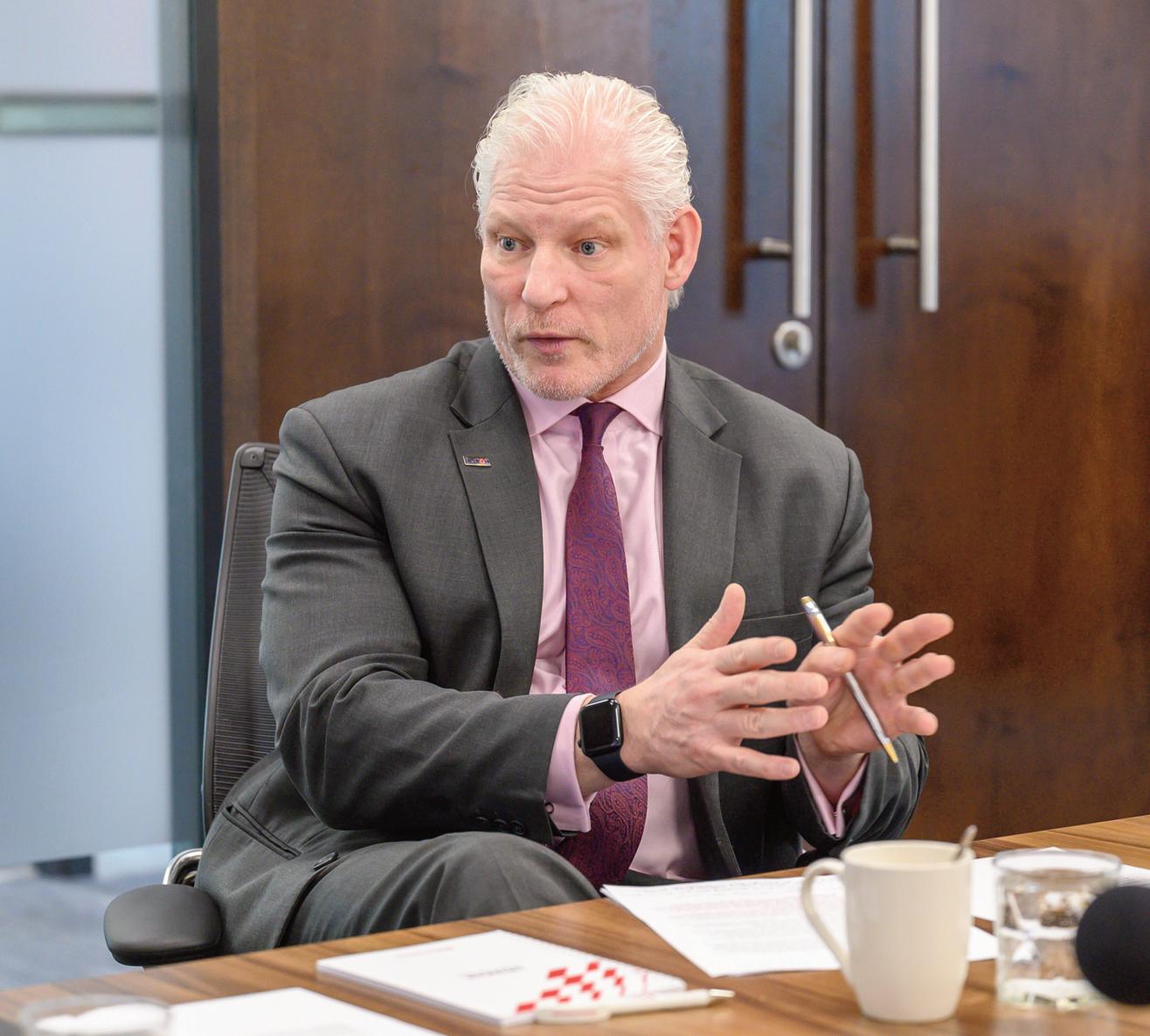

Caoimhe Donnelly
Public transport is only part of the solution. There is a big challenge around long-distance journeys and haulage as well. We need to be looking at our freight transport on rail and developing our technology solutions around longdistance transport with regard to hydrogen. It is critical that the transport sector reaches its sectoral target and probably the most critical and transformative factor is urban and city planning. We have a housing crisis, and we should be developing compact urban growth and 15-minute cities and towns. They have the potential to be transformative in terms of meeting our emissions. CIÉ is developing its land and property portfolio to deliver transport orientated development, which residential and commercial development centred on sustainable transport nodes. Well planned cities and towns are essential to reducing car dependency.
“We have hydrogen trains in service in Germany and have found that passengers love it because it is much cleaner, has less vibration, and less noise.”
round table discussion 20 2020
Piers Wood
“We need to be looking at our freight transport on rail and developing our technology solutions around longdistance transport with regard to hydrogen. It is critical that the transport sector reaches its sectoral target and probably the most critical and transformative factor is urban and city planning.” Caoimhe Donnelly
make public transport cleaner, easier to use, and more reliable, then we will definitely get more people on public transport. We also need to look at endto-end solutions: from when you leave your house in the morning to your final destination, there needs to be a public transport solution for every step of the way.
Andrew Hickey

It is essential that the energy inputs to all of this are renewable and sustainable. As a message to stakeholders, the important thing is that it not only delivers on decarbonising the economy, but that it also delivers for society by giving us cleaner air and giving us a method of delivering energy more efficiently. The initiative to adopt battery electric buses by Dublin Bus will optimise the use of the energy system in two ways, by charging at night making efficient use of the existing electrical infrastructure when demand is low and by using electricity generated by wind that would otherwise
be curtailed. The system utilised in this way gives the opportunity to lower costs and generate savings through efficiency in the long term.
What does the enhanced ambition of the Climate Action Plan 2023 mean for transport? What are the challenges?

Caoimhe Donnelly
Ensuring joined up thinking in terms of policy development is a challenge. Cross-government and cross-sector planning is important. A tall order has been set for transport, but equally there are the increased targets for the energy grid, and these are huge challenges. Our systems, operations, and schedules have been designed around a highly flexible fossil fuel-based system. Now we will have to plan routes and services around optimal charging opportunities and work within historic depot infrastructure where at least 10 per cent of garage space is
displaced through charging infrastructure.
Robert Lynn
It is a big sea change for us, starting with infrastructure and how the depots are set up. They are in historic buildings with angles; trying to fit in the buses with the charging procedures is a challenge. We have to integrate electrification into our current process of fuelling at night. Employee training will be the answer; upskilling our engineering craftworkers and the drivers who will be driving these buses. We have to be conscious of the range of electric buses and change our operating systems to design schedules around the capacity of the bus. We are embracing technology to do that. It will be a hard journey but at the end, things will be much improved.
Tim Gaston
The big challenge is that we need to get better at doing new things while still managing the day job. There are so many new things coming along that we need a better way of managing workloads. NTA have been developing our project management office over the last three years; Dublin Bus, Irish Rail, and Bus Éireann are doing the same. With electrification, you can no longer go down the yard and take the next bus 4
round table discussion 21 2121
“It is essential that the energy inputs to all of this are renewable and sustainable. As a message to stakeholders, the important thing is that it not only delivers on decarbonising the economy, but that it also delivers for society by giving us cleaner air and giving us a method of delivering energy more efficiently.”
Andrew Hickey
Michael Power
because your one has a cracked window. The control room needs to know what power is left in a bus. Next generation ticketing is also coming along, and we are replacing the automatic vehicle location system across the entire fleet. The change is enormous and cannot be managed with people doing an hour’s work on it every day while mostly doing the day job.
Michael
Power
Joined up thinking is integral to achieving the targets that have been set. The benefit of targets having been set is that all contributors to the emissions now have a focus, they know what the target is for their sector and how that will apply to themselves. We are looking at rail freight and as we invest and provide infrastructure and services, that will generate emissions. If we just focus on
looking at our emissions, we would be inclined to not do that. The challenge is to see it in totality and arrive at the best solution for the transport sector.
Andrew
Hickey
Where we have seen the opportunity is that we have gotten all stakeholders invested for the long-term. Now, we have to take that forward and plan infrastructure for our grandchildren’s grandchildren. If we do that in a sustainable way, it pulls everything together: the green economy, foreign investment, and agriculture. A long-term plan means the investments pay back, our costs are much less, and we will be an attractive place to do business and live.
Piers Wood
We commend the Irish Government in their approach to tackling climate change. The Climate Action Plan sets out key strategies with a clear way of getting there. It is important that any new retail establishments are not on greenfield sites, and that they are next to existing transport corridors. European cities are now doing much more oversite development, where land over and above existing stations is sold for development and the proceeds are used to then fund additional transport projects. It is about maximising the use of the land available and looking at the transport system as a whole.



To what extent will electrification help deliver a modal shift in transport?
Andrew
Hickey
It is about the input. We have significant wind resource, being able to capture its energy and transpose it to the different energy modes is the best way of delivering a green country. It is important that we
round table discussion 22 2222
“As a public transport operator, what is central to us is enhancing the user experience so that people will choose a sustainable mode of transport every day. That includes considerations of the first mile and last mile, the full experience from origin to destination with seamless interchange between modes.”
“What we need is consistency of service. People want to utilise their time and will not tolerate a bus or a train not turning up. The onus is on us as operators to deliver for the customer, which lends itself to trust from the consumer that enables the modal shift that we need.”
Robert Lynn
develop this resource quickly because it is the future of a new circular economy. The outputs of which can generate new business growth generating more employment, and export opportunities, this can fund investment for all the other services the country requires.
Tim Gaston
I do not think electrification will deliver a modal shift. It is hugely important to contribute to moving to zero emissions, but a street full of electric cars is just as congested as a street full of diesel cars. It would be environmentally better but would still be blocking the road for electrified buses. What will bring about modal shift is the carrot of public transport being better, particularly with priority on the bus side. The single most important thing for modal shift is that the bus will be reliably there on time, all the time. That is where BusConnects will make the difference.
Michael Power
It is all about the user experience and their experience relative to the alternatives available. As a public transport operator, what is central to us is enhancing the user experience so that people will choose a sustainable mode of transport every day. That includes considerations of the first mile and last mile, the full experience from origin to destination with seamless interchange between modes.
Robert Lynn
What we need is consistency of service. People want to utilise their time and will not tolerate a bus or a train not turning up. The onus is on us as operators to deliver for the customer, which lends itself to trust from the consumer that enables the modal shift that we need.
Piers Wood
Electrification is important because it will help people get out of the internal combustion engine car, but we cannot afford to forget technologies like hydrogen for buses and trains. We have hydrogen trains in service in Germany and have found that passengers love it because it is much cleaner, has less vibration, and less noise. The train looks identical, but the perceived level of service is much better, and passengers are now travelling on that train in preference to diesel powered trains.
Caoimhe Donnelly
Galway Hydrogen Hub, of which we are a member, is looking to develop the first hydrogen valley in Ireland to create a fully circular eFuel for the future, which has the potential of decarbonising longdistance travel. Electrification will be
added to a needed complement of technologies, and this again comes back to joined up thinking. There is a need for engagement with the public here to ensure that these high potential strategies for transport are supported and delivered.
What one action would you prioritise to help accelerate transformational change in transport?
Caoimhe Donnelly
Compact growth for urban development and delivering BusConnects, Connecting Ireland, and DART Plus are critical.
Piers Wood
Ireland has the plan, the political will and public support. You now need to deliver it. One of the frustrations we have in the private sector is we need to see that those programmes are going to happen.
Michael Power
We have good strategies. It is now all about delivery in the coming years. We have termed what we are doing in Iarnród Éireann as the ‘decade of delivery’.


Andrew Hickey
It boils down to stakeholder engagement and trying to sell the new direction that we are going in. I have benefitted from
some of the changes so far and it certainly makes it easier to get into the city centre. Further enhancing that through sustainability will really validate why we are making these choices.
Tim Gaston
Planning. At the moment there is so much of a backlog, not just in transport but also in housing. We need a faster, more efficient, but still democratic, planning system. One other issue is rural transport. 30 per cent of Ireland’s population live in rural areas. It is important that we support these communities and Connecting Ireland seeks to do that. Last year we put in 40 rural services, and we will double that this year. Its impact could be bigger than BusConnects.
Robert Lynn
The delivery of BusConnects, which Dublin Bus is implementing with the NTA, will deliver a higher level of service and will lead to a modal shift. The electrification project will add another layer of benefits to BusConnects. They are our two big projects to deliver in the near future.
round table discussion 23 2323
“Whilst electrification will help reach the target, it is not the only show in town. There is a focus on getting electric buses into the centre of our cities; but let us focus on getting buses into the centre of our cities faster than by car and that will have a big impact.” Tim Gaston
FDI above pre-pandemic levels
Foreign direct investment (FDI) saw a growth of €109 billion in 2021, according to a release from the Central Statistics Office (CSO), bringing it to a grand total of €1.2 trillion.


For comparison, the UK’s Office of National Statistics (ONS) states that FDI in the UK in 2021 was €2.3 trillion, meaning that the UK attracted slightly above twice as much as in Ireland, despite the UK having a GDP which is at least six times higher than the GDP of Ireland.
The report further states that investments abroad from Ireland increased by €296 billion in 2021, increasing the overall figure to €1.3 trillion, again above pre-pandemic levels.
Faris Bader, a statistician in the CSO’s international accounts division, stated: “The increase in foreign direct investment in Ireland of €109 billion to €1,208 billion is largely attributed to increased
investment from the US, which was offset by decreased investment from other countries. This increase in investment is seen almost entirely in the services sector, predominantly in financial intermediation.
“Meanwhile, Irish foreign direct investment abroad increased by €296 billion to €1,288 billion, with investment in Europe increasing by €181 billion and investment in the US increasing by €77 billion. This increase is also seen almost entirely in the services sector, mainly with Europe.”


The report states that the services sector was the largest for inward investment, accounting for €736 billion – 61 per cent of the total investment figure.

issues eolas 24 eolas issues
Foreign Direct Investment Annual € million
Inward investment
With an overall level of FDI of €1.2 billion, Ireland is punching above its weight in terms of attracting foreign investment, with the result of 25 per cent of the labour force in the State working for foreign companies.
This is partially due to what the European Parliament in 2019 referred to as the “tax haven” status of the Irish economy, with a corporation tax which is almost half the EU average, and significantly less than that of the UK.
Additionally, companies, most notably Apple and Google, have been able to avail of the ‘double Irish’ method, resulting in the European Union ordering Apple to pay €13 billion in 2016 to the Irish exchequer in unpaid taxes, a move opposed by the Irish Government.
In 2021, the United States was significantly ahead of other states in providing investment into Ireland, with investments totalling a little over €423 billion.
Other significant sources of investment came from Luxembourg (€132 billion), the Netherlands (€123 billion), Switzerland (€92 billion), the Cayman Islands (€55 billion), the UK (€33.3 billion), France (€26.5 billion), Japan (€21 billion), and China (€9.1 billion).
The report does not disclose the purposes of the investments by source,
meaning that whilst the overall sectoral investment has been stated, that there is no breakdown of sectoral investment by the nation from which the investment originates.
Outward investment

Investment abroad from the State increased by almost 25 per cent in 2021, rising by €296 billion from the 2020 figure to a total of just under €1.3 trillion, again above pre-pandemic levels. The precise sources of these funds are not disclosed by the CSO.
The largest destination for investment from Irish-sourced money is Luxembourg, with investments from Ireland into the Grand Duchy amounting to €494 billion. This is followed by the second highest destination, the United States, with €282 billion of Irish money making its way stateside.
The figures reveal a level of investment between the UK and Ireland which is skewed in that the UK received around €101 billion in FDI from the State, around 66 per cent higher than the investment into Ireland from the UK.
Other notably large markets for investment from Ireland include the Netherlands (€87 billion), the Isle of Man (€79 billion), France (€8.6 billion), Australia (€3.8 billion) Japan (€3.7 billion), and an increasing level of investment into Mozambique (€776 million).

issues
25 eolas issues
eolas
2020 2021 Flows - Abroad -42,765 47,812 Flows - In Ireland 66,878 -5,284 Positions - Abroad - end year 992,246 1,288,480 Positions - In Ireland - end year 1,098,888 1,208,216 Positions - Net - end year -106,642 80,264 Net Income Flows -80,369 -94,118
Source: CSO
St James’s Hospital leads the way on standards-based innovation for digital care



RFID belongs to a group of technologies referred to as automatic identification and data capture (AIDC). The technology has been around and in use since World War II but its development and ever-expanding applications in track and trace made it an ideal technology to introduce to a healthcare environment. The RFID technology utilises tags or smart labels to scan data.
“The adoption of standards is a prerequisite; if you want to achieve the highest levels of digitalisation and automation,” Vincent Callan says, discussing a project within St James’s Hospital that has seen RFID-enabled tracking technology rolled out in the hospital as part of a collaboration with GS1 Ireland and Aerospace Software Developments (ASD).
By implementing RFID in a healthcare environment, real-time data on a wide range of assets becomes available whether it be samples, movement of healthcare staff, patients, or medical devices. The project is the first of its kind in Irish healthcare.

The RFID technology allows the staff at St James’s Hospital to use their own numbering bank as assigned by GS1 Ireland to identify patients, staff, samples, and other items.

Advertorial
Pharmaceuticals and medical devices already have the GS1 unique identifier assigned by the manufacturer for regulatory compliance so this means that everything can be tracked by scanning or RFID and the hospital has full visibility of the patient pathway. Since early 2000, GS1 Ireland has been active in healthcare with the primary objective to enhance patient safety, and to drive supply chain efficiencies.
“Through analysis of the data retrieved from the RFID technology we can build up a real-time holistic view of what is happening within an acute setting,” Callan says. “For example, the time a patient may spend with a health practitioner within the setting. Unique numbers through tagging or smart labelling are assigned to people, places, objects, and events. An event is created by the association and dissociation of two tags that electronically speak to each other.”
The project is being undertaken with the ultimate goal of St James’s Hospital becoming the first hospital to fully adopt GS1 Standards, which “provide a common language that allow organisations to identify, capture, and share information the same way all over the world”, for all areas of care.

This, Siobhain Duggan, Director of Innovation and Healthcare at GS1 Ireland, explains, will improve the patient experience. “It is all about
the patient, the patient journey, the patient experience, and the data you can gather from different events,” she says. “With the right standards in place, it is much easier to share data across the system and to utilise this realtime data to inform the medical decisions taken.”
Expanding upon this point, St James’s Director of Quality and Safety Improvement Una Geary states that standards can “bring reliability to the system”. “They ensure that things like laboratory samples are moving through the system to where they are supposed to be,” she says.
“There have been positive impacts for patients and healthcare staff who now have at their disposal the data to corroborate that every aspect of the laboratory sample journey is mapped and visible.
“The utilisation of RFID is a good example of innovation across technology, international standards, and the healthcare system. The GS1 Standards ensure what we do is reliable and can be replicated and that we are adhering to best international practice in our adoption of this scanning technology.

“This project started out as an aid to improvement in two specific areas in the hospital, both were related to health and safety: one was making sure that laboratory samples

“The utilisation of RFID is a good example of innovation across technology, international standards, and the healthcare system. The GS1 Standards ensure what we do is reliable and can be replicated and that we are adhering to best international practice in our adoption of this scanning technology.”
Advertorial 4
Una Geary, Director of Quality and Safety Improvement, St James’s Hospital
get from one part of the hospital to the laboratory reliably, in a time effective manner with full identification in place. Secondly, and perhaps more importantly of the two areas, was that of patient wellbeing. We have implemented the technology in such a way that we know when a patient is on a ward, and we can identify if there is a risk that they might leave that ward without support and act accordingly.
“With standards and technology, we have developed a solution to allow the patient to move freely within the safe zone, and if they move outside, the appropriate people receive an alert,” Callan adds. “The other example is the precious sample, there are times when you only get one opportunity to take a sample. The two principles here are patient safety and accurate fast diagnostics.
“By implementing a technology that had not previously been used in a healthcare environment in Ireland, St James’s Hospital has created a platform on which they can build to solve other problems.”


Research analysis on the impact of these innovations in the hospital carried out by Una Geary with colleagues in Trinity College Dublin found positive outcomes in knowledge gathered and shared, collaboration, improving the work processes. RFID-enabled logistics technology was found to have promoted shared understanding of the system and identified areas for improvement.
These findings will contribute to the hospital’s strategic ambition, serving as a foundation to accelerate other strategic information technology projects and demonstrating progress towards being an exemplar healthcare site for the adoption of GS1 Standards.

Both St James’s Hospital and GS1 Ireland speak in glowing terms of the collaboration between the two organisations that has now lasted almost 20 years. Again, Duggan emphasises that this long-term collaboration and the adoption of Global Traceability Standards is designed to facilitate a safer and smoother patient journey.
“Standards provide the foundations and through our long collaboration, starting with the haemophilia track and trace programme and the more recent procurement developments, the foundations were there so it became about supporting further development,” she says. “It is important to have those foundations in place so that you have certainty around what you are identifying, who you are identifying, where that person is, and then that it can be built into the futureproofing of the process. This is all about the patient: the patient journey, the patient experience, and, of course, patient safety.”
Vincent Callan adds: “Standards are an enabler for digitalisation, track and trace, compliance. The standards give us assurance and visibility on the journey of both patients, staff, and products.

Advertorial
“Along that journey, important relationships are forged because any solution in healthcare can only be solved by thorough understanding and collaboration, we are looking to push ahead with the full rollout and implementation of a digital network.”
The rollout of the technology can also be a balm at a time when staff shortages are such an issue within healthcare, as Una Geary notes, that the rollout of the technology with the electronic monitoring and restocking features are a massive aid to staff for example allowing staff to focus more on direct patient contact.
Siobhain Duggan extrapolates on the next stage of the project: “There are so many opportunities and St James’s have spent time teasing out the practical issues of rolling out the hardware and combining it with the software but now there is a launchpad to go in lots of directions.
“We will put it in place in a way where we can really expand and utilise its full functionality to facilitate clinical decision making across the hospital.”
Concluding, Vincent Callan is clear about what will enable the transformation that both St James’s Hospital and GS1 Ireland foresee happening at the hospital: capital investment for the rebuilding of the physical environment: “There are plans in place to try to draw down capital investment to rebuild St James’s Hospital, however it is what happens inside the building that is important.
“The knowledge acquisition that is developing in St James’s Hospital with our use of GS1 standards and RFID technology in collaboration with ASD puts us in a unique and strong position to be an exemplar for collaboration between a Public Hospital, Industry Partner, (ASD) and


Global Standards, (GS1 Ireland). This approach takes time and effort, however, in our experience, it creates the full solutions to a real problems in a hospital environment.
The implementation of the technology will be a vital part of the growth of the overall campus, where 13,000 healthcare staff will be employed as part government policy to create a tri-located campus.
“GS1 Standards give us the flexibility to look at workable solutions to enable us to run the hospital in the safest and most efficient manner possible. These solutions will be of benefit to all our patients and all of our staff.”

For more information please scan QR code


E: vcallan@stjames.ie
E: siobhain.duggan@gs1ie.org
W: www.stjames.ie
Advertorial
Ireland: A European leader in digital transformation

According to the EU’s Digital Economy and Society Index (DESI), Ireland achieved a score of 62.7, compared with an EU average score of 52.3, giving Ireland an annual relative growth rate of 8.5 per cent between 2017 and 2022, amongst the highest in the EU.

The Harnessing Digital Progress Report 2022, published by the Department of the Taoiseach, outlines the progress made as measured under DESI in 2022, with the targets being set under the auspices of the Harnessing Digital 2030 strategy, which in itself forms part of the EU Digital Decade 2030 strategy.
The targets are set under four strands: Digital transformation of business; digital infrastructure; skills; and digitalisation of public services.
The report promotes the €85 million Digital Transition Fund, a revised new SME training scheme to upskill workers, and the National Youth Assembly on AI, held in October 2022, as significant strides in aiding the digital transformation of business. Going forward, the Government aims to pursue a “coherent, integrated, and proactive approach to the digital transition, through a robust ecosystem and strong enablers”.
In terms of improving digital infrastructure, the report outlines the increased provision of 5G and international connectivity as key measures of digitalising the State. It further states the progress made in establishing around 750 high-speed broadband points throughout the State, in addition to the €50 million ICT grant funding for schools issued in November 2022.

The report outlines two further challenges going forward in conforming the digital transformation with the need to close the circularity gap in the Irish economy, as well as expanding the State’s cybersecurity infrastructure.

The final two strands outlined in the review, both of which are stated as being in line with targets and are ahead of the EU average, are the digitalisation of public services – an ongoing process amid the Connecting Government 2030 strategy – and skills, which although apparently making strong progress, will have a clearer picture of the state of affairs upon the upcoming publication of the Ireland/OECD Skills Strategy Review, due to be published in March 2023.

issues eolas 30 eolas issues
The latest Harnessing Digital progress report states that all of Ireland’s main objectives on digital transformation are being met on schedule, although there is a need to “remain focused on driving further progress across all aspects of our digital agenda”.
Infrastructure and construction report










Emerging trends in infrastructure
Sponsored by
It has been a little over a year since the Government published the National Development Plan (NDP) 2021-2030, detailing a positive vision for Ireland, which delivers total public investment of €165 billion over the next 10 years. This puts Ireland’s capital investment amongst the largest across the EU. The NDP also
of actions
are being taken to strengthen delivery and
value for money. Minister for Public Expenditure, NDP Delivery and Reform, Paschal Donohoe TD, writes.
In 2023, over €12 billion will be made available from the Exchequer for investment in public capital projects, providing more schools, homes, hospitals, and other vital infrastructure. However, the ambitious infrastructure plans of the NDP and the funding supporting its delivery can only be realised by ensuring that the construction industry has sufficient capacity and the necessary skills. This remains a key priority for me and the Government.

Market context
I am acutely aware of the challenges that the construction industry has faced over the last two years in terms of material price inflation and supply chain disruption. In order to safeguard the delivery of key NDP projects, in January 2022, my department introduced measures to address inflation for new contracts and tenders. Furthermore, in May 2022, a new
set of measures to apportion additional inflation costs between the parties to public works contracts were introduced.
Commencements and the Planning and Development Bill
In 2022, almost 30,000 new dwellings were completed, an increase of approximately 45 percent in 2021. This is a positive sign of progress in the residential construction sector. Indeed, in the same year, approximately 40,000 planning permissions for homes were granted in the 12 months to Q3 2022. Overall, 2022 saw the second highest total number of homes commenced in a year since 2014, at almost 27,000.

An efficient planning system is pivotal to the delivery of the NDP. The Department of Housing, Local Government and Heritage has recently published the Planning and Development Bill. This is the most comprehensive review of the Planning Act

32 infrastructure and construction report Emerging trends in infrastructure
Minister Paschal Donohoe TD:
‘Construction sector productivity vital to infrastructure delivery’
sets out the range
that
maximise
Minister for Public Expenditure, NDP Delivery and Reform, Paschal Donohoe TD visits the New Children's Hospital during the fit-out phase in January 2023. Credit: PENDPDR.
since it was enacted in 2000. The Bill, if enacted, will bring greater clarity, consistency, and certainty to planning decisions. Amongst the changes are statutory mandatory timelines for An Bord Pleanála decisions, and various steps in the judicial review system.
Reforms to the CWMF
An ongoing review of the Capital Works Management Framework (CWMF) is being undertaken by the Office of Government Procurement. Amongst other elements, the review will look at means to measure the performance of a project and its key actors during its delivery and beyond into its operation and maintenance.
Construction Sector Subgroup’s seven actions
The public and private sectors continue to collaborate in terms of reforms to support more efficient and sustainable delivery of key infrastructure. The Construction Sector Group, under my department, and its associated Innovation and Digital Adoption SubGroup, are driving seven actions, with tangible evidence of progress noted.
Construct Innovate, with funding of €5 million, will be at the forefront to meet the demands of projects outlined in Project Ireland 2040. The research Centre will help Irish construction companies to develop competitive advantage, using cutting edge products and services that are more efficient, more environmentally sustainable, and more effective for their customers. The consortium consists of experts from University of Galway along with Trinity College Dublin, University College Dublin, and University College Cork,
working with the Irish Green Building Council, and construction companies.
We understand that modern methods of construction (MMC) cuts across a number of different sectors and requires a whole-of-government approach. With this in mind, the Department of Enterprise, Trade and Employment has established a MMC Leadership and Integration Group to broader MMC development. In addition to this, the Construction Industry Federation has published reports to guide the development of MMC. Furthermore, planning and design work is proceeding of the Demonstration Park for MMC at Mount Lucas which will be operational from Q4 2023.
The LGMA, under the governance of the CSG Sub-Group has rolled out an e-planning system in 12 local authorities (LAs) in 2022. The rollout to the remaining LAs will occur throughout the rest of 2023, with the project aiming to successfully conclude towards the end of the year.
The Build Digital Project, with funding of €2.5 million from my department, will increase digital adoption and thereby increase productivity and innovation. This project aims to embed the use of digitalisation in many areas such as procurement, sustainability, and standards by enhancing the skills of the workforce and focusing on driving a cultural change to realise the full potential of digitalisation.
A Construction Sector Circular Economy Roadmap is being written by the Royal Institute of the Architects of Ireland (RIAI) and the Department of the Environment, Climate and Communications. This report, set to be published in Q4 2023, will offer guidance on best practice for the
reduction of waste from construction and demolition projects.
Building capacity and critical skills
It is crucial that the construction sector, which as approximately 171,000 workers currently, has the necessary skills to produce the high-quality output. In 2022, there were approximately 1,700 construction apprentices registered, and a total of approximately 4,800 apprentices when including engineering and electrical. In order to increase the efficiency and effectiveness of these apprenticeships, the Department of Further and Higher Education, Research, Innovation and Science launched the National Apprenticeship Alliance (NAA) in early 2022. The NAA has many functions, of which the development of new apprenticeships is one.
In addition to the increase in apprentices, an increase from 793 in 2021 to a record 2,034 in 2022 was noted in the number of participants in the retrofit upskilling programmes. Along with this, the 2022 retrofitting target of 27,000 homes was met, and the target for 2023 has increased to 37,000 homes.
Conclusion
Now is the time to innovate and increase productivity of the construction sector in order to deliver key infrastructure. The Government will continue to foster innovation and digital adoption to support increased productivity, and a more efficient and sustainable sector.
33 infrastructure
Find out more www.kpmg.com/ie/en/home/industries/infrastructure-government
“Now is the time to innovate and increase productivity of the construction sector in order to deliver key infrastructure.”
and construction report
Paschal Donohoe TD, Minister for Public Expenditure, NDP Delivery and Reform
KPMG: Emerging trends in infrastructure in 2023

Sustainability, inflation, supply chain disruption, and digital transformation are some of the key global emerging trends in infrastructure in 2023, writes Paul

Managing Director, Corporate Finance, KPMG.
The importance of sustainability – moving from talk to action
This year, expect to see sustainability become more formalised as an essential prerequisite for all new infrastructure development. Developers, owners, and investors are starting to think not just about financial budgets, but also about carbon allocation ones. We are seeing this more and more across our public and private clients as they look to respond to environmental, social and governance (ESG) requirements to stay relevant and drive long-term value. Our key message to clients is to understand and challenge your overall financial and sustainability ambition; identify material issues, risks, and opportunities; and develop a sustainable growth strategy encompassing ESG criteria ensuring resilience and delivering long-term economic growth.
Governments, including our own most recently through the Climate Action Plan 2023 (CAP23), have
O’Neill,
big ambitions on climate change. However, they also understand that the cost of the required structural changes will likely be enormous; some estimates suggest upwards of 7 per cent of global GDP between now and 2050. This, at a time of massive pressure on governments’ pocketbooks, rising inflation, and justifiable debates on who holds the costs and reaps the benefits of climate change. From an Irish context, CAP23 reaffirms the Government’s commitment to public investment of €165 billion from 2021 to 2030. If delivered, this will bring public investment to 5 per cent of GNI, well above the EU average of 3 per cent of GDP. Given this, and the need to ensure public investment is pursued within a sustainable finance setting, consideration should be given to how sustainability costs and benefits are properly incorporated in the Public Spending Code to ensure due weight is given to ESG considerations alongside financial assessments.
Emerging trends in infrastructure 34 infrastructure and construction report Advertorial
Inflation, pricing, and supply chain disruptions elevates the risk
The market volatility and financial disruption of the past 12 to 18 months has certainly not been easy and continues to represent a challenge for all stakeholders. What is worrying infrastructure owners and investors is that, more often than not, the price risk in today’s contracts flow down to the developers and contractors. For years, costs had remained fairly stable, and price and supply chain risks were generally considered a symptom of poor cost management. It only made sense that those with the greatest control over cost discipline should also hold the cost risk.
Over the coming year, we expect to see contractors, developers and investors start to rethink who should own the cost and price risk on their assets and investments. In an Irish context, we are seeing this lead to project delays and uncertainty as contractors push back on committing to expensive tenders for public capital projects. Equally, market uncertainty is placing a significant strain on Exchequer capital budgets with the level of risk and contingency now included to manage pricing uncertainty driving affordability concerns.
Unfortunately, and not surprisingly, the pace of rollout of the National Development Plan has suffered as a result. However, green shoots are emerging. The rate of increase in construction inflation is expected to stabilise if not decline in 2023 with a further decline predicted for 2024. We are also seeing a proactive approach taken by public authorities, through inflation co-operation frameworks and other mechanisms, in helping to address inflation and pricing risk and maintain sufficient market capacity. What may also emerge is a style of contracting that more closely resembles ‘open book’ than in the past, while still maintaining a level of price discipline between the contractor and the owner. The challenge will likely be to maintain price discipline while allowing for prudent risk sharing. Strong trust and cooperation between the public and private sector, developers and operators, and buyers and suppliers will be key to meet the Government’s public investment commitments.
Getting the most from digital
This year, we expect to see significant pressure on contractors and developers to up their digital capabilities. There is a need to drive further productivity into the Irish construction sector, which we previously highlighted in our Economic analysis of productivity in the Irish construction sector report commissioned by the Department of Public Expenditure, NDP Delivery and Reform. Digital transformation and innovation are key to driving productivity with modern methods of construction (MMC) being one such example. MMC effectively describes an approach to constructing buildings more quickly, reliably, and sustainably by methods such as off-site manufacturing. If the industry is to meet the challenging targets outlined in government’s public investment plans, particularly in housing, MMC could be an attractive option with digital transformation at the forefront. The adoption of MMC may also be an effective way for developers to meet the sustainability metrics that funders and investors are increasingly seeking. However, progress has been slower than hoped. Denmark, the Netherlands, and the UK have embraced digital technologies and innovation and appear better placed to meet productivity challenges than countries like Ireland.
So why are we different? The market volatility of the past 12 to 18 months has not helped but this was not unique to Ireland. More needs to be done to support, value, and reward innovation in contracts using MMC or other techniques driven by the adoption of technologies designed to increase levels of productivity and maximise efficiencies.
The 11th edition of KPMG’s Emerging Trends in Infrastructure is now live; the 2023 report explores 10 challenges and opportunities facing infrastructure leaders. Read in full at:
https://bit.ly/3H6wDXl
 Paul O’Neill Managing Director, Corporate Finance, KPMG Ireland
Paul O’Neill Managing Director, Corporate Finance, KPMG Ireland
E: paul.oneill@kpmg.ie
W: www.kpmg.ie
Scan the QR code 35 infrastructure and construction report Advertorial Find out more www.kpmg.com/ie/en/home/industries/infrastructure-government
“Over the coming year, we expect to see contractors, developers and investors start to rethink who should actually own the cost and price risk on their assets and investments.”
Emerging trends in infrastructure

Project Ireland 2040 progress update
In late July 2022, then-Minister for Public Expenditure and Reform, Michael McGrath TD, published the Prospects 2022 report, which aimed to enhance the visibility of Ireland’s priority infrastructure projects pipeline. eolas provides an update on the stage of project lifecycle, the construction timeline, and the cost range for each of these projects as per Investment Projects and Programmes Tracker for Project Ireland 2040.
Prospects 2022 highlighted a sample of 50 individual projects among the Project Ireland 2040’s major infrastructure project pipeline, with the intention of facilitating construction contractors in Ireland, the EU, and beyond to plan commercial bids.

The sample projects included in report range from those at the Strategic Assessment and Preliminary Business Case, to Final Business Case, or Implementation in the project lifecycle of the Public Spending Code (PSC) . However, the Government stresses that “omission from the report does not imply de-prioritisation”.


Of the 50 projects, nine are road
Public transport
projects, nine are Irish Water projects, eight are public transport projects, seven are other projects, six are health projects, five are higher education, three are major housing projects, and three are flood relief projects.
from projects which are in the planning and appraisal stage to those which are almost complete.
Upon the report’s publication, the thenMinister remarked: “The Prospects 2022 report is an important and accessible publication, and I would encourage industry representatives across the sector to identify potential opportunities to maximise their participation.
1. MetroLink, Final Business Case, 2025-2034, €1 billion+
2. DART+ Fleet, 2027, €1 billion+
3. BusConnects Dublin, 2023–2029, €1 billion+
4. BusConnects Cork, Subject to appraisal-Subject to appraisal, Subject to appraisal
“Ireland needs competitive, dynamic, and sustainable construction firms that can deliver high quality physical infrastructure in line with Project Ireland 2040, and the Prospects 2022 report sets out some of the largest projects as a signal of this Government’s ambitious capital programme under the NDP.”
In 2018, Project Ireland 2040 incorporated in excess of 150 projects with an individual value exceeding €20 million. By the time Prospects 2022 was published in Q2 2022, there were over 200 such projects in the pipeline. Indeed, in Q2 2022, there were nearly 100 projects valued above €50 million.

36 infrastructure and construction report
Credit: Jason Jarrach
Road projects
1. M/N20 Cork to Limerick, Preliminary Business Case, 2025–Subject to appraisal, €1 billion+
2. Galway City Ring Road, Final Business Case, 2023–2027, €500 million–€1 billion
3. N21/N69 Limerick to Adare to Foynes, Final Business Case, 2022–2025, €250 million–€500 million
4. N22 Ballyvourney to Macroom, Implementation, 2019–2023, €250 million–€500 million
5. N28 Cork to Ringaskiddy Road, Final Business Case, 2024–2027, €250 million–€500 million
Uisce Éireann
6. N5 Ballaghaderreen to Scramoge, Implementation, 2021–2024, €250 million–€500 million
7. M8/N25 Dunkettle Interchange, Implementation, 2020–2023, €100 million–€250 million

8. Athy Southern Distributor Road, Implementation, 2022–2024, €20 million–€50 million
9. N52 Ardee Bypass, Preliminary Business Case, 2022–2024, €20 million–€50 million
Health
1. Water Supply Project – Eastern and Midlands Region, Preliminary Business Case, 2025–2030, €1 billion+
2. Greater Dublin Drainage, Final Business Case, 2025–2029, €500 million–€1 billion
3. Ringsend Wastewater Treatment Plant Project, Implementation, 2018–2025, €500 million–€1 billion
4. Arklow Sewerage Scheme Wastewater Treatment Plant, Implementation, 2021–2025, €100 million–€250 million
5. Athlone Sewerage Scheme, Final Business Case, 2022–2025, €100 million–€250 million
6. Regional Biosolids Storage Facility, Final Business Case, 2022–2024, €20 million–€50 million
7. Leixlip Transfer Pipeline, Implementation, 2020–2022, €20 million–€50 million
8. Milford, Ramelton, and Rathmullan Wastewater Treatment Plant, Final Business Case, 2022–2025, €20 million–€50 million
9. Poolbeg West Strategic Development Zone, Final Business Case, 2023–2026, €20 million–€50 million
Major housing
1. Cork City Docklands, Preliminary Business Case, Subject to appraisal-Subject to appraisal, €250 million–€500 million
2. Clonburris (Strategic Infrastructure), Preliminary Business Case, Subject to appraisal-Subject to appraisal, €250 million–€500 million
3. Shanganagh Castle, Implementation, 2022–2025, €50 million–€100 million
Other
Flood relief
1. Lower Lee (Cork City) Flood Relief Scheme, Preliminary Business Case, 2024–2029, €100 million–€250 million
2. King’s Island Flood Relief Scheme, Final Business Case, 2023–2027, €20 million–€50 million
3. Arklow Flood Relief Scheme, Final Business Case, 2024–2026, €20 million–€50 million
1. Waterford North Quays, Final Business Case, 2022–2024, Commercially sensitive
2. National Concert Hall, Preliminary Business Case submitted Q4 2021 and submission to Minister in respect of Decision Gate 1 underway, Subject to appraisal-Subject to appraisal, €100 million–€250 million
3. National Museum of Ireland, Preliminary Business Case submitted Q4 2021 and submission to Minister in respect of Decision Gate 1 underway, 2022–2027, €50 million–€100 million
1. New Children’s Hospital, Implementation, 2017–2024, €1 billion+
2. Beaumont Hospital Radiation Oncology Unit, Strategic Assessment, Subject to appraisal–Subject to appraisal, €50 million–€100 million
3. University Hospital Limerick Ward Block (96 Bed), Implementation, 2022–2025, €50 million–€100 million
4. University College Hospital Galway, Radiation Oncology Unit, Implementation, 2020–2023, €50 million–€100 million
5. Mater Misericordiae University Hospital Ward Block, Implementation, 2020–2023, €50 million–€100 million
6. Cavan General Hospital, Emergency Department and Ward Block, Preliminary Business Case, Subject to appraisal–Subject to appraisal, €20 million–€50 million
Higher education
1. Cork University Business School (CUBS), Final Business Case, 2024–2026, €100 million–€250 million
2. UCD Future Campus Phase 1, Final Business Case, 2022–2024, €100 million–€250 million
3. DCU Future Tech Building, Implementation, 2022–2024, €50 million–€100 million
4. Maynooth University Technology Society and Innovation Building, Implementation, 2019–2022, €50 million–€100 million
5. NUI Galway Learning Commons, Final Business Case, 2023–2027, €20 million–€50 million
4. Abbey Theatre, Preliminary Business Case, Subject to appraisal-Subject to appraisal, €100 million–€250 million
5. Garda Station, Military Road, Dublin 8, Implementation, 2020–2022, €50 million–€100 million
6. Electric Vehicle High Power Charging Infrastructure Development Project, Implementation, 2021–2023, Subject to appraisal
7. Crawford Art Gallery, Final Business Case, Subject to appraisal-Subject to appraisal, €20 million–€50 million
37 infrastructure and construction report At the time of print, the most recent Investment Projects and Programmes Tracker for Project Ireland 2040 was published in February 2023, replacing the previous tacker published in May 2022. The tracker contains information on all Project Ireland 2040 project progress, anticipated cost, and projected commencement and completion dates. Find out more www.kpmg.com/ie/en/home/industries/infrastructure-government
What is NR2040?
The national road network in Ireland is over 5,300km in length and is made up of motorways, dual carriageways, and single lane roads. This represents an asset value of €31 billion. The network facilitates personal travel and carriage of goods and services. It provides access to a wide range of activities including health, education, employment, tourism
National Roads 2040 (NR2040) is Transport Infrastructure Ireland’s (TII) strategy for the national road network to 2040. It is TII’s response to Project Ireland 2040, which envisages an extra one million in population by 2040. NR2040 aligns with the Department of Transport’s approach to transport investment, the National Investment Framework for Transport in Ireland (NIFTI).
In recent times, Ireland has witnessed major change in travel behaviour due to new trends such as working from home, online purchasing, increased active travel, micro-mobility, rising energy costs, climate change and biodiversity loss. These recent significant societal changes have influenced NR2040.
In developing NR2040, we set ourselves four objectives and an overriding vision. TII wishes to promote the safe and efficient movement of people and goods, reflecting our Roads Act obligations. We have put the three pillars of sustainability at the core of the strategy. We also recognise the different users and user needs across the country. The final objective around management of the network as a key public asset reflects the reality that TII has largely moved from being a roads infrastructure developer, to being a manager and operator of the national roads network. Overall, this strategy represents TII’s vision of how the national road network can evolve, with the movement of people and goods, safety and accessibility central to this evolution.
An evolving transport network

While TII has an ambition of a safer, greener and more efficient national roads network, how this ambition is realised will differ according to the local context. In rural Ireland, where other transport options can be limited, the car plays a vital role. A shift to fully electric vehicles will reduce carbon emissions significantly for these rural trips. Where there are good public transport connections to towns and cities, TII can support efficient movement of people through provision of priority lanes for buses. On other parts of the national road network, where typical trip distances on national roads are small, TII can support a shift from cars to cycling though provision of active travel infrastructure. TII can also ensure that busy national roads do not form barriers to walking and cycling journeys by implementing measures to address severance.
With population growth anticipated in Ireland, if historical transport behaviour and transport infrastructure and services provision were to continue, we would have a significant increase in both car ownership and kilometres travelled by vehicles. In developing NR2040, TII considered a number of challenges including population growth, climate change and biodiversity loss. The strategy is not a ‘predict and provide’ approach where new road-space is
and services.
38 infrastructure and construction report Advertorial
Vision
National Roads 2040
supplied in response to increasing demand.
There is a need for more efficiency in our use of existing road-space. Given that single-occupancy car trips are a predominant feature of the current transport system, national road users must be provided with meaningful transport alternatives that will result in more efficient use of road space.
NR2040 identifies that this can be achieved through implementing multiple measures: better walking/cycling infrastructure, opportunities for park and share/park and ride, better integration of transport modes, and priority lanes for bus and truck in certain locations.
NR2040 priorities: Investing in the future
Future transport investment on the national road network will be delivered through identified investment priorities and portfolios. These are decarbonisation, protection and renewal, mobility of people and goods in urban areas and finally, enhanced regional and rural accessibility. The four NR2040 investment priorities and portfolios align fully with those in the Department of Transport’s NIFTI.
The decarbonisation investment priority reflects one of the greatest challenges of our time.
TII supports the avoid-shift-improve approach as identified in the Climate Action Plan 2023 (CAP2023). Shifting from the car to other modes will be key. Cycling and walking are the ultimate zero carbon modes. With the NR2040
Key Objectives
Safe and efficient transport network for people and goods
Environmentally, socially, and economically sustainable
Tailored for different customers in different places
Managed and improved as a key public asset
Strategy, TII commits to providing a road network where the needs of all road users, including those cycling and walking, are considered. TII will work to improve active travel infrastructure on or adjacent to the national road network. This could involve provision of infrastructure to enable safe active travel along a national road or it could provide for safe crossing of a national road.
With NR2040, TII has identified integrated mobility as a measure to support decarbonisation. The goal here is to enable more efficient and less carbon intensive use of national roads through increased sharing of vehicles, whether private or public transport modes. TII will enhance accessibility
and opportunities for interchange to enable trip-makers to choose the most efficient and convenient combination of modes. This can result in travel choices that are both socially and environmentally sustainable. For urban trips where active travel or integrated mobility/public transport is not feasible, the electrification of cars will help reduce emissions. TII analysis shows that in the current Irish power generation context, shifting from internal combustion engine vehicles to fully electric vehicles can significantly reduce carbon emissions. TII will support the Department of Transport through provision of electric vehicle charging infrastructure along the national road network.
An evolving sustainable transport system focused on: safety; innovation; accessibility; mobility of people, goods, and services
NR2040 priorities and portfolios.
39 infrastructure and construction report Advertorial 4
NR2040 vision and objectives.
Supporting analysis for NR2040 using TII’s Road Emissions Model (REM) has identified that while 45 per cent of all road travel nationally occurs on national road network, national road traffic generates 35 per cent of road transport emissions in the state. This means that emissions are generally higher per vehicle kilometre travelled off the national road network.
However, TII analysis also shows that heavy goods vehicles are responsible for about 36 per cent of emissions coming from national road traffic. On congested urban road sections where trucks are concentrated, inefficient
engine performance results in greenhouse gases being emitted on a large scale. Ensuring efficient movement of heavy goods vehicles is therefore key to reducing carbon emissions.
Protection and renewal
The protection and renewal investment priority represents the largest annual expenditure for TII, i.e., representing approximately 70 to 80 per cent of TII’s annual national roads budget. Working with local authorities and other stakeholders, TII will continue to work on improving road safety through
implementation on its road safety programme. Through annual maintenance and renewals, TII will protect the significant state investment already made in national roads.
Maintenance and operation of the network will support the efficient movement of people and goods which is critical to the national economy and society at large. There is a need to ensure the road network is resilient to adverse weather patterns arising from climate change. TII must ensure the network is accessible for users, and this is particularly critical on lifeline routes where few or no alternative roads are available.
Movement of people and goods in urban areas
A key issue for urban national roads is the limited amount of road-space. Through NR2040, TII has identified measures that better utilise the existing road space. For people, this could mean TII working to ensure that car users on urban national roads have active travel alternatives or access to priority lanes for buses. For goods vehicles, this could mean priority freight lanes or the development of multi-modal distribution centres to enable more efficient carriage of goods.

Measures to address urban congestion will support both the objective of efficient movement of people and goods and the objective of decarbonisation. One such measure is the M50 Dynamic Traffic Management System. TII will expand deployment of this system to
 The National Road Network
The National Road Network
40 infrastructure and construction report Advertorial
Park and share adjacent to the National Road Network.
improve the performance and reliability of the urban national road network where appropriate. This in turn will reduce congestion and emissions.
TII will collaborate with the Department of Transport and NTA on any national or city-based demand management measures.
Enhanced regional and rural connectivity
The National Primary Network, including the motorway system, carries approximately 80 per cent of national road traffic. These primary roads provide regional, inter-urban and international connectivity and are vital to the economy of Ireland. 99 per cent of land freight is delivered via roads. Enabling the movement of goods along the national road network and ensuring journey reliability will provide confidence to businesses which is of importance to economic growth.
Not only does the national road network cater for the movement of goods, it is also essential for the movement of people. For many, particularly in rural Ireland, the national road network is a critical piece of infrastructure that connects their home to key services. In developing NR2040, TII used its National Transport Model to quantify where communities have the greatest dependency on national roads. In many locations, while not carrying large volumes of traffic, the national secondary network provides access to employment, education, healthcare and many ‘lifeline’ services important to everyday life. Ensuring availability of these lifeline roads is a priority in the strategy.
The National Planning Framework envisages a transport rebalancing regionally. It sets an ambition for average inter-urban speed of 90kph on the transport system between ten of the country’s key urban settlements. The key urban settlements included are the five cities and five regional centres. The cities are Dublin, Cork, Waterford, Limerick, and Galway. The regional centres are Drogheda, Dundalk, Letterkenny, Sligo and Athlone. Informed by extensive analysis using TII’s National Transport Model, NR2040 sets out where interventions along the national road network would support this ambition. This could take the form of online widening, short town bypasses or supply of new infrastructure in line with the Department of Transport’s investment hierarchy (NIFTI).
Future considerations
Looking ahead
Using our analysis, in NR2040 we have identified 12 inter-related strategic issues for national roads for the years ahead. Future investment will be considered with reference to these issues and themes.
The NR2040 investment priorities are reinforced by a series of TII commitments, further addressing the strategic issues identified for the national roads network in the coming years. With these commitments TII’s intention is to ensure we deliver a sustainable national road system.
Through prioritising investment as outlined in NR2040, TII will ensure that the national road network can continue to play a vital role in supporting the Irish economy. A considered approach to sustainable road transport, acknowledging differing user needs and contexts across the country, is at the core of the strategy. Overall, with NR2040, TII has a vision of an evolving national road network, with movement of people and goods, safety, and accessibility all central to this evolution.
NR2040 is:
• A response to government national planning policy: Project Ireland 2040
• A framework for investment in the face of social and environmental change.
• Communication of TII’s strategic perspective, providing guidance to sponsoring agencies/ local authorities.
For more information on the NR2040 strategy:
E: derek.brady@tii.ie
W: www.tii.ie
Strategic issues for future consideration.
41 infrastructure and construction report Advertorial
Coming years ‘critical’ for water services

Fintan Towey, Assistant Secretary for Water at the Department of Housing, Local Government and Heritage, speaks with eolas on key reforms in Irish water management, including the establishment of Uisce Éireann as a standalone utility and the River Basin Management Plan 2022-2027.


Signed into law in December 2022, the Water Services Act provides for the separation of Irish Water from its parent company, Ervia, and for its reestablishment as a standalone water utility, renamed to its Irish form – Uisce Éireann – which was officially established on 1 January 2023. Towey explains that Irish Water had been originally established as part of Ervia for good reason, but the time has now come for water management to be undertaken by a standalone utility.
“Irish Water was established as a subsidiary of Ervia because of the need to urgently leverage the utility company expertise that was available in Ervia to advance the establishment of a new state company for a network industry,” he says, adding: “That approach worked, but the next set of challenges that needs to be tackled is best addressed by a public utility that has clear direct accountability for the stewardship of its business.
“The separation is in the best strategic interests for water services, and ultimately, for customers. The Water Services Act delivers on the 2020 Programme for Government commitment to bring Irish Water into the public ownership as a national standalone water utility. It provides that Irish Water will be known only as Uisce Éireann and outlines the character of Uisce Éireann as the national authority for water services.”
The step change in water management at state level comes in a context of everchanging regulation at the European level and the need to combat the effects that climate change is having and will have on water supplies, while also facilitating the development needs of a growing population. The establishment of Uisce Éireann can thus be understood as another step in a long strategy.
42 infrastructure and construction report Emerging trends in infrastructure
“We have experienced significant change over the last 10 years,” Towey says. “We are seeing the benefits of that change, but there is much more to do and our action in the coming years will be critical for the management of water services and water quality. To move forward, we need to meet the increased demands from population growth, urbanisation, a vibrant economy, and housing.
“We need to adapt to the impacts arising from climate change, meet new performance standards for water quality and customer service, and meet stringent environmental objectives for water catchments. Some of those challenges are quite daunting but they cannot be ignored. The cost of inaction and inertia is ultimately higher than the cost of stepping up to the plate and taking action.”
Much of that action has centred on the Government’s response to European regulation. The newly revised Drinking Water Directive, for example, will introduce requirements around access to drinking water, a new risk-based approach to drinking water management, strengthened chemical parameters, and monitoring of a watchlist of harmful substances. These improved regulations are expected to be published in early 2023 and will be “about protecting consumers, even if for most, the improvements will be largely invisible”.
The Water Environment (Abstractions and Associated Impoundments) Act 2022 has also ensured that “major water extractions are undertaken without damage to water body’s biodiversity or environment”, putting in place a new abstractions regime that will “update and put in place a modern and comprehensive process for authorising water abstractions for all uses, ensuring that water is used efficiently and that enough water is left for nature”.
Overall, the Act and the new regime will contribute to the protection of the water environment and to fulfilling obligations to control abstractions as required by the Water Framework Directive.
Another key plank of the Water Framework Directive is the requirement for EU member states to adopt river basin water management plans, which are renewed in six-year cycles and intended to be the primary tool through
which the EU will arrest and reverse the decline in European water resources. With half of Irish rivers and lakes beneath the required standard, the Government has consulted on its plan and will soon publish the River Basin Management Plan 2022-2027, which will “take into account the new water quality trends, the impact of climate change, and the need to protect, enhance, and restore our water catchments”.
“This is the final cycle leading up to 2027; the Directive’s target date for water bodies to achieve good ecological status. ‘Good’, in this case, relates to the second-best point on the five-point scale of ecological status contained within the Water Framework Directive,” Towey explains.
Firstly, there will be continued investment in Uisce Éireann and rural water services with regard to wastewater treatment. Secondly, there are also new measures for agriculture, notably an enhanced nitrates action programme supported by Ireland’s new CAP strategic plan, which was adopted by the Government. Thirdly, we will commit to water-sensitive siting of new forestry, the use of forestry as a mitigation measure, and the restructuring of our existing forests. Furthermore, there will be provision for restoring rivers through the first ever national programme of river barrier
assessment, with removal and remediation where possible. In addition, we will promote nature-based rainwater management for urban areas. Finally, there is a €20 million EU integrated project on high status water bodies aimed at strengthening protection of those key water bodies.”
With €1.56 billion allocated to Uisce Éireann in Budget 2023, the Government is seeking to address regulatory and infrastructural challenges, including the investment in new rural wastewater networks, and facilitating the types of residential construction envisioned under Housing for All
There is work to do for both the short and long term, as Towey concludes: “In public policy, there are two plans that matter. The first is the vision for the long term, the second is the plan for the next six to 12 months because that is what shows if there is a genuine commitment to that vision. The Water Division of the Department of Housing, Local Government and Heritage works to protect, restore, and enhance our water resources, both surface and groundwater, to ensure the provision of efficient, resilient, and high-quality water services, and to ensure that our seas are clean, healthy, and used sustainably. We have work to do in all those areas.”
43 infrastructure and construction report
Find out more www.kpmg.com/ie/en/home/industries/infrastructure-government
“The Water Services Act delivers on the 2020 Programme for Government commitment to bring Irish Water into the public ownership as a national standalone water utility. It provides that Irish Water will be known only as Uisce Éireann and outlines the character of Uisce Éireann as the national authority for water services.”
Housing Unlocked exhibition showcases innovative ideas to deliver better housing
In October 2022, The Housing Agency, in partnership with the Irish Architectural Foundation (IAF) launched the Housing Unlocked exhibition. Running until mid-February 2023 it showcased eight innovate ideas to deliver more and better homes in Ireland, writes Sarah Kennedy, Communications Manager at The Housing Agency.
Key themes emerging out of the exhibition were how to tackle dereliction, strategies to promote compact urban development and high-density living, and modern methods of construction. The eight projects selected represent the potential for over 200,000 new homes and introduce new means to increase density in our cities, towns and villages.
Following the exhibition, The Housing Agency and the IAF are working on a plan to turn these ideas into a reality. For example, a publication that summarises the eight proposals, along with learnings from the public engagement programme is currently underway. Some changes to the Irish housing sector are required in order to introduce these innovative solutions. They include changes to planning and policy, engagement with stakeholders, changes to building regulations, pilot schemes of projects, and fiscal support. This exhibition makes the case for introducing these changes.
The Working-Home
Project team: EWA Architects
This proposal creates a new typology, The Working-Home, that includes both commercial and residential activity on the ground floor. It uses existing infrastructure to provide new homes, which reduces cost of delivery and is sustainable. Maintaining the commercial unit contributes to the vibrancy of the town centre.
Start Spreading the Mews
Project team: Stephen Foley, Sara Acebes (SFA42 Architects), and Stephen Wall (Researcher and PhD student)
This project identifies the potential for developing the rear lanes of existing

neighbourhoods (mews) to yield 50,000 new homes within the M50. It Is an easy way of increasing density within existing residential areas and would provide small one- or two-bedroom units, which are scarce In the Irish housing sector.
EcoCube
Project team: O’Mahony Pike Architects
This concept makes use of modular design and construction to provide a creative model for low rise, medium density housing. Each module is of a standard size and can be combined in a variety of ways to provide one-, two-, three-, and four-bedroom homes. These modules can be added or removed as the families’ requirements change overtime, e.g., to cater for new children, to downsize, add in office space.
Building Societies

Project team: Sarah Carroll (Architect) and Tom Cookson (Architect)
This concept was inspired by an announcement in March 2021, that Bank of Ireland planned to close 103 regional branches. It proposes the reuse of vacant bank buildings on high streets in towns and villages all around Ireland using these vacant properties. By doing so, the project would add new homes in existing towns, and ensure these important buildings are put to use.
Home4Community
Project team: JFOC Architects and FastHouse
Home4Community achieves higher density by making use of housing clusters, organising units back-to-back, and side-to-side. While garden size is reduced, shared green and community spaces are large to encourage community building. The units will be
built using timber-frame construction. This proposal also includes a community-led funding model which ensures the affordability of the homes.
Thirty-Three Churches
Project team: David Lawless (Architect) and Sophie Kelliher (Researcher)

This proposal considers how church buildings can be adapted to provide housing units. It takes St Mary's Church of the Angels in Dublin 7 as a case-study, which its proposed can provide 20 new homes, while maintaining its worship space. This church is one of 33 submitted by the Archdiocese of Dublin to the Dublin City Council Development Plan (2022— 2028).
Urban Horticulture
Project team: Donaghy and Diamond Architects, Alan Mee, and Finola O’Kane Crimmins
Urban Horticulture takes The Liberties in Dublin as a case-study of how new homes can be provided for in existing neighbourhoods. Their analysis reveals a range of untapped opportunities to increase density, while protecting and enhancing existing neighbourhoods and communities. These guidelines can be applied to other neighbourhoods across the country.
Join the Dots
Project team: McCullough Mulvin
Architects, Barry Durkan (Durkan Residential), Graeme Hansell (Fire Engineer), and Jack Carter (Local advisor)
This concept takes Mountrath, County Laois as a case-study to identify smalland medium-scale changes that can be implemented in Irish towns and villages, to create new homes in existing urban centres. These changes will provide new homes and reinvigorate Irish towns by making them enjoyable, vibrant places to live and work.
To stay up to date with Housing Unlocked news please visit: www.housingunlocked.ie.
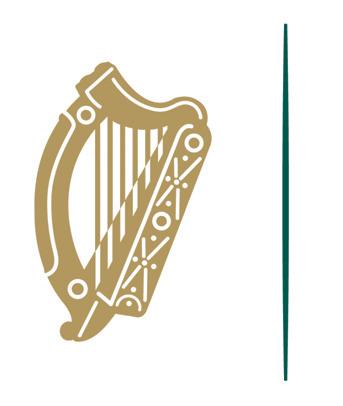
44 infrastructure and construction report Advertorial











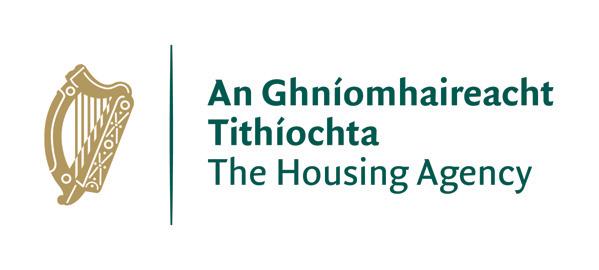 Start Spreading the Mews. EcoCube.
The Working-Home.
Building Societies.
Thirty-Three Churches.
Home4Community.
Urban Horticulture. Join the Dots.
Start Spreading the Mews. EcoCube.
The Working-Home.
Building Societies.
Thirty-Three Churches.
Home4Community.
Urban Horticulture. Join the Dots.
45 infrastructure and construction report Advertorial
Photos: Ste Murray.
Emerging trends in infrastructure

Budget 2023 and capital expenditure
Budget 2023 will see capital expenditure in the State increasing by €800 million, in line with the National Development Plan. The Department of Housing, Local Government and Heritage remains the best funded department, accounting for over a quarter of total capital expenditure.

The National Development Plan (NDP) 2021-2030 aligns the Government’s capital expenditure with Ireland’s infrastructural needs for the current decade, with the €800 million increase provided in Budget 2023 accounting for a 7 per cent on the capital expenditure allocation for 2022 that was outlined in the Mid-Year Expenditure Report. Total gross voted capital expenditure in the budget stands at €12.4 billion, with €293 million of that amount as-yet unallocated to a department and the remainder split between 17 government departments, the Shared Island Fund, the European Regional Development Fund, and the Priority Reserve.
In its Budget 2023 Expenditure Report, the Government states that this increase “represents a very substantial commitment of resources and continues the process of increasing voted capital expenditure to 5 per cent of GNI* by 2025”. Taking the latest Central Statistics Office (CSO) figure of
GNI*, 2021’s €231.7 billion, the current level of capital expenditure announced in the latest budget accounts for 5.3 per cent of GNI*, but this of course comes with the caveat that GNI* will have grown since 2021.
Expenditure by department
Of the 18 government departments, the Department of Housing, Local Government and Heritage (DHLGH) will receive the most capital funding, which is perhaps unsurprising given the level of housing construction to be centrally funded under Housing for All. The €3.5 billion the department will receive is a 2.9 per cent increase on its 2022 allocation and accounts for 28.4 per cent of total gross voted capital expenditure. The second highest level of funding has been allocated to the Department of Transport, which received a 2.3 per cent increase on its
2022 levels for a total of €2.6 billion. Transport’s share of total gross voted capital expenditure thus stands at 21.2 per cent.
The Department of Health is third in terms of funding, being the third and final department to be allocated over €1 billion in capital funding. Overall, health is allocated €1.2 billion, a 10.7 per cent increase on its 2022 allocation, which means that it accounts for 9.5 per cent of total gross voted capital expenditure.
Significant increases in capital expenditure allocation were seen in many departments, with the Department of the Environment, Climate and Communications receiving the largest increase when compared with 2022 allocations, an increase of 29.7 per cent that will see the department receive €850 million in capital spending budget. The Department of Defence has also seen an almost 25 per cent increase and will receive €176 million in capital funding. The third and last department to receive a funding boost of over 20 per cent is the Department of Children, Equality, Disability, Integration and Youth; a 21.2 per cent increase has seen the Department allocated a capital expenditure budget of €40 million.
Fourteen of the 18 government departments saw increases in their allocations, ranging from the
46 infrastructure and construction report
Gross voted capital expenditure by department
Department of Justice’s 0.7 per cent increase to the Department of the Environment, Climate and Communications’ 29.7 per cent. The Department of Social Protection saw no increase, with its budget standing still at €16 million; also static were the Department of Finance and the Department of Foreign Affairs at €22 million and €25 million, respectively. The Department of the Taoiseach receives no capital expenditure allocation.
Significant increases were also seen in two of the three non-departmental capital funding allocations: the Shared Island Fund saw a 328 per cent increase from its 2022 allocation, from €25 million to €82 million. The Budget 2023 Expenditure Report notes that a further €27 million has been allocated to departments under the auspices of the Shared Island Fund, with the €82 million noted separately as it has yet to be drawn down. The State’s contribution to the European Regional Development Fund also saw an
increase of 42.9 per cent, from €70 million to €100 million.
Inflation
However, it must be remembered that these increases are being delivered against the extremely high levels of inflation that were seen in 2022; the CSO records inflation as having ranged between 8.2 per cent and 9.2 per cent –the highest rate of inflation since June 1984 – from June to October 2022. Of the 15 departments to be allocated funding increases, seven (Agriculture, Food and the Marine; Enterprise, Trade and Employment; Further and Higher Education, Research, Innovation and Science; Housing, Local Government and Heritage; Justice; Rural and Community Development; Tourism, Culture, Arts, Gaeltacht, Sport and Media; and Transport) were allocated increases that fell beneath the minimum inflation rate of 8.2 per cent; eight (Education added to the previous seven) saw increases less than the maximum 9.2 per cent rate. The total increase of 7
per cent in capital expenditure also falls beneath both of these rates.
As the Government seeks to deliver multiple initiatives that will require significant capital funding such as Housing for All, the National Broadband Plan, and various other infrastructural improvements covered by the NDP, it will also need to keep an eye on the increases in GNI* if capital expenditure is to reach 5 per cent of its total by 2025. GNI* rose from €195.3 billion in 2017 to €231.7 billion in 2021, an average increase of €7.3 billion per year that comes with the caveat of a €10 billion fall during Covid-affected 2020; if such pace were to continue, GNI* would stand at €268.1 billion in 2025, 5 per cent of which is €13.4 billion. Reaching this would require sustained increases between now and 2025, ultimately resulting in a capital expenditure increase of 8.1 per cent from Budget 2023 to 2025, a rate that is clearly achievable given Budget 2023’s 7 per cent increase.
Mid-Year Expenditure Report 2022 core Budget 2023 core Change to core Non-core Total Agriculture, Food and the Marine €281 million €284 million 1.1% €168 million €452 million Children, Equality, Disability, Integration and Youth €33 million €40 million 21.2% 0 €40 million Defence €141 million €176 million 24.8% 0 €176 million Education €790 million €860 million 8.9% 0 €860 million Enterprise, Trade and Employment €494 million €514 million 4.1% €54 million €568 million Environment, Climate and Communications €639 million €828 million 29.7% €22 million €850 million Finance €22 million €22 million 0.0% 0 €22 million Foreign Affairs €25 million €25 million 0.0% 0 €25 million Further and Higher Education, Research, Innovation and Science €548 million €569 million 3.8% €20 million €588 million Health €990 million €1.1 billion 10.7% €81 million €1.2 billion Housing, Local Government and Heritage €3.4 billion €3.5 billion 2.9% €8 million €3.5 billion Justice €270 million €272 million 0.7% 0 €272 million Public Expenditure, National Development Plan Delivery and Reform €224 million €260 million 16.1% €40 million €300 million Rural and Community Development €196 million €196 million 2.1% 0 €196 million Social Protection €16 million €16 million 0.0% 0 €16 million Taoiseach 0 0 0 0 Tourism, Culture, Arts, Gaeltacht, Sport and Media €202 million €206 million 2.0% 0 €206 million Transport €2.5 billion €2.6 billion 2.3% €27 million €2.6 billion Shared Island Fund €25 million €82 million €82 million European Regional Development Fund €70 million €100 million €100 million Priority Reserve €16 million €16 million Gross voted capital expenditure €10.9 billion €11.7 billion 7.0% €420 million €12.1 billion Non-core capital to be allocated €293 million Total gross voted capital expenditure €12.4 billion
47 infrastructure and construction report Find out more www.kpmg.com/ie/en/home/industries/infrastructure-government
The interest rate tightrope

I did write in my most recent article that inflation in Ireland, Europe, and the US were running at record levels, but recent figures (ECB forecast year-end annual inflation of 8.1 per cent down from 10.7 per cent and the US Federal Reserve Board [the Fed] advising mid-January of annualised inflation of 6.5 per cent compared to 8.2 per cent) suggest that it has peaked and is decelerating due to aggressive interest rate hikes by the Fed and the ECB. This seems to be the case based on recent reports by both parties and independent economists.
Whilst there is or was a need to increase interest rates to battle inflation, my concern is whether central banks globally are overtightening. In particular, the ECB and the Fed, in their attempts to get to the holy grail of their 2 per cent target in such an aggressive manner, are causing
economic damage. The primary objectives of both are to maintain price stability, ultimately preserving the purchasing power of their currencies. Price stability does create conditions for more stable economic growth and a more stable financial system, but I would argue this would apply under more normalised conditions.
Why 2 per cent? Because this is the rate adopted by Don Brash, the then-governor of the Reserve Bank of New Zealand in 1988. Inflation targeting then became the rage with other countries adopting it throughout the 1990s. Is 2 per cent really the optimum for today’s environment?
Would 3 per cent or 4 per cent really be that detrimental? In my opinion, it would not be as bad and certainly would be better than pushing a potential recession. Higher rates would also allow for greater
growth and allow central bankers more space to cut rates when needed.
The holy grail of 2 per cent inflation, which is the so-called optimum for a balanced economy, is not really possible in the current uncertain and volatile world we live in. The current thinking by central banks of fast and furious interest rate hikes is to crush demand, reducing employment which in turn should reduce inflation, but the downside may cause a recession. If the truth were to be told, neither the Fed nor the ECB can control prices as this is a supply versus demand issue.
The medium- to short-term goals should be more balanced, a levelling off, lower increases or a halt to increasing interest rates is paramount, we need to see if these hikes have already taken hold as
Uncertainty is creating volatility; the war in Ukraine, the crazy Trussonomics scenario in September to October 2022 in the UK, and China’s zero Covid policy are just the tip of the iceberg. The world today seems absolutely bonkers and makes it very difficult to see a clear path ahead, writes
Colm McGrath, Managing Director of Surety Bonds.
48 infrastructure and construction report Advertorial
further increases, particularly high raises, could unintentionally push the globe into a much more protracted recession than is required. If this were to happen then this would leave central banks with very little ammunition to rectify the situation, such as reducing interest rates and reverting to quantitative easing to counteract such a problem.
Blackrock Investments state: “Bringing inflation down to 2 per cent targets will mean significant economic damage, in our view. Why? There is constrained production capacity in developed economies. The labour market and consumer spending patterns in developed economies have not fully normalised. The result: a mismatch in supply and demand, particularly in the services sector.”
In Ireland, this impacts even more so on the construction sector. Demand remains dramatically high while supply is low and reducing. The Irish Times headline “Construction activity shrinks amid cost concerns” highlights that residential units being developed are down 10 per cent, driven by a drop in apartment starts. Even more worrying is an article in the Irish Independent on 22 January 2023, intimating that private rental schemes backed by large institutional investors are dead in the water. This, if true, is a frightening scenario and means Ireland will miss its low-level target of 29,000 homes in 2023, at a time when we should be increasing output. Two main factors driving this reduction are cost uncertainty as material and labour costs remain volatile and the unpredictable nature of funding which has been driven by the movement of institutional investors to change their investment strategies.
A protracted recession with depleted central bank arsenals leaves highly indebted countries open to the debt markets. That is when government bonds start to become too expensive leaving them to struggle to refinance their ongoing debt needs. On top of this we could also see a period of stagflation: “The danger of stagflation is considerable today,” the World Bank warned. “Several years of above-average inflation and below-average growth are now likely.”
Economic slowdown, increased unemployment with consistent high inflation, this is all down to timing effects of monetary policy while so many other elements are outside of central banks control, such as the bottlenecks of increased price of gas, ongoing supply shortages in construction, chip manufacturing, labour, etc driving up costs. Could we be looking at another 1970s type of shock, whereby high interest rates caused a major recession followed by country debt crises? I hope not, and the thinking is central banks have actioned solutions much quicker this time around. The tight rope they are walking now is wobbly. Let us hope they can maintain their balance.
T: 086 8189 702
E: colm@suretybonds.ie

W: www.suretybonds.ie

“ ” 49 infrastructure and construction report Advertorial
“The holy grail of 2 per cent inflation, which is the so-called optimum for a balanced economy, is not really possible in the current uncertain and volatile world we live in… If the truth were to be told, neither the Fed nor the ECB can control prices as this is a supply versus demand issue.”
Electrification

to meet transport emissions targets


The report, published by the Organisation for Economic Cooperation and Development (OECD), reports that the policies which have been established by successive Climate Action Plans do not have the necessary ambitions to enable the transport sector to play its role in reducing carbon emissions.


Transport Minister Eamon Ryan TD has previously outlined a desire for “more balanced regional development” guided by the National Planning Framework, with the goal of achieving a sustainable transport system guided by a model
whereby citizens live within 15 minutes’ travel time of the centre of their city, town, or village.
Ongoing weaknesses

The OECD report outlines five fundamental weaknesses that are challenging progress in reducing the emissions of the State’s transport system.
The overriding assertion of the report is that the Irish transport system fosters growing car use and emissions by design and is thus unfit to enable the country to meet its greenhouse gas

Ireland’s transport system fosters growing car use and carbon emissions by design, a report has found, further outlining that it is unfit to enable the State to meet its greenhouse gas reduction goals whilst improving wellbeing.
50 infrastructure and construction report
‘not enough’
Emerging trends in infrastructure
reduction goals while improving wellbeing. “Growing car use in Ireland is largely determined by car-dependent transport and urban systems, organised around increased mobility and characterised by three unsustainable dynamics: induced car demand, urban sprawl, and the sustainable modes lowattractiveness trap.”
Currently, Climate Action Plan 2023 is focused on growth of the use of electric vehicles (EVs) in the State as a means of reforming the transport system to reduce emissions. However, the report explains that aiming at decarbonising the system via private vehicle improvements is unlikely to lead to substantially different patterns of behaviour, rapid emissions reductions, and large wellbeing improvements.
“Car-dependent systems make rapid electrification slow and difficult, by locking-in large and growing vehicle fleets. Even with [electric] vehicles, they also fail to reduce life-cycle emissions, address accessibility gaps and other negative impacts e.g., road fatalities.”
The report states that implemented policies and those expected to bring the highest emission reduction shares according to Climate Action Plan 2021 are unlikely to help the country transform its car-dependent system. “Most efforts in Ireland have been allocated to policies with a low to medium potential to transform the current system (such as electric vehicle incentives for private cars, increasing the budget allocated to public transport infrastructure compared to what is
allocated to car infrastructure, carbon and road prices, infill/brownfield development targets). Currently prioritised policies, such as electric vehicle incentives, also reinforce car dependency, further locking the country into a system that fosters growing car use and emissions by design.”

The OECD stipulates that the Irish Government “could unleash enormous opportunities by prioritising policies with a high potential for transforming its car-dependent system, while taking different shapes, transformation of the transport system away from car dependency is possible in different types of territories such as Dublin, Cork, Sligo, and Kildare”.
The report highlights areas with high transformative potential, such as road space reallocation, the mainstream of on-demand shared services and communication efforts to address carcentric mindsets. “Currently, these policies are marginal and implemented on a small scale. The Sustainable Mobility Policy, published in 2022, increases the centrality of transformative policies, reflecting an effort towards transformative change.”
Recommendations
To alleviate the shortcomings of the green credentials of the Irish transport system, the OECD outlines four potential courses of action which could be taken by the Government if Ireland’s transport system is to adequately contribute to the State’s net zero commitments.
“While no single policy can transform a complex system, policies with a high transformative potential can help Ireland redesign the structure of its transport system so that sustainable transport modes are the first choice for the bulk of trips.”
51 infrastructure and construction report Find out more www.kpmg.com/ie/en/home/industries/infrastructure-government 4
OECD
Firstly, the report calls on the Government to redefine the goal of the transport system as sustainable accessibility. This would include revisiting measurement frameworks and models, setting sustainable accessibility as a goal for land-use/housing planning, and ensuring proximity is key for delivering sustainable accessibility. Secondly, there is a need to prioritise the up-scale of policies with high potential to transform the cardependent system. “While no single policy can transform a complex system, policies with a high transformative potential can help Ireland redesign the structure of its transport system so that sustainable transport modes are the first choice for the bulk of trips.”
Although clearly a key feature in greening-up Ireland’s transport system, the report stipulates a necessity to redefine the State’s electrification strategy to support the transition towards a sustainable transport system and make sure the strategy prioritises walking, cycling, micro-mobility, and high occupancy and shared travel where larger vehicles are the only option. In line with this, the report states that the target for reducing car travel should include those done by EVs. The report further recommends “more ambitious targets” on modal shifts, with targets aiming at delivering improved proximity and access with active and shared modes need to be set.
Emerging trends in infrastructure

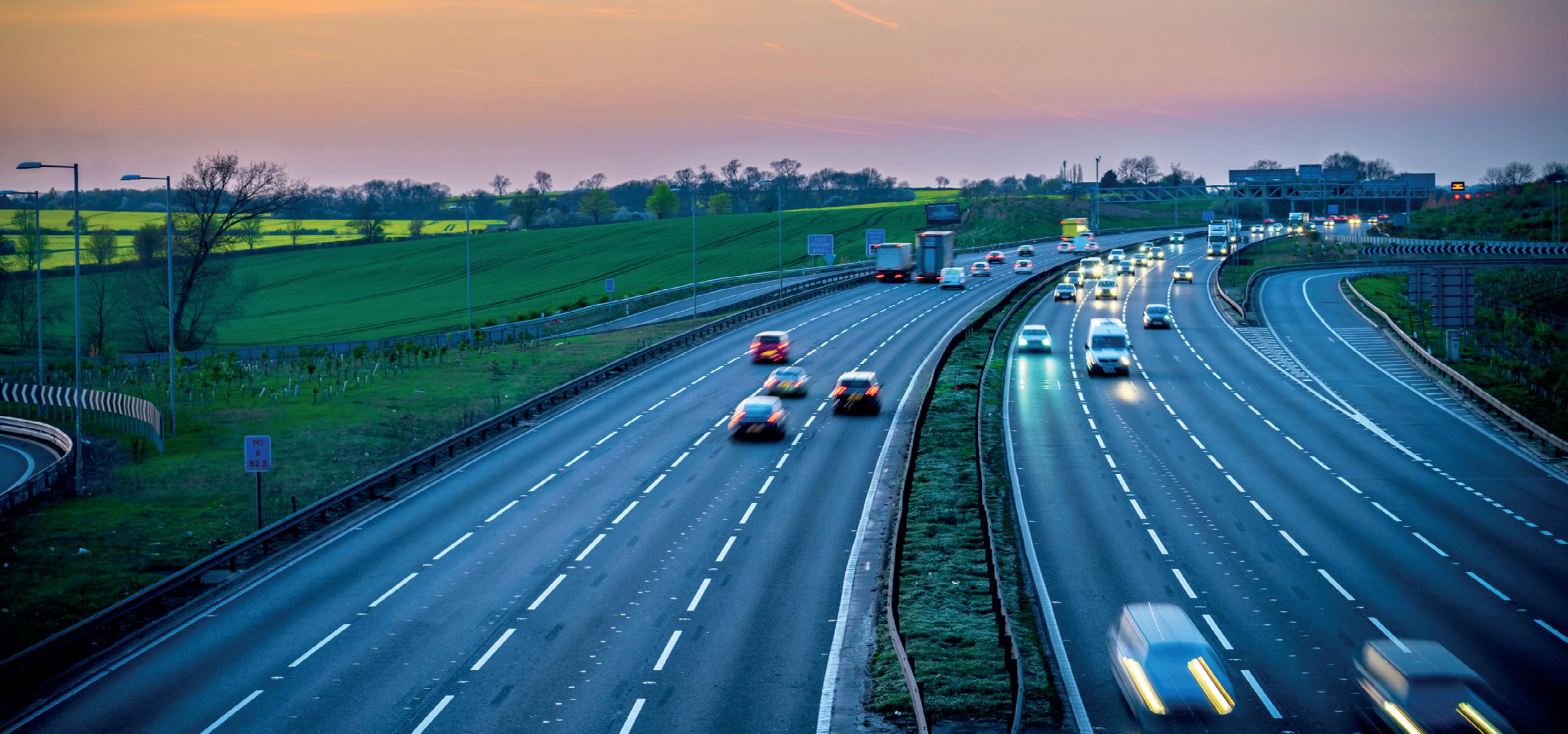

The fourth recommendation made by the OECD is that the Government should embrace a systemic approach to policymaking across government departments. “Achieving transformative change will require aligning action across government and addressing existing inconsistencies,” the report states. “Transformative policies can be prioritised by mainstreaming systemfocused policy analysis and decisions to ensure a shared understanding of root causes by all stakeholders and to expose ingrained ideas (and related actions) that hinder progress.”
Rethinking multi-level governance is also required, according to the report, to improve government engagement with stakeholders, promote bottom-up and participatory approaches, increase local capacity to think in terms of systems, and communicate and implement transformative policies.
Government reaction
Upon publication of the report, Minister for Transport Eamon Ryan TD reiterated that he wanted pathfinder projects (the 15-minute model) to be brought forward in small settlements throughout the State.
However, Ryan articulated: “I would also reinforce, however, the need to continue our focus on electrification of our passenger and public transport fleet, as set out in our Climate Action Plan, as an appropriate measure for the medium term to 2030.”
52 infrastructure and construction report
KPMG: Invest the time in a market consultation
consultations through its guidelines and advocate that it may reduce procurement timescales. Asking questions of the market early on reduces groupthink, encourages decision making and will support better interaction and outcomes. For example, when developing the sustainability criteria for a social infrastructure project such as a local community centre, it is beneficial to engage early with the market. This may identify key issues including supply chain and inflation risks.
Understanding the market’s interest can be attained through the publication of a PIN (prior information notice). Once the level of market interest has been developed, the methodology or delivery model that an entity may use to deliver a solution needs to be considered. In today’s rapidly evolving technology landscape, the mechanism that entities may use to deliver a service or product could vary significantly. Focusing on outcomes rather than inputs can help a contracting authority to specify their requirements without locking the design into a particular solution. As outcomebased approach is not a conventional “off the shelf” solution, a market consultation may assist in verifying the outcome-based specification, identifying existing solutions or identifying alternative solutions. It could be that the market is not capable of delivering the innovation required and a lot of time can be saved from pausing the procurement until the market is ready.
Market consultations are a powerful mechanism for the public sector to “sell” Ireland as a place to do business, which should in turn drive increased competition and capacity in the marketplace. However, often this phase is either overlooked or insufficiently planned.
There is a strong link between developing an initial business case and the ability of the market to effectively respond, otherwise referred to as market capability. A market consultation activity will help to validate that the
assumptions contained in the initial business case remain valid and acts as a checkpoint on deciding whether to continue a procurement process or not.
Early engagement with the supplier base allows contracting authorities to communicate their high-level plans, which in turn allows suppliers to appropriately plan ahead and consider whether they have the capability to respond or provide time to consider a partnership with other entities.
The Office of Government Procurement promotes the use of market
Fran Kehoe Associate Director Corporate Finance, KPMG Ireland

E: fran.kehoe@kpmg.ie
W: www.kpmg.ie
53 infrastructure and construction report
Find out more www.kpmg.com/ie/en/home/industries/infrastructure-government Advertorial
As the expectations of public procurement continue to surge, contracting authorities’ need for clear communication with industry has never been greater. Fran Kehoe, Associate Director, Corporate Finance, KPMG considers the fundamental impact of market consultations for both the public and private sector.
Making regeneration environmentally friendly
Emilie Wadsworth, Operations Director of the Green Action Trust, explains how green infrastructure investment, in addition to playing its part in combatting climate and biodiversity change, is a vital means of regenerating deprived communities.
The Green Action Trust is a regeneration charity which works with the Scottish Government, as well as local government throughout Scotland, to provide environmentally sound regeneration programmes throughout Scotland, such as the Central Scotland Green Network (CSGN), which is investing in the central Scottish belt, one of the most economically deprived areas in the United Kingdom.
The Trust has acted as a key partner of the Scottish Government in the delivery of the Central Scotland Green Network, which is the largest blue-green infrastructure initiative of its kind in Europe.


Maximising regeneration

In order to realise the ambitions of the CSGN, Wadsworth outlines how there has been “increased recognition” of the work carried out by the organisation over the last four years.
“We are now focusing very much on biodiversity connectivity, environmental regeneration – particularly in deprived areas, remediation of vacant derelict land, and multi-functional green infrastructure to address both the biodiversity and the climate crises.”
She details her conviction that “the holy grail is a project that does not only do net zero, or a project that does health or climate, but a project that delivers everything all in the one go. It is the best way of utilising your resources”.
54 infrastructure and construction report
Emerging trends in infrastructure
Wadsworth has high praise for the Scottish Government for its co-operative approach to working, as demonstrated by the Vacant and Derelict Land Investment Programme. “It would be really easy for the Scottish Government regeneration team to just do a small number of really high-profile projects, decontaminating land, and putting houses on them, but the regeneration team spoke to colleagues in other departments and decided that they wanted to set criteria which prioritised green, prioritised biodiversity, and prioritised net zero.”
10,000 Raingardens for Scotland
Wadsworth explains how the Green Action Trust has played a leading role in the 10,000 Raingardens for Scotland programme, which has helped to deliver multifunctional climate adaption interventions throughout the country.
Under the auspices of this programme, Wadsworth says that the Trust has the ambition of “trying to install natural surface water management tools and ensuring that the right infrastructure is in place to manage flooding right across Scotland”.
Green infrastructure, Wadsworth explains, is a term which “has been floating around Scotland for a long time”, and that green infrastructure “has the advantage in that it refers to natural, semi-natural, and built environments”.
“We can talk about rivers, peatlands, and wetlands, but we can also talk about parks and green spaces. We can also talk about green roofs, green walls, and some more innovative features that we can start to use in urban areas right now.”
In Scotland, a Programme for Government is issued for each year, rather than for a parliamentary term, as is the case with the Irish Government. Wadsworth outlines how the Scottish Government has made green regeneration a central feature in recent programmes for government, particularly with a focus on a green recovery from the Covid-19 pandemic and as an essential tool to address the current cost of living and energy crises.
Wadsworth believes that the Green Action Trust can play a key role in ensuring that the recommendations released by the Scottish Just Transition Commission can be taken into account, with regeneration playing a key role in ensuring that Scottish infrastructure and housing is equipped to help Scotland achieve its net zero ambitions by 2050, with interim targets of 75 per cent renewable power by 2030.
The future
Explaining that whilst “there is a lot to be enthusiastic about” with policy development and the rollout of such policy in Scotland, Wadsworth outlines concerns over the timeliness of such prospective developments being implemented.
Regarding the CSGN, she states that there is a “promising future ahead” and that the working relationship between the Green Action Trust and the Scottish Government is only showing signs of growing stronger.

“We have got the fourth National Planning Framework [NPF 4] which is a significant achievement; it is the only national development which has survived three national planning frameworks and the CSGN is a national development in NPF 4 again.”
Whilst the signs are promising, Wadsworth remains grounded: “We need to develop partnerships and programmes that would help deliver the CSGN. It cannot always be delivered by the planning authority, and there are lots of those players involved, which is basically what we have been doing over the last 10 years or so.”
55 infrastructure and construction report
“The holy grail is a project that does not only do net zero, or a project that does health or climate, but a project that delivers everything all in the one go. It is the best way of utilising your resources.”
Find out more www.kpmg.com/ie/en/home/industries/infrastructure-government
Emilie Wadsworth, Operations Director of Green Action Trust
Carbon, construction contracts and (life) cycle
Lifecycle of a building
In terms of analysing the whole lifecycle of a building, it follows that the legal frameworks for procuring the construction and operation (and potential repurposing, retrofitting and/or demolition) of a project should also be examined and tailored for greater use, rather than being restricted to the "use" phase of the building.
Traditionally, a construction contract is drafted on the premise that the terms and conditions set the legal framework and that the technical aspects of the scheme are scheduled to the contract as associated documents.

As practical measures, such as provisions aimed at improving the industry's use of materials and energy use of a building after completion, are likely to have a big impact on the reduction of a scheme's carbon emissions, why not build on the requirements of the technical specifications or bill of quantities and include drafting to combat climate change in the terms and conditions of construction contracts?
Background
It is no secret that the construction process contributes to approximately 37 per cent of carbon emissions in Ireland, and 39 per cent globally. Since 2021, strict government climate policies are in place to reduce emissions, including a legally binding target of a 51 per cent reduction in national CO2eq emissions by 2030 and an overall target of a climate neutral economy by 2050 under the Climate Action and Low Carbon Development (Amendment) Act (2021).
Such statistics, however, quantify the buildings-related emissions in terms of the "use phase" of the building and do not accurately portray the impact of the embodied carbon emissions that the
construction activities have on the whole life cycle of a building.
A UCD report commissioned by the Irish Green Building Council (IGBC)1 has set out that these embodied emissions will increase significantly if housing and infrastructure plans for the rest of the decade are carried out according to current government policy, effectively cancelling out the emissions savings being made by the gradual increase in the use of renewable energy.
In response to these findings, the IGBC has, in cooperation with key stakeholders, launched a draft roadmap, laying out the necessary steps for the construction industry and government to halve the built environment emissions by 2030.
Green public procurement (GPP) is already mandated in Ireland for public bodies and GPP commitments given at tender stage need to be carefully incorporated into the final contract and periodically reviewed. Climate-aligned construction contract drafting can help public bodies and businesses to ensure they are playing their part in the collective effort to address climate change and meet the Government's netzero targets. They can also help public bodies and businesses achieve their own sustainability goals, and might even be necessary to secure project funding from certain debt or equity funders as a condition of a loan or investment.
Parties to a construction contract may wish to consider whether their existing contract drafting requires amendment or deletion in order to comply with their sustainability goals and climate change objectives.
For example, a contractor may be required to use only new materials on a project. Is this strictly required, or can the drafting be amended so that the use of new materials is only required in certain scenarios?
1. Whole Life Carbon in Construction and the Built Environment in Ireland | Today & 2030" v4, October 2022, produced by the Building in a Climate Emergency (BIACE) Research Lab, UCD School of Architecture, Planning and Environmental Policy, for the Irish Green Building Council. 56 infrastructure and construction report Advertorial
Housing and infrastructure plans for the rest of the decade will result in a significant increase in embodied emissions if current government policy dictates their delivery, write Rhona Henry, Partner and Aisling Cassidy, Senior Associate, Construction and Engineering, at Matheson.
Ambitious sustainability targets can be met by repurposing many of the contractual mechanisms commonly used in the construction industry today to ensure the right pricing, specifications, and standards. Examples of climatealigned construction contract drafting may be found in the supplemental provisions of the JCT 2016 Edition contracts2 and NEC Secondary Option X29.
These clauses are not solutions in themselves; however, they serve to focus the attention of the construction contract parties at the outset to create a framework that can be used to give contractual effect to reduce the climate impact through the lifecycle of the asset.
The Chancery Lane Project (TCLP)

TCLP is a rapidly expanding initiative of lawyers, construction industry experts, and sustainability professionals working to adapt contracts to combat the climate crisis. A suite of precedent clauses for construction-specific drafting (drafted for use in accordance with the laws of England and Wales) was released by TCLP and is available freely for download on the TCLP website.
While TCLP clauses are a useful resource, they cannot be inserted into a construction contract without further thought. Careful consideration needs to be given at the outset of a project to the steps that the parties to a construction contract can take to reduce carbon emissions throughout the project lifecycle and equally careful consideration needs to be given to the contract drafting to ensure that those steps are measurable and achievable.
How can Matheson help?
At Matheson, we provide ESG and climate-related drafting expertise in the areas of sustainable construction; sustainable commercial real estate; natural resources and utilities; waste and the circular economy; sustainable finance; governance; climate action; energy, employment practices; supply chain management; investment funds; environmental and planning; and data privacy. Aisling Cassidy is a Senior Associate in Matheson's Construction and Engineering team and is a member of the TCLP Construction Law Working Group tasked with adapting the TCLP

built environment clauses for use in the Irish market. Matheson's Construction and Engineering team is led by partner, Rhona Henry.
W: www.matheson.com/services/constru ction-and-engineering
2. “Sustainable Development and Environmental Considerations": supplemental provision 8 Part 2 of Schedule 2, JCT Design and Build Contract, 2016 Edition and supplemental provision 4 in Schedule 8, JCT Standard Building Contract, 2016 Edition. 57 infrastructure and construction report Advertorial
“A UCD report commissioned by the Irish Green Building Council has set out that these embodied emissions will increase significantly if housing and infrastructure plans for the rest of the decade are carried out according to current government policy, effectively cancelling out the emissions savings being made by the gradual increase in the use of renewable energy.”
Construction activity contraction in 2022
Construction activity in Ireland suffered a contraction in 2022, falling below pre-Covid levels of activity amidst increasingly expensive material costs.

Despite this, housing completions for the first three quarters of 2022 exceeded completions for the whole of 2021.
Construction output

Central Statistics Office (CSO) figures show that the volume of production in construction has fallen by 2.7 per cent on a quarterly basis and 4.5 per cent on an annual basis in quarter three of 2022. This decrease was acutely felt in the residential building sector, where quarterly output declined by 16.2 per cent in a seasonally adjusted volume index. When compared with the preCovid index of Q3 2019, Q3 2022 showed a 39 per cent reduction in production in residential building, from 164 in 2019 to 100.1 in 2022. For comparison, Q1 2015 provides 100 for the index.


This drop in the activity index comes despite additional CSO data revealing that new dwelling completions in Q3 2022 had increased by 62.5 per cent on annual basis, with the 20,807 completions during the first three quarters of 2022 – exceeding the 20,560 completions in all of 2021. Completions increased on an annual basis in all categories of dwelling: apartment completions increased by 153.4 per cent; scheme dwellings by 44.3 per cent; and single dwellings by 27.1 per cent.
However, reinforcing the decreasing trend in the construction output index was a reduction in new housing commencements, with Goodbody’s Housing Chartbook reporting that just 1,841 units had been commenced in October 2022, a 31 per cent year-on-year decrease. The report also states that the three months to October 2022 saw apartment commencements fall by 29 per cent and scheme commencements by 23 per cent, with it suggested that “housing output may stall in the mid-20,000s over the next 18 months”, a rate that would be “well short of the Government’s Housing for All target”.
58 infrastructure and construction report Emerging trends in infrastructure
The non-residential building sector also saw its volume of output reduced (although not to the same degree as the decrease in residential building) with a quarterly drop of 2.8 per cent on a seasonally adjusted basis recorded in Q3 2022. The volume of output in the non-residential sector also fell on an annual basis by 4.5 per cent, with the index having fallen by 12.1 per cent since Q3 2019. The civil engineering sector, however, increased by 10.3 per cent on the seasonally adjusted volume index on a quarterly basis, and also recorded a 4.8 per cent year-on-year increase.
In total, the value index for all building and construction decreased by 1.8 per cent on a quarterly basis but increased by 6 per cent on an annual basis. While the production index fell by 12.3 per cent in the pandemic-affected three years between Q3 2019 and Q3 2022, the value index rose by 6.1 per cent over the same period.
Material costs
A possible explanation for the simultaneous fall in production and rise in value can be found in the soaring construction material costs meaning that while fewer projects are being completed, those that are completed have a premium price tag attached to recoup the cost of materials.
Construction Industry Federation’s (CIF) Economic Outlook research determined that 96 per cent of construction companies reported increases in the cost of building materials between June and August 2022, with 85 per cent of respondents stating that they expected
the price rises to continue at least until the end of 2022. The cost of materials was cited as the top concern for companies over the period of three to six months following the survey, with 86 per cent of companies citing it as a challenge. Meanwhile, 72 per cent of companies cent cited both access to skilled labour and the cost of labour as challenges, while 69 per cent and 67 per cent cited securing a healthy profit margin and the cost of fuel respectively.
At the time of publication, the CSO’s most recent Wholesale Price Index (November 2022) indicates that almost all building and construction materials have experienced price increases on an annual basis, ranging from the 1.7 per cent increase for ‘other’ metal fittings to the 57.1 per cent increase for fabricated metal. Only lighting equipment saw no change in its price index, and only rough timber and its hardwood and other subcategories saw decreases in price, with hardwood falling by 21.6 per cent. In total, all materials saw an annual price increase of 16.2 per cent, almost double the rate of inflation seen in the second half of 2022, which ranged from 8.2 per cent to 9.2 per cent.

Build 2022
The Government’s Build 2022 report, published in July 2022, notes that construction sector output remains lower than pre-pandemic levels, but that construction client companies had increased their exports by 40 per cent to €2.7 billion between 2018 and 2020, despite the Covid-19 pandemic and associated public health restrictions.
It is further reported that while the Government had aimed to concentrate 50 per cent of housing growth in the five urban centres of Dublin, Cork, Limerick, Galway, and Waterford, 83 per cent of the new dwellings completed in Q1 2022 were in urban centres. This is perhaps explained by the fact that it is the growth in apartment building that is fuelling the increase in new dwelling completions; while overall new dwelling completions rose by 3 per cent between 2019 and 2021, apartment completions rose by 50 per cent.
With trends in construction output still not having matched pre-pandemic levels, the reaching of 2023’s Housing for All targets looks to be under threat, with a further challenge being that of inactive planning permissions; the Housing Supply Task Force report for Q4 2021 showed there to be 74,879 homes in Dublin to have received planning permission, with 48,032 of them unused. Dublin Democratic Planning Alliance data showed there to be 39,823 homes with unused planning permissions under the Strategic Housing Development process in February 2022. Build 2022 states that there are between 70,000 and 80,000 homes with planning permission that have not commenced construction. Combatting the looming stagnancy predicted in the construction industry will require the activation of these dormant permissions, with the Government stating that its Croí Cónaithe (Cities) scheme will go some way in meeting this challenge.
Building and construction value and volume indices (100 = 2015)
(Source: CSO)

0 20 40 60 80 100 120 140 160 180 Q1 2017 Q2 2017 Q3 2017 Q4 2017 Q1 2018 Q2 2018 Q3 2018 Q4 2018 Q1 2019 Q2 2019 Q3 2019 Q4 2019 Q1 2020 Q2 2020 Q3 2020 Q4 2020 Q1 2021 Q2 2021 Q3 2021 Q4 2021 Q1 2022 Q2 2022 Q3 2022 Allbuildingandconstructionvalue Allbuildingandconstructionvolume Residentialbuildingvolume Non-residentialbuildingvolume Civilengineeringvolume 59 infrastructure and construction report
Find out more www.kpmg.com/ie/en/home/industries/infrastructure-government
Helping to unlock the value of infrastructure in Ireland
As the world’s number one environmental consulting firm Jacobs is delivering coastal resilience projects that put sustainability at the core of decision making. In 2022, Iarnród Éireann Irish Rail commissioned Jacobs for the largest coastal protection scheme in north-western Europe, the East Coast Railway Infrastructure Protection Projects (ECRIPP) programme. ECRIPP is required to defend long sections of the essential Dublin to Rosslare coastal rail line from coastal erosion and flooding for the next 100 years.

From flood protection to decarbonisation, health and life sciences to major transportation programmes, Jacobs is helping to plan, design, and safeguard Ireland’s future. With some 1,200 employees in its Irish operations leveraging local and global technical capability, Jacobs is playing a pivotal role in helping to tackle challenges like the climate emergency, socio-economic demands, and resiliency. Employing more than 60,000 people and operating in 40+ countries around the world, Jacobs provides a full spectrum of professional services including consulting, technical, scientific, and project delivery for the Government and private sectors globally.
With its new company strategy and proactive approach to strategic portfolio management, particularly around climate response, consulting and advisory services, and data solutions, Jacobs has created a resilient business firmly positioned to help its clients navigate these rapidly changing times. Part of this strategy includes a new commitment to target 100 per cent of the company’s projects across all sectors to contribute to climate response or include ESG scope by 2025.
Environmental stewardship and climate change
Planning and adapting ahead of potential threats can help reduce climate change impacts; strengthen and safeguard communities; enhance biodiversity resilience; protect energy, water, and transportation assets; and fuel inclusive growth.
“Our support will focus on environmentally led design, with careful attention to the environmental sensitivities of the local area,” explains Jacobs Vice President, Buildings and Infrastructure, Ireland, Dom Lynch. “Climate change is having a dramatic impact on the transport route and local area. Protecting the Dublin to Rosslare coastal line will build long-term resilience and preserve vital connectivity, local economies, and communities, while benefiting the next generation.”
60 infrastructure and construction report Advertorial
From flood protection to decarbonisation to major transportation programmes, Jacobs continues to plan for, design, and safeguard Ireland’s future.
Connecting people and communities
Around the world, Jacobs delivers major transportation projects as part of integrated infrastructure solutions that encompass transport planning and modelling, environmental solutions, intelligent mobility, connected vehicle, and other emerging technology to full project life cycle transport infrastructure management.
In Dublin, for example, Jacobs is helping to develop and implement Ireland's first metro system. With a forecast of significant economic and population growth, the new metro service will play a vital role in improving Dublin's mobility, unlocking much-needed transit capacity, and improving air quality at the same time.

Working collaboratively with the National Transport Authority (NTA) and Transport Infrastructure Ireland (TII), the Jacobs Idom consortium has taken the scheme from emerging preferred route status through evaluation and selection of preferred route, including all business case and environmental support work. From environmental strategies, through engagement and consultation to design engineering. Jacobs is guiding the process and helping to minimise risk and achieve results. In September 2022, TII made its application to An Bord Pleanála for the Railway (MetroLink-Estuary to Charlemont via Dublin Airport) Order [2022].
Jacobs also supports the National Transport Authority (NTA) in Ireland as part of the NTA’s strategy to develop greater use of sustainable transportation options. In November 2021, the NTA re-appointed Jacobs to provide transport modelling expertise to support development of an integrated transportation system.


Jacobs has a long-standing relationship with the NTA in supporting Ireland’s sustainable transportation priorities. The delivery of a multi-
modal modelling system of this scale and complexity is helping NTA appraise proposed transport programmes at both macro and micro levels and is a pre-requisite to creating effective transportation strategies.
Water security
As water issues intensify, so does awareness of the effects of water management decisions. Decisions at one point in the water cycle affect all the others. Whether it is treating, distributing, or storing water, Jacobs collaborates to deliver solutions across drinking water and reuse, industrial water, wastewater, water conveyance, and storage and water resources.
Jacobs provides technical support to Uisce Éireann on its programme of capital works to deliver improvements to water services throughout Ireland. Supporting Uisce Éireann in upgrading Ireland's water services infrastructure, the seven-year Engineering Design Services framework includes strategic planning support ranging from feasibility studies, investment planning, site survey, and investigation services, to stakeholder and asset management.
Over the last six years, the company has also worked collaboratively with Uisce Éireann to deliver several key projects, including the National Water Resources Plan, Sludge Hub and Satellite Dewatering Programme, and Navan Mid-Meath Water Supply Scheme.
W: www.jacobs.com

61 infrastructure and construction report Advertorial
Housing challenges persist for Government
Having initially claimed that the Department of Housing, Local Government and Heritage had “blown its target out of the water” when CSO figures suggested construction targets had been exceeded in 2022, Minister Darragh O’Brien TD will have to contend with figures from the National Building Control Office suggesting that the CSO overestimated housing completions by around 6,000 in 2022.
Having held onto his job during the December 2022 cabinet reshuffle, Minister for Housing, Local Government and Heritage Darragh O’Brien TD has proclaimed that his department had “turned the corner”.

This was in reaction to figures released by the CSO, which stated that 29,851 homes were fully built in 2022, a figure above the Government’s initial target of 24,600 and representing a 45 per cent increase in homes completed compared with 2021.
However, data released by the National Building Control Office states that there were only 23,751 which, if true, would mean that rather than blowing their target “out of the water” as Minister O’Brien has claimed, that the Government has missed its target for housing completions.
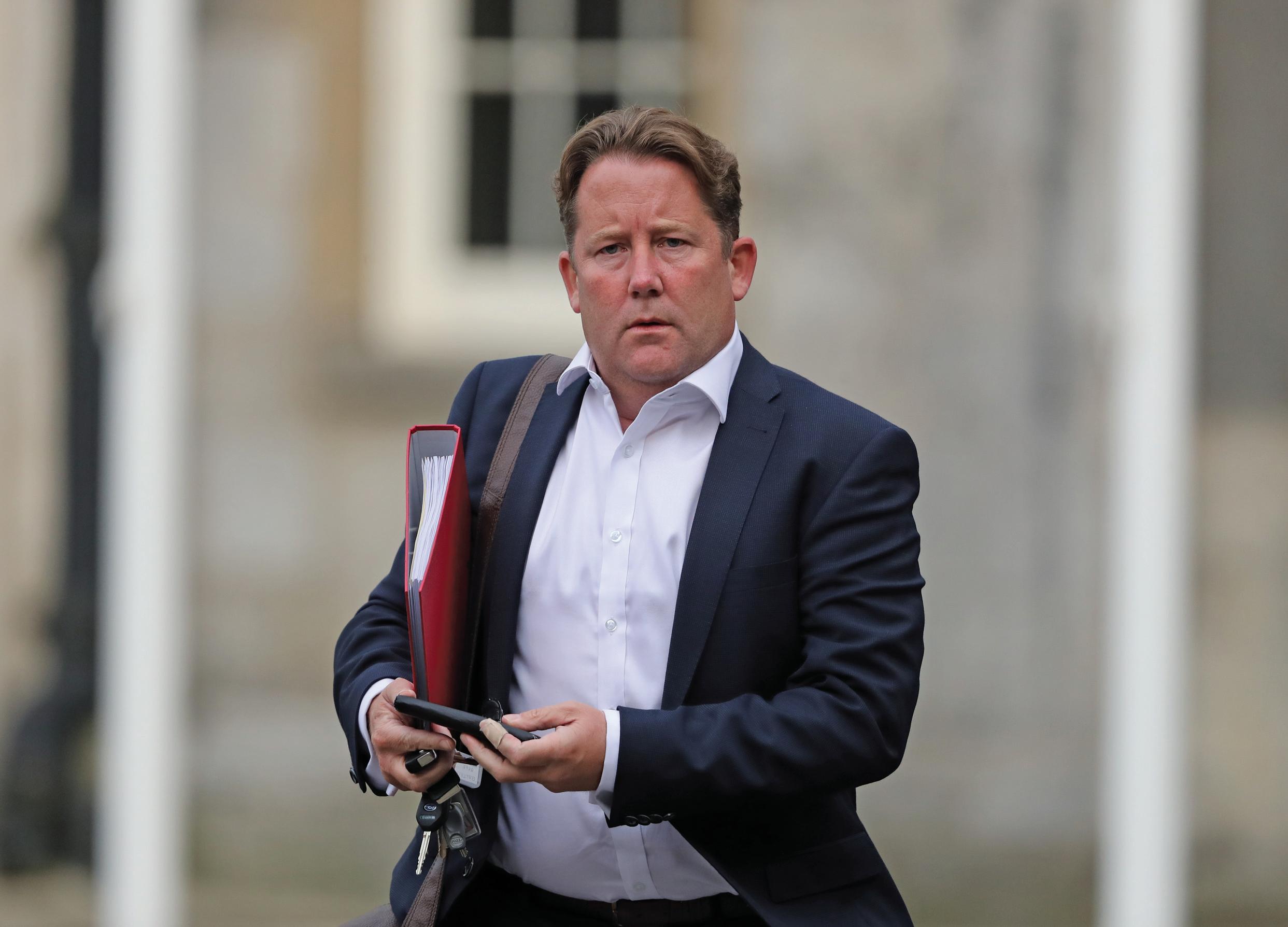
The Government has critiqued the methodology of National Building Office Control statistics, stating that since it only measures back to March 2014 that it cannot take account of homes constructed before then.

Housebuilding


Housing for All was launched in 2021, with its first full year of implementation covering 2022. Although Minister O’Brien will be satisfied at the level of dwelling completions for Q4 2022, which represented a 31.5 per cent increase on construction figures compared with Q4 2021, one challenge is that the number of new dwellings that commenced construction in the previous 12 months was just under 27,000 a 12.3 per cent drop on the previous year.

62 infrastructure and construction report Emerging trends in infrastructure
Reflecting on the CSO figures in 2022, Minister O’Brien stated, prior to the National Building Office statistics being released: “It has been a really strong start for Housing for All; we have blown our target out of the water. We will not be complacent though. We know there is a long way to go.”
Social housing completions
The Department for Social Protection, led by Minister Heather Humphries TD, has indicated that around 6,500 social houses were built in 2022. Minister O’Brien, however, has stated that this figure is “frankly incorrect”, and that “we will be much closer to 8,000 newbuild social homes than what was attributed”.
However, The Irish Times revealed a report leaked from The Housing Commission which claims that 62,000 homes must be constructed annually to simply meet current demand.
Speaking in the Dáil on 26 January 2023, Sinn Féin’s Pearse Doherty TD commented on the report and claimed that the Government’s targets in Housing for All, even if met, will lead to a housing shortfall of 245,000 by 2030.
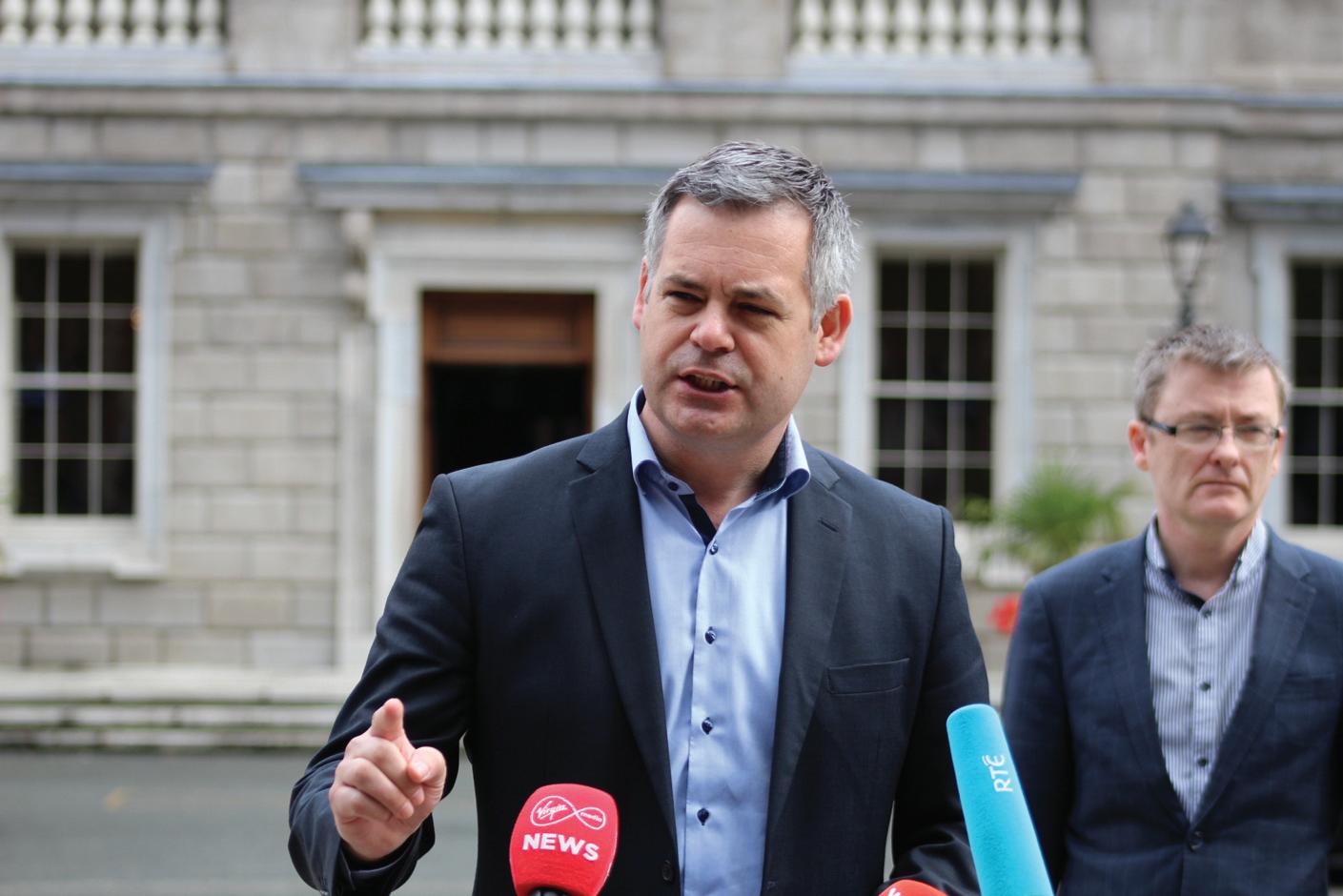
Homelessness and quality of housing
Although Minister O’Brien has claimed success on house completions in 2022, homelessness has continued to reach successive record levels in the State.
The CSO recorded that as of December 2022, there were 11,632 homeless people in the State, which represents a new record and a 30 per cent increase when compared with the figure from December 2021.
Sinn Féin housing spokesperson Eoin Ó Broin TD described the homelessness figures as “disturbing” and called on the Government to extend the temporary winter eviction ban.
“This is the first time homelessness has risen in December for some time. The fact that it has happened while the winter ban on evictions is in place is deeply disturbing.”
Minister O’Brien stated that the ongoing eviction ban, which is due to expire on 1 April 2023, was “under review” and
that the homelessness figures are “too high” and that it is “a really difficult situation”.
Criticism has been articulated in relation to the number of derelict homes in the State, which have the potential to house Ireland’s homeless population more than 10 times over.
Speaking on RTÉ on 29 January 2023, Independent TD Denis Naughten stated: “We are crying out for population in the west and northwest and yet we have 45,000 vacant homes there today that need to be opened up to deal with the pressure and housing demand that's there at the moment.”
The following day, Minister O’Brien announced the Vacant Homes Action Plan 2023-2026, in which the Department of Housing states that it will allocate €2 billion to tackle homelessness in the State.
Within this, there will be a new fund of €150 million to be allocated to local authorities with the aim of regenerating vacant and derelict housing.
This followed an announcement of a legacy defects scheme; a fund of €2.5 billion which will be spent on between 62,500 and 100,000 houses, mostly built through the Celtic Tiger era, which suffer from building defects such as mica.
2023

The CSO figures were being presented as a major victory for the Government, thereby emphasising the potential embarrassment at the National Building Control Office data, as the Government continues to grapple with the worst housing crisis in the State for generations.
Furthermore, the reduction in the number of homes which commenced building in December 2022 is an ominous portent for 2023, suggesting that there may be a decline in housebuilding in the future. This is compounded by record homeless figures amid significant government expenditure required to rebuild defective homes and bring vacant homes back into supply.
Further challenges lay in ensuring an adequate workforce to continue building houses on such a scale, with the Department of Further and Higher Education, Research, Innovation and Science’s report, Report on the Analysis of Skills for Residential Construction and Retrofitting, 2023 to 2030 stating that, in order to meet targets in Housing for All, that 24,186 new workers must be recruited for construction roles, with a further 22,779 construction workers required to meet national retrofitting targets.
63 infrastructure
and construction report
Sinn Féin finance spokesperson Pearse Doherty TD told the Dáil that the Government’s plans, even if met, will lead to a housing shortfall of 245,000 homes by 2030.
Find out more www.kpmg.com/ie/en/home/industries/infrastructure-government
Credit: Sinn Féin
Plenary: Global experience and economic stimulus
A multi-national team comprising the most experienced infrastructure investment professionals in the most active PPP markets in the world, brings a fresh perspective. This includes market leading origination and delivery teams with extensive experience across finance, commercial, construction, operations, and public sector engagement.

Plenary leverages its own balance sheet and a global network of capital providers to assess each project on its merits, without fund limitations or return thresholds. We are uniquely placed as a one-stop shop to source and structure the most competitive capital terms across debt, mezzanine, and equity financing.
All of the jurisdictions Plenary operates in face significant infrastructure gaps due to the combined effects of population growth, under-investment over previous decades and the need to transition to renewable energy sources and decarbonise economies. In Plenary, governments have a long-term partner willing to invest patient capital alongside them. Our long-term investment model means we are driven to achieve quality, whole-of-life outcomes.
Plenary is the largest participant in the Asia Pacific public-private partnership (PPP) market and the largest PPP developer in North America. After successful expansions into North America, Asia and the Middle East, Europe is Plenary’s next frontier.
Our approach: Experience, partnership, innovation and long-term investment
At Plenary, we exclusively take a longterm approach to project outcomes. This is integral to ensure that infrastructure
continues to deliver over the long term and is, ultimately, handed back to government partners fit for purpose.
Our model is based on a desire to share risk with our partners, active ownership and supported by effective project delivery. We continue to maintain an equity interest in every one of our originated projects, which demonstrates our clear commitment to resolve issues collaboratively with our partners.
Plenary’s approach to partnering with consortia and governments has been central to its success.
We are seeing major increases in construction costs across all our markets. The global market context is one where supply chains are under severe pressure and with inflation rising, the cost of delivering infrastructure is high and rising. With budget constraints and increasing interest rates impacting governments across the globe, Plenary’s capacity to bring together local and international pension fund investors to commit to public infrastructure can be a strong positive for the Irish economy. This is where Plenary’s experience across a diverse range of global markets, combined with our capital independence, can play an important role. It allows us to develop innovative commercial and financing structures –which can facilitate the effective, efficient delivery of much needed infrastructure projects despite the difficult market environment.
The challenge for any government
Established in 2004, Plenary is a leading independent, long-term investor, developer, and manager of public infrastructure. Plenary has over 250 employees across 13 global offices and currently has 80 assets under management worth more than €45 billion.
64 infrastructure and construction report Advertorial
Ray Wilson, Founder and Non-Executive Director, Plenary Group.
(around the globe) will be to attract private capital willing to invest alongside them in a way that drives innovative practices to get the best outcome for taxpayers recognised over the long term.
Sydney Metro
A good example of Plenary’s successful approach to our projects was the December 2022 award of the Sydney Metro – Western Sydney Airport Stations, Systems, Trains, Operations and Maintenance (SSTOM) PPP to the Plenary Group-led Parklife Metro consortium.
The project will deliver a new 23kilometre metro to link the new Western Sydney International Airport, major residential areas, job centres and the rest of Sydney’s public transport system. The joint Australian and New South Wales project is the largest PPP awarded in New South Wales to date. The project will be a major economic stimulus for Western Sydney, New South Wales and the national Australian economies.
In keeping with Plenary’s long-term commitment to its projects, Parklife Metro will continue to operate and maintain the metro line for 15 years after it becomes operational.
This is just the latest major metro/light rail project undertaken by Plenary. In November 2022, the Plenary Connect 6ix consortium was awarded the $9 billion Ontario Rolling Stock, Systems, Operations and Maintenance contract. Plenary is currently delivering 70 new high-capacity metro trains and two new maintenance facilities for Melbourne’s rail network. Plenary delivered the Sydney Metro North West PPP, a 36kilometre rail link in May 2019; Gold Coast Light Rail in Queensland in 2017; and the Metrolinx East Rail Maintenance Facility in Ontario, Canada in 2018.
At Plenary, we are excited to bring this experience to Europe and to Ireland.
Ambition for Ireland
Plenary has established a European office, with Ireland emerging as a key focus given the strong pipeline of PPP projects in the social housing, justice, and transport sectors.
Plenary has a strong connection to
Ireland through our founder Ray Wilson. Ray was born and raised in Dublin and while he has made his home in Australia, he continues to be actively involved in Dublin life through his immediate family and his role as part owner of the Shamrock Rovers Football Club. Ray is also a board member of the Ireland Funds Australia and supports his old school St James CBS and a number of other inner city not-for-profit organisations which are close to his heart given his boyhood in Rialto.
Following a period of capital underinvestment following the 2008 crash, there is a strong demand for infrastructure projects in Ireland.
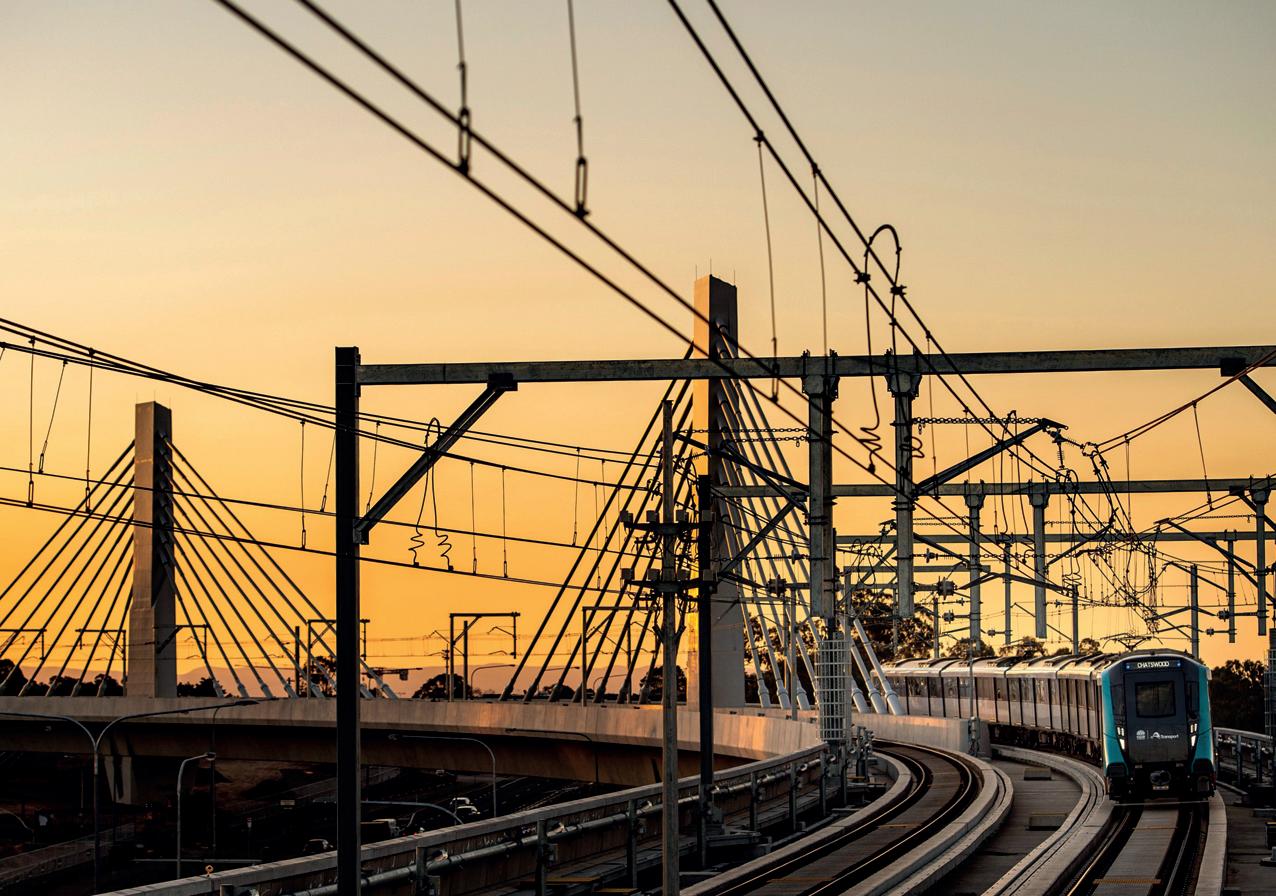
Ireland is estimated to grow by an additional one million people by 2040 and is looking to invest in quality public infrastructure to meet future demand and community expectations. This context means that there is a strong demand for infrastructure projects as outlined by the Government’s National Development Plan. The policy environment in Ireland is therefore positive with regard to partnering with the private sector to meet this infrastructure demand.
The particular demand for social housing and transport projects in Ireland maps well onto Plenary’s experience across Asia Pacific, the Middle East and North America. Alongside the significant transport experience outlined above, we have been strategically building our expertise and knowledge of the social
housing sector. We have employed an executive team with the appropriate specialist experience and identifying pools of capital with an investment appetite.
We believe Plenary’s approach to longterm investment and active management of our projects, for on-time and on-budget delivery, can make a valuable contribution to meeting Ireland’s infrastructure ambitions. Our large scale public infrastructure projects are often the most significant economic stimulus for local communities. They are opportunities for local jobs, trade training for young people, urban renewal, commercial development, and support for local businesses and organisations. Plenary excels at delivering the ‘other’; economic, commercial and social opportunities that bring a project to life and give it meaning for a local community.
Paul Crowe, Chief Investor Officer, Plenary Group E: paul.crowe@plenary.com

65 infrastructure and construction report Advertorial
Sydney Metro North West viaduct.
Conference 2023
Friday 10 March • Radisson Blu Royal Hotel, Dublin
Expert speaker panel includes:
Darragh O’Brien TD Minister for Housing, Local Government and Heritage
Bob Jordan CEO The Housing Agency
Sorcha Edwards Secretary General Housing Europe


Dara Deering Chief Executive Officer Home Building Finance Ireland



Dónal McManus, CEO, Irish Council for Social Housing


To register:
Áine Stapleton Assistant Secretary, Social Housing Delivery
Department of Housing, Local Government and Heritage
Caroline Timmons
Acting Assistant Secretary, Housing Affordability, Inclusion and Homelessness


Department of Housing, Local Government and Heritage
Caren Gallagher
Head of Communications and Research
Residential Tenancies Board
Key issues to be examined:
3 Housing for All implementation and progress
Affordable housing: Emerging trends in Europe
Unlocking opportunities for new housing supply
Increasing social and affordable housing delivery
Collaborating to eradicate homelessness and enhance social inclusion
Financing new housing supply
AHBs: Establishing sustainable and vibrant communities
Developing cost rental housing tenure
Local authorities: Planning and provision of affordable homes on public lands
Online www.housingireland.ie By email registration@eolasmagazine.ie By telephone 01 661 3755
eolas Magazine is organising its eighth annual Housing Ireland Conference, which will examine the key challenges facing Ireland’s housing policymakers and senior practitioners across the sector. The conference will take place on 10 March 2023 in the Radisson Blu Royal Hotel, Dublin.
ORGANISED BY SPONSORED BY IN ASSOCIATION WITH
Offshore wind report









Sponsored by
Minister Eamon Ryan TD: Offshore wind delivery gaining momentum

My department is leading on delivering legislative, regulatory, and policy developments to accelerate the delivery of Ireland’s significant offshore renewable energy (ORE) potential and to meet climate commitments and carbon reduction targets set out in the Climate Action Plan and the Programme
for Government, as well as EU and international agreements.

The Climate Action Plan (CAP) 2023 commits to achieving 5GW of installed offshore wind capacity by 2030 with an additional 2GW earmarked for the production of green hydrogen. It also includes a suite of actions to realise
Ireland’s ORE potential. The Programme for Government commits to a long-term plan to take advantage of a potential of at least 30GW of floating wind post-2030.
The establishment of offshore wind in Ireland is a significant undertaking, involving action across many areas of
As we all work together to create a sustainable future for Ireland, it is vital that we use our vast offshore wind resource to create renewable energy and ensure the security of our own energy supply, writes Minister for the Environment, Climate and Communications, Eamon Ryan TD.
68 offshore wind report
government. The Offshore Wind Delivery Taskforce I established is central to this work. The taskforce will drive delivery and capture wider and longer-term economic and business opportunities associated with the development of offshore renewables in Ireland.
To achieve this, the taskforce is developing a single system-wide plan, bringing together the work ongoing across government to deliver on our offshore wind ambitions. This includes matters relating to supply chain, ports policy, skills and workforce, and regulatory consenting.
The Maritime Area Planning (MAP) Act 2021 provides a legislative basis to harness the potential of ORE in Ireland’s entire exclusive economic zone (EEZ) and outside the 12 nautical mile coastal zone provided for in the Foreshore Act (1933). The Maritime Area Regulatory Authority (MARA) will be established in the coming months, as provided for under the MAP Act.
In advance of this, in December 2022, I granted Maritime Area Consents (MAC) to seven phase one ORE projects. This represents a significant milestone in the delivery of offshore wind in Ireland and is an important step towards reaching our 2030 climate targets. The MACs enable phase one projects to begin their pre-planning application engagement with An Bord Pleanála. During the planning permission phase all projects will be subject to a full environmental assessment.
The terms and conditions for the first offshore wind auction under the Renewable Electricity Support Scheme (ORESS 1) were recently approved by Government. The auction, which will take place in the first half of 2023, is expected to provide a route to market for up to 2.5GW of ORE.
Ireland’s transmission system operator (TSO), EirGrid is working to ensure that the onshore electricity transmission system can integrate the ORE target by 2030. EirGrid has processed applications for grid connection assessments (GCAs), a requirement for entry to the ORESS 1 auction.
Local coastal and marine communities play a central role in facilitating and supporting the development of Ireland’s
offshore renewable electricity ambitions and, as a result of a new framework I recently published, these communities are in line to benefit significantly from offshore renewable electricity projects. Under the framework, generators of offshore wind will be required to make substantial annual contributions to community benefit funds.
A key feature of the new framework is that generators must make contributions prior to commencing operation. This means that coastal and marine communities could start to benefit from as early as 2025 and could look forward to receiving benefits for up to 25 years.
Ireland intends to move from a developer-led to a plan-led approach (the enduring regime) for the development of the ORE sector, meaning that the State will play a much greater role in identifying the most suitable areas in our maritime space for ORE development in the long term.
A new Offshore Renewable Energy Development Plan (OREDP II) will be published this year setting out the national spatial strategy to support this. Together with the National Marine Planning Framework, it will guide the sustainable and planned development of ORE.
The OREDP II will assess the potential for ORE in Ireland’s maritime area and provide an evidence base to facilitate the identification of broad areas of interest most suited for ORE in the long term. These areas will be further refined in advance of a statutory designation via Designated Maritime Area Plans (DMAPs) for ORE as provided for in the MAP Act.
Public consultations are a key feature of developing the OREDP II, DMAPs, and their associated environmental assessments. The draft OREDP II and the associated environmental reports will be subject to an eight-week public consultation period. A wide variety of views will also be sought from stakeholders across government departments, state bodies, and the industry and environmental sectors. My department has reviewed submissions to design a pathway for a second batch (phase two) of offshore wind projects required to achieve Ireland’s ORE target for 2030. A policy statement, which will provide clarity on investment in phase two, will be issued by the Government in February 2023.
In September 2022, Ireland hosted a ministerial meeting for the energy ministers of the North Seas Energy Cooperation (NSEC) and the European Commission. At this landmark meeting, NSEC ministers agreed to reach at least 260GW of offshore wind energy by 2050. This represents more than 85 per cent of the EU-wide ambition of reaching 300GW by 2050. This unified approach will help to ensure that Europe will be energy independent and that these new renewable energy sources from our seas will be fairly shared and affordable. Ireland’s offshore wind potential is integral to this European ambition.
Maximising our offshore wind energy capacity will eventually eradicate our dependence on imported fossil fuels. It will put us on a direct path to zero CO2 emissions while at the same time creating jobs, future-proofing our businesses, and improving our quality of life.
69 offshore
wind report
“Maximising our offshore wind energy capacity will eventually eradicate our dependence on imported fossil fuels. It will put us on a direct path to zero CO2 emissions while at the same time creating jobs, future-proofing our businesses, and improving our quality of life.”
Minister for the Environment, Climate and Communications, Eamon Ryan TD
Action now, not ambition
Maria Ryan, Director of Offshore Development at SSE Renewables, sets out the three steps we need to take to achieve Ireland’s energy independence.


It is a year since Russia invaded Ukraine, creating a humanitarian disaster and triggering the biggest energy crisis in decades.
As the tanks rolled in, countries across Europe and beyond began to face the consequences of depending too much and for too long on fossil fuels. We here in Ireland were, unfortunately, no exception.
As the energy crisis deepened, we saw fairly rapid consensus on the way forward: a homegrown energy system that is cheaper, cleaner and more secure. This approach has been agreed at an EUlevel, with the development of the REPowerEU programme, the aim of which is to help member states in accelerating renewables and diversifying where we get our energy from.
Whilst the EU’s efforts look to remove some of the barriers to renewable energy development (such as by shortening planning timelines), it will only assist
member states. The ambition and vision for energy independence must come from Ireland itself.
So, how do we get there?
SSE Renewables have three key steps that we believe Ireland can take to solve the energy crisis sustainably.
Firstly, we should radically increase homegrown renewable generation by accelerating offshore wind as quickly as possible.
The first offshore wind auction will take place shortly and we know that these projects (so called Phase 1) stand by far the greatest chance of delivering in time to meet the Government’s 2030 ambition for at least 7GW of offshore wind. Ireland should maximise the number of projects that are successful in the auction.
Enabling the step change in Ireland’s renewable output that offshore wind offers will reduce Ireland’s exposure to variable fossil fuel prices, providing a buffer against global oil and gas volatility in future. The Government should take action to enable as many Phase 1 projects as possible, so we can deliver as quickly as possible.

70
70 offshore wind report Advertorial
Construction of the 1.1GW Seagreen offshore wind farm in Scotland, which is due for completion this year. The project is a joint venture between SSE Renewables and TotalEnergies.
At SSE Renewables we are about action, not ambition. In the last year alone our Phase 1 project at Arklow Bank, in the birthplace of offshore wind in Ireland, has secured separate planning permissions for its onshore grid connection and its operations and maintenance base at Arklow Harbour, as well as its Maritime Area Consent (MAC). Arklow Bank is by far the most developed of the Phase 1 projects. SSE stands ready to invest €2.5 billion in our Arklow development in County Wicklow, which will be able to power around 850,000 homes and offset 830 million tonnes of carbon annually.
Beyond Phase 1, SSE Renewables is developing our Setanta and Celtic Sea Array Projects, amongst others. To unlock the potential of these projects, however, industry awaits the so called ‘Phase 2’ policy decision from government, which will set out the way forward for how projects progress. We would point towards the model used in Scotland (known as ScotWind), for a good example of how Ireland could award MACs for this next phase of offshore wind in Ireland. It is critical that we look beyond 2030 and do not limit the Phase 2 projects to solely top up Phase 1 to meet our 2030 targets. Secondly, we need to develop and implement a clear and credible strategy for a hydrogen economy that will be crucial to replacing fossil fuels over time.
As Irish offshore wind production is ramped up, we can use electricity generated during periods of high wind to produce green hydrogen. In this way, green electricity can effectively be stored as hydrogen, which can be used for various uses including as a flexible electricity generation back-up to renewables when it is less windy.
We know, however, that the Government’s hydrogen strategy is imminent. It is critical we set out a clear vision if Ireland is to be at the forefront of Europe’s hydrogen story. Ireland has already stated its clear ambition to become a world-leader in renewable energy and this ambition goes well beyond the level of likely domestic electricity demand. During 2022 we have seen how other countries, looking to wean themselves rapidly off Russian gas, are looking to other nations to provide hydrogen. Ireland can and should be able to fulfill this role. Our ability to do this will depend on our competitiveness and having the supporting policy in place as soon as possible. Lastly, we need to make it easier to develop and operate a range of clean technologies. For instance, co-locating technologies such as battery storage, wind (both offshore and onshore) and solar power together is currently a painful process. In the future hydrogen production can also be added to the mix.
We can fix this by streamlining regulations, making it easier to build out these types of hybrid projects. This includes SSE’s Richfield project in Wexford which combines wind, solar and battery technologies at the same site. Though three successive Government climate action plans (CAPs) have outlined an action to facilitate hybrid connections, progress has been glacial.
This must be the year that Ireland finally facilitates these types of projects, which can help stabilise the electricity grid by storing energy (whether via batteries or hydrogen) generated by renewables for use when the sun does not shine and the wind does not blow.
In summary, SSE Renewables are more than ready to play our part in helping turbocharge Ireland’s next phase of economic growth by harnessing our offshore wind energy opportunity to generate the clean energy we need and enable adjacent clean tech solutions such as green hydrogen and colocation. In doing so, we will tackle climate change and secure our energy independence. It is a win-win opportunity, and it must be seized. But taking full advantage of this needs more than just government ambition, it needs action. The clock is ticking.
www.sserenewables.com
SSE Renewables is the lead partner in a consortium delivering the Galway Hydrogen Hub (GH2), the country’s first ‘hydrogen valley’, providing green hydrogen for use in transport, industry and within local communities in the greater Galway region, local indigenous production for local indigenous demand. This is a critical first step in building our green hydrogen capabilities. We know that EU support for hydrogen is strong but for much of the last year, Ireland has been in the position of being one of only a handful on member states without a hydrogen strategy, unhelpful in a period of increasing global competition for skills and investment.
71 offshore wind report Advertorial
“Ireland should maximise the number of projects that are successful in the Phase 1 offshore wind auction.”
Developing Ireland’s offshore wind resources


Anne-Marie Clancy, Principal Officer in the Department of the Environment, Climate and Communications’ (DECC) Offshore Energy – Long-Term Strategic Planning division, outlines a phased approach to post-2030 plan-led offshore development.

Clancy leads one of three offshore renewable energy divisions within DECC and has specific responsibility for long-term strategic planning.
She explains that the State has undertaken a huge volume of work over the past 18 months to establish the offshore sector in the context of binding targets, not least its ambitions for 7GW of offshore wind by 2030, 30GW of floating offshore wind beyond 2030 and ultimately, net zero emissions by 2050.
In July 2021, the Department of Housing, Local Government and Heritage launched the National Marine Planning Framework (NMPF), viewed as the overarching framework for decision-making. This was followed by the signing into law of the Maritime Area Planning (MAP) Act 2021, which set out the consenting framework and allowed, for the first time, consenting for development beyond the 12 nautical mile limit, opening the door to floating wind.
Clancy explains that there are two key consents under the legislation. The first is Maritime Area Consent (MAC), which is State consent opening the gateway into the planning permission system. Developers must obtain a MAC before they can go to An Bord Pleanála and this step allows for the State to assess whether a developer is fit and proper to develop in Irish waters.
The second key consent is around formal environmental assessment once a developer has entered the planning permission system. It is also the stage where formal public consultation obligations kick in.
Clancy explains that the enforcement of planning decisions will be undertaken by the new agency, Maritime Area Regulatory Authority (MARA), under the remit of the Department of Housing, Local Government and Heritage, which is expected to be operational by Q2 2023.
Outlining the State’s phased approach to offshore renewable energy development, Clancy highlights the move from the current decentralised regime to a much more “plan-led, centralised” regime. Of the three phases, phases one and two will be critical to Ireland achieving the 7GW by 2030 target, while phase three will be the enduring regime.
Phase one
Under the MAP Act 2021, the Minister for the Environment was granted transitional powers to assess MAC applications from the relevant projects, a group of eight prequalified projects that had significantly progressed under the previous administration. Of these, seven projects are located on the east coast with one located on the west coast. With the first MACs granted in
72 offshore wind report
Anne-Marie Clancy, Principal Officer in the Department of the Environment, Climate and Communications.
Q4 2022, Clancy says that following assessment of application, the expectation is for some 2.5GW of offshore capacity to be operational by 2030.
“We would expect to see those projects energised from 2027 onwards and we would expect the majority, if not all, to compete in our first Offshore Renewable Electricity Support Scheme [ORESS],” she states.
The ORESS 1 terms and conditions, and auction timetable were published in 2022, with successful applicants to be announced in June 2023.
Phase two
Outlining the approach to phase two, Clancy points to the recognisable gap between phase one’s capacity delivery and the 7GW target. “It was recognised that we do need a second batch of projects coming through the regime before the enduring [phase three] regime kicks in. Our key goal is to get the most realistic and viable projects into the planning pipeline,” she says.
Following extensive consultation on phase two, the responses for which have now been assessed, a policy statement on phase two is expected early this year. Likely to be included in this statement will be whether an ‘innovation’ category, potentially accommodating floating wind into the pipeline before 2030, will be included in a second dedicated offshore renewable electricity support scheme.
The second support scheme will target those phase two projects and also potentially any losers from phase one, with the aim of projects being energised from 2028 onwards, explains Clancy.
Phase three (the enduring regime)
Describing phase three as the “plan-led regime”, Clancy points out that this stage is for projects expected to be operational beyond 2030 and one where the State is much more involved in determining who, where and when development occurs offshore.
Two work streams are currently underway in the Department in relation to post-2030 development, the first of which is a resource assessment. The Department is currently developing a second offshore renewable energy development plan and this plan is a national resource assessment, analysing
the resource potential in the maritime space for a range of technologies from floating through to fixed and tidal. A draft plan will be published for consultation in early 2023.
Clancy explains that the outputs of this second development plan will feed into the Designated Maritime Area Plan (DMAP) process, allowing the State to identify optimal areas for renewable energy development.
“You will probably see quite a few parallels between the DMAP process and the ‘go-to’ areas the European Commission has referred to in the REPowerEU plans,” says Clancy.
“How far the State goes along that planled regime has yet to be determined,” she adds. “The outputs of both the RED III and the DMAP process will feed into that but whether or not the State designates on a site-specific basis or designates particular areas has yet to be determined.”
A second workstream underway in parallel with the resource assessment is that of an economic assessment, which will take account of the upcoming new hydrogen strategy and the update to the electricity interconnection policy.
“We are also carrying out a huge amount of economic analysis, looking at what the route to market might be for projects developing in Irish waters post-2030 and in tandem, looking at what the export potential might be, recognising that a significant amount of our domestic requirements are going to be met by the 2030 timeline.”
Clancy explains that the approach and timing of development post-2030 will be determined by the outputs of both the resource and economic assessments.
Taskforce
Key to delivering this timeline and approach will be the work of the offshore wind taskforce, set up by the Minister for the Environment, Climate and Communications Eamon Ryan TD as one of six delivery taskforces within key strategic areas of the Climate Action Plan. Clancy sets out that the ultimate goal of the taskforce is the development of a master programme plan and the identification of areas where collaboration can accelerate, and drive delivery of the 7GW target.
“The taskforce is going to identify what the critical path is, where the key issues are and whether there are any synergies in the work ongoing amongst the departments and government agencies. As well as identifying what resources are needed and where the resource gaps exist, they will also look to identify infrastructure needs, ranging from supply chains to skills, as well as longer term economic, societal, and business opportunities.
“Further to this, the group is tasked with ensuring alignment between the work that is ongoing to develop the sector and work already underway to protect biodiversity,” Clancy adds.
Concluding, she says: “Work to develop the sector has been ramped up and we are on the cusp of implementing huge change to how we manage our maritime space, ensuring that offshore renewable resource development is done in an efficient and sustainable way. In tandem with that, we are working to develop that post-2030 plan-led regime which will harness and maximise benefits for all users.”
73 offshore wind report
“It was recognised that we do need a second batch of projects coming through the regime before the enduring regime kicks in. Our key goal is to get the most realistic and viable projects into the planning pipeline.”
Global warming: the real enemy
The earth is warming at an alarming rate, the full consequences of which are challenging to predict but most predictions are catastrophic. Air temperature increases, now mostly accepted to be anthropogenic even by the most fervent climate deniers, are only part of the story. Approximately 90 per cent of warming is occurring in the sea. Warming of the oceans is estimated to have doubled since the 1990s, while the warmest ocean temperatures were recorded in 20212022. Marine heatwaves have increased in frequency and intensity, with
significant impacts on marine species and ecosystems. As water warms it expands, contributing to record high sea level rises and extreme rainfall events.
While land use change – primarily for agriculture – continues to be the major cause of biodiversity loss, rising sea temperatures are causing potentially irreversible alterations to marine, terrestrial and freshwater ecosystems. Loss of habitats, like reefs, and unpredictable migration and loss of marine species are being experienced to a variable extent all over the world.




Climate change and biodiversity loss both require urgent action at scale, but risk ending up in conflict over the designation of “go to” and “no go” areas on land and at sea. If such conflict arises, it is important to remember who the real enemy is, write Alice Whittaker and Lev Gantly, partners, and Maeve Delargy, senior associate, at Philip Lee.
Alice Whittaker Lev Gantly
74 offshore wind report Advertorial
Maeve Delargy
As over 70 per cent of greenhouse gas emissions globally come from the energy sector, the decarbonisation of the energy sector is a high priority, and central to the REPowerEU plan published in May 2022. Under REPowerEU, the European Commission proposes to increase renewable energy targets in the Renewable Energy Directive 2019/2001 (RED II) from 32 per cent to 45 per cent.
To address immediate security of supply concerns, Council Regulation (EU) 2022/2577 lays down emergency measures to accelerate the deployment of renewables within the next 18 months. Adopted on 22 December 2022, it requires states to rapidly streamline the permitting process for projects already in the permitting system or due to be submitted. Projects capable of achieving short-term acceleration in deployment of renewables, such as solar, heat pumps, repowering projects, energy storage, and all associated grid connection facilities, should be given the highest priority. Project innovation should be facilitated by giving developers an opportunity to update technical specifications between the permit application and project delivery.
Renewable projects are presumed to be in the overriding public interest serving public health and safety, for the purposes of securing derogations under the Habitats, Birds and Water Framework Directives. With respect to the strict protection of rare and vulnerable species, however, the State may only give higher priority to the renewables projects where it can demonstrate that it is undertaking conservation measures to maintain or restore the affected species at a favourable conservation status, and sufficient financial resources as well as areas are made available by the State for that purpose. While the CJEU has through its rulings indicated that the effectiveness of proposed mitigation measures must be established at the time the permit is granted, under this Regulation and REPowerEU, there is a recognition that an adaptive management approach may be more appropriate. This would require active ongoing monitoring and the ability to respond and modify the project should unforeseen or adverse impacts be identified in the course of the project delivery or operation.
States may identify “go to” areas which are designated for renewables, and subject to prior SEA and the prior identification and application of mitigation measures to minimise or avoid any adverse effects on species. Where a proposed project conforms to the designation, it could be permitted without EIA, but potentially subject to an obligation to contribute financially to the protection of species. The Regulation is subject to review by 31 December 2023, at which point the Commission may determine that it should be further extended.
Under the TEN-E Regulation (EU) 2022/869, member states agreed to cooperate in developing offshore renewable and grid projects within their respective priority corridors. The EU Institutions are working on a Proposal for a Directive to further amend RED II, to give priority to renewables projects and specific guidance and proposals to streamline and expedite permitting.
Ireland is part of both the North Seas Energy Cooperation (NSEC) and Northern Seas Offshore Grids (NSOG) under the TEN-E Regulation, and through those mechanisms, Ireland has agreed to increase offshore targets, as reflected in the latest Climate Action Plan 2023, to 7GW of offshore wind by 2030 (with 2GW ear-marked for green hydrogen) and 37GW by 2050. Collectively, the North Seas area states
have committed to targets which exceed the 2030 targets under the Offshore Energy Strategy 2020 for the whole of the EU territory.
The mere setting of ambitious targets is insufficient. The ongoing legislative proposals would require states to map the areas on land and at sea which will be available for renewables projects, whether as dedicated ‘go to’ areas or otherwise. Any gap between the State’s commitments and the areas allocated for renewables would have to be addressed by additional measures.
Offshore Renewable Energy Development Plan II is being prepared, but not as a spatial offshore plan. The State can only avoid identifying where Ireland’s offshore projects will be delivered for so long. Legislation providing a structure for the designation of marine protected areas is being prepared. There is a risk that the designation of “go to” and “no go” areas will result in conflict, and if that happens, it will be important to remember who the real enemy is1
T: 01 237 3700
E: awhittaker@philiplee.ie / lgantly@philiplee.ie / mdelargy@philiplee.ie
W: www.philiplee.ie
“Ireland has agreed to increase offshore targets, as reflected in the latest Climate Action Plan 2023, to 7GW of offshore wind by 2030 (with 2GW earmarked for green hydrogen) and 37GW by 2050.”
75 offshore wind report Advertorial
1.“When you are in the arena, remember who the real enemy is,” The Hunger Games – Catching Fire’ by Suzanne Collins.
Offshore wind generation crucial to green hydrogen production
Climate Action Plan 2023 has earmarked 2GW of a targeted 7GW of offshore wind energy capacity to produce green hydrogen, as a step in the journey towards ending Ireland’s reliance on fossil fuel energy sources.

Alongside the target of 2GW of offshore wind energy for green hydrogen production, Climate Acton Plan 2023 outlines that 5GW of Ireland’s electricity will be met by offshore wind energy.
The Government is aiming to ensure that, by 2030, 80 per cent of the State’s electricity demand is met by renewable energy sources, with an overall offshore wind capacity of 7GW; an onshore wind capacity of 9GW; a solar PV capacity of 8GW, including 2.5GW of non-new grid solar; and the production of green hydrogen to be enabled from any surplus from these renewable sources.
The plan further specifies 2031 as a starting point for the production of green hydrogen from 2GW surplus which will be produced from offshore wind sources.
Enabling Ireland’s state agencies
There is a consensus among many energy experts that the current planning system is one of the greatest obstacles which could potentially hinder Ireland’s offshore wind development. To address this, the Climate Action Plan proposes the establishment of a specific division in the High Court which will deal with planning and environmental cases. It is intended that this will streamline these cases and develop the necessary infrastructure in a timely and efficient manner. This measure was approved by the Government in October 2022.
In tandem, and subject to the final Renewable Energy Directive, the relevant authorities will identify the land, sea, or inland water areas required for the installation of renewable energy generation to meet the 2030 renewable energy targets and designate renewable ‘go to’ areas for renewable energy project development.
The Plan further outlines complementary measures of ensuring that local authorities, An Bord Pleanála, and the Maritime Area Regulatory Authority (MARA) have sufficient and appropriate

76 offshore wind report
expertise and resources to meet the State’s needs in the development of offshore wind.


The Climate Action Plan further details a target to fully implement an EU regulation (Council Regulation (EU) 2022/2577) outlining a framework to accelerate the deployment of renewables, as well as the recast Renewable Energy Directive and future revisions under REPowerEU, which it states will provide clarity and certainty in respect of development management timelines through the review of the Planning and Development Acts.
Offshore Wind Delivery Taskforce
In the first quarter of 2023, the Offshore Wind Delivery Taskforce, established under the auspices of Climate Action Plan 2021, will publish a system-wide plan for the delivery of offshore wind. This will involve identification of all aspects of work which are necessary to realising the goals outlined, as well as further opportunities which may derive from these measures, such as infrastructure development, supply chain opportunities, and workforce planning.
Whilst the specifics of this plan have not yet been outlined, Climate Action Plan 2023 states that measures in the upcoming publication from the Offshore Wind Delivery Taskforce will relate to:
• completing the Offshore Renewable Energy Development Plan, to quantify Ireland’s offshore renewable potential and provide an
evidence base for the assessment of areas suitable for offshore renewable energy projects beyond 2030;
• facilitating substantial investment in the development of grid infrastructure, port development, and ensuring a skilled workforce;
• establishing the Maritime Area Regulatory Authority (MARA) to be operational in Q2 2023; and
• preparing Maritime Area Plans to designate specified areas for the development of offshore renewable energy.
With the release of Climate Action Plan 2023, the latest progress report for Climate Action Plan 2021 shows that only 60 per cent of the objectives have been met as originally targeted when the Climate Action and Low Carbon Development (Amendment) Act 2021 was first passed.
The same report further states that, rather than being on track to transition the energy system to renewable sources, that sectoral emissions from the energy industry increased by 17.6 per cent in 2021.
Additionally, renewable energy accounted for 34.7 per cent of total energy generation in 2021, down from 42.3 per cent in 2020. Therefore, Climate Action Plan 2023 must address the outstanding 40 per cent of missed targets in addition to ensuring that the targets originally outlined in Climate Action Plan 2021 are met as envisaged.
77
offshore wind report
Unlocking Ireland’s offshore wind opportunity
With vast reserves of wind energy waiting to be harnessed, the time has come for the island of Ireland to seize this opportunity and deliver upon the promise of a sustainable energy future. Both jurisdictions have set an ambitious target of sourcing 80 per cent of its electricity from renewable sources by 20301,2, with Ireland and Northern Ireland targeting at least 5GW, (+2GW dedicated to green hydrogen production)3 and 1GW4 respectively, from localised offshore wind. This ambition is critical, with renewable generation becoming the core of Ireland’s electricity supply and delivering upon the ambition of a green economy.
With just over half a decade left to 2030, policy makers and industry must rapidly move into an accelerated delivery phase ensuring that the build out happens ontime, at a fair cost and at a competitive price for consumers.

The Marine Area Consents granted5 on 23 December 2022, marked a significant milestone in the delivery of offshore renewable energy projects in Ireland and crucially sent a signal to investors in all sectors of our economy that Ireland remains committed to the targets set out in the Climate Action Plan. This is the first in a series of fundamental delivery milestones which together will enable our offshore wind ambition.
A lot done, more to do
While the marine area consent hurdle has been cleared for the first phase of offshore wind projects, innovation and collaboration across all industry stakeholders is needed to ensure offshore wind energy is maximised in the provision of a secure and reliable electricity supply. With heightened expectations and more ambitious targets set by both governments; industry, policy makers and the broader ecosystem must come together to consider how best to:
1. Speed up time to operations: Accelerate licensing, consents and permitting, including the planning stage, through a collaborative approach to policy and regulation design with all stakeholders.
2. Optimise supply chain: Against a backdrop of highly constrained global supply chains, operate competitively and proactively to secure sufficient supply chain capacity required for build and maintain. This includes ensuring timely supply of materials, of components, port facilities, and logistics (vessel) windows.
3. Achieve grid and system readiness: Building on the success of operating an electricity system with high renewable integration and further enabled through increased interconnection with the UK and Europe, the race is on to ensure that the next evolution of pioneering grid innovation keeps pace with the energisation of additional renewable generation capacity.
4. Optimise asset performance: To deliver the dual benefit of unlocking developers, and importantly, consumers return on investment optimisation of asset performance is key. Innovative approaches to asset maintenance, that minimise operational outages, maximise outputs and extend the life of the asset infrastructure are needed to unlock value.
Unlocking the potentially abundant opportunity of offshore wind has never been more important or urgent for the island of Ireland, writes Accenture’s Utilities Lead in the UK and Ireland, Aoife Aherne.
78 offshore wind report Advertorial
It is time to adopt platforms, data and digital technology
Innovation in digital technology has transformed entire industries and the offshore wind sector has an opportunity to take a platform centric, data driven approach to enabling capability, without being encumbered by legacy technology estates.
Collaboration is key to accelerating the planning, delivery, and commissioning phases of offshore wind infrastructure projects. Cloud-based platforms facilitate collaboration among project stakeholders and importantly allows for the secure transfer and management of project artefacts and asset information throughout infrastructure delivery. Platforms also provide a ‘front door’ through which additional solutions, products and services can be accessed seamlessly, eliminating redundant manual interfaces and paper-based processes. A multi-billion HVDC Project in Germany has embraced this approach, implementing a Project Control Tower to great effect. Their solution combines the power of platform technology with 3D asset modelling and digital twin solutions, to streamline and coordinate delivery among the many parties involved.
More advanced capabilities, like artificial intelligence (AI) and machine learning are now ‘mainstream’, with scalable cloud-based platforms capable of processing and analysing vast volumes of data faster than a human. Leaders in the aviation sector have harnessed their data to visualise and optimise their supply chain, mitigating potential delays to project timelines. The water and pharmaceutical sectors have embraced data science and AI to create a cohesive view of their operations. They now benefit from real-time situational awareness and an ability to predict and prevent operational issues before they happen, minimising impacts to product quality. With the technology now proven, there is an opportunity for the off-shore wind sector to design for digitally enabled operations from day one –allowing operators to maximise output, minimise down-time and extend the
lifetime of the assets; a win-win for developers, system operators, the environment and the consumer.
Advances in computer vision and AI have enabled utility companies, to not only monitor asset degradation, but also the natural environment in which they operate. A large UK based renewables business, recently piloted an innovative solution that monitors the puffin population on the Scottish coastline. Given the real and valid concerns stakeholders have regarding the impact of offshore wind development on the marine and coastal environment, innovative solutions such as this should be considered.
Ultimately, people deliver change
Technology innovation is not a silver bullet. Ultimately, people deliver change and new organisations, capabilities and partnerships are required to make change happen. While this industry’s purpose and mission is fundamental to our sustainable future, the twin

challenge of securing niche skills in a constrained global talent pool is very real. Partnerships, apprenticeships and policies that promote career paths in the sector to school-leavers will help close the gap, enabling the establishment of the capabilities needed to unlock our offshore wind ambition in 2030 and beyond.
Copyright © 2023 Accenture. All rights reserved. Accenture and its logo are registered trademarks of Accenture.
E: aoife.aherne@accenture.com
W: www.accenture.com
MOBILITY ROBOTICS ANALYTICS SOCIAL SECURITY LCOE optimisation Opportunity and portfolio management End-to-end portfolio/project control Cybersecurity Health, safety and environment (HSE) Execution of fieldlevel activities Engineering and contract management Supply chain management CLOUD IT/OT AUTOMATION DIGITAL CAPABILITIES OPTIMISE DESI G N A ND DEVELOPMENT O SIMITPO E S U P P L Y C HAIN AND HANDOVERS OPTIMISEDELIVERY AND OPER AT I O N 1. Irish Government Climate Action Plan 2023 2. NI Climate Change Act 2022 3. Climate Action Plan 2023 4. NIE Energy Strategy for Northern Ireland: Action Plan 2022 5. Maritime Area Consent Information Note Copyright © 2023 Accenture. All rights reserved. 79 offshore wind report Advertorial
Offshore wind milestone: First seven MACs issued



In December 2022, Minister for the Environment, Climate and Communications Eamon Ryan TD issued Maritime Area Consents (MACs) for seven offshore wind projects, initiating Phase One of delivery for Ireland’s offshore ambitions.
The awarding of a MAC enables these seven priority projects to participate in the upcoming ORESS 1 auction, which is expected to procure a total of 2.5GW of electricity generating capacity, a significant proportion of the Government’s target of 7GW of offshore wind power by 2030. “The award of MACs ensures that only projects with the greatest viability to deliver Ireland’s ambitious energy targets can progress into the planning system,” the Government said upon confirmation that the seven projects –which had been awarded priority status under the classification ‘relevant status’ in the years prior –had been granted MACs.
MACs were awarded following “comprehensive assessment” by the Department of the Environment, Climate and Communications of each project’s financial and technical competency. Under this approach, all Phase One projects will be able to begin their pre-planning application engagement with An Bord Pleanála.
The seven MAC projects will be required to apply for development permission and secure a route to market within set timeframes, ensuring project progression and maximising benefits to the State.
Participating projects will also be required to pay an annual levy to the State. The seven participating projects are: Oriel Windfarm; Arklow Bank II; North Irish Sea Array; Codling Wind Park; Sceirde Rocks; and the Dublin Array offshore wind farm, which comprises both Kish Bank and Bray Bank projects.
Announcing the award of the MACs, Minister Ryan said: “This is a significant milestone on the pathway to decarbonising our energy supply and securing energy independence. These first MACs have been carefully drafted to promote the speedy and efficient deployment of offshore renewable energy, while ultimately protecting the State’s rich and unique maritime resource, in line with the principles of the National Marine Planning Framework.”
Despite the establishment of the Maritime Area Regulatory Authority (MARA), licensing for aquaculture activities will continue to be handled by the Department of Agriculture, Food and the Marine under the Foreshore Act 1933. Minister for Housing, Local Government and Heritage Darragh O'Brien TD has, however, indicated that these powers will be transferred to MARA, and aquaculture licensing may be governed by the Maritime Area Planning Act.

80 offshore wind report
Codling Wind Park

A joint venture by developers Fred Olsen Seawind and EDF Renewables, Codling Wind Park is the largest of the seven projects by predicted installed capacity. Located approximately between 13km and 22km from the County Wicklow coast between Greystones and Wicklow town, the project is expected to have a total installed capacity of between 900MW and 1,500MW when fully operational. Thus, the project is expected to deliver equivalent power for the provision of 1.2 million Irish homes with renewable electricity.
The project will have a maximum number of 140 turbines across 125km2, with maximum turbine capacity expected to be 16MW, and individual turbine height tips expected to reach a maximum of 320 metres. It is estimated that it will create 75 full-time long-term jobs. The project had initially been proposed as two separate projects that would have had a total energy output of up to 2.1GW and had a combined total of up to 440 wind turbines.
Arklow Bank II
The Arklow Bank Wind Park Phase II, operated by SSE Renewables, will be located off the coast of Arklow, County Wicklow and is planned to have a maximum export capacity of up to 800MW. Phase I of the Arklow Bank Wind Park was constructed in 2003/2004 and is owned and operated by GE Energy, producing 25.2MW of energy and holds the distinction of being the only offshore wind farm constructed under the foreshore regime that preceded the new Maritime Area Planning Act.
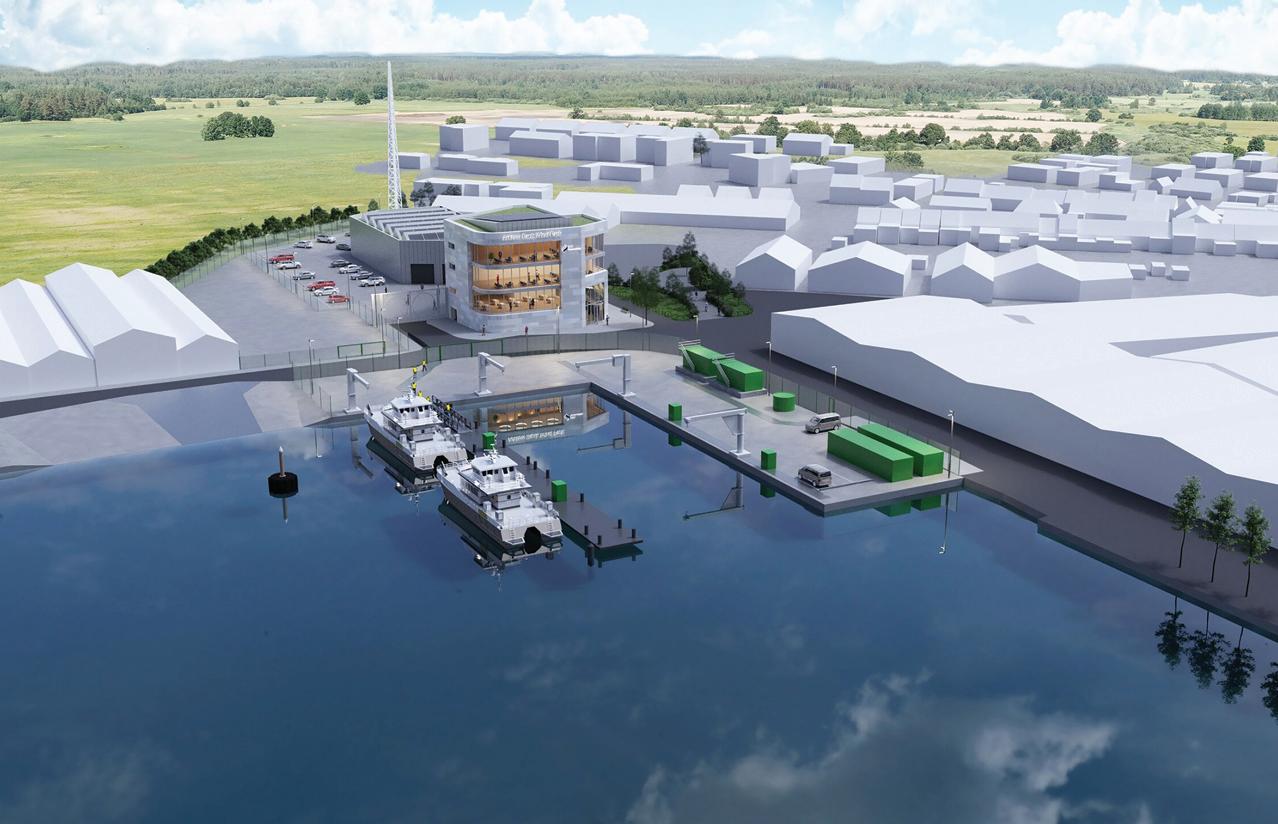
The €2.5 billion phase two project is estimated to create 80 full-time jobs once operational and to generate enough energy to power 850,000 homes per year, offsetting roughly 830 million kilogrammes of CO2 per year. The wind park will comprise up to 62 wind turbines and is expected to be operational in 2028.

81 offshore wind report
4
Codling Wind Park
Codling Wind Park
Credit: SSE Renewables
Plans for the operation and maintenance facility of Arklow Bank II.
Dublin Array
The next biggest project by expected installed capacity is the Dublin Array project, which combines both Kish Bank and Bray Bank projects, and is expected to generate between 600MW and 900MW of renewable energy. The project is being developed by RWE in partnership with Saorgus Energy and will be located roughly 10km off the south Dublin and Wicklow coasts.
It is expected that Dublin Array will comprise between 45 and 61 wind turbines upon completion and will supply enough energy to power approximately 840,000 homes at peak production rates. Individual turbine tip heights will range between 240 and 310 metres.
Oriel Windfarm
Oriel Windfarm is being jointly developed by Parkwind and ESB off the coast of County Louth. Having originally been granted a conditional foreshore lease to construct an offshore wind farm in 2010, the project was delayed due to market conditions. Parkwind became project developer in 2017 and ESB joined the project in 2019.


The Oriel project will be located between 6km and 22km from the Dundalk Bay coast and is expected to deliver up to 370MW of energy production.

82 offshore wind report
Credit: Oriel Windfarm
Saentis vessel at work in the development of Oriel Windfarm.
Credit: Oriel Windfarm
Credit: Dublin Array
North Irish Sea Array
The North Irish Sea Array is a proposed offshore wind farm located east coast off north Dublin, Meath, and Louth, that will be comprised of between 30 and 36 turbines arranged in three groups of between 10 and 12. The southernmost of these groupings will place its closest turbine approximately 12.5km from the shore; the central grouping will place its closest turbine approximately 16km from the shore; and the northernmost grouping will place its closest turbine approximately 23.5km from the shore. The project is operated by Starkraft, Europe’s largest generator of renewable energy, and is expected to deliver output in the region of 500MW annually, enough to power roughly 500,000 homes.
Starkraft estimates that the project will be completed and operational by 2026.
Sceirde Rocks
The sole project among the original batch of MAC projects located off Ireland’s west coast, the offshore wind farm at the Sceirde Rocks is projected to generate 400MW of energy, and will be located between 5km and 8km off the shore of Carna in Gaeltacht Conamara agus Árainn.
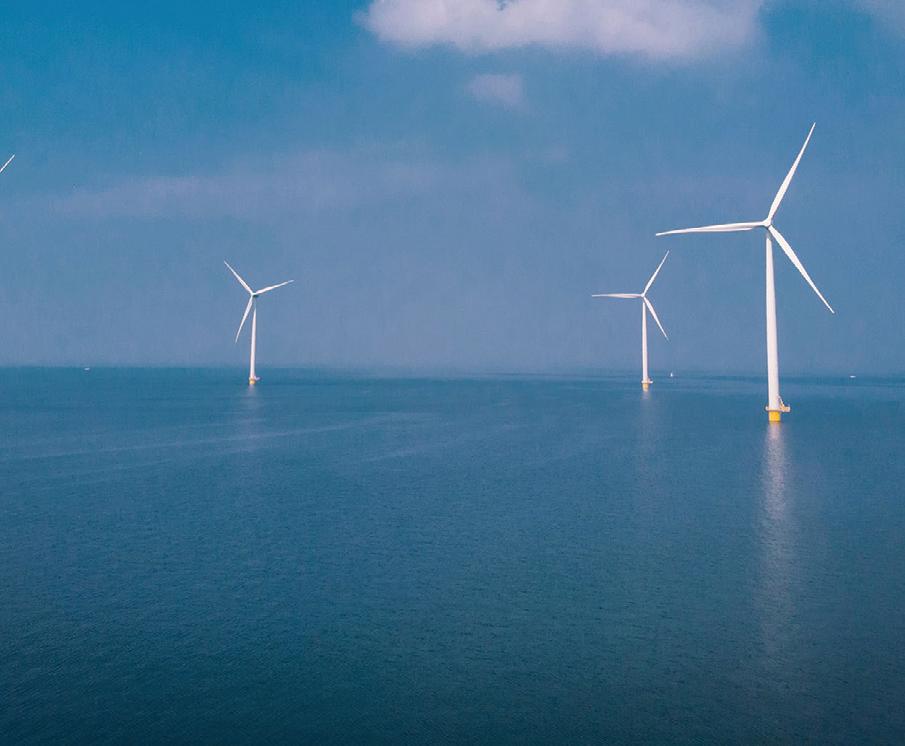

The project is managed by Fuinneamh Sceirde Teoranta, a Gaeltacht-based company from Indreabhán who were acquired by the Green Investment Group in 2021. Once operational, the project is expected to provide enough energy to power up to 295,000 homes.

83 offshore wind report
Credit: North Irish Sea Array
The Galway coast off of which the Sceirde Rocks projects will be based.
Credit: North Irish Sea Array
Keeping Ireland’s lights on when the wind does not blow
What if Ireland’s gas was carbon neutral?
With 40 per cent less CO2 emissions than coal and 22 per cent less CO2 emissions than oil, natural gas has been helping Irish homes and businesses reduce their carbon footprint since it was discovered off the coast of Kinsale in the 1970s. However, while natural gas produces significantly less emissions than coal or oil, it is still a fossil fuel. The national gas network needs to be decarbonised with renewable gases and Gas Networks Ireland is working on replacing natural gas with renewable gases, such as biomethane and hydrogen, to substantially reduce the country’s carbon emissions while complementing intermittent renewable electricity and ensuring a secure energy supply.
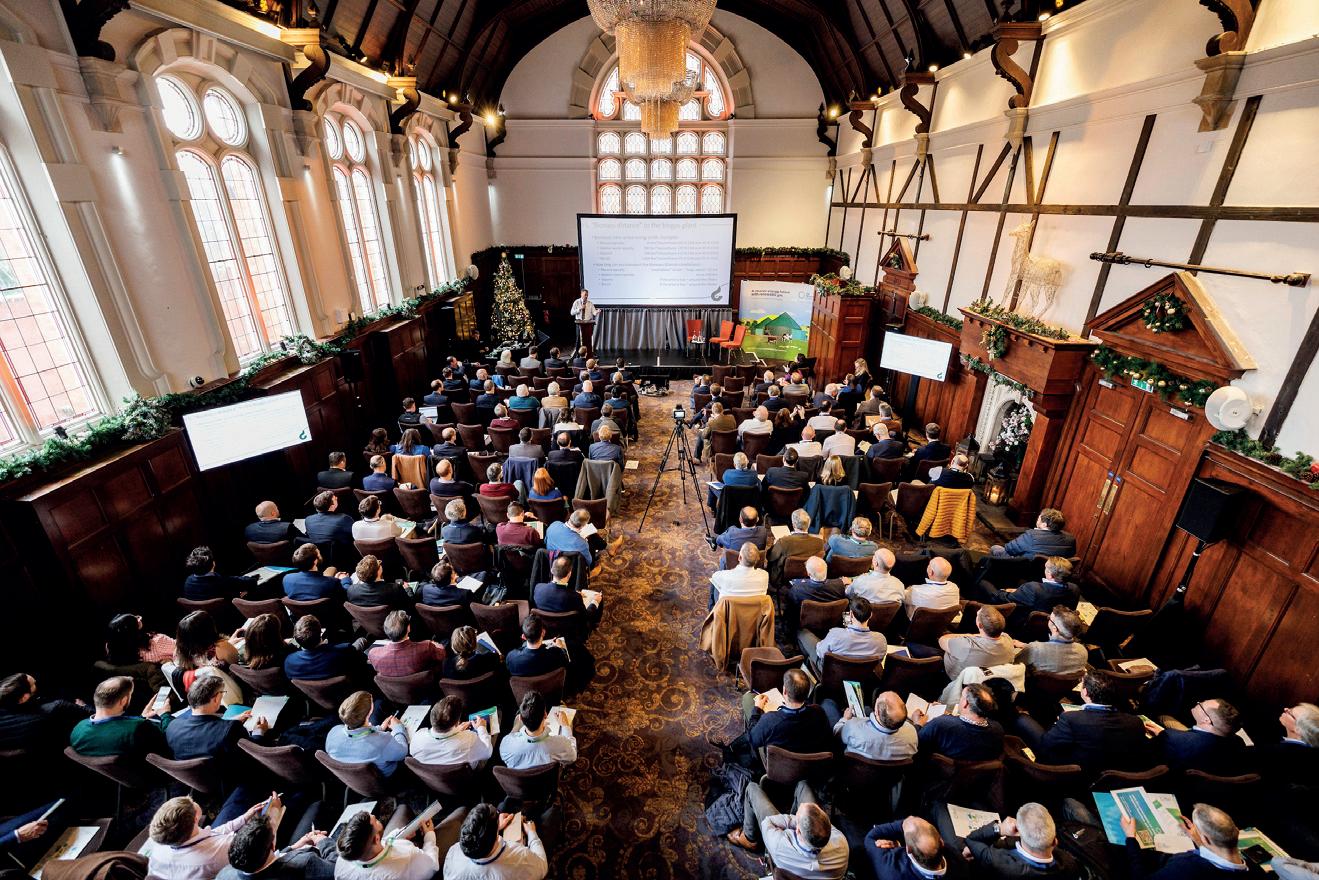
Renewable gas of the now:
Biomethane
As 2022 began in earnest, there was a silver lining to the clouds that blew in with the three storms in February, with the trio driving a record contribution from wind energy in Ireland’s electricity mix. As storms Dudley, Eunice, and Franklin hit our shores, wind generated 53 per cent of Ireland’s electricity for the month, peaking at 77 per cent and never dropping below 8 per cent – a sizeable increase on January’s 33 per cent share. October and November were also windy months which enabled wind energy to make the largest contribution to Ireland’s electricity generation at 45 per cent and peaking at over three quarters. However, as is the nature of intermittent weather dependent energy sources, there were
also times during these months when the wind supply fell away almost entirely and provided less than 1 per cent of electricity generation.
Overall, gas was the energy source that generated 48 per cent of the total electricity used in Ireland in 2022, with wind energy providing 34 per cent and coal providing 9 per cent.
Gas continues to be the ideal partner for weather dependant renewables. Being able to harness wind energy when it is available and back it up with the flexibility and reliability of gas when renewables are not available, provides a secure and complete energy system for the people of Ireland.

Structurally identical to natural gas, biomethane is a carbon neutral renewable gas that can be made from farm and food waste through a process known as anaerobic digestion. Gas Networks Ireland first introduced domestically produced biomethane onto Ireland’s gas network more than two years ago and although the quantity is currently small, but increasing, it is beginning to seamlessly replace natural gas and is fully compatible with existing appliances and technology.
There is significant scope for biomethane production in Ireland. With the European Commission identifying Ireland as having the highest potential per capita to produce biomethane, it will also play a major role in Ireland and the EU’s commitment to becoming an energyefficient, low carbon economy. An indigenous biomethane industry would not only support the decarbonisation of the agricultural sector, but it would also
For three months of 2022, wind energy was the largest energy source of electricity generation in Ireland. In the other nine months of the year, it was gas.
84 offshore wind report Advertorial
A full house at Gas Networks Ireland’s biomethane RFI event in Dublin which was held in November and attended by over 200 interested parties. 70 per cent of those polled said they are looking to fund/develop a project or purchase biomethane.
provide significant opportunities for rural communities and facilitate sustainable circular economies.
In view of the Government’s ambition of up to 5.7TWh of biomethane production in Ireland by 2030, there is a need to scale up and prepare for this renewable energy source. Gas Networks Ireland is working to ensure the country is ready for the increased biomethane connections and injection on to the grid.
Renewable gas of the future: Green hydrogen
Hydrogen is a carbon free gas that can be made from renewable electricity through a process known as electrolysis and stored until needed, making it an attractive option to decarbonise the Irish and EU energy systems and a strong example of how greater integration between Ireland’s gas and electricity networks can support a low carbon economy.
Over the last year, Gas Networks Ireland has been working with University College Dublin’s Energy Institute (UCDEI) on a research project at its network innovation centre to investigate the potential use of hydrogen in Ireland and find out if we can heat homes and cook dinners with this renewable gas. The initial part of the research concluded in late 2022 and found that householders using natural gas blended with up to 20 per cent of hydrogen will not need to make any change to their existing domestic appliances or notice any difference and even the flame motion and colour is very similar to the flame produced with 100 per cent natural gas.
The research results also outlined that significant reductions in emissions can
be achieved by blending hydrogen with natural gas; including the following average reductions for domestic gas boilers operating at maximum load conditions: a 12 per cent reduction in carbon dioxide (CO2), a 37 per cent reduction in carbon monoxide (CO) and a 40 per cent reduction in nitrogen oxides (NOx) emissions. The next phase of the research will focus on the operation of the gas distribution network with blends of natural gas and hydrogen.


With our European neighbours, Gas Networks Ireland is participating in a major project to help the European Union meet its new accelerated goals and radically increase the use of hydrogen by 2030. The European Hydrogen Backbone initiative is focussed on planning for the future development of a European hydrogen market through new panEuropean hydrogen transport infrastructure. Five large-scale hydrogen pipeline corridors are envisaged. These new corridors will initially connect domestic local hydrogen supply and demand in Europe, before expanding and connecting European regions amongst each other, and then connecting neighbouring regions with hydrogen export potential. The planned hydrogen backbone network will largely be based on repurposing existing natural gas infrastructure. It is envisaged that by 2040, for example, Ireland could be connected to the new European hydrogen backbone via a repurposed subsea pipeline to the Moffat interconnector in Scotland.
Here at home, Gas Networks Ireland is one of a number of industry players funding a new €16 million strategic partnership with Irish third level institutions that will examine how to
holistically decarbonise the overall Irish energy sector. Led by UCDEI, NexSys (Next Generation Energy System) is also supported by Science Foundation Ireland.
As part of the Government’s development of a national hydrogen strategy, Gas Networks Ireland recently made a submission outlining the central role Ireland’s gas network plays in Ireland’s future clean energy and hydrogen economies and how it is preparing the existing gas network to accept hydrogen/natural gas blends from the UK as well as preparing for the injection of green hydrogen at appropriate locations into the gas network.
Additionally, the Government’s Climate Action Plan (CAP), sets out the detailed measures to cut emissions and meet Ireland’s forthcoming targets in each sector. One of the actions is to develop renewable gas in the gas grid. As part of this Gas Networks Ireland has submitted a technical and safety feasibility study of injecting green hydrogen blends into Ireland’s gas network. In line with other UK and European studies, this assessment has concluded that utilising the existing gas network to transport up to a 20 per cent hydrogen blend is safe and feasible.
Beyond this horizon, Gas Networks Ireland looks forward to partnering with a variety of energy organisations to fully convert the network to renewable gases and deliver the fully integrated energy system of the future.
www.gasnetworks.ie
85 offshore wind report Advertorial
Can you spot the difference between the two photos? The photo of the left is of 100 per cent natural gas cooker flames. The photo on the right is of cooker flames with a blend of 20 per cent hydrogen with 80 per cent natural gas.
Marine area protection legislation published
The Marine Protected Areas Bill, of which the general scheme was agreed by government in December 2022, will triple the previous target for the area of Irish waters and seafloor allocated for conservation, with a 30 per cent by 2030 target outlined. If achieved, the 30 per cent of maritime area target would represent the conservation of an area twice the size of the State’s landmass. The previous target, 10 per cent, is now said to be “on track” for mid-2023. The Bill, published in time for the UN’s Biodiversity Conference COP15, aims to engineer a step change in Irish marine protection, which stood at just 2.3 per cent of the overall area in 2020, and stood at 8.3 per cent as of December 2022.

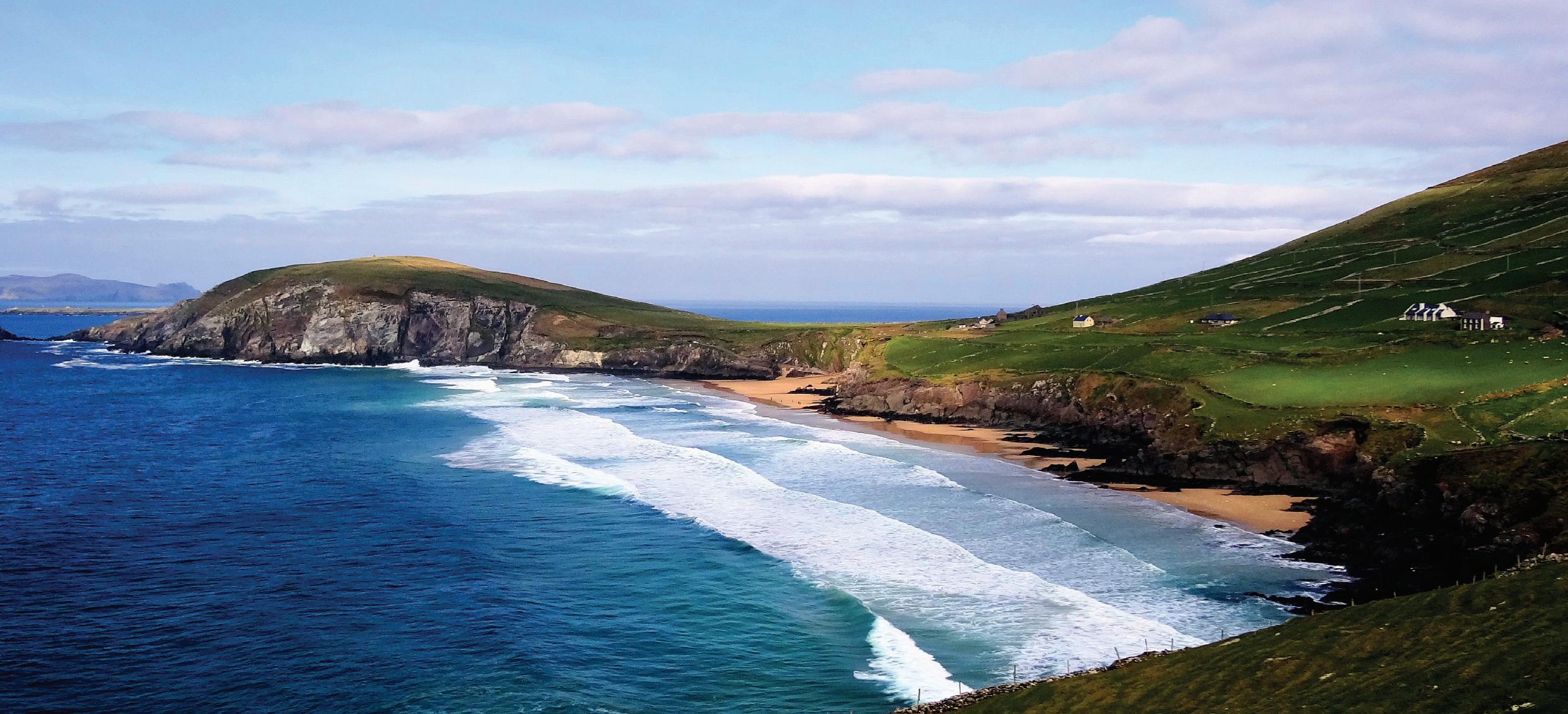
The Bill has been “designed to deliver a modern framework for designating and effectively managing protected areas in our seas and ocean, one that can help to address the current biodiversity and climate crises”. A comprehensive expert group report on marine protected areas was published in 2021, which considered stakeholder and public participation and consultation. The scientific, technical, and participatory approaches set out in the Bill are “intended to ensure that practical and effective area-based conservation action and management measures will be taken to protect our highly valued marine biodiversity and other ecosystem features”.
The reforms and protections outlined within the Bill will see Ireland fall in line with the biodiversity protection
regime implemented by the European Union under the Marine Strategy Framework Directive, which is the first EU legislation related to the protection of marine biodiversity sets out a vision for the EU’s marine protection to be “one of the most comprehensive and ambitious [protection schemes] worldwide”. Two Special Areas of Conservation have also been designated under the EU Habitats Directive off the north-west and south coasts, totaling three million hectares. Both areas were selected due to their deepwater reef habitats that support wide ranges of marine species.
It has been reported that one challenge during formulation of the Bill was determining how marine protected areas might affect the development of Ireland’s offshore wind industry, with significant development to take place between now and 2030 as the Government strives to achieve its 7GW target. However, both Minister of State for Heritage Malcolm Noonan TD and Minister of Housing, Local Government and Heritage Darragh O’Brien TD have stated that marine protected areas would in fact support the development. “This milestone in bringing marine protected areas legislation forward supports the achievement of this government’s ambitions for the protection of our precious marine environment, while ensuring the sustainable use of its resources including supporting Ireland’s offshore renewable energy ambitions,” O’Brien stated.
Under the general scheme of the Marine Protected Areas Bill, 30 per cent of Ireland’s maritime area will be protected which will impact upon the development of offshore wind industry and help the State to comply with European guidelines.
86 offshore wind report
Scope for offshore wind expansion in the North
The North’s Department for the Economy (DfE) and The Crown Estate have announced a statement of intent to establish offshore wind leasing off the north coast.

The announcement, made on 16 January 2023, seeks to build on the Northern Ireland Energy Strategy, which establishes a commitment to diversify renewable energy generation beyond the current mix, with an initial focus on offshore wind and marine renewables.

The North’s Climate Change Act 2022 establishes a target of meeting at least 80 per cent of electricity consumption from renewables by 2030. Latest figures to September 2022 show a 49.3 per cent rate, the majority of which is derived from onshore wind.
Currently over 80 per cent of all renewable electricity in the North is generated from onshore wind, but the Energy Strategy Action Plan, published on 16 January 2022, includes Action 14 to “develop an action plan to deliver 1GW of offshore wind from 2030”.
The progression of offshore wind infrastructure in the North has been hampered in the past by the fact that the territorial waters are operated under the
auspices of The Crown Estate, creating a stringent leasing process.
In 2011, the UK Government and Irish Government signed a memorandum of understanding which clarified the marine jurisdiction of both states in waters around the North. The Crown Estate, which owns and manages the UK seabed, subsequently announced two leasing rounds for offshore wind and tidal stream in the North’s waters.
However, no projects came to fruition. In 2019, a DfE report stated that the northern coastline was not suitable for offshore wind farm development due to likely objections, leading to the North being excluded from the 2019 leasing round by The Crown Estate.
Following the release of the Energy Strategy Action Plan, Peter Russell, Director of Electricity and Security of Supply at DfE said: “Our ambition of delivering 1GW of offshore wind energy is Northern Ireland’s most ambitious energy infrastructure plan, with the potential to
supply enough energy to power one million homes.
“The statement of intent is a milestone for the Department for the Economy and The Crown Estate towards unlocking the potential of the Northern Ireland seabed and achieving the energy strategy vision of self-sufficiency in affordable renewable energy.”
Gus Jaspert, Managing Director of Marine at The Crown Estate said: “We are highly committed to working in partnership to sustainably manage the seabed and the natural environment for its many users, and to unlocking its potential to support the transition to a net zero energy future. This statement of intent mars an important step forwards, laying the groundwork for building the right conditions for offshore wind leasing and realising the potential benefits for offshore wind leasing and realising the potential benefits for the people of Northern Ireland – a local economic investment, lowcarbon electricity, and a more sustainable and secure long-term energy supply.”
87 offshore wind report
M&A activity in offshore wind expected in the years to come

Ireland has experienced high levels of M&A activity in the renewable energy sector over the last five years which has largely been dominated by onshore wind and solar PV transactions as investors and developers develop, buy, and sell the assets required to achieve Ireland’s renewable electricity targets set out in the Climate Action Plan.
Traditionally, offshore wind assets experienced very little M&A activity due to the nascent stage of the sector. However, recent positive steps by the Government to help stimulate development activity in the sector, including the introduction of the Maritime Area Consent (MAC) process, has led to an increase in M&A activity in 2022, and is a trend which we expect will continue in the years ahead as the offshore wind sector consolidates around a few key developer partnerships.

Offshore wind landscape
The offshore wind landscape is largely focused on two categories of projects: ‘relevant projects’ and Phase 2 projects.
In 2022, the Government announced seven offshore wind projects that would qualify as ‘relevant projects’, meaning these projects would be entitled to receive a ‘planning interest’ under the new Maritime Planning and Development Management Bill, when enacted. This is essentially a fast track through planning which is a key development milestone in the offshore wind sector. These projects were selected based on the length of time their developers have been pursuing them and the amount of work invested in them to bring them to a substantially advanced stage.
Prior to 2022, M&A activity has been

Ireland is positioned as one of the most interesting jurisdictions to watch, from an offshore wind mergers and acquisitions (M&A) perspective, for the years ahead.
88 offshore wind report Advertorial
largely focused on the ‘relevant projects’ including; EDF acquiring 50 per cent in Codling Bank project from Hazel Shore and ESB acquiring a stake in Oriel Wind Farm from Parkwind.
In 2022 we saw a new wave of M&A activity predominantly focused on Phase 2 projects, primarily driven by the introduction of the new MAC process. We expect this to be a trend that will continue throughout 2023.
Maritime Area Consent
A MAC is the right to exclusive use of a maritime area and is a pre-requisite for seeking development planning permission. In early 2022, the Government published a set of two key criteria for projects to receive a MAC; a financial capability assessment and technical capability assessment.
This resulted in a flurry of M&A activity in 2022, as Phase 2 developers took the view that Phase 2 projects would likely be assessed on similar criteria. Whilst many developers would meet the financial capability criteria, the vast majority would struggle to meet the technical criteria. The technical criteria required developers to have experience in developing, constructing and operating offshore wind projects, among other criteria.
Many Phase 2 developers determined that identifying a joint venture partner that has a strong balance sheet and international offshore track record would be important in increasing their chances of securing a MAC. An example of codevelopment partnerships announced in 2022 included Bord na Móna partnering with Ocean Winds, and Statkraft partnering with Copenhagen Infrastructure Partners which was to develop 2.2GW of offshore wind in Ireland including the ‘relevant project’ North Ireland Sea Array or NISA.
There have been some examples of international players entering into joint ventures in Ireland and subsequently quickly exiting the market. This has resulted in Phase 2 developers focusing on selecting a partner that not only meets the MAC criteria, but also a partner than can demonstrate long-term commitment to the Irish market. Additionally, a differentiating factor between partners is the ability for to offer other strategic advantages, such as differentiated options on route to market and expertise in alternative technologies such as hydrogen.
The first subsidy auction for offshore wind (ORESS) is expected later this
year. Developers and investors are eagerly anticipating the Government announcement for the Phase 2 MAC criteria and process which is expected to be announced in 2023. This should give comfort to developers and international investors that Ireland is committed to the offshore wind sector.

Offshore wind M&A outlook

The United Kingdom market is a useful indicator of what the next decade holds for Ireland’s offshore wind sector from an M&A perspective. Almost all projects in the UK in mid to late-stage development now have multiple shareholders. This provides respective shareholders with the opportunity to derisk from a capital perspective given the significant requirements involved in the development and construction of projects, as well as providing the benefit of shared expertise.
The Irish market will likely follow a similar pattern. Post the MAC milestone, a number of parties may look to merge neighbouring sites or swap assets
across different areas of the coast to increase the likelihood of delivering some successful projects. As the ‘relevant projects’ continue to progress, they may also bring in additional partners as capital requirements increase, as well as divesting part of their shareholding where they see opportunities to realise value at key development milestones. It positions Ireland as one of the most interesting jurisdictions to watch from an offshore wind M&A perspective in the years to come.
For further information please contact:
Russell Smyth
Partner, KPMG Corporate Finance
E:
russell.smyth@kpmg.ie
James Delahunt Partner, KPMG Corporate Finance
E: james.delahunt@kpmg.ie
89 offshore wind report Advertorial
"Whilst many developers would meet the financial capability criteria, the vast majority would struggle to meet the technical criteria."
This must be the year of delivery
The signs of progress are unmistakeable. In December 2022, Minister Eamon Ryan TD gave industry a big boost when he confirmed the first set of Maritime Area Consents for new offshore wind projects.
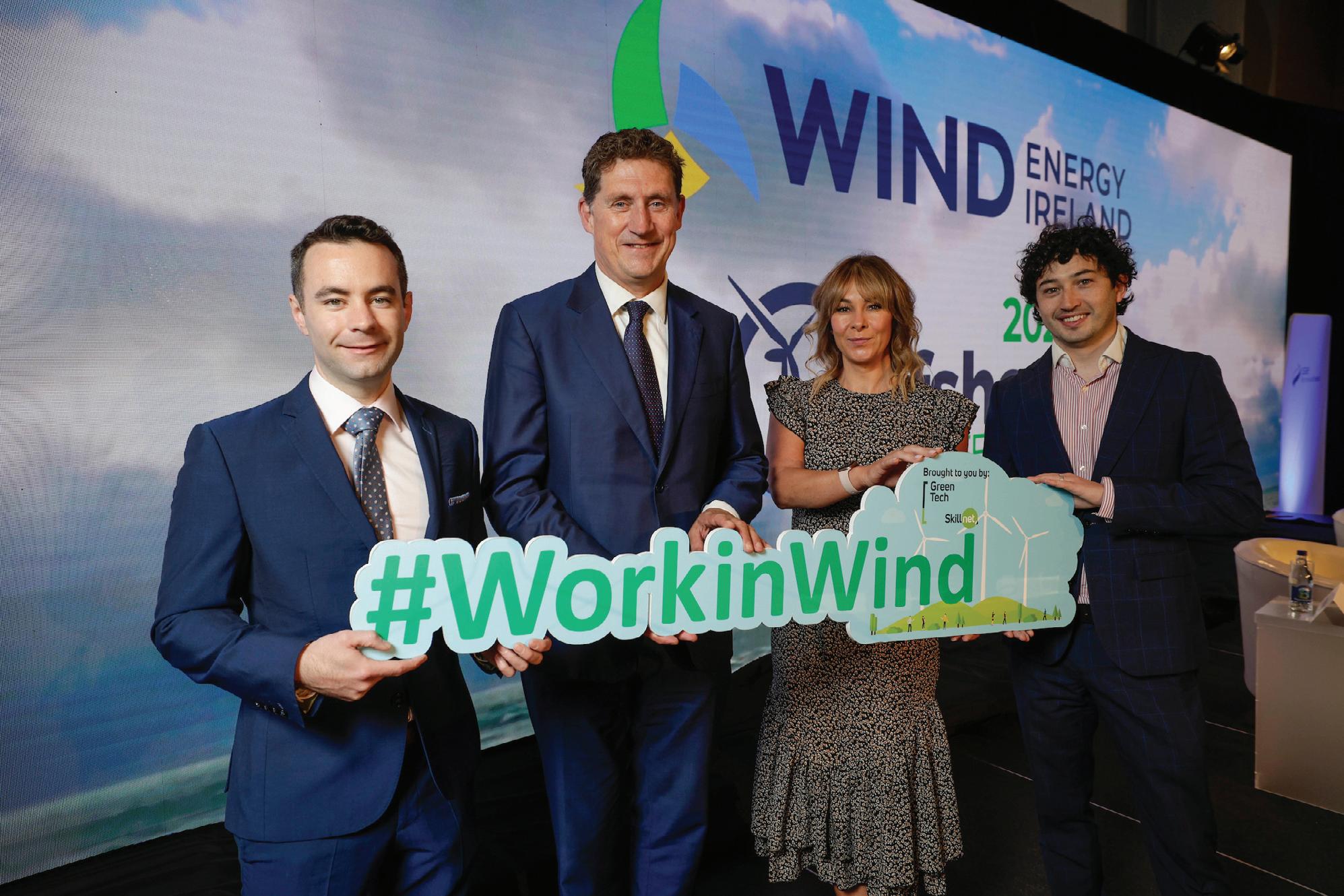
This clears the way for these projects –Oriel, North Irish Sea Array, Dublin Array, Codling Wind Park, Arklow Bank and Sceirde Rocks – to start initial conversations with An Bord Pleanála before submitting planning applications later this year.
The consents followed the publication of the terms and conditions for the first Offshore Renewable Electricity Support Scheme auction, which will open in April, and included welcome changes such as 20-year contracts and partial indexation.
We are also seeing progress in addressing some of the key industry concerns around the need to develop the electricity grid. EirGrid has already started to put in planning applications for
new grid reinforcements, with many more due in 2023, while working to update Shaping Our Electricity Future to reflect the Government’s increasing ambition for offshore renewables.
I was proud to attend the launch of ESB Networks’ exciting new strategy and hear its commitment to invest €1 billion annually for the next decade to support the energy transition. We still do not have the port infrastructure we need but ports like Rosslare, Shannon-Foynes, and Cork Dockyard are bringing serious proposals forward and the Department of Transport is getting more and more engaged.
Pulling all of this together is the Government’s new Offshore Wind Delivery Taskforce which is coordinating the work of various departments and state agencies across planning, market design, supply-chain and skills development.
New companies, like Copenhagen Infrastructure. Partners, which recently announced its partnership with Statkraft, are coming into the Irish market and our members are hiring more and more of the people we need to deliver the targets set out in the Climate Action Plan. There must be no doubt. Those targets are achievable. We have the pipeline of projects to deliver the targets and even to go beyond them. We have the investment and the determination.
Outstanding challenges
What we need most of all is to build on the momentum we are now starting to see and tackle some of the key outstanding challenges.
Achieving our targets and cutting our carbon emissions in line with the law requires nothing less than a national mobilisation of people and resources not seen since Thomas McLaughlin
Ireland’s offshore wind energy revolution is starting to feel a lot more real. Nearly two decades after we built what was then one of the biggest offshore wind farms in the world, it looks like this will be a decisive year for offshore renewable energy, writes Wind Energy Ireland CEO Noel Cunniffe.
Wind Energy Ireland CEO Noel Cunniffe, Minister Eamon Ryan TD, Johanna Caffery of Wind Energy Ireland and Mark Ruane of Green Tech Skillnet at the launch of the #WorkInWind campaign which looks to encourage people to work in Ireland’s offshore wind energy industry.
90 offshore wind report Advertorial
proposed in 1923 that an impoverished island emerging from four years of war should build the largest hydro-electric dam the world had ever seen.
While EirGrid and ESB Networks have clearly upped their game and are starting to deliver our planning system remains completely unfit for purpose. An Bord Pleanála is desperately underresourced, and it lacks the necessary skills and expertise to deal with offshore renewable energy. Onshore projects are already spending more than a year in the planning system and then, if and when they secure permission, they are vulnerable to a court challenge.
On more than one occasion last year, when a judicial review was allowed of a grant of planning permission for a wind farm, An Bord Pleanála could not even defend their own decisions. The Government’s plans to reform the planning system, to try and speed up the process, are welcome and we will study the proposals with great interest, but they are only a part of the solution.
An Bord Pleanála needs a massive investment of funding and personnel. It does not matter what legislative reforms are introduced if there are not enough inspectors, marine ecologists, and planners, backed up by a top inhouse legal team, ready to implement them.
Investment needed
We need to see the same kind of investment in other existing state agencies like the National Parks and Wildlife Service and the resources put in place in the new Maritime Area Regulatory Authority (MARA).
It is still unclear when MARA will be able to accept applications from the next batch of offshore wind projects for their Maritime Area Consents. Every day of delay here makes our 2030 targets more difficult to achieve.
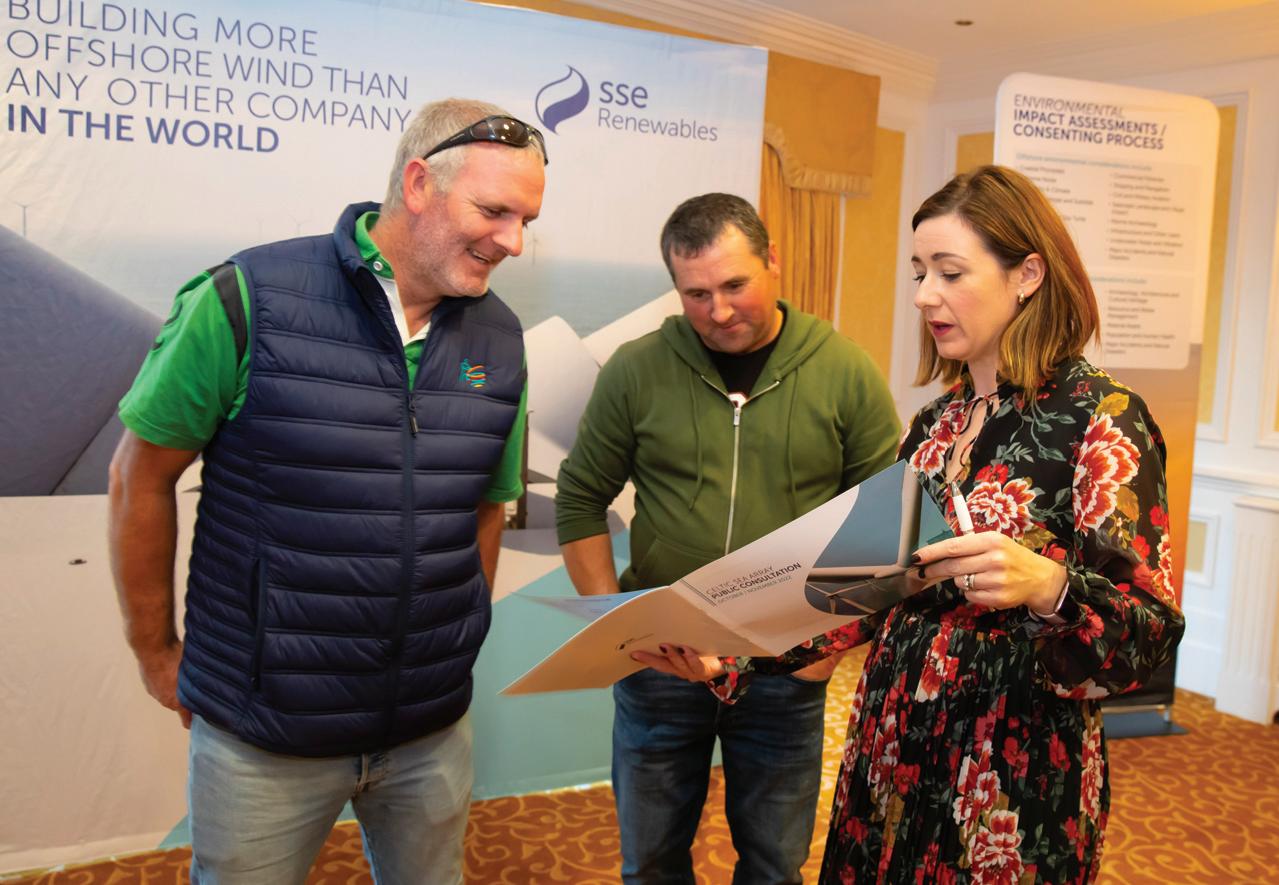
As we strengthen our planning system, we need to see a similar level of focus on resourcing for the CRU to ensure it is delivering on its responsibilities. Right now, in the offshore wind industry there is still an unacceptable level of uncertainty on exactly how new wind farms will be able to connect to the electricity grid.
EirGrid’s essential work on system services, supporting the integration of renewable energy onto the system, is stalled as they wait for the CRU to put
the resources in place, while our members are struggling with a completely unworkable decision on articles 12 and 13 of the Clean Energy Package which needs to be urgently revisited.
The new Climate Action Plan sets a target of 7GW of offshore wind energy by the end of 2030 with 2GW set aside for the production of green hydrogen. We are heading in the right direction; the policies and structures are beginning to fall into place, but the whole system is
desperately under-resourced, and we are still moving too slowly. This year must be the one where the development of offshore renewable energy is accelerated.
This is the year for delivery.
T: 045 899 341
E: office@windenergyireland.com
W: www.windenergyireland.com
 SSE Renewables’ Deborah Coleman answering questions in Dungarvan about its Celtic Sea Array project.
SSE Renewables’ Deborah Coleman answering questions in Dungarvan about its Celtic Sea Array project.
91 offshore wind report Advertorial
“An Bord Pleanála needs a massive investment of funding and personnel. It does not matter what legislative reforms are introduced if there are not enough inspectors, marine ecologists, and planners, backed up by a top inhouse legal team, ready to implement them.”
Mapping Ireland’s territorial waters
The Integrated Mapping for the Sustainable Development of Ireland’s Marine Resources (INFOMAR) programme is a joint venture between the Marine Institute (MI) and Geological Survey of Ireland (GSI) and is funded through the Department of the Environment, Climate and Communications.
The programme, which is a successor to the Irish National Seabed Survey (INSS), is currently around two-thirds through its second phase, with the latest report having been published in 2021. The INFOMAR programme concentrates on creating integrated mapping products of the physical, chemical, and biological features of the seabed in the near-shore area.

INFOMAR’s goal is to build on the work carried out under the aegis of the INSS, which involved mapping of more than 80 per cent of Ireland’s seabed territory, supporting the delineation of the exclusive economic

zone, and extending inshore coverage to the 200m depth contour overall, with extension into 50m depth offshore of counties Donegal and Kerry.
It has three objectives: data acquisition, management, and interpretation; data exchange and integration; and value-added exploration.
On data acquisition, management, and interpretation, the programme’s targets outlined in 2018 for the GSI and MI survey target areas of 9,340km2. However, only 7,949km2 of this target was met. This means that almost 31 per cent of the set coverage targets were not delivered in 2021, the latest year of reporting. As a result, the subsequent target for coverage in 2022 was revised down to 8,857km2
Data exchange and integration is a key ambition for the INFOMAR programme, given the collaborative
basis under which the project is taking place. The 2021 report details that of the area surveyed within a 200m contour. Approximately 70 per cent of the area surveyed within the 200m contour was successfully classified, leaving a classification gap of 30 per cent.
The third programme objective is delivering a range of value-added opportunities linked to user demands, commercial markets, and external funding sources. Central to this will be the finalisation of the EMFF SeaRover Synthesis project and publication of the Synthesis Report to promote data dissemination amongst relevant stakeholders.
The SeaRover project is a crossgovernment initiative on geogenic reef mapping, co-funded by European Maritime Fisheries Fund and National Parks and Wildlife Service, supported by INFOMAR (GSI and MI) and NPWS.
Ireland’s vast potential for offshore wind development, with the subsequent development of renewable gas, is dependent upon the scoping and mapping out of Ireland’s territorial waters, an area which is more than 10 times greater in size than its land mass.
92 offshore wind report
Credit: INFOMAR
In profile: The Offshore Wind Delivery Taskforce
• identify all aspects of critical work and ensuring maximum efficiency (avoiding duplication and establishing the potential for cooperation);
• identify opportunities to accelerate delivery in the medium term;
• maximise the economic potential of a newly established offshore win industry;
• ensure consistent messaging on offshore wind energy development and its benefits in Ireland;

• align the development of offshore wind energy with efforts to enhance marine biodiversity through the designation of Marine Protected Areas; and
• produce a long-term strategy to achieve at least 30GW of installed floating offshore wind capacity after 2030.
Established by Minister Eamon Ryan TD and chaired by Matt Collins, Assistant Secretary – Energy, Department of the Environment, Climate and Communications (DECC), Offshore Wind Delivery Taskforce’s ongoing work streams include marine planning and consenting, grid development, ORESS, and ports policy.
As a cross-departmental body, the taskforce’s membership comprising senior officials from the following government departments and state agencies (though other stakeholders may attend as required):
• Department of Housing, Local Government and Heritage;
• Department of Transport;
• Department of Enterprise, Trade and Employment;
• Enterprise Ireland;
• Department of Further and Higher Education, Research, Innovation and Science;
• Department of Public Expenditure, NDP Delivery and Reform;
• Department of Rural and Community Development;
• Commission for Regulation of Utilities; and
• EirGrid.
Meeting approximately every six weeks, the Offshore Wind Delivery Taskforce is tasked with driving a joined-up approach to the development and implementation of the delivery plan for the State’s 2030 offshore wind targets. It is intended to accelerate delivery as well as capture the long-term economic opportunities associated with the development of offshore renewable energy.
To achieve this, the Offshore Wind Delivery Taskforce is required to:
• develop a project plan that collates the ongoing workstreams across all departments and agencies;
With a remit stretching to the end of 2023 (or sooner should its work be completed), DECC is tasked with organising the taskforce’s meetings, drafting notes of the meetings, and circulating material in advance. At the same time, DECC is also providing the taskforce with support services, including project management expertise. Indeed, the department has sought consultancy services to assist in the application, enhancement and broadening of DECC’s Strategic Delivery Framework.
The successful tender is assisting DECC and the taskforce to establish a “consolidated Offshore Wind Project Plan” across departments and agencies, establish a programme management function to determine “activities on the critical path”, and oversee delivery.
Through DECC’s internal governance and oversight structures, the Offshore Wind Delivery Taskforce will support the department’s reporting to the Climate Action Delivery Board and Minister Ryan’s reporting to the Cabinet Committee on Environment and Climate Action.
93 offshore wind report
To ensure that Ireland’s target of 7GW of installed offshore wind capacity is met by 2030, the Offshore Wind Delivery Taskforce has been tasked with establishing a coherent whole-ofgovernment plan, incorporating adequate structures, governance, project management and delivery supports.
ESB stands ready to deliver renewable offshore wind energy for Ireland
The Irish Government, in the Programme for Government (2020), committed to developing a plan setting out how Ireland will take advantage of the massive potential of offshore energy. The Government target in the Climate Action Plan 2023, is to achieve 7GW (7,000MW) capacity of installed offshore wind by 2030.



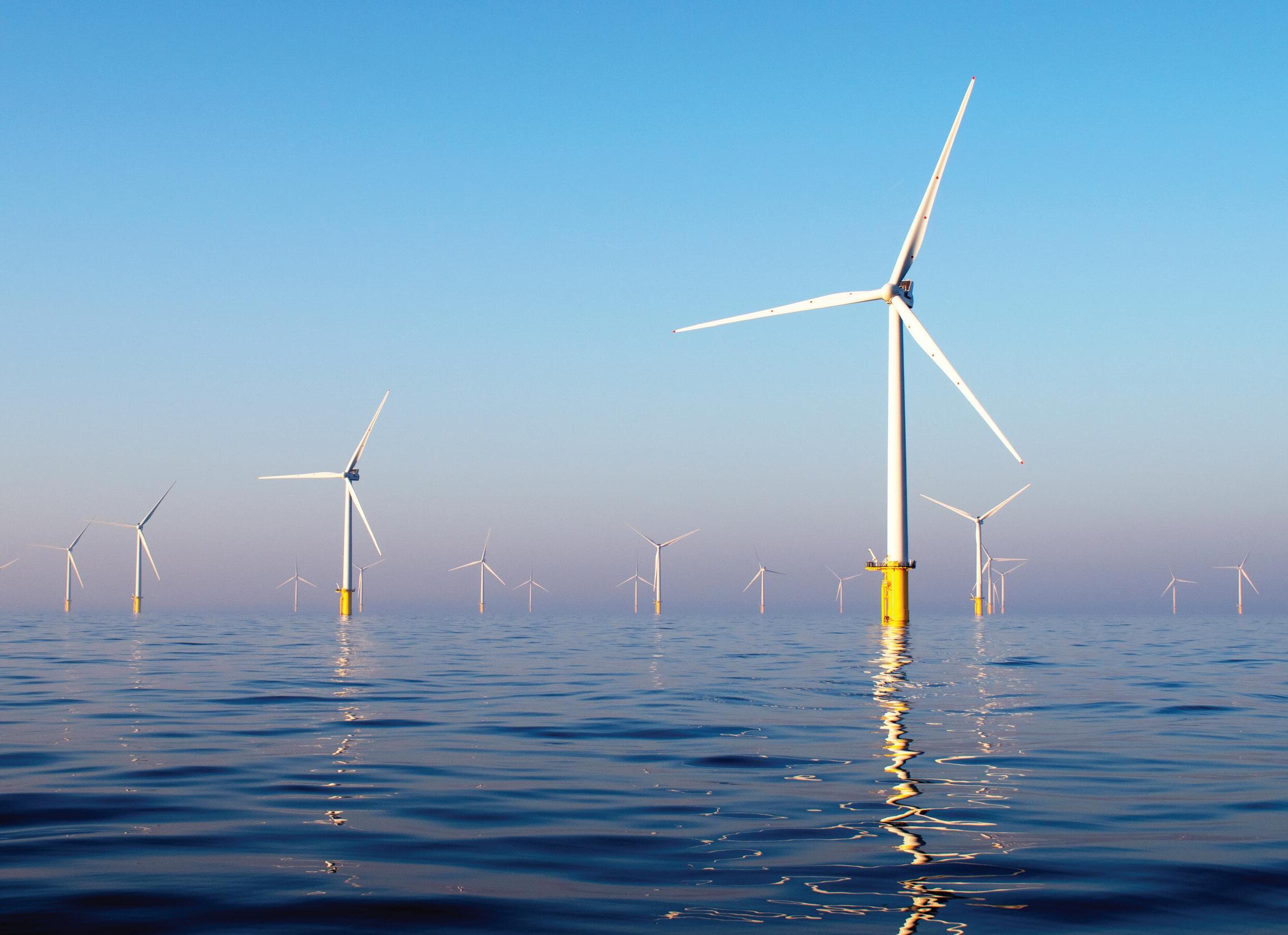
As we know, Ireland’s geographic position is particularly good for generating electricity from wind. Power from onshore wind farms currently provides over one-third of Ireland’s electricity needs. Indeed the “real” map of Ireland shows that Ireland has jurisdiction over a marine area that is many times the size of our landmass yet there is just one offshore wind farm on the east coast (the Arklow Bank, 25MW). Otherwise, Irish offshore wind
energy is a totally untapped resource. There are a number of countries in Europe that have far shorter coastlines, that have already developed significant offshore wind electricity generation (e.g., while the Irish coastline stretches to 3,000km, Belgium with a coastline of 63km, has developed more than 2GW of offshore wind). Our nearest neighbour, the UK has already developed over 10GW of offshore wind electricity generation.
The purpose of this article is to inform about ESB’s plans and share our perspectives on the development of Offshore Wind in Ireland. As outlined here, ESB has and will continue to play a leading role in Ireland’s transition to a low-carbon energy future, powered by clean electricity. We have developed almost 1GW of clean renewable energy
both at home and abroad and we have ambitious plans to build on this over the coming years.
Paddy Hayes, Chief Executive of ESB puts it this way: “Our strategy, Driven to Make a Difference: Net Zero by 2040, calls out the importance of developing and connecting more renewable generation. We aim to play a positive role in developing Ireland’s offshore wind for the benefit of the people of Ireland, with care for the marine environment and in consultation with marine users and local communities.”
First some background facts:
• The Climate Action and Low Carbon Development Act 2021 commits Ireland to achieving a carbon neutral economy by no later than the end of 2050.
• The Climate Action Act 2021 also commits Ireland to a net 51 per cent carbon reduction 2021-2030, relative to a 2018 baseline. Ireland also supports the EU target of a 55 per cent reduction in carbon emissions by 2030 compared to 1990 levels.
• Ireland’s electricity will be powered by 80 per cent renewables by 2030
94 offshore wind report Advertorial
Offshore wind generated energy will play a major role globally in mankind’s fight against climate change and our transition to a zero-carbon economy.
(from 40 per cent national target in 2020).
• 7GW of offshore wind will be operational by 2030 (only one 25MW wind farm currently).

• Offshore wind farms in Ireland on the east coast can achieve capacity factors of approx. 45 per cent (depending on the technology employed), meaning that a 1GW wind farm will generate approximately 4TWh (4,000,000MWh) per year and on the west coast they will have capacity factors of approximately 50 per cent.
• There is potential to develop between 9.2GW and 12GW from fixed wind and at least 27GW from floating wind in the Irish marine area, within 100km of Ireland’s coast.
• The EU target is 300GW of installed offshore wind capacity by 2050. By 2030, the EU strategy aims for 60GW of offshore wind installed in the waters off the coastal member states.

• Based on current plans, over 60 per cent of the electricity produced by ESB’s power generation portfolio will be from renewable or zero-carbon sources by 2030. We will also invest in assets that support a high level of renewables on the system such as energy storage, flexible generation, synchronous condensers, and power-to-gas. Furthermore, ESB has announced as a key element of its strategy, a drive to achieve netzero for its operations by 2040 and to put in place the infrastructure and services to enable customers to do likewise.
ESB is developing the Oriel Windfarm project and the nearby Clogherhead project off the coast of County Louth with Parkwind NV, a Belgian-based offshore wind farm developer. Oriel is a government designated 'relevant project' which means that it is in the first batch of projects with a right to be processed for a Maritime Area Consent (MAC) and therefore likely to compete in Ireland's first ORESS auction, planned for the first half of 2023. ESB is also progressing plans for seven different offshore wind farms in Irish waters all around the coast, including floating offshore wind farms off the south and west coasts and will shortly be announcing a new joint venture partner for these projects.
The UK offshore wind industry is the most developed in the world and ESB has invested significantly, working with a variety of partners, on four major projects totalling over 2GW, to further develop our involvement and expertise.
In Ireland, while the industry focus now is rightly on fixed-bottom turbines on the east coast, new floating offshore wind technology that can be situated in much deeper waters will be key to realising Ireland’s full offshore wind potential. ESB has ambitious plans to develop floating offshore wind for Ireland. Most notable is our Green Atlantic @ Moneypoint project, a visionary project of scale.
The Irish Government, in its Programme for Government 2020, has committed to producing a longer-term plan setting out how, as a country, we will take advantage of the massive potential of offshore energy on the Atlantic coast. This plan will set out how Ireland can become a major contributor to a pan-European renewable energy generation and transmission system, including the development of green hydrogen infrastructure (where at times of excess wind energy availability, electrical energy can be converted and stored as hydrogen via electrolysis), taking advantage of a potential of at least 30GW of offshore floating wind power in our deeper waters in the Atlantic. ESB stands ready to play a full role in making that vision a reality.
ESB believes that it has a unique responsibility by virtue of its heritage and values to support government policy to fight climate change by leading the low
carbon transition in Ireland. We commit to playing a strong role in developing Ireland’s offshore wind for the benefit of the Irish people and with due care for the environment. ESB commits to proactively engaging with the public and particularly communities affected by ESB's offshore developments. We will do this in at least five ways:
(1) ESB will share all relevant information about ESB offshore projects in a comprehensive and timely fashion. ESB will listen to community concerns and will work in partnership with the communities to resolve any issues that might arise.
(2) ESB supports the concept of a fair transition where all members of society benefit and will support government initiatives in this area.
(3) ESB will contribute to community funds for offshore wind developments as it has done for onshore wind developments so that local communities benefit directly from the projects.
(4) ESB will show due respect for our Irish marine environment at all times and will work to the highest environmental and ethical standards only.
(5) ESB is supportive of formal coordinated dialogue with the fishing industry and other marine users.
 E: deaglan.odonaill@esb.ie W: www.esb.ie
E: deaglan.odonaill@esb.ie W: www.esb.ie
95 offshore wind report Advertorial
“Based on current plans, over 60 per cent of the electricity produced by ESB’s power generation portfolio will be from renewable or zero-carbon sources by 2030.”
The Irish Renewable Energy Summit 2023







The Irish Renewable Energy Summit recently took place on Thursday 9th February 2023 in Croke Park, Dublin. This conference brought together all the key stakeholders from across the energy sector, and those who interact with the energy sector and discussed how the contribution from renewable energy can be maximised and implemented most effectively.

The 250 delegates in attendance heard from speakers, both visiting and local, from organisations including the Department of the Environment, Climate and Communications; the European Commission; SEAI; Bord na Móna; SSE Renewables; CRU; ISIF; PwC; Gas Networks Ireland; University College London and Ocean Energy Europe. To keep up to date with next year’s event please email info@energyireland.ie.

96
Ross Moore, A&L Goodbody; John Reilly, Bord na Móna; Margie McCarthy, Sustainable Energy Authority of Ireland; Ciarán Galway, eolas Magazine; Maria Ryan, SSE Renewables and Tom Howes, European Commission.
Tom Howes, European Commission addresses delegates.
Brendan Cooney, Wexford County Council asks the panel a question.
Karen Keeley, PwC and Noelle Ameijenda, EirGrid.
John Reilly, Bord na Móna; Marie Sheehan, Gas Networks Ireland; Padraig Fleming; Gas Networks Ireland and Paul O'Donoghue, Gas Networks Ireland.
Daniel Dilworth, Accenture and Jason Paterson, Net Zero Technology Centre.
96 conference report
Delegates visit the SKE Engineering stand.
Road safety report


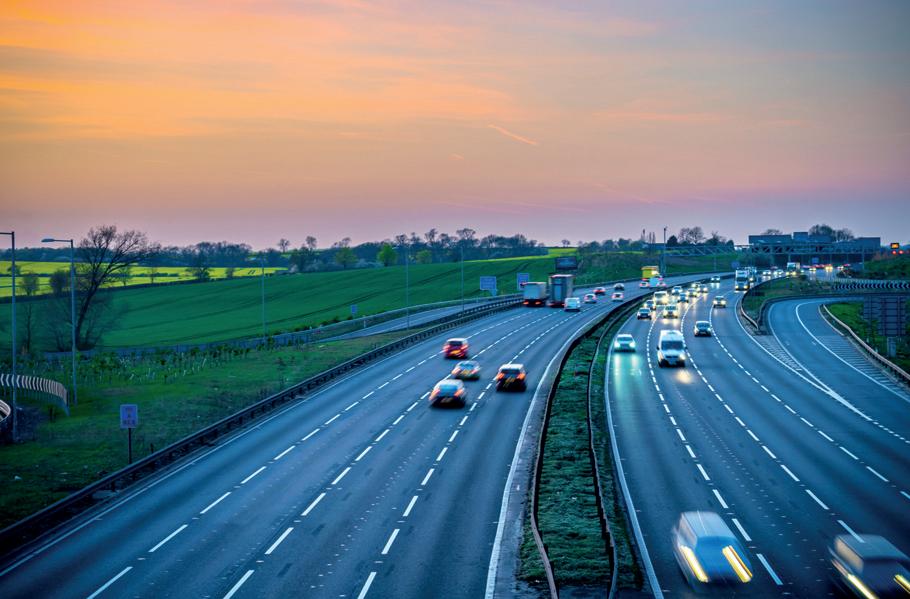


Sponsored by



Minister of State Jack Chambers TD: Securing road safety progress
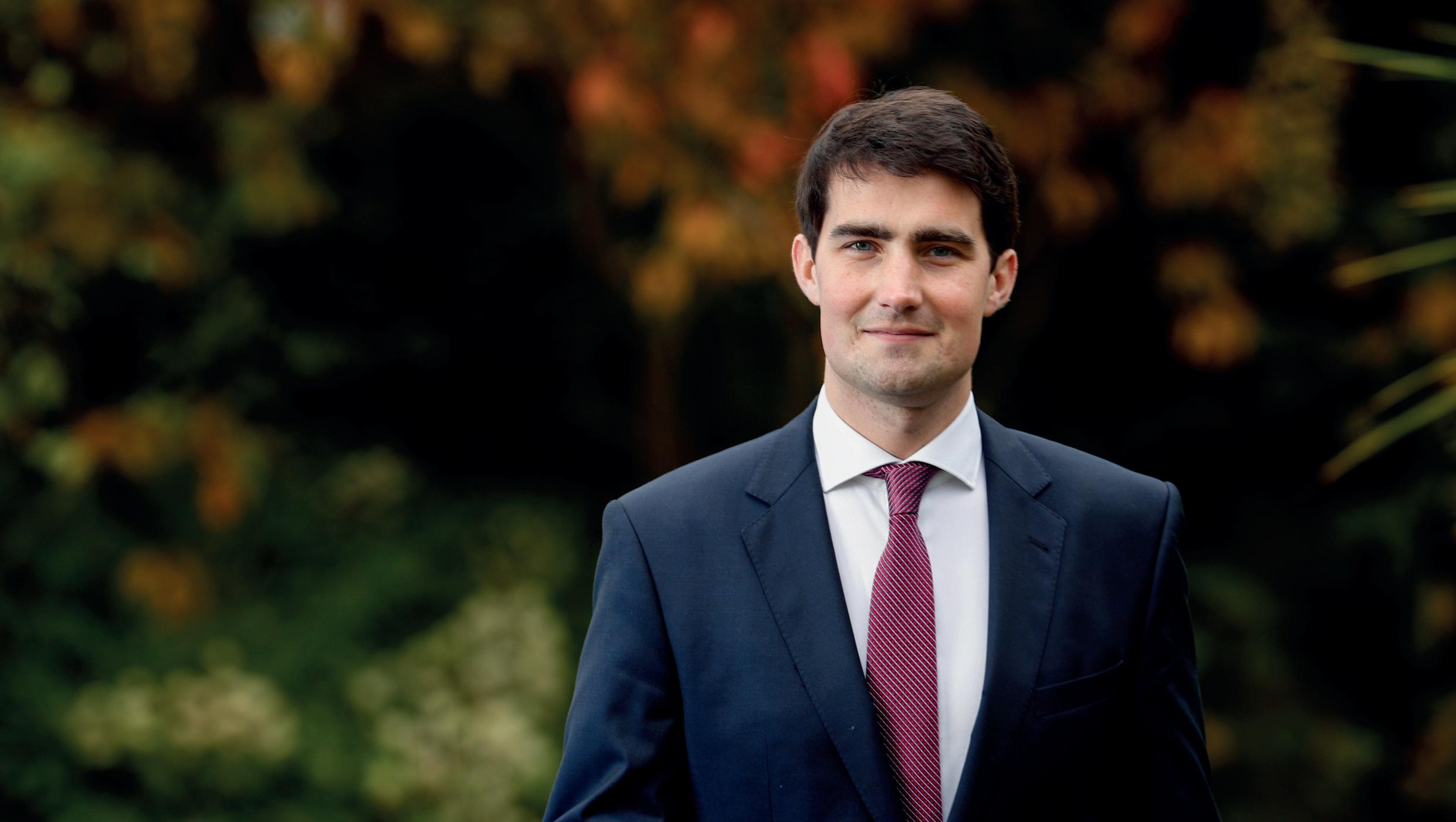
Minister of State at the Department of Transport with responsibility for International and Road Transport and Logistics, Jack Chambers TD provides an update on the implementation of Road Safety Strategy
2021–2030 and an outline of road safety priorities for 2023.
At the time of writing (31 January 2023), 18 people have died on our roads in 2023. Already, this is four more people than in the same timeframe in 2022. The monthly average of road deaths in 2022 was the highest since 2017, when a total of 156 fatalities was reached. We must not forget that in addition to those who have lost their lives on the roads, many have been seriously injured. In 2022 that number stood at over 1,200.
Behind each of those numbers is a tragedy and a family left behind or changed. Since the early 1970s, road deaths in Ireland have been declining. From a peak of 640 in 1972, numbers decreased to the point where in 2021, 138 people died, while 138 died in 2018 – a year in which road traffic volumes were not impacted by the pandemic. Ireland was described as “a model for the European Union” due to the progress it had made.
138 deaths is still too many, but it was a step in the right direction. We cannot allow a situation to develop where the progress which has been made is lost.
Road Safety Strategy
Recognising this, the Government launched the fifth Road Safety Strategy 2021-2030, with the aim of reducing road deaths and serious injuries by 50 per cent and putting in place the foundations of a plan to eliminate deaths and serious injuries on our roads by 2050.
The Strategy recognises that there is no silver bullet. Human error and human frailty are a reality and must be accommodated in our road traffic system. It also emphasises that there is a shared responsibility for road safety across all parts of this system, from road users themselves, to how our roads and vehicles are designed, to how we provide emergency care for those involved in collisions.
However, the four main causes of deaths on our roads continue to be:
1. speeding;
2. distracted driving;
3. not wearing a seatbelt; and
4. intoxicated driving.
Each of these factors come down to personal responsibility on the part of the driver.
While most drivers are law-abiding, there remains a group of drivers whose behaviours puts themselves and other road users in constant danger.
98 road safety report
Progress
There has been good progress made in delivering the 186 actions set out in the first three years of the Road Safety Strategy, with the majority on track. An annual results conference will be held in February 2023, where we will further target additional road safety action in response to recent trends, with involvement of all strategy stakeholders.
Enhanced enforcement
In order to address the growing trend in fatalities, regulations came into force on 27 October 2022 to double fixed charges for 16 high-risk driving offences including speeding, use of a mobile phone while driving, failure to wear a seatbelt or use an appropriate child restraint, and unaccompanied learner driving.
It is intended that these substantial increases will not only penalise dangerous and illegal driving but will also greatly strengthen the deterrent effect of our fixed charge system, fostering a broader shift among drivers on Ireland’s roads for the better.
Drug testing
On 1 December 2022, the new Drugwipe 6s roadside drug testing device became operational and was rolled out to gardaí across the country. This device works in a similar way to an antigen test for drug testing, making testing easier for gardaí. It can now test for amphetamine and methamphetamine, which was not possible previously, in addition to cannabis, cocaine, benzodiazepines and opiates.
According to the Medical Bureau of Road Safety, while alcohol still remains the most frequently detected intoxicant in driving in Ireland, cannabis is the second most frequently found intoxicant and its detection in drivers is continuing to increase, with cocaine being the third most commonly found intoxicant drug detected.
Speed
As the State’s 99,100km road network is extensive and varied, there is no ‘one size fits all’ solution for speed limits. A key deliverable of the Government’s
Road Safety Strategy will review the framework for the setting of speed limits and consider the introduction of 30km/h default speed limit in urban areas. This will be a priority for action for both me and the Senior Officials Group early this year.
Legislation
The Government’s Road Traffic and Roads Bill, which is expected to be passed shortly, will address a range of measures to enhance road safety. Legislation for escooters, e-bikes, and the antisocial use of scramblers will be addressed.
Once the Bill is passed, as with any other class of vehicle, regulations will have to be made for the construction, equipment and use of e-scooters, and under EU law we must allow a three-month consultation period on the technical specifications before the regulations are brought in. It will only be legal to use e-scooters in a public place when these regulations are in place.
Amendments in the Bill will allow for the completion of the Irish Motor Insurance Database, which will assist in getting uninsured drivers off our roads. The Bill will also allow Transport Infrastructure Ireland to manage traffic better on the M50 and potentially other roads in the future, by varying speed limits at peak times to allow smoother traffic flow.
Reflection
Reflecting back on the first year of the strategy, I am encouraged that there is a will to act. We can build on this progress by drawing on the wealth of data and analysis around driver behaviour, road conditions, and other factors which assist us in better understanding how and where collisions occur. This is about saving lives and preventing serious injuries for all who use our roads and I look forward to better outcomes in 2023.
“We cannot allow a situation to develop where the progress which has been made is lost.”
99 road safety report
Jack Chambers TD, Minister of State with responsibility for International and Road Transport and Logistics
Road Safety Authority: Road safety faces renewed challenges
In 2021, the Government launched the latest Road Safety Strategy for the decade ahead. Spearheaded by government ministers and departments, alongside road safety agencies, there was a renewed momentum towards enhanced road safety and, ultimately, Vision Zero.
That renewed focus paid dividends. A total of 137 road fatalities in 2021 marked one of the all-time lowest figures recorded in the State.
As such, the challenge for 2022 was to sustain this momentum amid the post-Covid return to ‘normal’. However, as people emerged from the public health restrictions, road traffic volumes increased to pre-pandemic levels. Unfortunately, there was a significant increase in fatal collisions, as well as road traffic fatalities on Irish roads.
Provisional fatality statistics published by the RSA record 150 fatal collisions and 156 fatalities on Irish roads in 2022. The highest figure since 2016, this represents a 14 per cent increase in fatalities when compared with 2021 when there were 124 fatal collisions and 137 fatalities on Irish roads.

While driver fatalities decreased by 14 per cent (from 70 to 60), passenger fatalities increased by 22 per cent (from 18 to 22). Cyclist fatalities remained unchanged with seven occurring in both 2021 and 2022, while motorcyclist fatalities increased slightly from 22 to 23. Meanwhile, pedestrian fatalities increased by a dramatic 110 per cent when compared with 2021 (from 20 to 42).
At the same time, provisional figures record a slight reduction in serious injuries on Irish roads, with 1,294 recorded between 1 January 2022
100 road safety report
Tasked with coordinating the delivery of the Government’s Road Safety Strategy, the Road Safety Authority (RSA) reflects on the increase in fatal collisions and fatalities on Irish roads in 2022 and outlines its priorities for 2023.
and 29 December 2022. This represents a 3.6 per cent decrease on 1,342 serious injuries during the same period in 2021.
Successes
Reflecting on road safety progress in 2022, there were two notable successes. Firstly, the RSA provided data to support then-Minister of State at the Department of Transport, Hildegarde Naughton TD’s decision to double the fines for dangerous behaviours. This announcement was made at the RSA and An Garda Síochána’s mid-summer road safety appeal.
As a result, the fine for speeding increased from €80 to €160, while fines for not wearing a seatbelt or using a mobile phone while driving increased from €60 to €120. Likewise, fines were doubled for other dangerous behaviours that put the safety of vulnerable road users at risk.
Secondly, advances in technology enabled the development and deployment of a new generation polydrug testing device, Securetec® Drugwipe 6s (DW6S).
DW6S is a gamechanger which means that rather than being limited to roads policing units, every individual garda can be equipped with the small, plastic devices, which are similar to an antigen test.
This is a significant development given the context that both during and after the pandemic, enforcement statistics from An Garda Síochána demonstrated a substantial increase in drink driving and drug driving.
Launched at the beginning of December 2022, the RSA anticipates that this enhanced drug testing capability will deliver positive change in 2023.
Safe Speeds
A primary priority of the RSA’s ambition for 2023 will be mitigating the persistent challenge of speeding as one of the most significant factors in driver road deaths. Indeed, international
research indicates that approximately 30 per cent of fatal collisions and between 10 and 15 per cent of collisions are a direct consequence of speeding or inappropriate speed.
Excessive speeding and inappropriate speed are two different concepts. Excessive speeding entails breaking the law, whereas inappropriate speed is not conducive to adverse road conditions – if the roads are icy or there is excess surface water – which also increases the risk of a collision.
A recent RSA Driver Attitudes and Behaviour Survey recorded that 64 per cent of respondents confirmed that they exceeded the speed limit ‘very often’, rather than ‘often’ or ‘sometimes’. Paradoxically, the same survey indicates that 60 per cent of respondents support enhanced roads policing enforcement by An Garda Síochána.
Already, newly appointed Minister of State at the Department of Transport, Jack Chambers TD, has liaised with the RSA to reflect on the trends for 2022, review the Government’s Road Safety Strategy, and prioritise actions to reduce road deaths in 2023.
“It is clear that speed will be a focus for me,” the Minister of State asserted, when speaking with The Irish Times, adding: “It is particularly worrying to see a large increase in the number of pedestrians killed [in 2022]. We know that excessive speed by drivers may be linked to many of these deaths.”
Highlighting the importance of statistic-driven road safety policy, the RSA notes that if a pedestrian is hit by a vehicle at 30km/h, there is a 90 per cent chance that they will survive. However, if a pedestrian is hit at 60km/h, there is a 90 per cent chance that they will die. This is a fact which will inform many of their priorities in 2023.
Speed review
One positive of the Covid experience was the tangible demonstration of the benefits unlocked by safer spaces and places – including roads –
4 101 road safety report
With 156 road fatalities in 2022, the ambition of reducing this figure to 130 or fewer in 2023 is an indication of the scale of the challenge ahead.
in terms of walking and cycling in a much safer manner. Elsewhere in the EU, member states have subsequently introduced 30km/h speed zones as a default in urban areas. This policy is not just intended to deliver a speed zone for vehicles, rather it is about delivering safer communities.
Among the 50 high-impact actions for the Phase 1 2021-2024 action plan, formulated to coordinate the implementation of the Government’s Road Safety Strategy, is a speed review which entails the establishment of a working group to “examine and review the framework for the setting of speed limits, including introducing 30km/h limits as the default in urban areas”.
The RSA also advocates for a consistent approach visible road signage, including variable signage outside schools.
Education
Another high-impact action set to be prioritised by the RSA in 2023 is road safety education. The Government’s Road Safety Strategy includes a highimpact priority to deliver public education on inappropriate and excessive speeding in conjunction with An Garda Síochána enforcement activity, with an emphasis on protecting vulnerable road users.

As per the Netherland’s best practice
inclusion of road safety education as a mandatory element of the school curriculum from pre-school onwards, the strategy seeks to explore the introduction of road safety as a mandatory component of the Irish education system. Many schools are very positive and proactive around road safety. Very often, however, the staff in the schools who are positive, proactive, and enthusiastic about road safety have, unfortunately, been impacted by serious injury or fatality on the roads. Instead, a consistent approach must be cultivated.
Deterrant
Evidence from An Garda Síochána data indicates that when an individual is caught speeding and receives penalty points alongside a fine, the likelihood of re-offending is reduced in the subsequent four years.
While the fines for dangerous behaviour were doubled in 2022, road safety stakeholders, including the RSA, must consider whether doubling fines have the desired effect, or further change is required.
In-vehicle technology
In 2022, the RSA collaborated with the European Commission subject matter
102 road safety report Advertorial
groups in relation to Advanced Driver Assistance Systems (ADAS). The Commission’s new Vehicle General Safety Regulation, which came into effect in July 2022, introduced a range of mandatory ADAS to improve road safety and better protect passengers, pedestrians, and cyclists across the EU.
New legislation has been passed and there are new laws for vehicles being sold that incorporate ADAS. As such, all new vehicle types must be equipped with Intelligent speed assistance; alcohol interlock installation facilitation; driver drowsiness and attention warning systems; emergency stop signals; and reversing detection systems. There are significant road safety benefits unlocked by these technologies.
As part of its safer driving for work objective, the RSA is encouraging employers, particularly in public sector bodies, to replenish their vehicle fleets, with vehicles that have ADAS technologies.
Vision Zero
On the overall journey towards Vision Zero –eliminating road deaths and serious injuries on Irish roads by 2050 – the Government’s fifth Road Safety Strategy 2021-2030 is an initial step.

The latest strategy seeks to reduce the number of serious injuries and fatalities on Irish roads by 50 per cent by 2030. This means reducing serious injuries to 630 or fewer and reducing
fatalities roads to 72 or fewer per annum.
As such, the Government’s Road Safety Strategy has established a target of no more than 130 or fewer fatalities in 2023. At the same time, the target for serious injuries in 2023 is 1,213 or less.
Recognising that this ambition is a priority for all relevant government departments and road safety agencies, the RSA, as the lead agency for coordinating the delivery of the Government’s Road Safety Strategy, emphasises that to achieving these goals, requires the delivery of Phase 1 targets. This means that road deaths need to reduce to 122 or fewer, and eight serious injuries to 1,133 or fewer by the end of 2024.
With 156 road fatalities in 2022, the ambition of reducing this figure to 130 or fewer in 2023 is an indication of the scale of the challenge ahead.
103 road safety report Advertorial
European Road Safety Charter seeks to halve road fatalities by 2030
The European Road Safety Charter is targeting a 50 per cent reduction in road deaths and serious injuries by 2030. The Charter is open to both individuals and organisations, with the Road Safety Authority calling for Irish people and organisations to sign up to its goals.


The European Road Safety Charter consists of roughly 3,500 members, including companies, associations, local authorities, research institutions, universities, and schools. In order to reach each of the European Union’s 27 member states, the European Commission has appointed a national relay in each; the Road Safety Authority (RSA) acts as Ireland’s national relay. In this role, the RSA is required to promote the Charter and to increase memberships and commitments within Ireland. It is also expected to promote “knowledge sharing of road safety initiatives and the exchange of good practices among signatories in Ireland, urging both civil society and institutions to adopt effective measures that improve road safety”.
Upon the launch of its European Road Safety Charter campaign, RSA Chief
Executive Sam Waide said: “By signing the charter, you are pledging yourself or your organisation to take action to meet EU target of decreasing road deaths and serious injuries by 50 per cent by the year 2030.”
With regard to the European context, Ireland is performing relatively well in terms of road fatalities. European Commission data for 2021, the last year for which EU-wide data is currently available, shows Ireland to be fourth in the European Union for road fatalities per million inhabitants. Ireland’s rate of 27 ranks only behind Malta (17), Sweden (20), and Denmark (22). The highest levels of road fatalities per million inhabitants were seen in Romania (92), Bulgaria (81), and Latvia (78).
However, provisional road collision figures released by the RSA in January
2023, covering all of 2022, brought with them news that both the number of fatal road collisions and the number of road fatalities had increased. Road fatalities had risen from 137 to 155, an increase of 13.1 per cent, and fatal road collisions had risen from 124 to 149, an increase of 20.2 per cent.
The European Road Safety Charter’s aim of reducing road deaths by 50 per cent by 2030 is also contained within the Irish Government’s fifth Road Safety Strategy, which covers to period 20212030; the 50 per cent reduction is seen as the key first step in the Vision Zero strategy, which aims for the eradication of road fatalities by 2050. For Ireland to remain on track to achieve these goals and the Phase 1 interim targets set out in the Road Safety Strategy, road deaths need to reduce to 122 or fewer by the end of 2024.
104 road safety report
An Garda Síochána: Focused on keeping people safe on our roads

many people that are willing to take the risk. The reality is that these behaviours are leading factors in the cause of serious injury and death on our roads.
Our road policing units nationwide are out seven days a week enforcing road safety and traffic legislation as part of coordinated operations such as Operation Slow Down. They are supported by our regular policing members and Community Gardaí, who as part of their duties also carry out roads policing functions.
The roll-out of over 12,000 mobility devices to front-line gardaí enhances their ability on the roadside to enforce road law legislation and keep road users safe. This advancement in technology works in tandem with our education campaigns, schools programme, and daily coverage of road traffic matters via our social media including our dedicated account –@GardaTraffic, which has over 500,000 followers.
In December 2022, gardaí conducted over 7,400 checkpoints as part of our Christmas and New Year road safety operation specifically aimed at reducing the number of fatal collisions. Our National Slow Down Day was also in operation to extend our appeal to all road users to be aware of our actions and behaviours on the roads.
Since its introduction on 1 December 2022, our new streamlined testing process, Securetec Drugwipe 6S, is supporting us in our efforts to reduce serious road traffic collisions and make Irish roads a safer place for all. The roadside testing device works like an antigen test and is more portable, faster at delivering initial results, and can detect a greater number of illegal substances that can alter a person’s ability to drive safely. Such a development in our equipment means that we have strengthened our capability to detect those that unlawfully drive under the influence of illegal drugs.
That is 155 families who will never see a mother, a father, a son or daughter, or a sibling again.
Working in collaboration with the Road Safety Authority, government departments and State agencies, An Garda Síochána is focused on preventing and detecting the four life saver offences most commonly linked to serious or fatal road traffic collisions.

These are intoxicated driving, speeding, using a mobile while driving, and failing to ensure that you and your passengers are wearing a seatbelt. To responsible motorists these are common sense, but our data shows there are still far too
As the time of writing, 15 people have already lost their lives on Irish roads in 2023. We must reverse this shocking trend in fatalities. Gardaí are out each day working to ensure you reach your destination, prevent road collisions and keep people safe.
However, we all share the roads and so there is a shared responsibility for us to look out for one another too. Together, we have an opportunity to make sure that far fewer people are killed or injured on Irish roads in 2023 and beyond.
Twitter: @GardaTraffic
105 road safety report Advertorial
Sadly, 155 people lost their lives on Irish roads in 2022, an increase of more than 10 per cent and the highest number in five years, while over 1,290 people were left seriously injured following collisions.
Clearing the path
In December 2022, the Department of Transport announced the second phase of the Safe Routes to Schools Initiative, which aims to enable 37,000 pupils to walk, cycle, or wheel to school.


The initiative, which was introduced by former Minister of State at the Department of Transport, Hildegarde Naughton TD, will now be overseen by her successor Jack Chambers TD.
It will be funded to the tune of €20 million, which will be spread throughout the State and allocated to 108 schools in all local authority areas.
In addition to encouraging a healthier lifestyle for children, the initiative aims to ensure that congestion in towns and cities, particularly in the surrounding areas of schools, can be alleviated insofar as possible.
No timescale has been outlined by the Department for the construction of such infrastructure, or precisely what form it will take, apart from that it will make the roads to schools “safer”.
The Department has, however, stated that a small number of schools which received funding in phase one of the initiative have seen their projects “come to fruition” including a ‘school street’ surrounding a school in Limerick city, and a ‘school zone’ surrounding a school in Cobh, County Cork, both of which established a pedestrian zone in the area surrounding these schools.
Phase one of the project, launched in June 2021, saw 170 schools allocated funding, with 931 having originally expressed interest,
according to the Department of Transport. Funding allocations for phase two has also been drawn from the original pool of applicants. Although there were almost 36 per cent less schools allocated funding for phase two, the funding allocation saw an increase in the region of 25 per cent, with €15 million having been allocated for phase one.
Naughton, who now serves as Government Chief Whip, oversaw the allocation of funding in one of her final acts at the Department of Transport.
Announcing the funding, she stated: “My ambition is that every child in Ireland will have the option to make their daily commute to the classroom by foot, bicycle, or scooter in a way that they are safe and protected; one that I am confident is shared amongst children, their parents, teachers, and the wider school community.”
Anne Graham, CEO of the National Transport Authority, said: “In collaboration with An Taisce Green-Schools and the local authorities, we will now begin working on delivering the second tranche of projects. By working with school communities at a local level to make journeys safer than ever before, we can continue encouraging young people to use more sustainable modes of transport.”
106 road safety report
Safety is the responsibility of everyone
people have returned to cars, and with busier roads comes the need to remind all road users of the importance of remembering the basic rules of the road, which are crucial to ensuring the safety of both road users and Luas passengers and staff.
Transdev, working closely with An Garda Síochána, promotes a range of Garda and Road Safety Authority initiatives to improve passenger, pedestrian, and road user safety year-round. However, amber gambling and breaking red lights, distracted driving, and many pedestrians simply failing to look left and right before crossing tram tracks result in trams emergency braking on occasion, which is an unpleasant experience for everyone.
Thankfully, Luas drivers are trained in defensive driving, which includes anticipating other people's mistakes and driving accordingly, but, with busier streets, Luas drivers see distracted drivers along both Luas Lines every day. We are all responsible for keeping ourselves and other road users safe, no matter how much of a rush we may be in.
Luas operator Transdev is reminding all motorists and other road users to never break a red light, and pedestrians must remember always to look left and right before crossing Luas tracks. In addition, road users must always follow road signs and signals near Luas tracks and assume trams are nearby. The potential for a serious accident is not worth the risk taken to save a few seconds. For further information on safe driving around Luas, see Luas.ie
Particularly popular among commuters, shoppers, students, and tourists, Luas now transports an average of over 100,000 customers daily – some 38 million plus journeys a year. Throughout this expansion and the overall growth of Dublin in recent years, Luas has

maintained an excellent safety record. Throughout the Covid-19 pandemic, Luas and other public transport operators were crucial in ensuring frontline and essential workers could get to and from work. As many of us have now resumed pre–pandemic lives, many
Transdev Dublin Light Rail Ltd

T: 01 461 4910
W: www.luas.ie
107 road safety report Advertorial
Since first commencing passenger service in 2004, the Luas network has grown to over 42km of track across the Red and Green Lines, serving communities throughout the capital city and suburbs. Customer safety and the safety of other road users and pedestrians remain the highest priority for Transdev, Luas operator.
Public Services 2023
Date for your diary
Tuesday 23rd May ● The Gibson Hotel, Dublin
Since the launch of Our Public Service 2020 in December 2017, there has been huge progress in the key areas of promoting innovation, digitalising services, and improving the development of people and workforce planning. There are currently 370,000 public servants working across different sectors in Ireland, all working to deliver better, more effective services. In 2020, the Covid-19 pandemic sharply brought into focus the need for public service organisations to be responsive, resilient and agile. Ireland’s public services responded well and quickly to change the way they work to deliver services and meet the needs of citizens. As we begin 2023, we are now beyond simply embedding innovation within organisations, with the new focus now on scaling up public service transformation. This conference will bring together key stakeholders from across Ireland’s public sector to look ahead to what’s next and how we can collaborate to transform our public services.

Key topics covered:
There are a number of opportunities for interested organisations to become involved with this conference as sponsors or exhibitors. This is an excellent way for organisations to raise their profile with a key audience of senior decision-makers from across Ireland’s public services.
For further information on how your organisation can benefit, contact Lynda Millar on 01 661 3755 or email lynda.millar@eolasmagazine.ie.

Sponsored by
3 The next phase of transformation: What does the future look like?
3 Designing public services for the digital age – Digital by Default;



3 New ways of working;
3 Reimagining public services: Putting service design at the centre;
3 Engaging with the service user –becoming citizen-centric;
3 The delivery of healthcare in Ireland;

3 Integrating innovation into operational and strategic planning;

3 Building resilience into our public service organisations;

3 Innovation as a driver for sustainability;
3 Diversity and inclusion: The workforce of the future;


3 All change: planning for the future mobile workforce;

3 Shared services across Ireland’s public sector;

3 Looking at the realities of automation and technology enabled solutions;

3 Sectoral update: health; justice; education; local government;
3 Best practice case studies



108
Online www.publicsectorreform.eolasmagazine.ie By phone +353 (0)1 661 3755 Email registration@eolasmagazine.ie More information available soon!
Sponsorship and exhibition opportunities
Thematic reports from the European Road Safety Observatory and data from the European Commission and Road Safety Authority show Ireland to have one of the lowest rates of road fatalities in Europe, as well as the best selfreported seatbelt wearing rate.

Road deaths in Ireland
155 people killed on Irish roads in 2022
13% increase on 2021 fatality levels
137 road fatalities in Ireland in 2021
27 road deaths per 1,000,000 of population in Ireland in 2021
7% decrease on 2020 levels
5% average annual decrease in Irish road deaths from 2017-2019
Road deaths in European Union
14% average annual decrease in EU27 road deaths from 2017-2019
17 road deaths per 1,000,000 of population in Malta, the lowest in the EU

92 road deaths per 1,000,000 of population in Romania, the highest in the EU
19,900 deaths on EU27 roads in 2021




6% increase from 2020 but 13% decrease from 2019
45 road deaths in EU27 per 1,000,000 of population in 2021
Injuries
120,000 serious injuries on European roads in 2019
Five serious injuries for every death on European roads
1,091 serious injuries on Irish roads in 2021
Nine serious injuries for every death on Irish roads
Speeding tickets
31 speeding tickets per 1,000 of population annually in Ireland

592 speeding tickets per 1,000 of population in Austria, the most in Europe
Seatbelt wearing
96% seatbelt
wearing rate for drivers in Ireland
90% seatbelt
wearing rate for rear passengers in Ireland
Nine in 10 respondents stated that they always wear seatbelts in Ireland, Europe’s highest self-reported rate
Sources: European Commission, Road Safety Authourity, European Road Safety Observatory speed serious injuries and seatbelt and child restraint systems thematic reports 109
road safety report
Ambitious targets for road death reduction in the North

actions. 94 per cent of road users stated that they believed that using a mobile phone whilst driving increased their likelihood of being involved in an accident.
The draft strategy, released in October 2022, prior to the collapse of the Northern Ireland Executive, outlines a target of 35 or less deaths by road accidents by 2030, with a target of 376 or less injuries on northern roads by 2030.
The strategy sets an ambition of a 60 per cent reduction in young people suffering road deaths or serious injury by 2030.
In the long term, the strategy outlines an ambition for zero road deaths or serious injuries in the North by 2050.
To achieve this, the draft document states that the Department for Infrastructure will expand the use of initiatives such as 20 miles per hour (mph) limits outside schools and the use of speed indicator devices.
The Police Service of Northern Ireland (PSNI) data continues to show that approximately 95 per cent of road
casualties are due to a number of dangerous road user behaviours with the majority of collisions being caused by carelessness/inattention, driving at excessive speed, or through alcohol/drugs despite interventions to date. Additionally, uncertainties remain as to the lasting impacts of the Covid-19 pandemic on travel choices and behaviours.
The Department for Infrastructure, in January 2023, released statistics which outline the scale of the challenge of halving the numbers of deaths and injuries on northern roads by 2030. Over half (58 per cent) of road users who took part in the survey admitted to using their mobile phones whilst driving.
Despite this high level of mobile phone usage whilst driving, users are acutely aware of the risk associated with such

The survey further states that 90 per cent of road users correctly assume that the presence of street lights translates into a 30mph limit, equivalent to 48 km/h. A point for concern is that a small number of respondents found it acceptable to drive at 70mph in an area with street lights, pointing to the potential danger posed by a minority of road users.
The Republic, the North, and the UK, have among the best relative records on road safety in the European continent, with all three states having a road death rate below 30 per one million. For context, France has a road death rate between 41 and 60 per one million, whilst France and the Netherlands both have death rates of between 31 and 40 per one million.
Whilst the strategy was released in draft formal prior to the collapse of the Northern Ireland Executive, implementation may not be possible unless parties in the North are able to form an Executive.
The North’s Department for Infrastructure (DfI) has released a draft road safety strategy, which aims to halve the number of deaths and injuries on roads by 2030.
110 road safety report
% reduction by 2030 Target number by 2030 Number of people killed in road collisions At least 50% Fewer than 35 Number of people seriously injured in road At least 50% Fewer than 376 Number of children (0-15) killed or seriously injured in road collisions 60% Fewer than 29 Number of young people (16-24) killed or seriously injured in road collisions 60% Fewer than 79
Medical Bureau of Road Safety: Enhanced roadside drug testing operational
consistent increase in drug detection in drivers. In 2016, MBRS tested 1,113 samples for drugs other than alcohol. By 2021, this figure had increased by almost 300 per cent to 4,321 samples, 78 per cent of which confirmed a positive presence. Next to alcohol, cannabis is the intoxicant most frequently detected in Ireland, followed by cocaine.
“This newly introduced drug testing system can test for cannabis, cocaine, benzodiazepines, opiates, and, unlike its predecessors, also for amphetamine and methamphetamine, at the roadside,” the MBRS Director explains.
On 1 December 2022, a new oral fluid preliminary roadside drug driving testing device was launched at the joint Road Safety Authority (RSA), An Gardai Síochána (AGS), and Medical Bureau of Road Safety (MBRS) Christmas and New Year road safety appeal at University College Cork. The Director of the MBRS, Denis Cusack, speaks with eolas Magazine about the Securetec® Drugwipe 6s (DW6S).
It is an offence to drive under the influence of drugs, including prescribed drugs, where driving is impaired to such an extent that an individual does not have proper control of a vehicle. It is also an offence to drive under the influence of alcohol and certain drugs (cannabis, cocaine and heroin), above specified levels, regardless of driving performance.
The MBRS is the independent forensic statutory body responsible for intoxicant (alcohol and drugs) testing in driving in Ireland and for supplying testing equipment to AGS under road traffic law.

Working in independent partnership with several road safety stakeholder organisations, including An Garda Síochána, the Road Safety Authority and the Department of Transport, the MBRS contributes to the implementation of the government Road Safety Strategy
to reduce deaths and serious injuries on Irish roads.
Alcohol and drug driving is a consistent factor in road traffic collisions, with combinations of alcohol and or drugs impairing an individual’s ability to control a vehicle to the extent that they pose a risk to themselves and other road users. RSA research on data derived from Coroners’ inquiries into road collisions between 2013 and 2017 indicates that 29 per cent of drivers killed had a positive toxicology for drugs.
Supplied to An Garda Síochána by MBRS, and now operational across the State, the DW6S can test for a greater range of drugs at the roadside. The enhanced preliminary drug testing system addresses the combined alcohol-and-drugs-driving danger whilst also ensuring that drivers can continue to take their doctor-prescribed or pharmacist-advised medications for safe and healthy driving.
Explaining the rationale for the new testing device, Cusack emphasises a
The DW6S is faster at delivering results, more convenient, and capable of detecting more intoxicants than its predecessor. Working like an antigen test, the new preliminary test does not require an analyser and its results can be read visually within approximately 10 minutes. If an individual’s oral fluid subsequently tests positive, a blood specimen can be taken and sent to the MBRS for evidential testing.
“The advantages of the new system are that oral fluid collection is very rapid. As such, the test time is reduced to between two and eight minutes, and the device is easily transported with no other device being required to read the drug results.
“This enhanced roadside drug testing system to be used by An Garda Síochána is timely as drug use in Irish society continues to increase and diversify, which also translates into more dangerous intoxicated driving,” Cusack concludes.
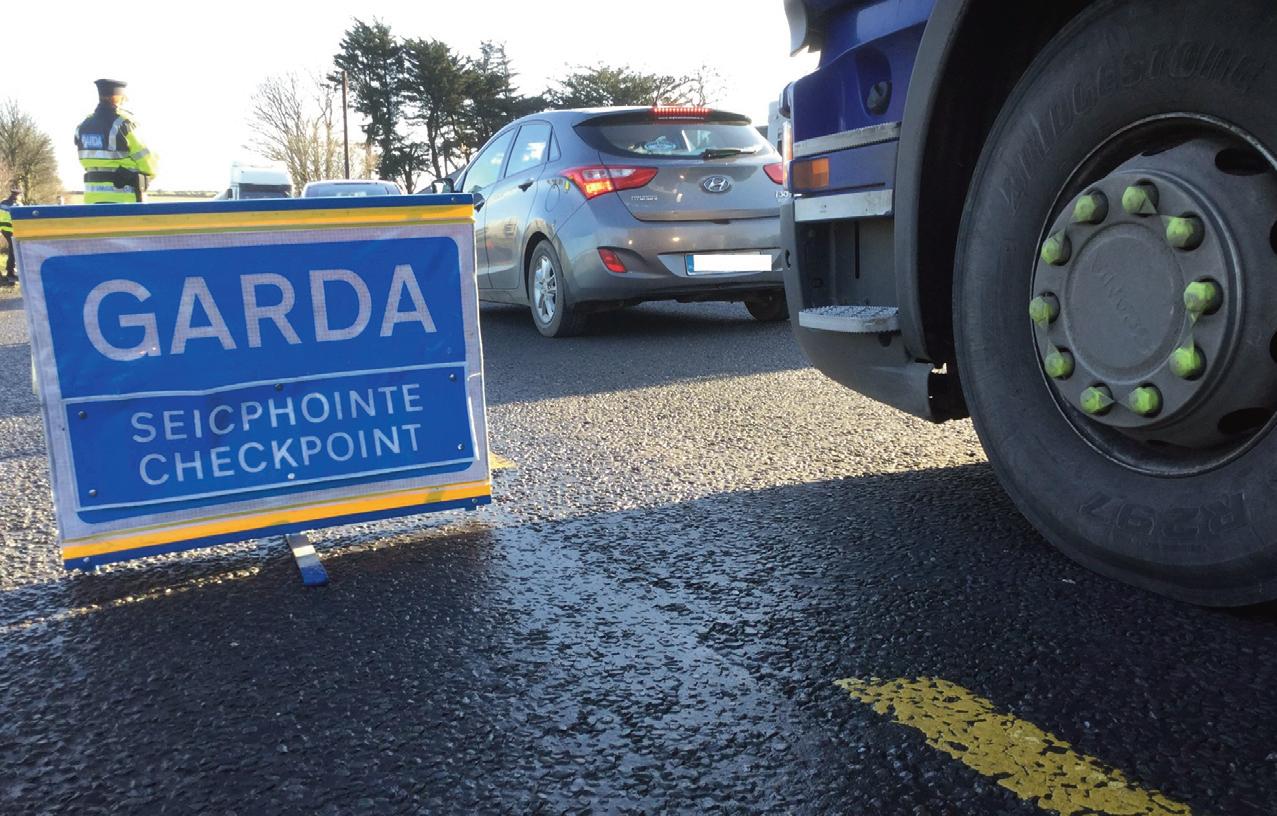
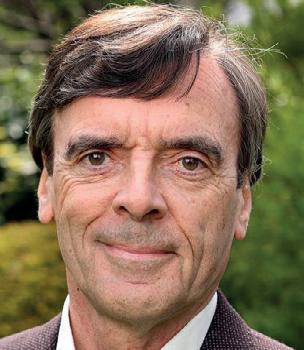
For more information, please contact
T: 01 7165555
E: forensic.medicine@ucd.ie
W: www.ucd.ie/mbrs/aboutmbrs
111 road safety report
Advertorial
Credit: Road Safety Authority
Social Media Dublin 2023

The ninth annual Social Media Dublin Conference recently took place in January 2023. The event is Ireland’s leading social media event and brought together an excellent line up of social media experts both local and visiting to share their knowledge and examples of successful campaigns. A massive thank you to all speakers and delegates who joined us at Croke Park, Dublin and helped bring #SMDublin to life across all social media channels and made the conference a huge success.
We have already started brainstorming for 2024. If you are interested in sponsoring, exhibiting or sharing your experiences as a speaker please do get in touch with the event director Fiona McCarthy, Fiona.McCarthy@eolasmagazine.ie. Follow us on Twitter @eolasmagazine for all the latest information.



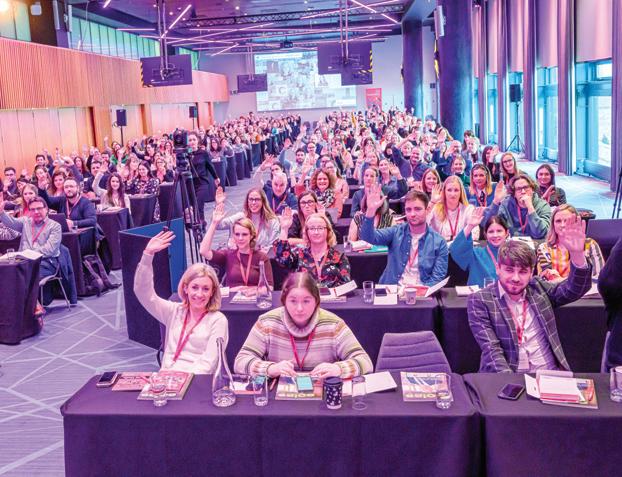

 Speakers: Nicola Halloran, Teneo; Laura Truelove, Welsh Government; Darragh Doyle, Dublin City Council Culture Company; Lea Sandell, LEGO Group; and Elisabetta Bello from Edelman.
Darragh Doyle, Conference Chair interviewing Lea Sandell from the LEGO Group.
Social Media Dublin 2023 crowd.
Thuraya Al Harthy and Wadhha Al Busaidi, Oman Telecommunications Company enjoying a selfie at the conference.
Trudi Mason, Health Information Quality Authority chatting to Zoe Forde from the Nursing and Midwifery Board of Ireland at the 2023 Social Media Dublin conference.
Jenny Finnegan, Catherine Whelan, Shona Meehan, Sarah McMahon and Laura Meehan from Fáilte Ireland capturing a photo of the Croke Park stadium where the conference was held.
Speakers: Nicola Halloran, Teneo; Laura Truelove, Welsh Government; Darragh Doyle, Dublin City Council Culture Company; Lea Sandell, LEGO Group; and Elisabetta Bello from Edelman.
Darragh Doyle, Conference Chair interviewing Lea Sandell from the LEGO Group.
Social Media Dublin 2023 crowd.
Thuraya Al Harthy and Wadhha Al Busaidi, Oman Telecommunications Company enjoying a selfie at the conference.
Trudi Mason, Health Information Quality Authority chatting to Zoe Forde from the Nursing and Midwifery Board of Ireland at the 2023 Social Media Dublin conference.
Jenny Finnegan, Catherine Whelan, Shona Meehan, Sarah McMahon and Laura Meehan from Fáilte Ireland capturing a photo of the Croke Park stadium where the conference was held.
112 conference report
Speaker Johanna Torwesten, In the Company of Huskies addressing attendees at Social Media Dublin 2023.





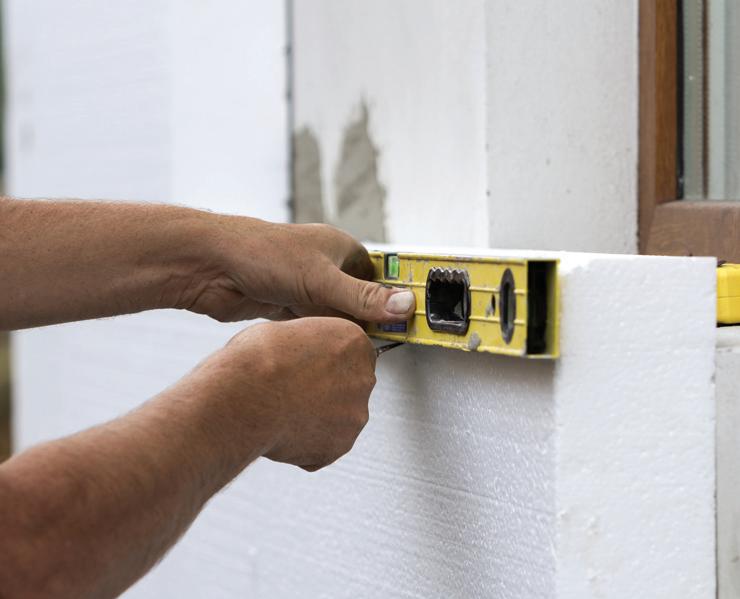



Digital Events Print
Retrofitting report
Retrofit: A step change in delivery
Published as part of Climate Action Plan 2021, the National Retrofit Plan set out ambitious targets and centralised the retrofitting agenda in the Government’s climate, economic, and housing strategies.


In spring 2022, the Government launched the National Retrofitting Scheme, a package of supports that Ryan says reflects the step-change needed to achieve an overarching target of half-a-million home energy upgrades (to B2 Building Energy Rating standard) by 2030.
Describing the upgrade of 30 per cent of current housing stock by 2030 as “the bare level ambition”, Ryan says that cross-party support for these targets will ensure that the only possible change in ambition will be acceleration, highlighting a long-term ambition to get to every home by 2050.
Ryan highlights that around €8 billion of guaranteed funding within the National Development Plan to support grant schemes and other retrofitting measures, and the confirmation of a 55 per cent share of the carbon tax budget, provides certainty that budgets will not contract.
Stressing the need to deliver a universal approach that will cover all household types and customer segments, Ryan emphasises a “bias” towards protecting those most in need and affected by fuel poverty. The need for simplicity, he says, “has been a difficult lesson to learn”.
“We need customer-centred solutions to reduce costs, and complexity, and make the process easier. If it is too cumbersome and bureaucratic, we will lose the customer.
Minister for the Environment, Climate and Communications, Eamon Ryan TD

The necessity to more than quadruple the skilled workforce by 2050 is the biggest constraint facing the Government’s retrofitting ambitions, says Minister for the Environment, Climate and Communications, Eamon Ryan TD.
114 retrofitting report
“We want to encourage retrofits that are costoptimal, not to over-specify and set excessive standards. We need to stimulate the market, but the Government is not going to do this alone. Industry will be key and they need confidence in their ability to grow and deliver these goals.”
Ryan expects the increase in grant levels and the introduction of 12 one-stop shops to serve as mechanisms to scale up and deliver an easier journey for the householder “to the point where they are getting wrap-around solutions that mean they do not have to make complex engineering decisions for themselves”.
Despite criticism that work towards the Government’s 2030 retrofitting targets is slow, Ryan expresses “real confidence” that they will be met. Underpinning his confidence, he presents figures of a doubling of applications to SEAI since 2021, a 67 per cent increase in home energy upgrade completions (5,200 of which were to B2 standard), and the meeting of the 2022 annual target of 27,000 homes.
“We are on track, but we should not be complacent,” he states. “We have discussed raising our targets because they were set before the war [Russia’s invasion of Ukraine]. That gives me real confidence that we are going to get there.”
Challenges
Ryan admits that challenges exist, mainly in relation to the supply chain. “The biggest constraint is the supply of skilled labour,” he explains, emphasising that the constraint is also being felt across other European nations.
“We need some 17,000 workers by the middle of this decade. Currently, we have 4,000, in an economy that is at full tilt.”
In this regard, the Minister welcomes the work of his department and the Department of Further and Higher Education, Research, Innovation and Science in enhancing the number of participants in near-zero energy building (NZEB) and retrofit upskilling and reskilling programmes in 2022, following progress in developing a national network of centres of excellence in retrofit skills training, including NZEB skills.
On the challenge of increasing annual retrofits to eventually reach the 500,000 home target by 2030, Ryan says the soon-to-be-introduced Loan Retrofit Guarantee Scheme could not come at a better time in the context of rising interest rates.
“We will de-risk the loans, working with the European Investment Bank (EIB) and the State to cover the first possible default risk, and then bring pillar banks in to cover the remainder.
“That is a clever way to bring down the interest rate below market rates. Even with €8 billion state funding, the scale of this project is so huge that we need private financing and householder investment to deliver.”
Beyond households, the Minister says that a key development is work on the development of a National Heat Policy statement, following on from SEAI’s National Heat Study in February 2022. Discussing the creation of a delivery taskforce on heat and the built environment, he says: “We have such a huge job here, not just with residential buildings, but in commercial buildings, public buildings, and in the rollout of district heating.
“We have to marry district heating with retrofitting as the mechanism to get zero carbon building infrastructure in this country.”
115 retrofitting report
“We need customer-centred solutions to reduce costs, and complexity, and make the process easier. If it is too cumbersome and bureaucratic, we will lose the customer.”
Supporting
customers
on their journey to net zero
We are committed to transforming our energy supply, services, and solutions and our role is to support our customers live more sustainably; be it through the electrification of heating systems, energy reduction, or deep retrofits. We recognise that this will require a seismic change in our customers’ relationship with energy and we have a role in educating them on the necessity for change and providing the solutions and services that will be required to do so.
In the past 18 months, we have established a dedicated services and solutions division to support the roll-out of green innovation and officially launched our sustainability strategy, Imagining a Better Way. Our approach is to always improve and innovate, helping our customers use less energy and switch away from fossil fuels.

Our capability to service in-home needs via our service engineer network,
coupled with our investment, innovation, and understanding of our customers ensures we are uniquely placed to help our customers on their journey to a sustainable energy future.
Strategic view
Our sustainability strategy outlines our journey of transformation, as we seek to accelerate our positive impact and bring our customers on this journey with us.
Affordability is at the heart of our strategy and we are exploring financial solutions to help customers to navigate this period of extreme energy price volatility.
Apprenticeship programme
The Government’s Climate Action Plan has ambitious targets, not least the retrofitting of 500,000 homes and installing 400,000 heat pumps by 2030. The main challenge to delivering on this vision is the chronic shortage of relevant skills.
116 retrofitting report Advertorial
Bord Gáis Energy is a recognised and trusted market leader in gas boiler service and repair, with an ambition to lead in the provision of energy services and solutions, helping our customers transition to a lower carbon future, writes Teresa Purtill, Director of Services and Solutions with Bord Gáis Energy.
In short, a successful transition will hinge on a workforce that does not yet exist. Significant investment will be required to deliver this workforce and thousands of skilled workers will be needed for the planned retrofitting programme alone.
Bord Gáis Energy is committed to supporting the national effort on the promotion of trades careers. We recently established the Bord Gáis Energy Apprenticeship Programme, and we are delighted to have already received hundreds applications. Plumbing and electrical apprenticeships will be a core focus with additional training to upskill engineers to become smart energy experts, skilled to install and maintain carbon-efficient technologies including electric vehicle charging points, heat pumps, and importantly to provide essential energy efficiency advice to customers.
Through our long-term partnership with Focus Ireland, we are working with its PETE (Preparation for Education, Training, and Employment) service to offer employment opportunities to those experiencing homelessness and help them to thrive independently.
Customer focus
We know that Ireland’s energy transition cannot happen without empowering Irish homes and businesses to reduce their impact. Irish homes are responsible for 25 per cent of our overall energy use and 10 per cent of our greenhouse gas emissions. More than 50 per cent of housing in Ireland is D-rated or lower. That means we have one of the most
inefficient housing stocks in Europe, with 42 per cent of homes heated by oil and 33 per cent by gas.
Our goal is to bring our customers with us on this journey of transition to a lower carbon world by helping customers to:
• Use less energy – through smart home energy management solutions such as Hive and the integration of other lower carbon technologies such as heat pumps, EV chargers, batteries, and smart hot water tanks into the Hive ecosystem.
• Switch from fossil fuels –accelerating the switch from fossil fuels and become the main installer of heat pumps in Ireland and the market leader in their service and repair.
• Consider solar and battery solutions – specifically tailored to the Irish farmlands with affordability installation and repayment plans. Within our planet ambitions, we will be a net zero business by 2045, we will have electrified our full van fleet by 2025, and reduced our property emissions by 90 per cent by 2030. We will also supply our customers within excess of 1,000MW of renewable power by 2030. Furthermore, with a long-standing relationship with the Irish Farmers Association (IFA), we recently launched a new partnership offering solar solutions to Irish farmers. This follows a pilot project undertaken by the IFA and Bord Gáis Energy to establish the commercial feasibility of the installation
of roof top solar technology on Irish farms. Through the pilot we clearly and objectively established the benefits of solar solutions for all farmers involved. Bord Gáis Energy and IFA will begin installation in spring but encourage interested parties to register and request further details.
We are committed to using our expertise and experience to support the critical growth of renewables whilst maintaining the stability of energy supply in Ireland. We just announced over €250 million investment to build two new power plants in Athlone and Dublin. These two plants will also be built to switch to hydrogen as that source becomes more viable and available at scale.
Looking ahead
At Bord Gáis Energy, we have supported our customers, colleagues, and communities for over 45 years, and we will continue to do so as we work together to fundamentally change the way in which we consume energy. As we look to the future, we are imagining a better way; transforming our energy supply, services, and solutions in order to become a leading net zero business in Ireland by 2045 and to help our customers reach net zero by 2050.
For further information visit www.bordgaisenergy.ie
“
117 retrofitting report Advertorial
“As part of our sustainability strategy, we will be a net zero business by 2045, we will have electrified our full van fleet by 2025, and reduced our property emissions by 90 per cent by 2030. We will also supply our customers within excess of 1,000MW of renewable power by 2030.”
DECC Assistant Secretary Barry Quinlan:

Amid the implementation of programmes to enhance residential energy efficiency and, ultimately, decarbonise Irish homes, Ciarán Galway discusses the challenge of sustaining momentum with Barry Quinlan, the Assistant Secretary leading the Energy function with responsibility for Built Environment, Retrofit and Heat Policy at the Department of the Environment, Climate and Communications (DECC).
A residential retrofit is an upgrade to the fabric of a home which improves its energy performance. A ‘deep’ retrofit combines several energy upgrades in tandem. This includes enhanced wall and attic insulation, improved windows and doors, efficient renewable heating systems (e.g., heat pumps), and renewable energy technologies (e.g., solar PV panels).
Across the State, Quinlan outlines, a total of 15,500 retrofits were completed in 2021, with 27,700 in 2022, and a further 37,000 targeted for 2023. “Residential retrofit is undergoing a major escalation,” the Assistant Secretary observes, adding: “The National Retrofit Plan is about building on that momentum. We have a very strong project pipeline heading for 2023 so now, it is really about delivery.”


Context
Sustainable Energy Authority of Ireland (SEAI) figures for 2021 illustrate that one-quarter of all energy use in the State occurs in the residential sector and that fossil fuels are used as the primary heat source in 73 per cent of dwellings. As such, the residential sector accounted for 27.5 per cent of Ireland’s total energy emissions (9.8 MtCO2eq) in 2021.
In the same year, according to figures Environmental Protection Agency provisional data for 2021, the built environment accounted for 12.3 per cent of Ireland’s greenhouse gas emissions (a decrease from 13.6 per cent in 2020). Figures indicate that of the total built environment greenhouse gas emissions in 2021 (8.5MtCO2eq), the majority (7 MtCO2eq) originated in the residential sector.
Targets
Programme for Government (PfG) 2020 committed to the publication of the National Retrofit Plan, “as part of the National Economic Plan”. Under the Green New Deal mission, the PfG outlined the Government’s intention to “deliver this expanded and deepened climate ambition” through policy changes which included retrofitting the equivalent of 500,000 homes to a B2 building energy rating (BER) by the end of 2030. This target was originally established in Climate Action Plan 2019.
Published in November 2021, originally as chapter 14 in Climate Action Plan 2021, the National Retrofit Plan outlines the route to achieving national residential retrofit and heat pump targets.
118 retrofitting report
‘National Retrofit Plan at a turning point’
As per Climate Action Plan 2023, the residential sector must reduce emissions from 7 MtCO2eq in 2018 to between 3.4 and 4.5 MtCO2eq by 2030. Overarching sectoral emissions ceilings for the built environment have been set at 36 MtCO2eq for the first carbon budget period (2021-2025) and 28 MtCO2eq for the second carbon budget period (2026-2030). These ceilings have been subdivided, with the result that the ceilings for residential sector are set at 29 MtCO2eq for Carbon Budget 1 and 23 MtCO2eq for Carbon Budget 2. To achieve these targets, Climate Action Plan 2023 (CAP23) insists that there must be a significant and urgent reduction in the use of all fossil fuels to heat residential buildings alongside a major expansion in retrofit activity. Alongside the rollout of district heating and other zero carbon heat initiatives, the National Retrofit Plan will play a central role in delivering this targeted reduction.
National Retrofit Plan
Designed to address barriers to retrofit across four key pillars (driving demand and activity; financing and funding; supply chain, skills, and standards; and governance), the National Retrofit Plan has two core objectives by 2030: firstly, retrofitting the equivalent of 500,000 homes to a BER rating of B2/cost optimal or carbon equivalent; and secondly, the installation of 400,000 heat pumps in existing premises. Achieving the required reductions targets, therefore, is dependent on increasing the depth and number of retrofits, as well as increasing the number of heat pumps installed. As noted in the Climate Action Plan, this will require “hundreds of thousands of homeowners to make the decision to invest in decarbonising and making their properties more efficient as well as the State playing a central role through the retrofitting of homes at risk of energy poverty”. Simultaneously, the retrofit sector must grow and develop its capacity to deliver the ambition.
National Retrofitting Scheme
In February 2022, the Minister brought an updated package of retrofit supports, to government for approval. The package was then launched containing five key measures.
1. A new National Home Energy Upgrade Scheme to increase grants to up to 50 per cent of the total cost of a “typical deep retrofit” to a BER of B2.
2. A network of one stop shops offering a comprehensive project management service, including access to finance.
3. Significantly increasing the number of free energy upgrades for those at risk of energy poverty, up to 400 per month from an average of 177 per month in 2021.
4. A method of prioritising homes with the worst energy performance through the Warmer Homes Scheme, which provides free energy upgrades for eligible homeowners who are most at risk of energy poverty.
5. An enhanced grant rate equivalent to 80 per cent of the “typical cost” of cavity and wall insulation for all households.
Having already supported 450,000 home energy upgrades, the SEAI is DECC’s delivery partner for the programme, working very closely with the Department’s team. Following launch of the National Retrofitting Scheme, almost 50,000 applications for SEAI support were received in 2022, representing an increase of 148 per cent when compared with the same period in 2021.
Over 27,700 home energy upgrades were completed, and around 6,000 homes were upgraded to at least BER B2.
“A top priority for the Minister and with government, SEAI, and industry support in its sails, the National Retrofit Plan has
gained significant momentum,” Quinlan comments.
Finance
In addition, the Government delivered financial certainty for the retrofit sector with a total Exchequer investment of €8 billion to 2030 via National Development Plan funding. This figure includes €5 billion of carbon tax revenues.
Budget 2021 allocated a total of €221 million to home energy upgrade schemes. En route to becoming a multibillion-euro scheme, this figure increased to €348 million in Budget 2023.
Meanwhile, DECC is collaborating with the European Investment Bank (EIB), the Strategic Banking Corporation of Ireland (SBCI), and other financial institutions to unlock a “new low-cost loan option” for households.
Benefits
Amid the combined European energy and cost of living crises, rather than focus solely on the energy savings unlocked by more energy efficient homes, Quinlan emphasises that retrofit can enhance the sustainability of the energy system as a whole, support socioeconomic development, deliver environmental goals, and increase prosperity. “The National Retrofit Plan is very much citizen-centric in terms of the benefits it will unlock. The experience of people living in upgraded homes is transformational,” he remarks.
Among the benefits of retrofit are warmer and more comfortable homes, reduced household energy bills, improved health and wellbeing, reduced GHG emissions, increased economic activity, and improved energy security
119 retrofitting report
“This year, 2023, marks a turning point in terms of the trajectory of our retrofit ambition.”
4
Barry Quinlan, Assistant Secretary, Department of the Environment, Climate and Communications
through the electrification of heat via indigenous renewable energy projects.
Demand side challenges
However, the DECC Assistant Secretary, acknowledges the scale of the challenge with the Home Energy Upgrade Scheme’s 2030 target encompassing almost one-third (30 per cent) of the State’s housing stock. Firstly, DECC estimates indicate that the total cost of retrofitting the fabric of a house to BER B2 and installing a heat pump ranges from a minimum of €12,600 and a maximum of €79,000. For instance, the average total capital cost to upgrade a home from an average BER F to an average BER A3 is €60,814. Secondly, navigating a deep retrofit programme, including accessing finance, has a degree of complexity.
In response, the Government’s new National Home Energy Upgrade Scheme ensures that private homeowners, noncorporate landlords, and approved housing bodies can avail of up to 50 per cent of the total cost. Grants, therefore, range from €6,300 to €39,500.
“DECC gave significant economic consideration to the decision to increase grant levels from between 30 and 35 per cent to up to 50 per cent and subsequently we have observed a significant upsurge in interest,” Quinlan notes.

Meanwhile, in relation to complexity, he adds: “Through the one stop shop model, DECC introduced a streamlined and customer-focused model, removing the hassle for homeowners undertaking a deep retrofit. One stop shops are SEAI registered private operators which manage the entire process from initial assessment through to completion, ultimately minimising disruption.”
Supply side challenges
Simultaneously, it is necessary to cultivate an effective retrofit supply chain. “When the State begins a project on the scale of the National Retrofit Plan, it must be met with a supply side response. We are building that supply chain, taking actions to address challenges relating to taking account of cashflow, construction material inflation, and streamlining processes,” Quinlan comments.
Published in November 2021, Skills for Zero Carbon: The Demand for Renewable Energy, Residential Retrofit and Electric Vehicle Deployment Skills to 2030, an Expert Group on Future Skills
Needs report, estimates that labour demand is set to increase rapidly as residential retrofit and heat pump targets take effect. This increase, it projects, will require the full-time equivalent workforce increase from 3,990 to at least 17,400 by 2030.
Commenting on skills demand, Quinlan stresses that “much work has been completed”. In 2022, enrolment in the near zero energy building and retrofit upskilling programmes increased by 460 per cent when compared with 2020.
“There is a swell of skilled people who can see the opportunity and are making the decision to upskill. With the funding and grants in place and demand evident, there is a real opportunity. As such, in 2022, over 320 extra contractors registered with SEAI to work on home energy upgrade programmes. At the same time, 12 one stop shops also registered with SEAI. There is still a lot to do but there is a lot of positivity there,” he insists.
“The objective, therefore, is to simultaneously unlock demand, cultivate the supply chain, and deliver the skills, that can achieve the National Retrofit Plan ambitions. It is a huge endeavour; challenging but very rewarding.”
Ambition
Conceding that Ireland’s retrofit ambition has “a long way to go still to get towards the numbers that we need”, Quinlan explains that around 75,000 retrofits to B2 will be required each year in the second half of the decade up to and including 2030.
To accelerate and drive delivery in this
key area, a Heat and Built Environment Delivery Taskforce has been established by the Minister. This Taskforce will focus on the acceleration of system-wide project and programme delivery, ensuring blockages are removed in relation to retrofitting and heat priorities.
“In terms of behaviour and economics, Irish people want to do the right thing and can see the benefits. When it comes to retrofitting, it is important to help people understand how they can do it, while making sure that it is an attractive proposition.
“For instance, as fossil fuel boilers approach end of life, it is important that people know what their options are and that we ensure that zero carbon heat initiatives are both attractive and accessible to end-users.
“Similarly, by aiding with retrofit cost and project management, we can ensure that people are supported to choose the best option to unlock myriad benefits. For many people, decisions on heating and renovation are often once or twice in a lifetime, so we must seize the opportunities.”
Overall, the Assistant Secretary believes that the State’s journey towards the decarbonisation of homes has entered a pivotal phase. “This year, 2023, marks a turning point in terms of the trajectory of our retrofit ambition. From a policy perspective, many people have bought into the National Retrofit Plan. Now, we must deliver, and we are determined to do so.”
120 retrofitting report
“
“Residential retrofit is undergoing a major escalation.”
Electric Ireland Superhomes: A retrofit one stop shop for AHBs and local authorities
Electric Ireland Superhomes is a joint venture between Tipperary Energy Agency and ESB (Electric Ireland) established in 2021. We are an SEAI registered one stop shop looking after all the key stages of a home energy retrofit, from design, contractor selection, project completion and management of SEAI grant funding to bring houses and apartments to a minimum of a B2 BER standard.
Electric Ireland Superhomes’ vision is ‘to empower our customers to achieve warmer, healthier, low-carbon homes with a renewable energy focused approach’. We are currently on track to achieve our target of retrofitting 35,000 homes by 2030.

Electric Ireland Superhomes delivers retrofit solutions with the support of a multi-disciplined staff of over 40 people comprising of retrofit advisors, energy engineers, surveyors, and BER assessors. We now have a dedicated team that specifically focuses on the multiples sector including housing owned and managed by local authorities, approved housing bodies, and non-corporate landlords. This team is led by Mike O’Rourke, who has over 28 years’ experience in building services engineering, with the last six years in the housing retrofit sector, and supported by Richard Vaughan, an architect with over 15 years’ experience
in social housing with an Approved Housing Body.
In 2022, Electric Ireland Superhomes was involved in the retrofit of 120 homes for Tipperary County Council, all achieving a B1 or B2 rating and this year we are working with several local authorities helping to achieve their targets as part of the Energy Efficiency Retrofit Programme. Electric Ireland Superhomes can provide a range of services to local authorities to meet their needs from a full energy retrofit consultancy service to the provision of services expected under the Energy Efficiency Obligation Scheme.
For approved housing bodies and noncorporate landlords, Electric Ireland Superhomes can provide a full one stop shop service that can avail of the SEAI grants for houses that were built and occupied before 2011 and have an existing BER of B3 or lower. SEAI grant

supported retrofit measures include insulation upgrades (including roofs, walls, and floors), replacement doors and windows, mechanical ventilation, airtightness, solar PV, and heat pumps. The process for an energy retrofit starts with an initial consultation to establish your requirements followed by a detailed house survey that includes the building fabric and heating systems. An energy report is then prepared that recommends a package of measures.
Once satisfied with the recommendations in the report, we can finalise the design of the works, prepare documents for tender or pricing, and arrange for the grant documentation. We carry out interim checks on the retrofit works in progress and a detailed final inspection once the project is completed. A health and safety file and post-works BER Certificate are provided on completion of the project.
Mike O’Rourke
Head of Contracting and Safety
T: 086 440 2565
E: mike.orourke@electricirelandsuperhomes.ie
Richard Vaughan
External Partnerships Lead

T: 083 132 9218
E: richard.vaughan@electricirelandsuperhomes.ie
 Mike O’Rourke, Head of Contracting and Safety and Richard Vaughan, External Partnerships Lead, Electric Ireland Superhomes.
Mike O’Rourke, Head of Contracting and Safety and Richard Vaughan, External Partnerships Lead, Electric Ireland Superhomes.
retrofitting report Advertorial
Grants offered are provided by the Government of Ireland through the Sustainable Energy Authority of Ireland (SEAI).
121
Retrofitting the nation
escalate quickly. Retrofitting training is an essential part of the requirements of Part L – Conservation of Fuel and Energy [2022] – Dwellings and Part F –Ventilation [2020] of the Building Regulations and is now increasingly important in the retrofitting and construction sector.
Michael O’Brien is Innovation and Development Manager at Waterford and Wexford ETB, an established NZEB training centre of excellence. O’Brien says that though ambitious, Ireland’s target to retrofit one third of the housing stock by 2030 is achievable if the workforce can be realised:
“This is an ambitious target, but we need to be ambitious in our national efforts to deliver Ireland’s Climate Action Plan of net-zero emissions by 2050. The wide-scale retrofitting of homes will play a key role in achieving that ambition, so it is vitally important that retrofitting is carried out by competent workers who have been properly trained.
Through a national network of 16 Education and Training Boards (ETBs), construction workers have access to training and upskilling opportunities which will support the sector’s mission to eliminate the carbon footprint of building homes, and to deliver nearly zero energy buildings (NZEBs) with an A or A+ energy rating as standard.


ETBs have already established state-ofthe-art retrofitting centres of excellence at Laois and Offaly ETB, Waterford and Wexford ETB, and Limerick and Clare
ETB, with a further two NZEB training centres set to open in Dublin and in Mayo, Sligo, and Leitrim ETB.
Empowering the National Retrofit Scheme
There is no question that if the Government is to meet its ambitious target to achieve 500,000 home energy upgrades – to the required Building Energy Rating (BER) of B2 – then the scale of deep retrofitting will need to
“In cooperation with our colleagues in SOLAS, the ETB network across Ireland is taking action to upskill learners in a wide range of green skills, and we are best placed to provide this vital retrofit skills training through the designated centres of excellence which Minister Simon Harris TD has established under the Department of Further and Higher Education’s efforts to support Ireland’s Climate Action Plan.”
The Department of Housing, Local Government and Heritage (DHLGH) and the Sustainable Energy Authority of Ireland (SEAI) envisage that 375,000 houses (76 per cent of the total 500,000 target homes) will be retrofitted over the five-year period between 2026 and 2030.
To achieve this level of activity, it will be necessary to increase the average

Education and Training Boards (ETBs) are playing a vital role in addressing the shortage of skilled retrofitters in Ireland as the construction sector rises to the challenge of retrofitting a third of the housing stock by 2030.
Examining test airtightness controls in the NZEB Training Centre in Waterford. Fiona Maloney, ETBI Director of Further Education and Training (FET), Jo Cahalin, ETBI FET Future Building Skills Manager, and Michael O’Brien, Waterford and Wexford ETB Innovation and Development Manager.
122 retrofitting report Advertorial
number of houses retrofitted to B2 BER standard to 75,000 annually for the fiveyear period. This will require a similar escalation of upskilling among construction workers.
Empowering learners
Through dedicated training courses at NZEB centres of excellence, learners are provided with the knowledge and skills to deliver efficient high-quality NZEB buildings. This upskilling will meet the construction industry’s ambitions to achieve air-tight buildings. All courses provided through the ETB network are City and Guilds quality assured with a certificate and a digital badge issued to participants on completion. Learners can also apply for funding through Skills to Advance, a SOLAS initiative in partnership with ETBs and supported by government.
Peter Egan is Director of Further Education and Training at Mayo, Sligo, and Leitrim ETB. Egan says that “by participating in ETB training programs and gaining hands-on experience through retrofitting projects, workers can improve their ability to identify and address the unique challenges that come with working on existing structures”.
“This can include upgrading building systems, such as insulation, heating, ventilation, and air conditioning (HVAC), electrical, and plumbing, as well as making structural changes to improve energy efficiency and overall performance.
“Furthermore, retrofitting requires professionals with a broad range of skills, such as project management, technical abilities, and knowledge of building regulations. Training can help workers to develop these skills and become more versatile and marketable in the industry.”
Curriculum content for all NZEB courses has been developed in liaison with leading government and industry partners such as the Construction Industry Federation, Department of Housing, Planning and Local Government, SEAI, union representatives, local authorities and third-level institutions.
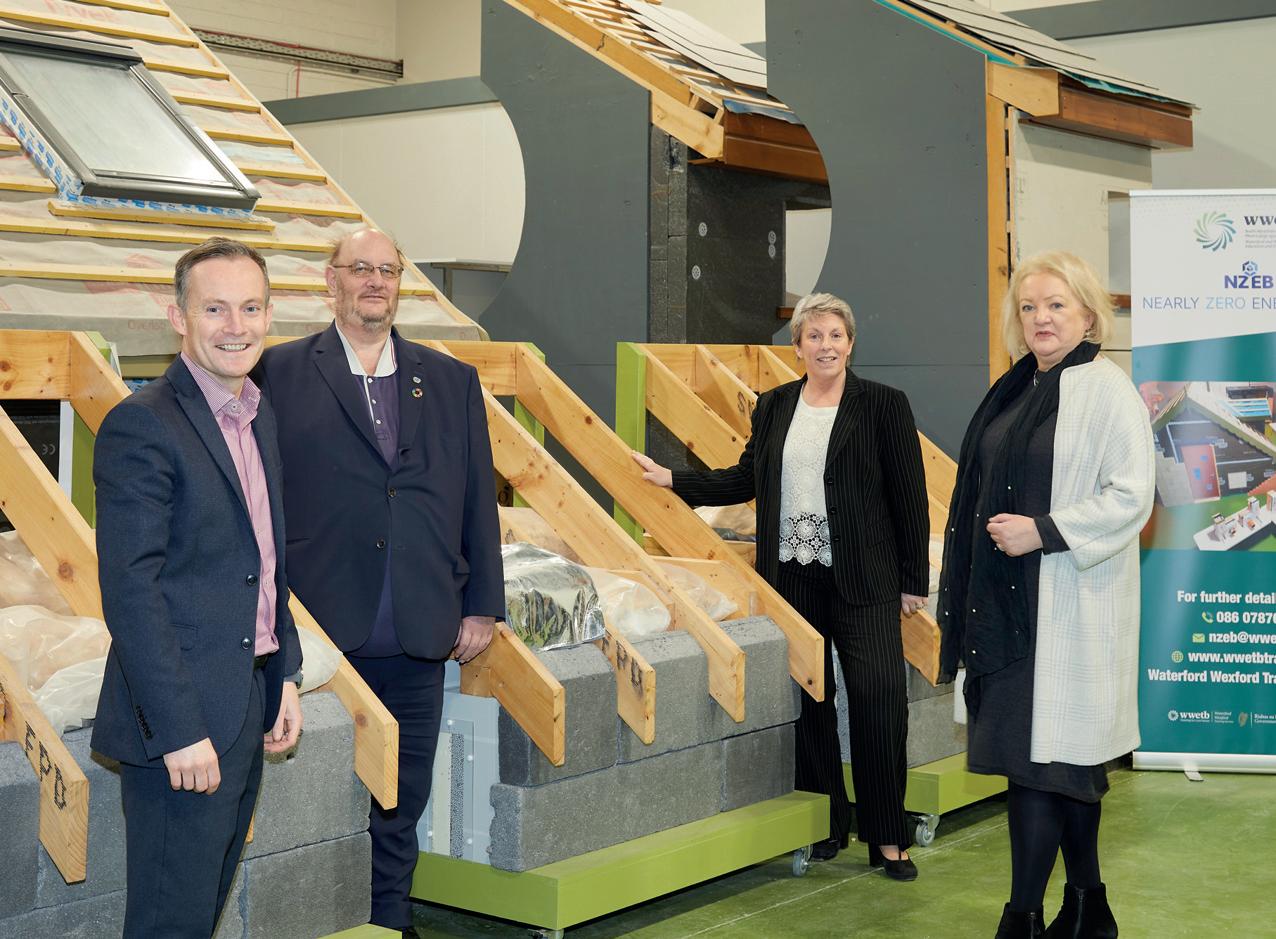
Waterford and Wexford ETB deliver several targeted courses in this area –including the NZEB Fundamental Awareness Course and the NZEB Retrofit Course – which cover topics such as:

• building fabrics, including continuous insulation, thermal bridging, and air permeability;
• renewable energy, including photovoltaics and smart metering;
• thermal envelope and building physics; and
• heating, including space heat and domestic hot water solutions in retrofits.
Fiona Maloney, ETBI Director of Further Education and Training Support Services says:
“The training we are delivering through ETBs for those who wish to enter the construction industry, and for those
already working in the sector who intend to upskill, is not only mission-critical to deliver on our national climate goals, but also presents a fantastic opportunity for workers to improve their skills and knowledge, leading to increased value in the jobs market. This professional development will lead to more effective and efficient retrofitting projects and will make sustainable practises a staple for all construction practices in Ireland.”
E: info@etbi.ie
W: www.etbi.ie
“In cooperation with our colleagues in SOLAS, the ETB network across Ireland is taking action to upskill learners in a wide range of green skills, and we are best placed to provide this vital retrofit skills training through the designated centres of excellence.”
Alan O'Gorman, Director of Further Education and Training, Waterford and Wexford ETB, Michael O’Brien, Waterford and Wexford ETB Innovation and Development Manager, Fiona Maloney, ETBI Director of FET, and Jo Cahalin, ETBI FET Future Building Skills Manager at WWETB Retrofitting Training Centre in Waterford.
123 retrofitting report Advertorial
Michael O’Brien, Innovation and Development Manager, Waterford and Wexford Education and Training Board
Climate Action Plan 2023 accelerates retrofit delivery ambition
Government
Published in December 2022, the third iteration of the Climate Action Plan (CAP) encompasses an objective to accelerate the delivery, rather than raise, the Government’s ambitions around retrofitting.
Climate Action Plan 2023 is the framework through which the Government intends to meet the economy-wide carbon budgets and sectoral emissions ceilings, as well as the emissions reduction targets set out in the Climate Action and Low Carbon Development Acts.
A target to retrofit 500,000 buildings to BER B2 by 2030 was first mooted in Climate Action Pan 2019, but the introduction of the carbon budgets has necessitated an acceleration in
delivery. The CAP sets out a target of all new dwellings designed and constructed to Nearly Zero Energy Building (NZEB) standard by 2025 and equivalent of 120,000 dwellings retrofitted to BER B2 or cost optimal equivalent.

Sectoral emissions ceiling
The sectoral emissions ceiling for the built environment has been set at 36 MtCO2eq. for the first carbon budget period, from 2021 to 2025, and 28 MtCO2eq for the second carbon budget period, from 2026 to 2030. These ceilings have been further subdivided between the residential and commercial/public subsectors, as set out in Figure 1.
To meet the ambition of retrofitting one-third
124 retrofitting report
ambitions to retrofit one-third of the State’s housing stock by 2030 have been given fresh emphasis under Climate Action Plan 2023, the framework to deliver economy-wide carbon budgets and sectoral ceilings.
of the State’s housing stock by 2030, it is estimated that some 76,000 retrofits per year must be completed from 2026 onwards, compared to 15,500 in 2021.
In 2021, the built environment (residential, public, and commercial sectors) accounted for 12.3 per cent of Ireland’s greenhouse gas emissions, underpinned by the fact that an estimated 73 per cent of dwellings still use fossil fuels as a heat source.
The National Development Plan outlined an unprecedented €8 billion (including €5 billion in carbon tax revenues) to support upgrades to 2030. The subsequent National Retrofitting Scheme includes a range of key measures, including the new National Home Energy Upgrade Scheme, the creation of one-stop shops, an increase in the number of free upgrades to those in energy poverty, and a special enhanced grant rate, equivalent to 80 per cent of the typical cost, for attic and cavity wall insulation for all households, to urgently reduce energy use as part of the Government’s response to current exceptionally high energy prices.
Skills
Investment will also be tailored to developing skills and enhancing the supply chain. The retrofit programme alone will require the associated workforce to increase from around 4,000 full-time equivalents in 2021 to at least 17,400. The Green Skills for Further Education and Training (FET) Roadmap 2021-2030, launched in 2022, provides a framework for enhancing the workforce, alongside the opening of additional Centres of Excellence will allow increased demand for skills in retrofit and NZEB to be met, with an overall NZEB training target for 2022 of 4,550.
Heat
Alongside retrofitting ambitions, CAP 2023 sets out the installation of 0.8 TWh of district heating capacity by 2025 and 2.5 TWh by 2030. By 2025,
Climate Action Plan 2023
Built environment key targets:
• all new dwellings designed and constructed to Nearly Zero Energy Building (NZEB) standard by 2025, and Zero Emission Building (ZEB) standard by 2030;
• equivalent of 120,000 dwellings retrofitted to BER B2 or cost optimal equivalent by 2025, and 500,000 dwellings by 2030;
• up to 0.8 TWh of district heating installed capacity by 2025, and up to 2.5 TWh by 2030;
• 170,000 new dwellings using heat pumps by 2025, and 280,000 by 2030;
• 45,000 existing dwellings using heat pumps by 2025, and 400,000 by 2030; and
• sup to 0.4 TWh of heating provided by renewable gas by 2025, and up to 0.7 TWh by 2030.
emissions
the Government hopes to have 170,000 new dwellings using heat pumps, rising to 280,000 by 2030. For existing dwellings the target set by CAP 2023 is 45,000 by 2025, rising to 400,000 by 2023.
Up to 0.4 TWh of heat is to be provided by renewable gas by 2025, and up to 0.7 TWh by 2030.
Importantly, CAP 2023 asserts: “All buildings will need to switch to heat pumps or district heating by 2050, meaning that the gas grid will no longer supply existing homes and commercial
premises. It will also require the urgent ending of new gas connections or the installation of new fossil heating systems in new or refurbished buildings. Where heating systems are being upgraded, this should be to non-fossil fuel systems.”
A new National Policy Statement on Heat will guide the Government’s overall response to the National Heat Study across all sectors and a key driver of change will be a new Renewable Heat Obligation, to be introduced by 2024.
125 retrofitting report
Sub-Sector Timeframe Percentage Change Absolute Change Residential 2005-12 -13.75% -1.2 2012-20 2.12% 0.15 Commercial/Public 2005-12 -19.11% -0.3 2012-20 8.41% 0.12 Total 2005-12 -15% -1.5 2012-20 3% 0.27
Source: Climate Action Plan 2023
Figure 1: Trends in built environment GHG
SSE Airtricity retrofit upgrades improving homes and benefitting communities
“Retrofitting is an investment in the home, and not just a long-term investment,” says Hobbs. “In the context of the current cost-of-living crisis, priorities on spending in households remain sharply in focus. Consumers are understandably wary of engaging with seemingly complex projects with perceived large costs but engaging with SSE gives them a sense of assurance. A completed retrofit upgrade has many benefits: a warmer home that costs less to heat, a potential increase in the future sale value of the property, and knowing you are reducing your carbon footprint and helping to tackle climate change.
“Our dedicated teams in SSE AES evaluate customers’ needs to guide them through the process from start to finish. The Generation Green Home Upgrade cuts through the complexity by providing a whole-home retrofit solution alongside straightforward lowcost finance options.
“We offer a one-stop shop and provide project management from pre-project energy assessments, contractor management to grant application and completion, simplifying and streamlining the whole process.
Part of Climate Act 2021 includes a national retrofit program aiming to see 500,000 homes, one-third of Ireland’s housing stock, retrofitted to a B2 building energy rating by 2030. SSE Airtricity Energy Services (SSE AES) is supporting the retrofit of an additional 30,000 homes in Ireland over the next 10 years, with around 4,000 upgrades already completed. These works will drastically reduce the emissions of thousands of homes, saving millions on energy costs for consumers and making their homes warmer, healthier, and safer. Once delivered, this will equal approximately €20 million in reduced energy costs every year.


Stuart Hobbs is the Director of SSE
AES, a business dedicated to building and home energy upgrades and utilising energy efficiency technologies to deliver a cleaner greener environment. SSE AES offers home energy upgrades under three different programmes: Warmer Homes, OneStop Shop and Local Authority EERP retrofit programs. These upgrades typically include external wall insulation, energy efficient windows and doors, heat pumps, solar PV and battery systems, and electric vehicle (EV) charging points. Hobbs explains the importance of the national retrofit program and how it has real and tangible impacts on householders and their quality of life.
“We have seen from recent partnerships that local authorities are leading the way driving for green change in their local communities, to the benefit of the whole community.
“SSE can and do support this leadership role for local authorities when it comes to retrofitting and upgrading their social housing stock and this fits with SSE’s overall sustainability goals.”
SSE Airtricity has been providing home energy upgrades since 2012, working with SEAI, local authorities and other housing bodies on joint initiatives. In 2022, SSE AES partnered with two local authorities, to help deliver their respective DECC funded Energy Efficency Retrofit Program (EERP)
The Irish Government introduced its Climate Bill in 2021, which sets out the agenda for how Ireland will reduce carbon emissions and achieve a climate-neutral economy by 2050.
126 retrofitting report Advertorial
Dún Laoghaire-Rathdown 2022 Retrofit of Beaufort Housing Complex, under the EERP program.
targets and upgrade more than 130 homes in local communities. Going forward, SSE AES hopes to work with more local authorities across the country on their EERP funded programs.
Hobbs states: “We can help local authorities deliver their EERP obligations by taking a lot of the hassle and complexity away, enabling them to deliver larger projects at a better cost and with more flexibility than their own resources might allow.


“Over the last decade, SSE AES has worked with many local authorities and housing bodies to deliver significant energy upgrades to fuel poor and social housing units and we have significant ambitions to expand and increase these partnerships.”

SSE manages the works from start to finish for both the individual applicant and on a partnership basis with local authorities or housing bodies. SSE also offers bridging finance for local authority EERP projects and has the contractors and resources ready and able to deliver in all 26 counties in the Republic of Ireland.
For further information on SSE’s AES EERP programme supports, contact Stuart Hobbs on:
Limerick City and County Council (LCCC):
SSE AES partnered with LCCC to complete the significant domestic energy upgrade work to 54 local authority homes under the EERP programme. Most of the homes lacked reliable heat sources, insulation, and ventilation which left them with an average BER of G and resulted in the homes being cold, damp, and expensive to heat. Through extensive community engagement, residents were informed about the advantages of this retrofit program and how it would benefit them. Residents were also shown how to operate their new heating systems (mainly heat pumps) to ensure they knew how to heat their homes effectively and efficiently. In total there was an 80 per cent reduction in the energy usage across all units, due to the energy upgrades.
In addition, costs associated with oil and solid fuels have been eliminated, providing additional savings to the residents. Improved air quality due to new mechanical ventilation systems means the homes are healthier and more comfortable to live in and cost efficient to run. This in turn helps both the tenants and the council to achieve their EERP targets and deliver on their aims in reducing energy usage as part of Climate Action policies.
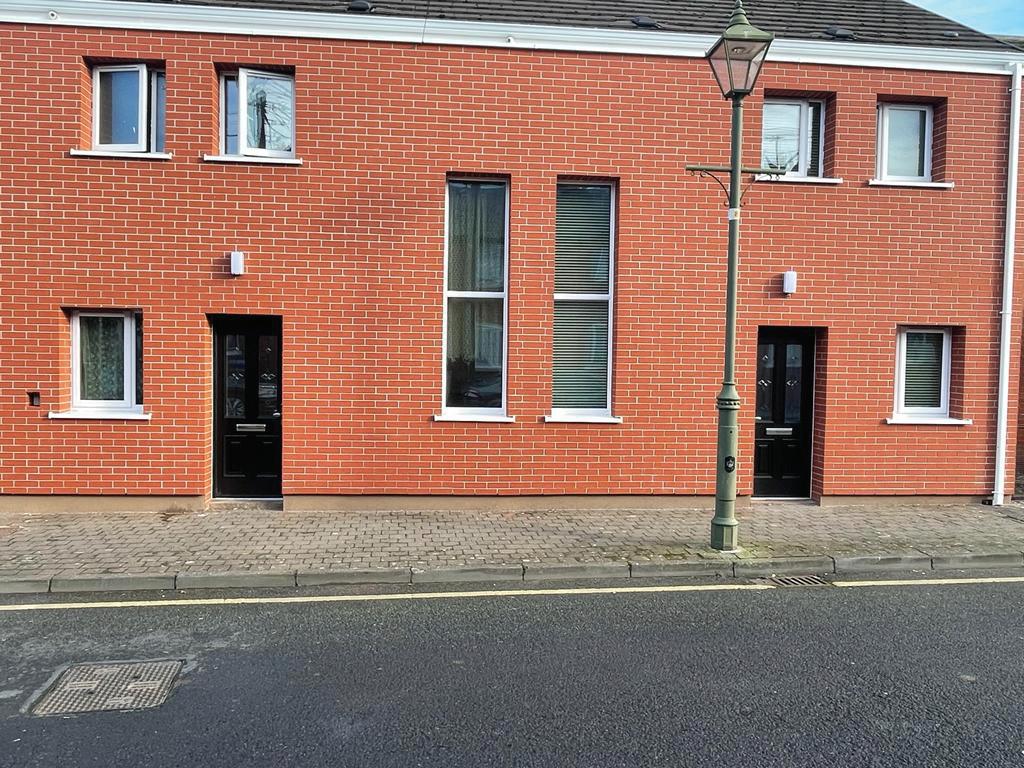
Dún Laoghaire-Rathdown County Council (DLR):

T: 087 923 6404
E: stuart.hobbs@sse.com
W: www.sseairtricity.com
SSE AES worked with DLR to upgrade 82 local authority vulnerable and fuel poor homes, under the EERP program. The properties had a BER rating of between E and F and were upgraded to B2 and above. The units upgraded included 58 OAP residential apartments in Beaufort. Typical upgrade works for deep retrofit included attic and external insulation, new A-rated windows and doors, solar PV, heating controls, and installation of heat pumps. The unique aspect of the apartment upgrades involved the first installed 14 kW cascade heat pump system, grouping 8 (14kW) Ecodan units, to replace three centralised gas fired boilers. This gave increased resilience and better certified energy efficiency per unit than installing a larger commercial heat pump system, with higher temperature outputs as the hot water in each unit was delivered via Solar PV and i-Boost systems.
The upgrades are projected to deliver 80 per cent energy savings across all units. All works were carried out with the residents remaining in their homes.
SSE EERP partnerships with local authorities in 2022
127 retrofitting report Advertorial
Limerick City and County Council 2022 Retrofit of Bishops Street, under the EERP program.
Almost 23,000 new workers needed for retrofit goals
Almost 23,000 new entrants will have to be recruited into managerial, professional, skilled, and semi-skilled occupations by 2030 if the Government is to meet its retrofitting targets, a government-commissioned report has found.
The 23,000 extra workers required to meet the Government’s retrofit targets through to 2030 will have to be supplemented by an another almost 25,000 extra workers needed to meet housebuilding targets in the same period, the report found. Commissioned by SOLAS (the Further Education and Training Authority) and the Department of Further and Higher Education, Research, Innovation and Science, the report also states that an extra 3,866 workers will be needed for repair and maintenance, bringing the extra workers necessary for the achievement of government targets to 50,831.

The bulk of the 22,779 extra workers needed in order to satisfy workforce requirements for the meeting of the Government’s target of retrofitting 500,000 homes to B2 BER standard by 2030 is made up of craft workers, with an estimated 12,266 needed between 2023 and 2030. 8,142 workers in other trades are estimated to be needed,
along with 2,369 professionally qualified workers.
The report takes 2019 as its base year, in which 3,870 workers overall were employed to work on the retrofit scheme, and reasons that its 22,779 estimate for recruitment will mostly be accounted for by the expansion of the scheme – with 18,180 workers to come to address this expansion and the remaining 4,598 acting as replacements for those leaving the retrofit workforce.


The Department of the Environment, Climate and Communications and the Sustainable Energy Authority of Ireland (SEAI) are targeting 500,000 homes to be retrofitted to B2 BER standard by 2030. Data from the Department and SEAI states that 33,300 homes were retrofitted to such standard in the threeyear period 2019-2021 and that it is expected that 14,400 will have been retrofitted in 2022. 71,300 homes are to be retrofitted to B2 standard in the three-year period between 2023 and
2025, meaning that 375,000 houses –76 per cent of the total target – will be retrofitted in the five-year 2026-2030 period.
Achieving this goal would require an increasing of the average amount of homes retrofitted per year to 75,000 during this period, which would mark a large increase on the 26,400 houses to be retrofitted in 2025 and “presents a significant challenge to the education and training system”.
Upskilling challenges
In its examination of the demands these targets will place on the education and training system, the report found that just 2,369 of the 22,779 to be recruited will be required to have third level qualifications, with the remaining 20,410 to be made up of those possessing National Framework Qualifications between levels one and six.
128 retrofitting report
Recent data shows positive developments in this regard, with enrolments in retrofit and NZEB training programmes having increased by 118 per cent between 2020 and 2021 and 156 per cent between 2021 and 2022. Enrolments stood at a record 2,034 in 2022. The Climate Action Plan 2023 seeks to provide for further places in such courses, with €29 million committed to upskilling and reskilling programmes and €10 million to green skills modules pledged in the hopes of providing 4,550 retrofit and NZEB places and 60,000 green skills places.
One of the key recommendations within the report centres on producing the amount of workers with such qualifications needed; it is recommended that a new training course be introduced to “produce workers who are capable of providing assistance to qualified craft workers who are engaged in the retrofitting of houses to a B2 standard” and that this course should be “modelled on the current nearly zero energy building (NZEB) fundamental awareness course”, which attracted 373 unique learners across nine courses in 2019. The intention behind the arranging of such a course would be the production of qualified retrofit assistants, “thus reducing the burden of work on for example, qualified plumbers”.
The report also recommends that
consideration should be given to the creation of a national centre for the development and assessment of construction skills that could be modelled on the National Construction College East in King’s Lynn, Norfolk that performs such a function for the UK. It is recommended that an audit be carried out at the National Construction Training Centre in Mount Lucas, County Offaly in order to investigate its potential to fulfil such as role. The National Construction Training Centre currently offers a wide range of training courses in retrofitting houses and “it has sufficient land for a significant extension in current capacity”.
Apprenticeships
Reaching the targets for both retrofitting and housebuilding will require both an increase in the numbers of apprentices registering for craft qualifications and a change of the focuses of those who are registering, the report illustrates. For example, 902 new entrants are required to meet targets for electricians in 2023, but more than double that figure – 1,949 –registered as apprentices four years prior; in comparison, 1,325 new carpenters are also required in 2023, but less than half of that figure – 628 –registered as apprentices four years prior.
Factoring in that the rate for those who
fail to complete their apprenticeships has never been lower than 25 per cent, it is clear to see that some craft professions will have a surplus of workers for the achievement of government goals while other professions face a deficit. The report does, however, note that “many of the education and training required involves the upskilling of existing workers rather than the introduction of new programmes” and such upskilling can be served by continuing professional development courses and education and training boards.
In order to maintain observation of such issues, the report also recommends that a forecasting model be “continuously updated in response to relevant changes in the external environment” and that this model use 2022 as its base year. It is also recommended that a group be set up by government consisting of the various institutions representing construction professionals to “generate ideas which would assist in the enhancement of productivity and sustainability in Irish construction” and that this “the coming together of professionals from many different disciplines would provide a fertile ground for the cross-pollination of ideas which, if implemented, could enhance sustainability and productivity”.
129 retrofitting report
0 10,000 20,000 30,000 40,000 50,000 60,000 70,000 80,000 0 2,000 4,000 6,000 8,000 10,000 12,000 14,000 16,000 20232024202520262027202820292030 Engineering support Total professionals Electricians Plumbers Carpenters Plasteres/wall tilers Painters Total craft Glazers Roofers Insulation Air tightness Other trades Total Number of retrofits (Source:
Department of Further and Higher Education, Research, Innovation and Science).
New entries needed by occupation per year for retrofitting (2023-2030)
The National Construction Training Campus: At the forefront of retrofit skills development
Facilities at this National Construction Training Centre include a large purposebuilt deep retrofit hall of 600 square metres that houses full-scale rigs representing the diverse range of retrofitting challenges encountered on most projects – everything from roof, wall, and floor insulation to airtightness application, ventilation installation and commissioning, and renewable energy installation. It is truly a showcase in terms of state-of-the-art upskilling facilities for those involved in delivering deep retrofits.
Programmes are scheduled as day, evening, and weekend courses to facilitate accessibility. Additionally, where feasible, courses offer a blended approach, with an appropriate mix of online and on-site delivery. Programmes are designed specifically to upskill those working in the construction sector, providing them with the knowledge and awareness of the NZEB standards as set down in Part L and Part F of the Building Regulations and that meet the requirements of the Climate Action Plan to upskill current contractors and other industry players in deep retrofit, NZEB, and new technology installations. Some programmes go beyond the NZEB standard, and the National Construction Training Centre at Mount Lucas also delivers the Certified Passive House Tradesperson course. Passive house buildings are energy efficient buildings that provide users with high levels of comfort and excellent air quality around the clock. As a result, building professionals often need additional expertise to ensure the high requirements for the passive house building envelope and technology can be met. This two-day blended learning


course is delivered online (one day) and onsite in the National Construction Training Centre at Mount Lucas (one day) and provides that expertise.
A BER (Building Energy Rating) assessment is an indication of the energy performance of a home and is required when an existing dwelling is sold or rented or when a new dwelling is built for sale. Crucially, BER assessments are also required to validate certain home energy retrofit measures that are funded through the grant schemes. The National Retrofitting Scheme therefore creates expanding
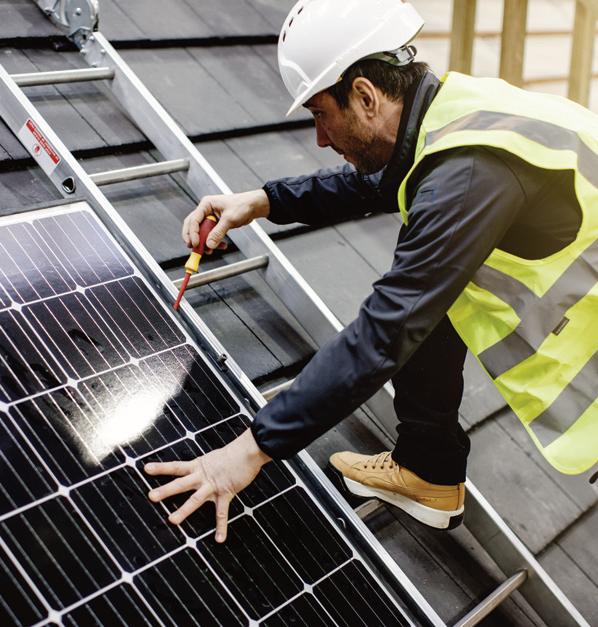

130 retrofitting report Advertorial
One of six national centres of excellence for nearly zero energy buildings (NZEB) and retrofitting training, Laois and Offaly Education and Training Board’s (LOETB) Mount Lucas Campus trained and upskilled 1,162 trainees during 2022, in the areas of NZEB and Retrofitting, achieving 57 per cent of the annual national target.
work opportunities for BER assessors and Laois and Offaly Education and Training Board (LOETB) provides a sixday BER Assessor Training Course for people with good computer skills, a Level 6 Certificate in a trade or construction or equivalent qualifications, plus relevant life and work experiences.
The Mount Lucas campus also offers practical programmes, which are industry recognised and ensure learners possess the skillset currently sought by employers to carry out the work required on domestic retrofitting projects such as external and internal wall insulation and airtightness. LOETB is in the process of gaining QQI accreditation for these programmes that will enhance the career pathways for those in the sector and enable progression to higher level programmes such as the extensive range of related programmes offered by TUS Midwest.
The key attraction for learners attending the National Construction Training Centre at Mount Lucas is the quality of both trainers and training rigs that provide a work-realistic immersive experience. Theory is greatly enhanced through enabling learners gain crucial experience in working, in a simulated work environment, with the very latest products, details and application methods with the support of expert tutors who are deeply passionate about delivering deep retrofits at scale.
LOETB is also catering for those requiring skills to enter the construction sector with programmes specifically designed for those with little or no experience in the sector. The Report on the Analysis of Skills for Residential Construction and Retrofitting 2023–2030 recommended that new training course should be introduced to produce workers who are capable of providing assistance to qualified craft workers who are engaged in the retrofitting of houses to an equivalent B2 standard. LOETB will launch this course in 2023. Similarly, the November 2021 Skills for Zero Carbon Report identified an

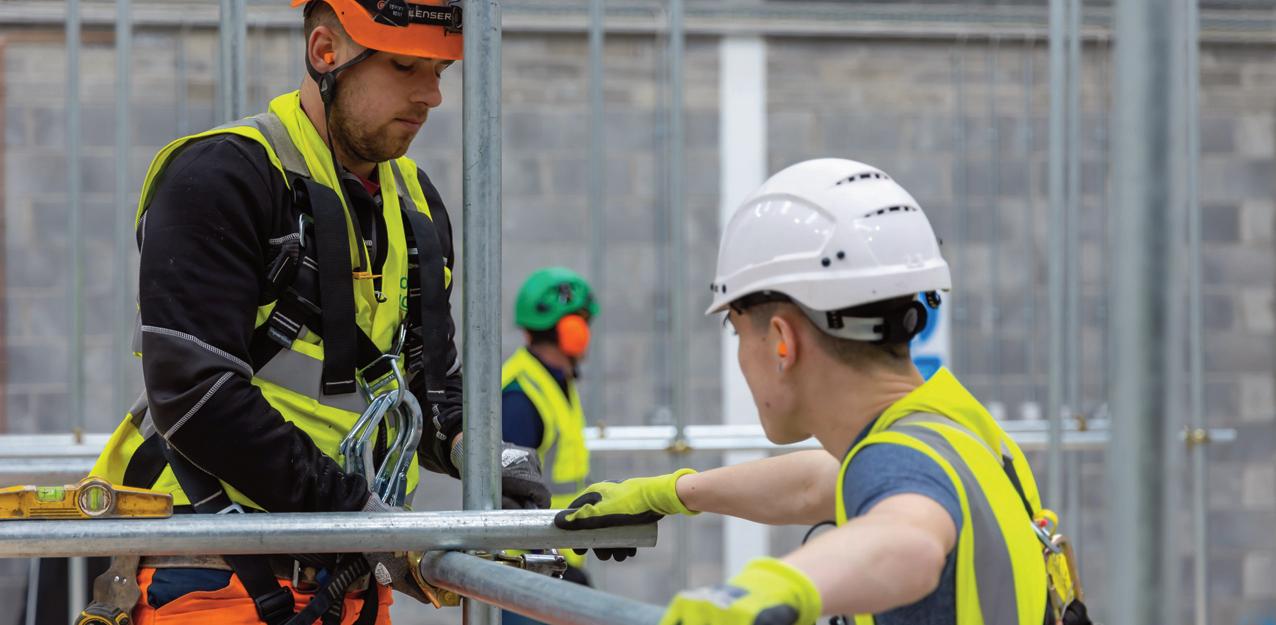
emerging occupation, ‘renovation/retrofit advisor’. LOETB has partnered with Generation – who provided a similar programme with the Retrofit Academy in the UK – to develop a programme that provides the knowledge and skillset to act a first point of contact, helping and supporting individuals whose properties are being retrofitted and providing essential backup to installers, assessors and coordinators with crucial organisational and administrative work.
LOETB’s Mount Lucas site has also been announced as host to Ireland’s National Modern Methods of Construction (MMC) Demonstration Park, supported under the Government’s Housing for All strategy.

The Irish Government has committed to promoting a culture of compliant and sustainable innovation in residential construction through the development of MMC. The park, which was officially announced by Minister for Further and Higher Education, Research, Innovation and Science Simon Harris TD in July, will help provide an accessible and interactive built resource for applied research, training, and demonstration.
While the overriding objective of MMC Park is to showcase and demonstrate MMC application to dwelling types that
are most urgently needed in Ireland as part of the Housing for All policy –dwelling types include semi-detached, terraced and apartments – a deep retrofit exemplar will also be included that must encompass aspects of MMC demonstration, containing at least some element of 2-D panels.
The focus on MMC has prompted LOETB to develop programmes that will directly relate to modern methods of construction skillsets – from BIM, TEKLA and Revit to construction assembly and installation.
The National Construction Training Campus, which also hosts Ireland’s first scaffolding apprenticeship, is progressing towards a one stop skills shop for the built environment as it develops and implements programmes that focus on skills gaps in the construction sector and contribute to the country’s ambitious retrofit and house building targets.

W: www.mountlucas.ie
E: info@mountlucas.ie
131 retrofitting report Advertorial
Indoor air quality and ventilation in deep energy retrofitted Irish dwellings
Coggins was one of eight authors of the report Indoor air quality, thermal comfort, and ventilation in deep energy retrofitted Irish dwellings that monitored the air quality, thermal comfort, and ventilation in homes that had participated in the SEAI’s deep retrofit pilot programme between 2018 and 2020. The research, funded by SEAI, found there to be only four bedrooms surveyed that had carbon dioxide concentrations within the optimal Category I limits for CO2 in bedrooms, from EN16798, the European standard governing thermal comfort.

Homes involved were up to 52 years old, and at the time of the studies, the homes were 12 months to three years post-retrofit. There was a mixture of detached and semi-detached homes with floor areas ranging from 50m2 to 300m2, all with cavity walls and non-
smoking residents. There was a significant increase in the BER of the homes post-retrofit and associated with that was a significant improvement in air tightness.
The researchers examined volatile organic carbon, a term for many different chemicals that are volatile at room temperature, carbon monoxide, carbon dioxide, temperature, and relative humidity. Homeowners completed a detailed questionnaire that included questions about thermal comfort, perception of the retrofitting process, and how happy the homeowners were with the end product. Homeowners also completed a diary, noting tasks such as cooking, burning candles, and cleaning pets that can generate pollutants and that is needed to understand what was going on at any given time in order to
understand spikes in the data received around pollutants in the home.
“Unfortunately, only 35 per cent of homes complied with the ventilation requirements in S.R. 54 [the standard that had regulated retrofits at the time] and if we were looking at the current requirements, only 21 per cent homes complied with ventilation requirements in the current building regulations,” Coggins says.
“Following the surveys, we prepared a newsletter for the homeowners and some of the homeowners followed up with the retrofit providers and asked to have their ventilation systems checked. In many cases the underperformance was due to lack of servicing.
“If we look at the data we found in the homes, we can see that the thermal comfort was okay, with only 30 per cent


Research evaluating home retrofits in Ireland has found that air quality and ventilation were not always within acceptable limits, University of Galway Senior Lecturer in Exposure Science Marie Coggins tells eolas Magazine.
132 retrofitting report
of bedroom data outside of Category 1. Up to 50 per cent of living area data was outside of Category 1, but this was primarily due to the glazing in these living rooms. Higher concentration of all air pollutants studied were detected in bedrooms, suggesting underventilation.”
PM2.5 (small solid or liquid particles suspended in air) exposure is said to be responsible for about 1,300 premature deaths annually in Ireland, but this data only relates to outdoor exposure and Coggins points out that 70 per cent of our exposure to fine particulate matter actually occurs indoors. Other chemicals, such as formaldehyde, which has been classified as a 2A carcinogen, are regularly measured. Radon is also “a significant challenge” for Ireland and is a class one carcinogen, causing one in 10 lung cancers.
“In terms of formaldehyde, we are above the recommended one-year long-term exposure limit recommended by [United States federal agency] the Agency for Toxic Substances and Disease Registry,” Coggins says. “With radon, which is particularly important with retrofit, we have indicated the homes within high radon areas and of course they are the homes most likely to exceed recommended radon levels.
“In terms of fine particulate matter, most of the time we were able to see that night-time CO2 and PM2.5 was negatively correlated, suggesting that most of the particulate was coming from occupant activity in the home. This was corroborated by what we saw in the diaries: cooking breakfast, lunch, and dinner, candle and incense burning caused high spikes of PM. There was very low reported use of cooker hoods, another issue related to ventilation.”
Despite these findings, Coggins says that the returned questionnaires showed that people were “very happy with the thermal comfort post-retrofit and were happy with the air quality in their homes”. This is partly due to a challenge with perception, she says:

“Humans are incapable of sensing the concentrations of pollutants at levels that matter. We need more education to create a greater awareness of the importance of indoor air quality but there is also a role for low-cost sensors like we had during the pandemic with CO2 sensors to help us flag when ventilation is not right.”
Indoor air quality is of particular interest in Ireland, which has “fourth highest rate of asthma occurrence in the world and the third highest rate of COPD” and, as Coggins says, “many of the pollutants that we detect indoor are triggers for these conditions”.
133 retrofitting report 4
“Retrofitting provides a real opportunity to transform the living conditions of millions and improve our health and wellbeing.”
“Retrofitting provides a real opportunity to transform the living conditions of millions and improve our health and wellbeing,” she says.
Key to this is further regulation around ventilation and further education, Coggins says, enabling the development of a true awareness of indoor air quality.

“There is no requirement to install extract ventilation in bedrooms, where we found much higher levels of indoor pollutants. We have requirements to ventilate wet rooms such as ensuites but not bedrooms. We spend eight to nine hours per day in the bedroom and it is important to have good ventilation in there. As we move towards more hybrid models of working, more people are using their bedrooms as offices, so we need to look at that. We need more compliance with the ventilation aspect of retrofit; as we make the building more airtight, the main exposure control we have is ventilation. Since this study was completed, there has been an introduction of third-party ventilation
checks, which is good, but it does not include cooker hoods or ongoing maintenance of the system. Homeowners do not perceive indoor air quality as an issue and are not aware of how to deal with such issues.
“For the building sector, we have to select low chemical emitting products. We were able to correlate bedroom and living room materials to suggest that the main source of volatile chemical carbons such as formaldehyde were in the building materials. That is not new and has been seen across Europe. Other countries have reacted by introducing labelling systems, to help select low emitting volatile organic compound products, and we could introduce something similar here. The other aspect is, as we train more people to provide nearly zero energy buildings, we need to make sure that indoor air quality is part of the curriculum and that we are delivering healthier outcomes,” she concludes.
134 retrofitting report
“Since this study was completed, there has been an introduction of third-party ventilation checks, which is good, but it does not include cooker hoods or ongoing maintenance of the system. Homeowners do not perceive indoor air quality as an issue and are not aware of how to deal with such issues.”
Taking a fabric first approach to retrofitting training
The Waterford and Wexford Education and Training Board (WWETB) retrofit training course in the NZEB Training Centre is based on the National Standards Authority of Ireland’s SR:54. The national standard aims to bring our retrofit projects to a BER rating of B2, which is 125kWhm² per annum.

The training also focuses on international standards PAS 2035 which introduces the trainees to the new role of the retrofit coordinator. Successful retrofits begin with a robust survey and assessment of the building. Having assessed the project, we explain the requirement to plan and design solutions, since each home is different with respect to construction and user type.
The training takes a “fabric first” approach, so we look at different strategies to make the thermal envelope (roof, walls, floor, windows, and doors) more energy efficient. There are a variety of wall rigs on display in our training centre, demonstrating examples of the different
approaches that can be taken to improve U-values, depending on the construction. Retrofitting the junctions between the elements is crucial, so the theory is translated into practical exercises that instil best practice and demonstrate how to mitigate thermal bridging.
Next, we analyse the airtightness levels of our dwellings and, more importantly, the vapour movement within and vapour balance between the humidity producing activities within the dwelling. We demonstrate how improvements to airtightness and humidity levels are achieved. We simulate a blower-door test in the purpose-built airtight house. There are practical exercises, where specialised
membranes and tapes are applied to a custom-built airtight rig. Spray on liquid membrane is demonstrated, and the combination of insulation and membrane applications reinforce the theories learned.
A new addition to the training is virtual reality exercise, where the learner virtually insulates a variety of wall and roof types. Airtight exercises are included, and the sequencing required for the strategy is examined. The learner experiences the process of installing a ventilation system, in a virtual building site. These exercises have proven to be hugely beneficial, demonstrating the sequencing that these tasks require. The correct ventilation strategy for a retrofit, is hugely important, and approaches taken are dependent on the building type and scope of the retrofit. We examine solutions, such as MVHR, which are very intrusive, and other options, such as decentralised systems which are less invasive. We look at ventilation strategies specific to retrofit scenarios, and demo these in the airtight house.

We analyse case studies that demonstrate the problems and solutions to different scenarios that are encountered. Case studies that are exemplar in retrofit going beyond the B2 standard to the EnerPHit standard; they focus on various issues that will occur in our retrofits, fabric, airtightness, doors and windows, ventilation, and renewable energy technologies.
You may be eligible for Government Skills to Advance funding to attend an NZEB Training course (Irish PPS number required). Please contact for more details.

E: nzeb@wwetb.ie
W: www.wwetbtraining.ie/nzeb
Brittany and Joss, staff with WWETB demonstrating the use of VR in the delivery of the Retrofit course.
135 retrofitting report Advertorial
Grant continues to support the deployment of renewable home heating technology across Ireland
The company, which is headquartered in Birr, County Offaly is at the cutting edge of sustainable and innovative product development and continues to adapt and expand its product portfolio to include a wide range of renewable heating technologies including air to water air source heat pumps, solar thermal panels, underfloor heating, hot water cylinders, aluminium radiators, and condensing wood pellet boilers.

A key feature in many new build properties including social housing developments, the Grant A+++ Aerona3 R32 air to water, air source heat pump is available in four outputs (6kW, 10kW, 13kW, and 17kW) and offers a superior seasonal coefficient of performance (SCOP) even at colder temperatures. This award-winning heat pump range has become a popular choice amongst property developers and local authorities due to its cleaner,
more environmentally friendly performance, and ability to lower a property’s overall carbon footprint.
Heat pumps are being used most commonly as the main heat source in new build homes although they are also an efficient option for older homes which are undertaking a deep retrofit. Despite retrofitting numbers having dropped drastically in Ireland in recent years, the Government’s Climate Action Plan has a target to reduce emissions from the residential sector by retrofitting the equivalent of 500,000 homes and installing 400,000 heat pumps in existing homes to replace older, less efficient heating systems by the end of 2030.
To support the move to heat pump technology, Grant has diversified its education offering for installers, architects, engineers, and local authorities, to include CPD courses via its onsite Training Academy and online eLearning Academy.
For over four decades Grant’s innovative heating solutions have been helping to address the problem of rising energy costs and to reduce carbon emissions, whilst contributing towards a greener future.
136 retrofitting report Advertorial
Stephen Grant, Founder, Grant Engineering
Commenting on the company’s commitment to helping reduce Ireland’s carbon footprint in the home heating sector, Barry Gorman, National Renewables Sales Manager at Grant said: “We are delighted to be supporting many social housing projects, new build developments and retrofit projects throughout Ireland to help to advance the deployment of renewables. Now is the time to educate those in the heating trade as well as homeowners of new and existing homes throughout Ireland on the importance of choosing renewable heating technology, like our Grant Aerona3 heat pump system. Our heat pump technology can deliver a fully decarbonised, resource efficient home heating system, whilst also allowing long term cost saving and increased comfort.”
Grant’s diverse range of renewable heating technologies work together seamlessly, to provide a fully integrated, efficient, and cost-effective heating system for a property.



Gorman adds: “When installing a heat pump as part of a retrofit, Grant Afinia aluminium radiators would be the most common choice heat emitter. Designed to work effectively with low temperature heating systems, the Afinia range pairs easily with our Grant heat pump range. For a new build property, many homeowners opt for underfloor heating as the heat emitter of choice. The Grant Uflex underfloor heating system also works effectively at low temperatures so is the perfect choice heat emitter to complement the highly efficient Grant Aerona3 heat pump in a new build, to conserve energy and make financial savings.”
Whether the Grant Uflex underfloor heating system or Afinia aluminium radiators have been chosen as part of a new build project or retrofit, it is important that both heating technologies are sized and specified correctly by Grant’s team of technical specialists. By submitting property plans and heat emitters of choice, property developers and architects can avail of Grant’s free of charge heating design service to ensure all chosen heating technologies are specified correctly in line with the property and its occupants needs.
In recent years, Grant has largely transformed into a renewable heating company with a portfolio including biofuel ready condensing boilers, condensing wood pellet boilers, solar thermal panels, underfloor heating, hot water cylinders, aluminium radiators, and air to water air source heat pumps. Grant’s innovative heating technologies are playing an important part in helping properties become sustainable as the journey continues towards achieving a zero-carbon future for Ireland.
W: www.grant.eu
Twitter: @GrantIRL
Instagram: @Grant_IRL
LinkedIn: Grant Engineering ULC
“We are delighted to be supporting many social housing projects, new build developments and retrofit projects throughout Ireland to help to advance the deployment of renewables.”
Barry Gorman, National Renewables Sales Manager, Grant
Grant Aerona3 R32 10kW air to water air source heat pump
137 retrofitting report Advertorial
Grant Uflex underfloor heating and screed
EU sets new building emissions standards
Fit for 55 is the EU’s model for reducing CO2 emissions by 55 per cent by 2030 compared with emissions in 2005. The new regulations stipulate that all publicly owned buildings must be carbon neutral if they are constructed from 2028 onwards, and that this must apply to all buildings, public or private, from 2030 onwards.

For existing buildings, member states agreed to individual measures for residential and non-residential buildings, with the goal of ensuring carbon neutrality for all buildings in the EU by 2050.
For existing non-residential buildings, agreement was reached on maximum energy performance thresholds which are to be based on primary energy use. The first of these outlines a reduction in primary energy use of 15 per cent of the worst-performing non-residential buildings in a member state by 2030, with a second threshold of 25 per cent
to be met by 2034. The EU clarifies that the thresholds would be set based on the energy use of the national building stock on 1 January 2020 and may be differentiated between different building categories.
For existing residential buildings, member states agreed on a suite of measures which will set minimum energy performance standards. These standards are based on a national trajectory aligned with the progressive renovation of building stock towards zero-emissions by 2050, as outlined in states’ respective national building renovation plans.
The national trajectory would correspond to the decrease of the average primary energy use in the whole residential building stock over the period from 2025 to 2050 with two control points to keep stock of member states’ achievements. These would ensure that the average primary energy
use of the whole residential building stock is at least equivalent to:
• the D energy performance class level by 2033
• a nationally determined value by 2040.
The EU will further require a new category A0 to the energy performance certificates which will correspond to zero-emissions buildings. Furthermore, this will enable member states to adopt a new category, A+, corresponding to buildings, which, in addition to being zero-emissions, contribute on-site renewable energy to the energy grid.
Existing energy performance certification for buildings, previously set by the Directive, ranks buildings on a scale from A (best performing) to G (worst performing) based on their energy performance.
138 retrofitting report
Under the Fit for 55 Programme, the EU has made changes to Energy Performance of Buildings Directive and Construction Products Regulation.
Clúid Housing is going green
our homes and ensuring all Clúid-owned properties meet a minimum Building Energy Rating of B2 by 2030.
Since 2018, deep retrofit works have been completed on 1,417 properties at a total cost of over €20.5 million, including installing insulation, LED lighting, new energy efficient heating systems, and new doors and windows. A further 600 properties are planned for retrofit works by the end of 2024.
Almost 29 metric tons of CO2 have been saved as a direct result of the retrofit works carried out since 2020.
Of course, retrofit works not only contribute to meeting vital climate action goals, but they also create more comfortable and energy efficient homes, which are less expensive for residents to run.
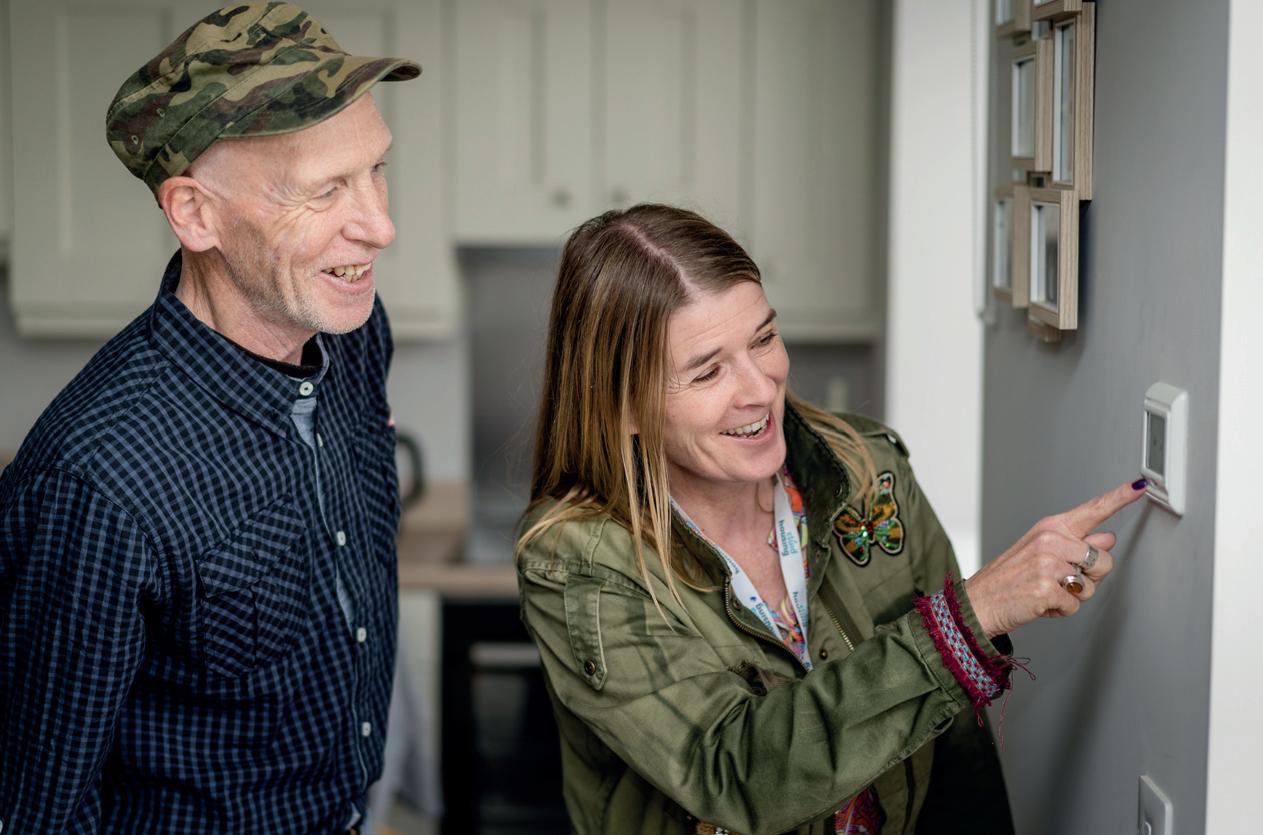
Feedback from residents has been extremely positive, with one resident at a recently retrofitted property commenting: “The heating is amazing, really and truly very cosy. Way better than that storage heating. It has made our home much cosier. The new windows are fabulous. The place is lovely and very cheap to run. 100 per cent very happy.”
The residential sector can make an important contribution to reducing Ireland’s climate impact. Clúid Housing is committed to implementing meaningful sustainability across our organisation – creating sustainable homes and communities for our residents and playing our role in achieving Ireland’s climate action targets. We want every Clúid resident to live in a low-carbon, affordable home, in a place that promotes positive wellbeing and sustainable living.
Throughout 2020, Clúid’s National Sustainability Manager Susan Vickers
developed a dedicated greening strategy, Building a Sustainable Future Together. The strategy sets out Clúid’s path to providing for a greener future for our residents and staff and is based around three key pillars: build green, live green, and be green. These pillars address our key environmental risks and opportunities, and the issues that matter most to our stakeholders.
Central to our greening strategy, and the requirement to cut carbon emissions, is the delivery of our ambitious retrofit programme. We are committed to maximising the energy performance of
Susan Vickers, National Sustainability Manager says: “We believe that as the largest Approved Housing Body in Ireland, Clúid has a responsibility and an opportunity to demonstrate leadership in driving the environmental and climate action agenda. We aim to do this by setting ambitious goals for ourselves, using our voice to raise awareness of the issues, convene debate and advocate for change.”
T: 01 707 2088
E: svickers@cluid.ie
W: www.cluid.ie
139 retrofitting report Advertorial
Clúid is rolling out a major retrofit programme to help tackle fuel poverty for its residents and to improve the sustainability of its existing housing stock.
Changing attitudes: Retrofitting and fuel switching
Fylan outlines a range of behavioural change research in sustainability, carried out in the context of a growing acknowledgment that not only is the transition to net zero going to bring about fundamental changes to energy use in the home, but also that retrofit will play a key role in all envisaged alternative fuel futures.
Fylan, a professor at the Leeds Sustainability Institute at Leeds Beckett University, explains that research with the public and installers around alternative heating solutions, including hydrogen, heat pumps, and retrofitting, have led her to three key research findings:
1. There is an increased awareness of the need for change in the context of the energy trilemma;
2. Trust is a critical component of changing behaviours; and
3. A significant challenge exists in the upselling of efficiency and comfort.
Focusing on the privately owned and private rental markets, Fylan says that the energy trilemma – the need for energy to be sustainable, secure, and affordable – plays an important role in attitudes towards retrofitting. However, she stresses that the historical view that the public is resistant to change is outdated. Instead, research indicates a broad acceptance of the need to change and for change to happen in the near term.
“People are increasingly aware of how heating their homes is affecting the environment and that they have a responsibility to make changes. To use less energy and to reduce carbon emissions both for themselves and for future generations.

“A big plus in relation to alternative
heating systems is that people think that a shift in their energy use to zero carbon heating is a relatively easy step to take. So, in terms of the sustainability element of the trilemma, we are largely there, people are onside.”
Fylan pinpoints a noticeable recent change in relation to the cost element of the trilemma. Where previously concerns centred on support for the most vulnerable members of society, recent price increases have seen that concern broadened to include their own situation. Stressing therefore, the importance of keeping costs controllable, the professor says that a particular concern raised about taking part in trials of alternative energies is the potential rising costs beyond any trial or support period.”
On energy security, research finds that


Health psychologist Fiona Fylan says that while public acceptance of the need to retrofit their homes is increasing, barriers still exist, including a lack of public confidence in policies, and installer reluctance to recommend retrofitting.
140 retrofitting report
Russia’s invasion of Ukraine has increased the public’s awareness of the source of their fuel, and their interest in locally produced fuels. “People are very interested in the fact that both hydrogen and heat pumps are going to increase energy resilience.”
Trust
Fylan’s research suggests that historical assumptions that people would be concerned about the safety of hydrogen are somewhat unfounded, with the public trusting that adequate testing had been carried out. However, where trust was found to be lacking was in relation to contracts with energy companies. “People expressed a lack of trust in being tied into a relationship they cannot get out of or have no control over. So, district heating, for example, or standing charges for retrofits. They want confirmation that if costs do rise substantially or become less favourable, they have the option to switch to a different supplier or change their heating source.”
Some remedy for this concern, which bore out in the research, is personal recommendations from friends or family, and reassurance from trusted suppliers.
Interestingly, Fylan highlights the role installers have in the uptake of alternative heating technology and how they can act as a potential barrier. On upselling the efficiencies of retrofitting when installing new appliances, the professor points to the challenges of perceptions that customers are very price sensitive.
“Our research suggests that the most cost-effective approach is a whole-house approach to retrofit and so it would make sense that, when quoting for a job, installers offer the option of increased energy efficiency. However, the reality is that often installers are reluctant to upsell retrofit for fear it will make their quote noncompetitive,” she explains.

“This is despite evidence which suggests that customers are more willing to spend money on energy efficiency improvements because of the large increase in energy prices.”
Further challenges in relation to installers flagged by the research is a wariness around new technology and new techniques, as installers need to guarantee their work, but lack experience of, and so confidence in, the new technology or techniques. Similarly, installers dislike retrofitting old buildings due to the increased complexity.
She adds: “Now more than ever people are willing to pay for energy efficiency improvements, but they want to know how much it is going to cost and how much they are going to save. Some of the biggest barriers to upgrading insulation and installing heat pumps are that people do not feel like they are getting a personalised service. They are not getting to see figures for their specific home or their potential savings.”
A final barrier identified by Fylan is around retrofit standards. She explains: “Some installers have a perception that retrofit is an unskilled job. There is very low awareness and credibility of retrofit standards and scepticism around potential negative consequences of on-site adaptations. There appears to be a real lack of awareness of the importance of how what they are doing onsite can affect the building’s performance substantially.”
Summarising the research findings, Fylan concludes: “The energy trilemma is having a marked effect on people’s acceptance of alternative fuels and retrofitting. Additionally, trusted installers have a major role in increasing energy efficiency, but there is a noticeable reluctance to retrofit older buildings. Low awareness and understanding of retrofit standards could compromise thermal efficiency and comfort.”
141 retrofitting report
"The reality is that often installers are reluctant to upsell retrofit for fear it will make their quote non-competitive.”
Breffni Eco Group: Expertise in deep retrofitting

Given the global focus and effort on energy reduction and alleviating energy poverty, Breffni Eco Group is now a one stop shop for the design and delivery of deep energy retrofit works across the country.

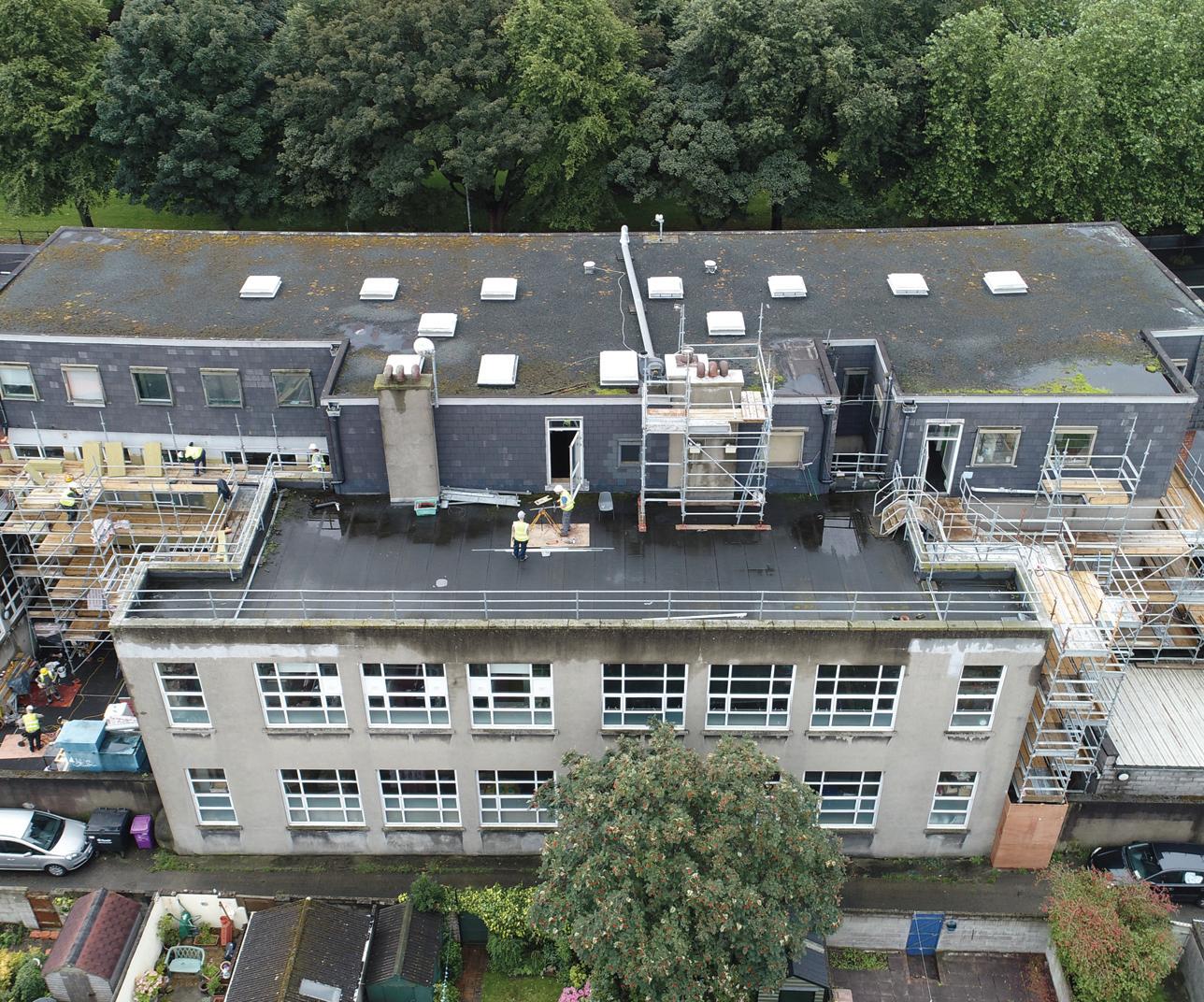
These energy efficient upgrades achieve amongst other things reduction in CO2 levels, improving home comfort and reducing energy costs for all who avail of the measures but more importantly the most vulnerable in society. Our knowledge and expertise in the insulation and energy upgrade market makes us the partner of choice for SEAI, local authorities, Department of Education, HSE, and commercial and private customers having successfully serviced and delivered complex projects across all these sectors for nearly three decades.
Breffni Eco Group have a growing team of more than 40 direct employees as well as an extensive network of loyal and trusted subcontractors which are coordinated and managed by a dedicated and experienced team of construction professionals.
Our services include, consultation, design, and delivery of all energy upgrade measures, including bonded bead cavity wall insulation, internal and external wall insulation, spray foam insulation, roof, attic and acoustic insulation, airtightness solutions, heating and heating controls upgrades, and ventilation systems. Renewables including solar PV and thermal, EV chargers, and heat pumps as well smart technologies. Complete window and door replacement works as well as associated builders works to provide a complete turnkey service.
A customer-first approach to meet programme requirements and operational processes
Breffni Eco Group have successfully delivered on behalf of SEAI for close to two decades through our participation in a variety of schemes, including the Better Energy Warmer Homes Scheme, One Stop Shop, Better Energy Homes, Better Energy Communities Schemes, and Deep Retrofit Pilot Scheme. We understand that many customers that avail of the scheme are those facing fuel poverty, those with disabilities, older populations, and other vulnerable sectors of society that may require special care. We also understand that in the majority of cases the homes will be occupied at the time the works occur. It
Breffni Insulation was established in 2006 providing insulation solutions and is now part of the Breffni Eco Group of companies which is a proven leader in the design and delivery of energy reduction measures across the Irish construction industry.
Before and after Marino College.
142 retrofitting report Advertorial
is of the utmost importance that anyone working directly with the customer understands the technical and operational requirements of the scheme in its entirety, including the contractor code of conduct.
Upgrading occupied homes to energy poor and vulnerable customers
Breffni Eco Group strive to install measures in a way that minimises disruption to the homeowner at all times, however, there are some measures where some level of disruption is to be expected. This is especially true on deeper retrofit projects that include measures like external wall insulation, internal wall dry lining, window and door upgrades, and heating system upgrades. We reduce the inconvenience to the customer by using utilising our experience, visual aids, and documentation to describe each measure being installed, the benefit of each measure, and the installation process including the anticipated timeline.
Local authority retrofit projects
Given our proven history and quality rating on the aforementioned schemes we have the required understanding, policies and processes in place to successfully deliver a large volume of shallow and deep retrofit projects in line with the required scale, complexity and nature to energy poor customers as well as to the wider construction sector.
As main contractor, Breffni Eco Group have successfully completed and are currently delivering large scale, complex, deep energy retrofits for multiple local authorities across the

country under their retrofit frameworks such as Fingal, Longford, and Louth county councils. These works are being coordinated and delivered while the homes are occupied and requires meticulous planning, communication, and sensitivity.
As with any energy upgrade the approach is always a “fabric first” approach to ensure that the required HLI is achieved for optimal heating efficiency. Depending on the house type and age, the walls will typically require cavity bead insulation and/or external insulation as well as roof/attic insulation along with window/door replacement, airtightness measures, and ventilation. Generally, the existing heating system is replaced with an air to water heat pump, with heating controls and upgrade of radiators. This allows for separate heating and domestic hot water zones. As with any major renovation, there may be ancillary works which we have completed by our skilled trades teams simultaneously with the energy upgrade works, such as enabling works roof remedials and upgrades, civil works, internal finishes, tiling painting and decorating.
Department of Education: school retrofit projects
Breffni Eco Group in conjunction with a partnering company successfully tendered and delivered the Schools Energy Upgrade – Pilot Scheme 2020 –Design and Build Marino College, Marino, Dublin 3 on behalf of Limerick and Clare Education and Training Board.
This was a design and build energy upgrade of Marino College to bring the building from a BER of E1 to a B3. Using the information obtained during
surveys and through discussions with school staff, BER modelling and economic analysis were carried out on a variety of different solutions to optimise the measures. A holistic solution was developed for Marino College, incorporating several measures which, combined, delivered a B3 BER and provided over 50 per cent reduction in energy use and carbon emissions. These measures ensure the school will be a more comfortable and healthier place to work, teach and learn, supporting the school in achieving its motto of enabling, enhancing, and educating. The measures installed were a complete replacement of the heating system including new gas boilers, external wall insulation, roof insulation, LED lighting, and energy meter.
Meeting and exceeding technical, industry best practice and operational requirements
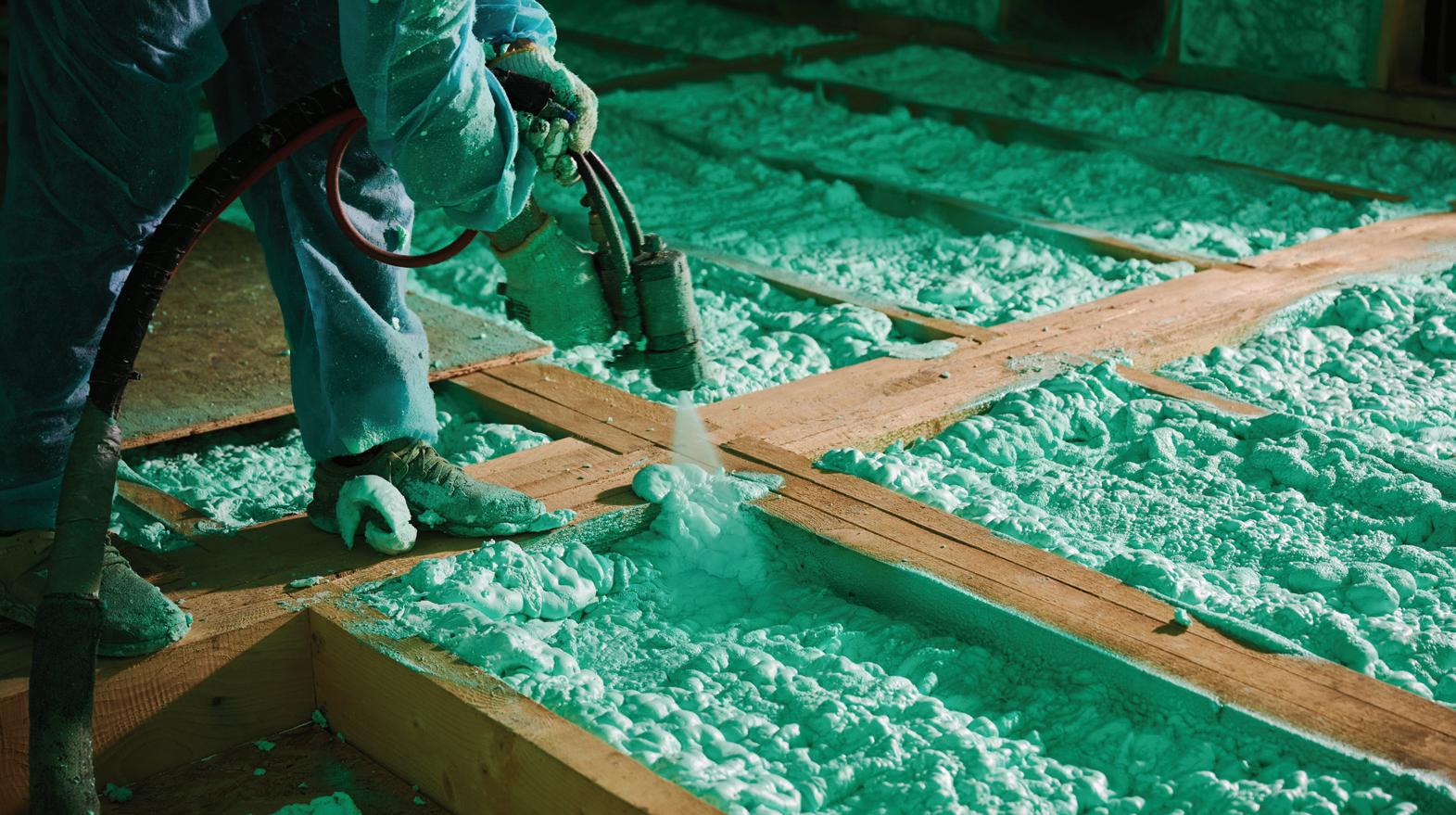

Breffni Eco Group as a contractor delivering works across all SEAI and local authority schemes on the for the past two decades, we understand the importance of meeting the technical and operational requirements of the scheme on every project. Our operational and quality management approach ensures we consistently meet industry best practice among our internal operatives and with network of subcontractors.
Breffni Eco Group operate under a certified quality management system to I.S. EN ISO 9001:2015, environmental management system to I.S. EN ISO 14001:2015, and occupational health and safety management system to I.S. EN ISO 45001:2018 and are constantly striving to adapt new innovative technologies to increase efficiency and ensure quality.
Breffni Eco Group
Bank House, Main Street
Kilnaleck, County Cavan A82 PA97
T: 049 437 4447
W: www.breffniecogroup.com
E: info@breffniecogroup.com
143 retrofitting report Advertorial
President of the European Court of Human Rights: Síofra O’Leary

In November 2022, Dublin-born Síofra O’Leary was appointed the President of the European Court of Human Rights (ECHR), becoming the first woman to hold the position.

A University College Dublin (UCD) alumni and Honorary Bencher for the Honourable Society of the King’s Inns, Ireland, O’Leary has been a judge of the ECHR since July 2012 and served as Vice-President of the Court since 2022 before replacing Robert Spano as President.
Speaking at the official opening of the judicial year 2023 on 27 January in Strasbourg, O’Leary said in her maiden speech that she felt the heavy responsibility entailed by the office, “bequeathing the Convention edifice intact to future generations”.
Based in Luxembourg, the Court ensures compliance with EU law and rules on the interpretation and application of the treaties establishing the European Union.
As well as representing the Court and directing its work, the president is also responsible for relations with the Council of Europe. The President presides at plenary meetings of the Court and its Grand Chamber but does not take part in the consideration of cases being heard by Chambers of the Court, except where he or she is the judge elected in respect of the contracting party concerned.
144 eolas europe eolas europe
O’Leary was made a Bachelor of Law by UCD in 1999, before going on to study a PhD on European Law at the European University Institute in Florence, Italy.
Prior to her appointment to the Court, O’Leary held a number of academic positions, including fellowships at the University of Cádiz, the Institute for Public Policy and Research in London, the University of Cambridge, and University College Dublin.
Before being sworn in as a judge at the European Court of Human Rights in July 2015, she served as a référendaire and chef de cabinet at the Court of Justice of the European Union in Luxembourg, and taught LLM courses at the College of Europe in Bruges.
O’Leary was elected by the plenary court by secret ballot and will serve as president for three years.
Then-Minister for Foreign Affairs, Simon Coveney TD, congratulated O’Leary at the time of her election, saying: “Judge O’Leary has served with great distinction since her appointment to the Court, and her election as President is a mark of the high regard in which she is held. It is a source of pride that the first female President of the Court should be an Irish judge.
“The Court is central to the protection of human rights, fundamental freedoms, and the rule of law in Europe. Never have these ideals and principles been more important.”

On 1 February 2023, O’Leary spoke at a St Brigid’s Day EU50 lecture at the Department of Foreign Affairs, about rights conferred by European law on different groups in Irish society.
Discussing progress in Ireland, O’Leary said that the European Convention on Human Rights had not been the sole, or even the major, driver of Ireland’s transformations over the past 50 years. Instead, she explained, “the Court has brought oxygen to ongoing national debates, and, in others, it was able to address certain blind spots within the Irish legal system”.
O’Leary proclaimed that Ireland had now placed itself in the vanguard in relation to rights and freedoms of sexual minorities.
145 eolas europe eolas europe
European Court of Human Rights.
33RD GOVERNMENT OF IRELAND




The handover from Martin to Varadkar marked the beginning of the second half of the landmark agreement between Fianna Fáil and Fine Gael that has, with the Green Party also involved, seen the dichotomy of Civil War party politics firmly consigned to the past. Having already signalled the beginning of the end of such divisions via the confidence and supply agreement that had guaranteed the Fine Gael minority government following the 2016 general election, the coalition deal agreed following the 2020 general election saw the final nail driven into that coffin.
The reshuffle had been delayed by two days from the original planned date of 15 December 2022 in order to allow Martin to travel to a European Council meeting as Taoiseach. Two days later, the handover was completed and Varadkar was returned
for a second term as Taoiseach. This move marked the first instance of rotating Taoiseach in the history of the State, and the inauguration of the 33rd Government of Ireland, the second government of the 33rd Dáil. An important grammatical idiosyncrasy to note is that Martin and Varadkar should be referred to as rotating Taoiseach rather than Taoisigh; the word Taoiseach is of course an Irish language term, and in the Irish language, plural usage does not begin until the third of a group, meaning that if Eamon Ryan TD had been included in this power sharing pact, rotating Taoisigh would apply.
The 33rd Government contains 15 ministers, including one Minister without portfolio, with Helen McEntee TD assigned as such pending her re-appointment as Minister for Justice upon her return from

maternity leave in summer 2023. Eight of the ministers have remained in their previous roles, a figure that will rise to nine when McEntee returns. The split of ministers along party lines remains as it was in the previous government: six Fine Gael, six Fianna Fáil, and three Green Party. Eight ministers of state each were named from Fine Gael and Fianna Fáil, with four from the Green Party joining them. Having been in office less than one month, the Government was forced to replace one of those ministers of state, Fine Gael’s Damien English TD, following his resignation. He was replaced by Neale Richmond TD. Three of the ministers of state, one from each party, are in attendance at cabinet: Hildegarde Naughton TD, Jack Chambers TD, and Senator Pippa Hackett.

public affairs eolas 146 eolas public affairs
The planned resignation of Micheál Martin TD as Taoiseach on 17 December 2022 allowed for an orderly handover of power to returning Taoiseach, Leo Varadkar TD as the tri-party coalition entered the second half of its five-year term.
Cabinet
An Taoiseach
Leo Varadkar TD

Dublin-born Leo Varadkar TD was elected to the Dáil on his first attempt in 2007 and has been returned in every subsequent election. Having served as Tánaiste and Minister for Enterprise, Trade and Employment in the first half of the Government’s term, he has now returned for a second term as Taoiseach. He has previously served as Minister for Transport, Tourism and Sport, Minister for Defence, Minister for Health, and Minister for Social Protection. He was elected leader of Fine Gael in 2017.
Minister for the Environment, Climate and Communications and Minister for Transport
Eamon Ryan TD
Eamon Ryan TD was first elected in 2002, before losing his seat in 2011 and reclaiming it in 2016. The Cabinet reshuffle has seen him retain both of his portfolios; he has in the past held a similar portfolio as Minister for Communications, Energy and Natural Resources. He was elected leader of the Green Party in 2011.

Minister for Public Expenditure, National Development Plan Delivery and Reform

Paschal Donohoe TD

Having swapped jobs with McGrath, Paschal Donohoe TD’s role was extended upon the 1 February 2023 announcement that his department was to be renamed the Department of Public Expenditure, National Development Plan Delivery and Reform. The Fine Gael TD was first elected in 2011 and has previously served in his current role under the title Minister for Public Expenditure and Reform, as Minister for Finance, Minister for Transport, Tourism and Sport, and Minister for European Affairs.
Tánaiste, Minister for Foreign Affairs, and Minister for Defence
Micheál Martin TD

Cork’s Micheál Martin TD was first elected to the Dáil in 1989 and was elected as leader of Fianna Fáil in 2011. Having served as Taoiseach in the first half of the Government’s term, he now takes up positions as Tánaiste and Minister for Defence and returns to his previously-held role of Minister for Foreign Affairs. He has also served as Minister for Education, Minister for Health, and Minister for Enterprise, Trade and Employment in the past.
Minister for Finance
Michael McGrath TD
The Cabinet reshuffle saw Fianna Fáil’s Michael McGrath TD swapping roles with Fine Gael’s Paschal Donohoe TD. Having served as Minister for Public Expenditure and Reform, the Cork native will continue to work in tandem with Donohoe as Minister for Finance. He was first elected to the Dáil in 2007.




Minister for Enterprise, Trade and Employment Simon Coveney TD
Fine Gael’s Simon Coveney TD was first elected as a TD in 1998 and has previously also served as a Member of European Parliament from 2004 to 2007. Having served the first half of the Government’s term as Minister of Foreign Affairs and Trade and Minister of Defence, Coveney retains a role in trade governance in his new role. The Corkonian has also previously held the roles of Tánaiste, Minister for Agriculture, Marine and Food, Minister for Housing, Planning and Local Government, and Minister for Foreign Affairs and Trade with responsibility for Brexit.

public affairs eolas 147 eolas public affairs 4
Minister for Education
Norma Foley TD
Kerry native Norma Foley TD retained her position as Minister for Education following the Cabinet reshuffle, meaning that the Minister has held a ministerial portfolio for the entirety of her tenure as a TD following her election in 2020. She is a member of Fianna Fáil.

Minister for Housing, Local Government and Heritage

Darragh O’Brien TD
Another minister who has retained his portfolio, Fianna Fáil’s Darragh O’Brien TD was first elected to the Dáil in 2007, before losing his seat in 2011. Having been elected to the Seanad, he served as his party’s leader in the chamber from 2011 to 2016, when he was re-elected to the Dáil.
Minister for Agriculture, Food and the Marine
Charlie McConalogue TD
Charlie McConalogue TD is the Cabinet’s northernmost minister, hailing from Gleneely in Donegal’s Inishowen peninsula. First elected as a TD in 2011, he took office as Minster for Agriculture, Food and the Marine in 2020 following the resignation of Dara Calleary TD and has retained his portfolio. The Fianna Fáil man previously served as Minister of State for with responsibility for Law Reform.
Minister for Health
Stephen Donnelly TD
Minister for Tourism, Culture, Arts, Gaeltacht, Sport and Media


Catherine Martin TD
Green Party deputy leader Martin is another of the ministers who has retained their position despite the reshuffle. The Monaghan native represents the Dublin Rathdown constituency and was first elected as a TD in 2016.




Minister for Social Protection and Minister for Rural and Community Development

Heather Humphreys TD
First elected to the Dáil in 2011, Fine Gael’s Heather Humphreys TD has also retained both of her portfolios. She has previously served as Minister for Arts, Heritage and the Gaeltacht, Minister for Arts, Heritage, Regional, Rural and Gaeltacht Affairs, and Minister for Business, Enterprise and Innovation, and stood in as Minister for Justice in Helen McEntee’s absence prior to the reshuffle.
Minister for Children, Equality, Disability, Integration and Youth

Roderic O’Gorman TD
First elected to the Dáil in 2020, the Green Party’s Roderic O’Gorman TD retains his portfolio, meaning that, like Norma Foley TD, he has spent his entire tenure as a TD thus far at cabinet. O’Gorman has previously served on Fingal County Council, to which he was first elected in 2014.
Fianna Fáil’s Stephen Donnelly TD was first elected as an independent TD in 2011. He then joined the Social Democrats in 2015 and left the party the next year, returning to independent status until he joined Fianna Fáil in 2017. He has retained his portfolio as Minister for Health, his first ministerial portfolio.
public affairs eolas 148 eolas public affairs
Minister without portfolio
Helen McEntee TD
Helen McEntee TD is currently on maternity leave and is expected to return to cabinet in summer 2023, at which point she will resume her role as Minister for Justice. First elected in a 2013 byelection, she has previously served as Minister of State for Mental Health and Older People and Minister of State for EU Affairs.

Ministers of state
• Minister of State at the Department of the Taoiseach as Government Chief Whip; and the Department of Health with responsibility for Public Health, Wellbeing and the National Drugs Strategy: Hildegarde Naughton TD
• Minister of State at the Department of Transport with responsibility for International and Road Transport and Logistics; and the Department of the Environment, Climate and Communications with responsibility for Postal Policy: Jack Chambers TD

• Minister of State at the Department of Agriculture, Food and the Marine with responsibility for Land Use and Biodiversity: Senator Pippa Hackett
• Minister of State at the departments of the Taoiseach, Foreign Affairs, and Defence with responsibility for European Affairs: Peter Burke TD
• Minister of State at the Department of Public Expenditure, National Development Plan Delivery and Reform with responsibility for the Office of Public Works; and the Department of Tourism, Culture, Arts, Gaeltacht, Sport and Media with responsibility for the Gaeltacht: Patrick O’Donovan TD
• Minister of State at the Department of Public Expenditure, National Development Plan Delivery and Reform with responsibility for Public Procurement and eGovernment; and the Department of Environment, Climate and Communications with responsibility for Communications and the Circular Economy: Ossian Smyth TD
• Minister of State at the Department of Finance with responsibility for Financial Services, Credit Unions and Insurance: Jennifer Carroll MacNeill TD
• Minister of State at the Department of Education with responsibility for Special Education and Inclusion: Josepha Madigan TD
• Minister of State at the Department of Agriculture, Food and the Marine with responsibility for Research and Development, Farm Safety and New Market Development: Martin Heydon TD
Minister for Further and Higher Education, Research, Innovation and Science and Minister for Justice
Simon Harris TD

Simon Harris TD was first elected to the Dáil in 2011. As well as retaining his ministerial portfolio, he has temporarily taken over the justice portfolio of his Fine Gael colleague Helen McEntee TD during her maternity leave. He has previously served as Minister for Health and as Minister of State in the Department of Finance, the Department of Public Expenditure and Reform, and the Department of the Taoiseach.
• Minister of State at the departments of Children, Equality, Disability, Integration and Youth, and Health with responsibility for Disability: Anne Rabbitte TD
• Minister of State at the Department of Foreign Affairs with responsibility for International Development and Diaspora: Seán Fleming TD
• Minister of State at the Department of Justice with responsibility for Law Reform and Youth Justice: James Browne TD

• Minister of State at the Department of Further and Higher Education, Research, Innovation and Science with responsibility for Skills and Further Education: Niall Collins TD
• Minister of State at the Department of Rural and Community Development with responsibility for Community Development and Charities; and the Departments of Social Protection and Children, Equality, Disability, Integration and Youth with responsibility for Integration: Joe O’Brien TD
• Minister of State at the Department of Housing, Local Government and Heritage with responsibility for Local Government and Planning: Kieran O’Donnell TD
• Minister of State at the Department of Housing, Local Government and Heritage with responsibility for Heritage and Electoral Reform: Malcolm Noonan TD

• Minister of State at the Department of Enterprise, Trade and Employment with responsibility for Trade Promotion and Digital Transformation: Dara Calleary TD
• Minister of State at the departments of Enterprise, Trade and Employment, and Social Protection with responsibility for Employment Affairs and Retail Business: Neale Richmond TD
• Minister of State at the Department of Health with responsibility for Mental Health and Older People: Mary Butler TD
• Minister of State at the Department of Tourism, Culture, Arts, Gaeltacht, Sport and Media with responsibility for Sport and Physical Education: Thomas Byrne TD
public affairs eolas 149 eolas public affairs
Spring Legislative Programme
Published by Government Chief Whip Hildegarde Naughton TD in mid-January 2023, the Spring

Legislative Programme contains 38 bills for prioritisation by government ministers.
The Legislative Programme contains the following:
• legislation for priority publication this session (21);
• legislation for priority drafting this session (17);
• all other legislation (64);
• bills currently on the Dáil and Seanad order paper (30);


• bills published since the current government entered office (145); and


• bills enacted since the government entered office (132). Upon publication of the programme, Naughton said: “Our aim through the Legislation Programme for the coming Dáil term is to continue to protect the squeezed middle during the ongoing cost of living crisis and continue to take further action on housing to ensure that those who want to own their own home have the option to do so, particularly those in their 20s and 30s.”
Agriculture, food and the marine
Veterinary Medicinal Products, Medicated Feeds and Fertilisers Regulation Bill Completed Dáil Éireann first stage, 30 January 2023
Agriculture Appeals (Amendment) Bill
Children, equality, disability, integration and youth
Assisted Decision-Making (Capacity) (Amendment) Bill
Certain Institutional Burials (Authorised Interventions) Bill
Child Care (Amendment – Guardian Ad Litem) Bill

Mother and Baby Institutions Payment Scheme Bill
Work-life Balance Bill
Defence
Civil Defence Bill
Enterprise, trade and employment
Control of Exports Bill
Heads in preparation
Heads of bill approved 16 November 2021; pre-legislative scrutiny (PLS) underway
Heads approved 10 December 2019 and 12 January 2021; PLS has taken place
Heads approved 4 October 2021; PLS has taken place
Work underway
Work underway
Completed Dáil first stage, 25 January 2023
Heads of bill approved 4 August 2020, pre-legislative scrutiny (PLS) has taken place
Representative Actions for the Protection of the Collective Interests of Consumers Bill Heads approved 22 March 2022, PLS is complete
Education
Supports for Survivors of Residential Institutional Abuse Bill

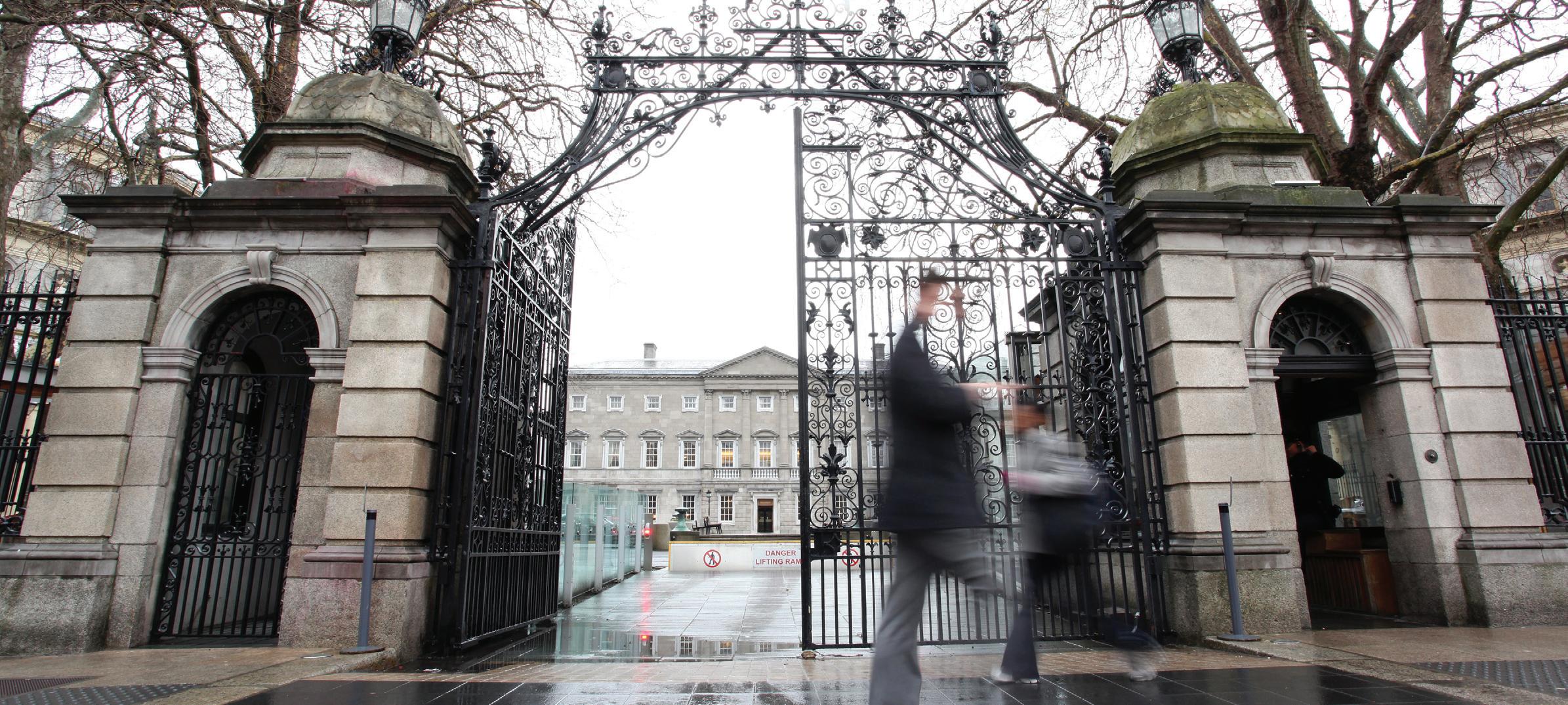
Heads in preparation

public affairs eolas
150 eolas public affairs
Environment, climate, and communications
Gas (Amendment) Bill
Energy (Windfall Gains in Energy Sector) Bill
Finance
Heads approved 4 October 2022
Heads approved 4 October 2022
Financial Provisions (State Guarantees and International Financial Institution Funds) Bill Heads in preparation
Finance (Tax Appeals) Bill Heads in preparation
Financial Services and Pensions Ombudsman (Amendment) Bill Heads in preparation

Health
Health (Abolition of Public Inpatient Charges) Bill Heads in preparation
Health (Termination of Pregnancy Services Safe Access Zones) Bill
Public Health (Tobacco and Nicotine Inhaling Products) Bill
Health (Amendment) Bill
Mental Health Bill
Heads approved 27 July 2022, PLS ongoing
Heads of bill approved 22 October 2019, PLS has taken place
Heads approved October 2022, PLS has taken place
Heads approved 14 July 2021, PLS has taken place
Health Information Bill Heads in preparation
Housing, local government and heritage
Land Value Sharing and Urban Development Zones Bill Heads approved 14 December 2021, PLS to commence
Local Government (Directly Elected Mayor with Executive Functions in Limerick City and County) Bill Heads approved 20 April 2021, PLS has taken place
Planning and Development Bill Currently in Dáil second stage
Marine Protected Areas Bill Heads approved 13 December 2022, PLS ongoing
Justice
Criminal Justice (Sexual Offences and Human Trafficking) Bill Heads approved 27 July 2022, PLS has taken place
Criminal Justice (Engagement of Children in Criminal Activity) Bill Completed Dáil first stage, 23 January 2023
Court Proceedings (Delays) Bill PLS complete
Garda Síochána (Powers) Bill Heads approved 14 June 2021, PLS has taken place
Inspection of Places of Detention Bill Heads approved 24 June 2022, PLS has taken place
Domestic, Sexual and Gender Based Violence Agency Bill Heads in preparation
Sale of Alcohol Bill Heads approved 25 October 2022
Public expenditure and reform

Civil Service Regulation (Amendment) Bill Heads approved 11 April 2018, PLS has taken place River Shannon Management Body Bill Heads in preparation
Social protection
Automatic Enrolment Retirement Saving System Bill Heads approved 26 April 2022, PLS has taken place

Tourism, culture, arts, Gaeltacht, sport and media
Registration of Short-Term Tourist Letting Bill Heads in preparation
Údarás na Gaeltachta (Amendment) Bill Heads approved
Transport
Merchant Shipping (Investigation of Marine Accidents) Bill Heads approved 7 December 2022
*Progress correct as of 15 February 2023
public affairs eolas 151 eolas public affairs
Oireachtas Library and Research Service: ‘The vision remains the same’

The Oireachtas Library and Research Service (L&RS) provides objective information services to Oireachtas members and committees. Ciarán Galway discusses the role and remit of the L&RS with Madelaine Dennison, the Principal Officer who leads the library, research, and records management functions in the Houses of the Oireachtas.
“Recognised as a high-performance team, the 50 staff of the Oireachtas Library and Research Service exhibit a real sense of pride in working for the national parliament and are ambitious for the services they deliver,” Dennison begins, adding: “Led by a management team of four assistant principals, the L&RS has five priorities. Namely: people; partnerships; digital transformation; corporate governance; and delivering on the Houses of the Oireachtas Service Action Plan 2022.”
People
Amid a recent influx of new staff following a period of turnover, the L&RS’ people priority is largely defined by recruitment and the onboarding of fresh talent. “As we build new teams, we are implementing a high-performance framework to ensure alignment with the objectives of the L&RS,” she articulates.

Simultaneously, in response to the workplace changes catalysed by the Covid crisis, the L&RS has introduced a blended working charter for staff across its three units. “The pandemic experience caused us to reconsider the ways in which we work. Alongside embedding hybrid working, this includes using onsite days creatively; bringing people together to collaborate, rather than having people come into the office sitting at their desks and not seeing anybody. Having introduced the charter in late 2022, we will observe how it works in practice during 2023 and amend it as necessary,” the L&RS Head explains.
Partnerships
Seeking to “make the most of partnerships”, Dennison indicates that the L&RS will continue to work collaboratively with all units across the Houses of the Oireachtas Service, as well

as strengthening external relationships.
“L&RS will enhance its collaboration other library and research services in other parliaments. Meanwhile, the Parliamentary Research Service is pursuing a programme of engagement with the wider research community. In 2022, for example, through a partnership with Science Foundation Ireland, six researchers were seconded to L&RS as researchers in residence to undertake scientific research briefings for members on range of topics including eHealth, nanotechnology, and geothermal energy,” she adds.
The Records Management Unit also engages with the Civil Service’s Data Protection Officers’ Network, the Department of Public Expenditure, NDP Delivery and Reform’s FOI Central Policy Unit, and the OGCIO’s eFOI and eDocs interdepartmental working groups to share its perspective, contribute to

public affairs eolas 152 eolas public affairs
systems development, and ensure a consistent approach to compliance.
Digital transformation
Implementation of the Houses of the Oireachtas Service’s Digital Transformation Programme facilitated the rapid transition to a hybrid working model and it remains a key priority in the Oireachtas Strategic Plan 2022-2024.
“The L&RS has completed a significant amount of work relating to the Digital Transformation Programme. For example, we rolled out the online Documents Laid application (DocsLaid) – the first module developed under the Digital Transformation Programme to allow access by external users – which make it much easier for government departments, agencies, and Oireachtas committees to lay documents before the Oireachtas.
“Over the coming months, I will be working with the ICT unit to refresh, reimagine the digital vision across the Oireachtas Library and Research Service, setting out digital transformation trajectory for the next couple of years,” the L&RS Head says.
Corporate governance
The Records Management Unit (RMU) is responsible for strengthening records management across the Service (parliamentary administration). The RMU is working with the ICT Unit and the Office of the Parliamentary Legal Advisers to consolidate a records management programme for the Oireachtas.
Delivering the Action Plan
Within the Houses of the Oireachtas Service Action Plan 2022, the L&RS is responsible for over 30 deliverables underpinning three of the five strategic outcomes, namely: an effective parliament; an inclusive and well supported parliamentary community; and an open, engaged, and sustainable parliament.
Business areas
Within the Oireachtas Library and Research Service, there are three distinct units encompassing a total of 50 staff. While the Oireachtas Library has been in existence for 100 years, the


Parliamentary Research Service is a relatively new unit, established in 2006. Similarly, the Records Management Unit was set up in 2016. Heading up the Oireachtas Library and Research Service, Madelaine Dennison has remit over all three units.
Oireachtas Library
First and foremost, the Oireachtas Library is a workplace library supporting Oireachtas members in their parliamentary duties, as well as providing services to the wider parliamentary community and selected services to the public. The library also has a significant heritage collection and, as such, it has an international profile.
“We have digitised, more or less, the entire heritage collection,” Dennison remarks. “Available via the Oireachtas website, the collection has about 9,000 items dating from the 16th century to the early 20th century. The largest and most significant collection is the Dublin Castle Collection, which includes the former reference library of the British Chief Secretary’s Office in Dublin Castle.
“Very much a modern parliamentary library in terms of its use of technology, the Oireachtas Library is state of the art. The librarians acquire contemporary collections, in both digital and print format, to support research activities across the Houses.”
Parliamentary Research Service
Upon joining the Houses of the Oireachtas Service in 2006, Dennison’s initial brief was to establish a Parliamentary Research Service that
would provide all members with impartial and authoritative research and to modernise the Oireachtas Library. Managed by two assistant principals, the Parliamentary Research Service is a centralised, multi-disciplinary function which provides impartial research, such as policy analysis, to support the two Houses, as well as members and committees in executing their parliamentary duties.
Overall, the Parliamentary Research Service provides non-partisan and balanced analysis which is adapted to the needs of parliamentarians.
“While Oireachtas members are not obliged to utilise our services, they trust our impartiality and clarity of our research. As such, we have a positive relationships with members from across the political spectrum.”
“The Parliamentary Research Service balances the research and analysis we carry out for the two Houses, the commissioned research produced for committees, and then research requested by individual members of the Houses,” Dennison explains.
The Oireachtas research librarians primarily source information, documents and statistics for members and staff in response to over 1,000 queries per annum. The researchers, on the other hand, undertake original research. For instance, around 200 research briefings are undertaken for individual members per annum.
“Alongside this, the legislative analysis service produces research for each piece of legislation as it progresses through the Oireachtas. We also complete short, topical notes covering a broad range of
public affairs eolas 153 eolas public affairs
“Recognised as a high-performance team, the 50 staff of the Oireachtas Library and Research Service exhibit a real sense of pride in working for the national parliament and are ambitious for the services they deliver.”
4
Madelaine Dennison, Principal Officer, Oireachtas Library and Research Service
subjects, for example recently we have covered long Covid, energy poverty, and gender-based violence.
“Similarly, we have a spotlight series of research briefings which take a deep dive into a single topic or policy area which will be of interest to our parliamentarians. However, we take care to avoid contributing to or directing the debate; rather we inform the debate,” Dennison observes.
Records Management Unit
The Records Management Unit’s functions include administrative records management, records classification, records disposition, and the transfer of historically significant records to the parliamentary archive, which is a priority project for 2023. The RMU also manages data protection across the Houses.
The Records Management Unit has three strategic priorities.
1. Protection: Managing the personal data and valuable records of the Houses of the Oireachtas Service.

2. Compliance: Ensuring that records and personal data are managed lawfully, and internal policies are adhered to.
3. Control: Ensuring that records can be quantified, located, and managed.
Under the Action Plan 2022 for the Houses of the Oireachtas Service’s strategic goal of ensuring high standards of professionalism and corporate governance, the Records Management Unit is tasked with strengthening information governance through a best
Profile
practice approach to records management and best practice approach to data protection. The unit also responds to around 120 FOI queries each year.
“The Houses of the Oireachtas Service has always managed its records; the establishment of the Record Management Unit centralised this function. Simultaneously, we continue to work very closely with colleagues in the Office of the Parliamentary Legal Advisors, the ICT Unit, the HR Unit, and Members’ Services,” Dennison outlines.
International comparisons
Relative to other modern parliamentary library and research services, Dennison asserts, the Oireachtas Library and Research Service is a leader in some respects, particularly data visualisation. For instance, the L&RS constituency dashboards product, which is available to the public, provides an interactive online visualisation of Census 2016 data for each of the Dáil constituencies. It is possible to explore this data across six distinct themes: demographics; economic status and work; households and housing; transport; education; and families. Work is underway to enhance the product and add the latest data.
“We must keep evolving to meet the needs of our TDs and senators. Increased use of infographics and data visualisation aligns with this evolution and makes our research products more accessible,” Dennison insists.
“Internationally, parliamentary libraries and research services differ in size,

Madelaine Dennison joined the Houses of the Oireachtas in 2005 to take up the post of Head of Library and Research Services. Dennison was responsible for establishing the parliamentary research service and for modernising the Oireachtas Library. More recently, Dennison has established a records management unit in the Oireachtas. Prior to working in the Houses of the Oireachtas, Dennison established law library and knowledge management services in the Office of the Attorney General, Dublin Dennison has an MBS in business practice and her professional interests are organisational development and executive coaching.
structure, and remit. The Oireachtas Library and Parliamentary Research Service compares well with larger services. For example, if you look at what the US Congressional Research Service does, the Oireachtas has the same range of services.”
Talent management
Discussing the continuity of L&RS work during the Covid pandemic, Dennison pays tribute to her staff for their “brilliant management of the overnight pivot to working from home”, and for “finding creative ways of ensuring delivery of the full suite of services to members”.
“The early days of the pandemic produced challenging circumstances, but L&RS staff really rose to the challenge. Services continued to meet members’ needs and maintained standards,” she observes.
As is the case across the public service, staff retention is an ongoing challenge. Emphasising the interesting nature of its projects, as well as the opportunity for collaboration, Dennison highlights the high calibre and ambitious nature of the staff working with within the L&RS.
“In terms of staff retention, we must always strive to ensure that the L&RS is a great place to work. We empower our staff, and ensure access to continuing professional development, The parliamentary administration has implemented hybrid working and family friendly policies.”
Vision
Having been with the Houses of the Oireachtas Service for almost 20 years, Dennison’s ambition for the L&RS has been consistent. “While the Oireachtas and the needs of members keeps evolving, and the definition of ‘worldclass’ develops, in many ways, our overarching vision remains the same: ensuring that the Oireachtas has a worldclass library and a world-class parliamentary research service. How the L&RS delivers ‘world-class’ is now focused on being creative, building partnerships – both internally and externally, and digital innovation,” Dennison concludes.
public affairs eolas 154 eolas public affairs
Seanadóir Niall Ó Donnghaile: Passport office in the North ‘a necessity’
Six years ago, when I was first elected to the Seanad, I set an overall objective of bringing the Seanad to the North and the North to the Seanad. I did that in several ways, including by raising issues in the Seanad chamber, almost daily, which were pertinent to the impact of partition on the people of the North in particular, and the people of Ireland generally.

In taking this approach I was mindful that the nationalist people of the North lived, for almost 100 years, in a state that used its formidable resources – political and military – to discriminate against them and deprive them of their economic, political, and cultural rights. In practice, this removed people to the margins of political life and excluded them from all vestiges of rights as citizens of the state.

I was also mindful that very often the nationalist people of the North have, since partition, looked to the Oireachtas and Dublin, as a political and emotional home. Unfortunately, most Irish governments – through indifference –assisted in that exclusion, certainly until the signing of the Good Friday Agreement, which effectively placed the Irish Government as a joint guarantor with the British Government over the North.
Against this background, it made sense to identify challenges faced by the people of the North and lobby for those challenges to be resolved in such a way that the people of the North who wanted to feel part of the Irish nation, in line with their right under Article 2 of Bunreacht na hÉireann, could do so.
Passport Service office
Campaigning for a public passport office is a very practical expression of inclusion with respect to the all the people of the North. And by all, I mean all. Since Brexit, more and more people from a unionist background are applying for an Irish passport.
Opening a new, dedicated Irish passport office in the North is simply common sense.
Given the continued and significant increase in applications coming from the North of Ireland, people often need support and interaction when they are first-time applicants, or are applying for renewals and replacement documents. They should be able to do so in their nearby community.
Citing the Royal Mail postal strike, the Passport Service’s recent decision to temporarily suspend (from 12 December 2022 until 25 January 2023) the posting of passports and documentation to the North, was disgraceful and added an unfair burden on applicants.

If there was a passport office in the North, people there would have an accessible office convenient to them. They would be saved both the disruption and additional costs caused by the current unfair arrangements.
Last year, 2022, was another recordbreaking year in terms of applications from the Six Counties, with over 128,000 applications, 50,000 of which were firsttime applications.
It is clear there is a huge demand for passports from people in all constituencies across the North of Ireland. Having a passport office there would provide crucial resources to enable the system to cut waiting times and increase the quality of the service for applicants. It would also provide additional jobs locally.

It is increasingly clear that having an office in the North is a necessity. The Irish Government must stop dragging its heels on this issue. It is time to end the delay and start planning to open an office soon.
I will continue to campaign for a passport office for the North until one is opened.
Passport Service comment
Asked for a response to the Seanadóir’s criticism of the disruption to its service, the Passport Service said:
“As a result of national strike action by staff at the UK Royal Mail postal service during the month of December 2022, the Passport Service took contingency action to minimise disruption for customers. As part of these measures, the Passport Service temporarily suspended the dispatch by post of passports and supporting documentation to Great Britain and Northern Ireland, to avoid passports being affected significantly by the resulting disruptions to Royal Mail postal services.
“This contingency action allowed the Passport Service to issue urgently required passports to customers by alternate means, where those passports may not otherwise have been received in time for travel due to the Royal Mail disruptions. It also mitigated against the risk of data protection breaches and potential fraud, which could have arisen from the misplacement of passports.
“The Passport Service immediately updated its website to inform customers of the temporary measures and encouraged customers who required their passport urgently to contact the Customer Service Hub to make arrangements to receive their passport by alternative means. The Passport Service closely monitored the situation with Royal Mail services throughout and resumed dispatch of passports to Northern Ireland on 23 January 2023. Before the resumption of service, the Passport Service issued urgently required passports to over 1,700 applicants based in Northern Ireland and Great Britain through alternate means.”

public affairs eolas 155 eolas public affairs
The recent disruption of passport services for Irish citizens in the North has served to emphasise that the establishment of a new public passport office is a necessity, writes Sinn Féin Seanadóir Niall Ó Donnghaile.
Credit: Sinn Féin
TRADE UNION DESK
Why we pay Child Benefit to all families
The new Taoiseach’s priority to tackle child poverty alongside a double Child Benefit payment to ease the cost of living for families has reopened a regular debate on whether we are wasting public money on wealthy parents, writes Laura
Congress
Child Benefit is a cash payment from the State to families with children under age 16, or under 18 if in full-time education or training. It is worth €140 a month tax-free for each child, with a higher rate paid for twins and other multiple births.
Unlike other social welfare payments, Child Benefit is not means tested. You do not have to show your household income is below a certain threshold to qualify. Nor is it contributory. You do not need a history of paying social insurance while in employment to get it.


It is paid for all children regardless of the size or source of their parents’ income, excluding asylum seekers and persons seeking leave to remain in the State.
Child Benefit is one of the largest expenditures from the Department of Social Protection annual budget. In 2020, €2.1 billion was paid to 630,000 families for 1.2
million children. Why and how such a large sum is spent is open to regular criticism.

Some argue that the public purse should not be partfunding people’s choice to have a child. More often, others argue that, rather than scrapping it completely, Child Benefit should be taxed or only paid to lowincome families to better target available resources at children at risk of poverty.

These arguments surfaced again when the payment rate was doubled for November 2022, as a once-off measure to assist young families with the surge in the cost of living.
Why not target to needy families?
Child Benefit is one of our longest running social welfare payments. It was first introduced in 1944 and was originally only paid to fathers with three or more children under age 16 as an anti-poverty measure for large families.
Bambrick, Head of Social Policy and Employment Affairs at the Irish
of Trade Unions (ICTU).
public affairs eolas 156 eolas public affairs
This made Ireland unusual among European countries who had also introduced children’s allowances but with the purpose of encouraging couples to have larger families to replace the population lost in the two world wars.

Nearly a century on, Child Benefit continues to be used by governments throughout Europe to contribute towards the cost of raising a child and to invest in future generations who will in turn provide the pensions for today’s workers.
Child Benefit is a particularly important policy instrument in Ireland given that our income tax code no longer has a child tax credit for parents. Likewise, the vast majority of working families are not entitled to the other means tested income supports and public services.
It was not until 1973 that the payment was made payable to Irish mothers. At the time few married women had an independent income. Greater awareness of wives and children being financially neglected by their husbands shifted public attitudes to accepting the long-held European view of Child Benefit as a housewife’s wage.
Along with the huge cost and administrative burden involved in means testing over 600,000 families, within-household poverty remains a key reason for retaining Child Benefit as a universal payment. That is, while there may be a high earner in a household, we cannot assume that the income is adequately shared. But ultimately Child Benefit is a payment from the State for the child not for the child’s parents.
Where next for Child Benefit?
In 2013, the UK Government started to tax Child Benefit and ceased payments for the children of high earners. For each £100 that a parent earns over £50,000, 1 per cent of the total Child Benefit received must be repaid in tax. Therefore, if a parent earns £60,000 or more the full amount is clawed back.

The savings from this reform have not been distributed to children in poorer families. Child Benefit has increased by a mere £6.50 to £94 a month for the firstborn and to £63 for any additional children and, when adjusted for rising prices, is now worth less than it was in 1999.
The recent Commission on Taxation and Welfare does not recommend Ireland follows the UK example. It recommends that Child Benefit should remain tax-free and paid for every child. It does however recommend one reform –a top-up to the standard €140 monthly payment for children in low-income families.

This new means-tested second tier Child Benefit would replace the current child increase paid to parents receiving a weekly social welfare payment, such as Jobseeker’s Allowance or One Parent Family Payment, to remove disincentives to work and reduce the poverty risk for low-paid working families.
For the few parents who occasionally pop up in the media declaring that they neither want nor to need the money, it is worth remembering that Child Benefit is an opt-in payment. You do not automatically receive it – you have to apply, and you can opt-out at any time by contacting the Department of Social Protection to close your claim.
“
public affairs eolas 157 eolas public affairs
“The recent Commission on Taxation and Welfare does not recommend Ireland follows the UK example. It recommends that Child Benefit should remain taxfree and paid for every child.”
Political Platform


Green Party TD for Dublin South-Central, Patrick Costello was elected to Dáil Éireann in February 2020. Previously, he worked as a child protection social worker and was elected to Dublin City Council in 2014 and again in 2019. Costello is married to Green Party Dublin City Councillor, Hazel Chu.
How did your political career begin?

During my time in college I was involved in activism in urban space and the environment, you could say that my political career began there, or at least my engagement in politics in the broader sense. I had been involved in the Green Party – canvassing and helping others get elected – since 2007. However, my own career in electoral politics began in 2013, when I started my campaign for the 2014 local elections.
What are your most notable achievements in the Oireachtas to date?


Since getting into the Oireachtas, I have been campaigning a lot to improve the enforcement on GDPR, particularly against large multinational companies who are exploiting the large amounts of data we give them. I have been working on this issue in a variety of ways alongside other TDs and senators. We have had some successes in that then-Justice Minster Helen McEntee TD agreed to appoint two additional DPCs.
I have also been very proud to have been involved in the Joint Committee on International Surrogacy. We provided an in-depth report with 32 recommendations. All but two of these recommendations have been accepted by government as it moves forward to implementing this legislation as quickly as possible. It is wonderful to see the relief and joy on the faces of
 Patrick Costello TD
Patrick Costello TD
public affairs eolas 158 eolas public affairs
families through surrogacy, knowing they will get the legal certainty they deserve.
Perhaps my proudest achievement to date, is the recent Supreme Court victory in relation to the EU-Canada Comprehensive Economic and Trade Agreement (CETA). This is one more step on the road in a long campaign against investor courts but is an important vindication on the place and role of the Irish Courts within the wider legal and legislative system.
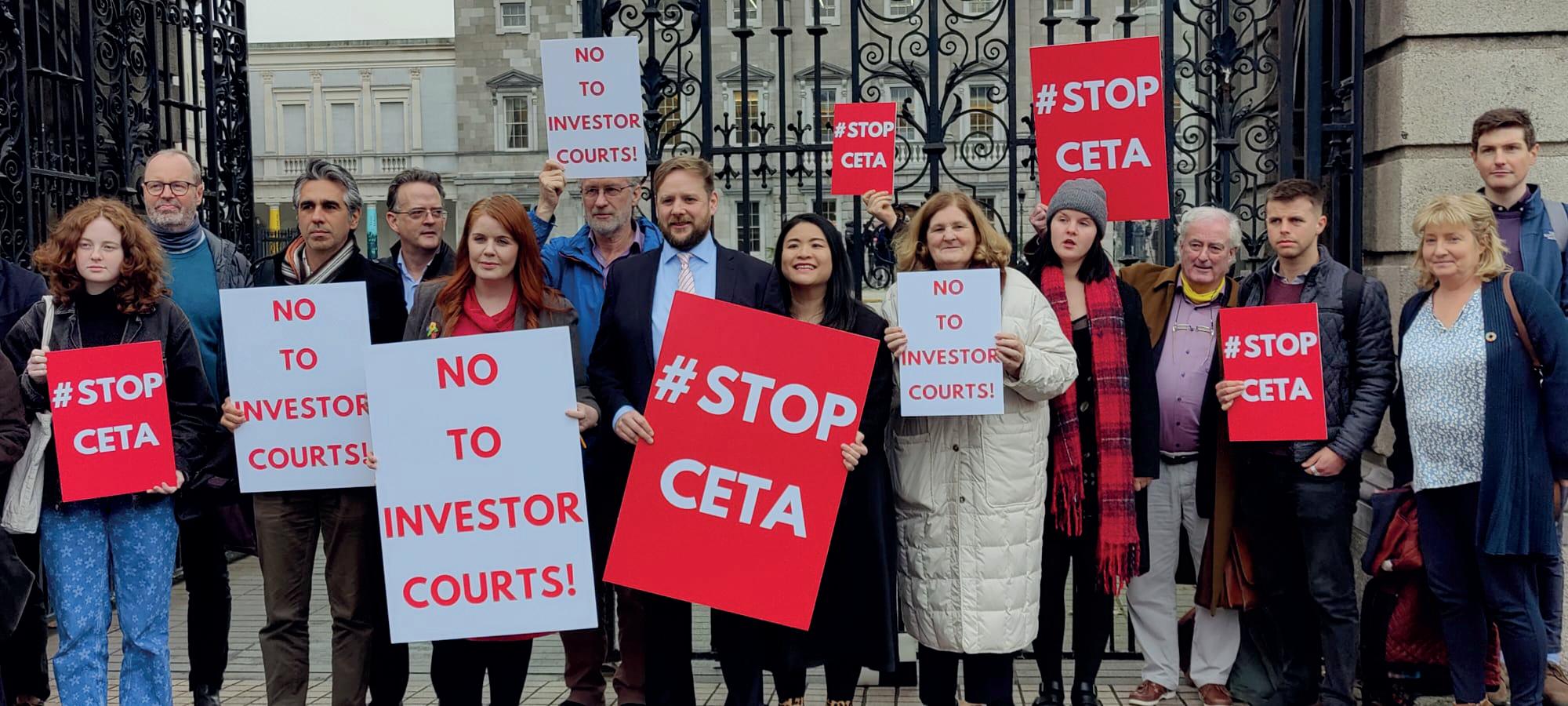
What is unique about representing the Dublin South-Central constituency?

Dublin South-Central is a very politically active and informed constituency. All public representatives in Dublin SouthCentral are kept on their toes by engaged and knowledgeable constituents. At the same time it is a highly diverse constituency, and it is a pleasure and privilege to be able to represent it in the Oireachtas.
What are your priorities going forward?
Before getting elected, I worked as a child protection officer and social worker. I have been on the front lines of child protection work and have seen first-hand
the need to improve the conditions to ensure child protection is enforced. I will continue to work closely with the Minster of Children, my Green Party colleague Roderic O’Gorman TD, to address these issues. Whilst my Supreme Court victory on CETA was important, it is just one step on the road in a long campaign against investor courts. Simultaneously, the need to undertake strong climate action and prevent the damage wrought by climate change is a strong priority for me.
How can the Green Party maximise its impact during the lifetime of the current government?
I think we have done well to deliver climate action given we are the smallest government coalition partner. We have built good relationships with all parties, at various levels, and will continue to develop these relationships and work with other to deliver on our aims.
What are your interests outside of the political sphere?
I was in scouts when I was a kid and I have spent a long time as a scout leader and would love to have more time to give back to scouting. Outside of this I am kept busy by an active five-year-old.
“Perhaps my proudest achievement to date, is the recent Supreme Court victory in relation to the EU-Canada Comprehensive Economic and Trade Agreement (CETA).”

public affairs eolas 159 eolas public affairs
Patrick Costello TD, Green Party
Women for Election really was pleased to see the Gender Equality Report capture so much of what the feminist movement in Ireland has fought for. All 45 recommendations are a cumulation of a lot of hard work from women and activist groups and to see the Joint Oireachtas Committee validate the need for those changes was like a dream come true. Our work in Women for Election is specifically focused on ensuring that there is equal representation of men and women in all levels of public life.
We believe each one of them should be given resources to implement. It is time for decisive and measured action from government. There have been occasions where reports have been left on the shelf to collect dust. We cannot see this happen. Critically, we want to see the recommendation by the Citizens’ Assembly to introduce 40 per cent gender quotas for local and Seanad elections by the end of 2022 taken on board. We want to see the Government legislate for these quotas in 2023 and be in place for local elections in 2024. Another recommendation put forward by Women for Election was that these quotas would include nested quotas. These are targeted quotas to increase representation of ethnic minority groups.
We are delighted to see the recommendation to make politics more family friendly. This means we want to see the implementation of remote voting on Oireachtas business. To allow passage of the Private Member’s Bill, the 39th amendment of the Constitution (the remote parliamentary voting) Bill 2020 is essential. The way business is conducted must be modernised.
Ireland has a mere 25 per cent of women sitting at local government level. This desperately needs to be addressed and
Gender Equality Report ‘momentous

The launch of the Gender Equality Report in the Leinster House AV room was momentous and historic. That is not an exaggeration. The report has the potential to change the Irish political landscape as we know it and lead the way for a potential pathway to 50/50 representation, writes
Caitríona Gleeson, CEO, Women for Election.

we have seen quotas work. The implementation of quotas at local government would give a shock to the political system it so desperately needs. Ireland currently ranks 100th in the world (as of December 2022) for women’s representation in national parliaments, falling behind countries such as China and Iraq. With local government being such a huge bedrock to our national parliaments, investing time in ensuring women are running in local government will, in time, feed into our national chambers.
Women for Election was delighted to see the recommendation to amend the Constitution making the language more inclusive around care. Care is a crucial part of our society both in and outside the home and ensure it is protected in a gender inclusive way is imperative. In January 2023 alone, we saw the Irish Human Rights and Equality Commission launch its awareness campaign on gender equality and care. The unequal distribution of care directly impacts women having time to be able to engage in politics.
Research conducted by Aodh Quinlivan, Fiona Buckley, Olajumoke Olumwaferanmi Igun, and John Ger O’Riordan in partnership with Cork City Council, Women’s Voice in the Council Chamber, found that there is no electoral bias against women. The problem is that not enough women are being selected for

the ballot papers. That is why Women for Election is working across all parties and none to change systems and structures to see more women elected.
There is a whole plethora of cultural change that needs to happen to ensure politics is welcoming and accessible to all minorities including women. We know women are more likely to experience much more abuse online and at the doors, this abuse tends to be a lot more personal than what their male counterparts would receive. Women for Election are putting in the supports to inspire and equip women to run in all levels of political life.
Women for Election is focused on advocating for solutions. We want this report to be the catalyst for change in political parties. The bottom line is Ireland cannot continue to operate our government with only 23 per cent female representation in the Dáil and 25 per cent at local level. There is a desperate need for urgency around these changes. We at Women for Election know this change is possible, we know this change is good for Ireland and we know now is the right time!
If you are a woman reading this and are interested in running for election or getting involved in any level of public life visit:
W: www.womenforelection.ie
public affairs eolas 160 eolas public affairs
and historic’




















































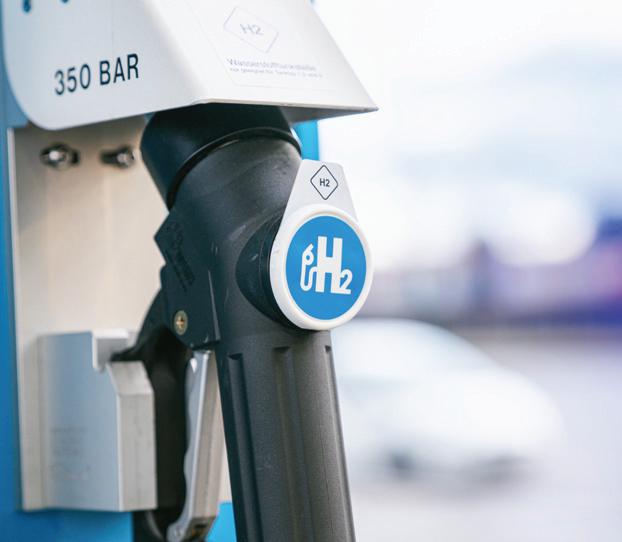

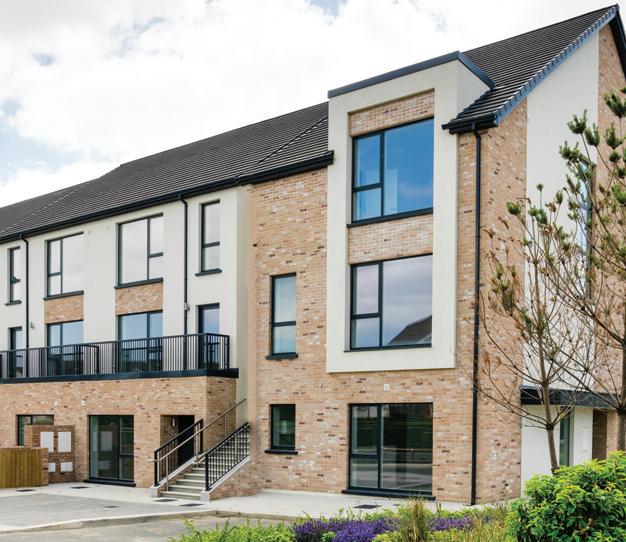
Email: sam.tobin@eolasmagazine.ie Tel: 01 661 37551 Web: www.eolasmagazine.ie 3 Corporate advertising and advertorial profiles 3 Front cover feature profiles Contact our advertising team to discuss profile opportunities including: 3 Roundtable discussions 3 Sponsorship of special reports Special reports in the next issue of eolas Environment and climate • Hydrogen • Mental health and wellbeing Delivering cost rental housing • Energy • Environment and sustainability • Climate action • Housing • Business • The economy • Local government • Transport • Criminal justice • eLearning and training • Governance • Regional focus • Public affairs • Health • Education and skills • Infrastructure and construction • Digital government Each issue of eolas will cover a wide range of issues, sectors and regular features including:









































































































































































































































 Andrew Hickey
Andrew Hickey



















































 Paul O’Neill Managing Director, Corporate Finance, KPMG Ireland
Paul O’Neill Managing Director, Corporate Finance, KPMG Ireland







 The National Road Network
The National Road Network

















 Start Spreading the Mews. EcoCube.
The Working-Home.
Building Societies.
Thirty-Three Churches.
Home4Community.
Urban Horticulture. Join the Dots.
Start Spreading the Mews. EcoCube.
The Working-Home.
Building Societies.
Thirty-Three Churches.
Home4Community.
Urban Horticulture. Join the Dots.





































































































 SSE Renewables’ Deborah Coleman answering questions in Dungarvan about its Celtic Sea Array project.
SSE Renewables’ Deborah Coleman answering questions in Dungarvan about its Celtic Sea Array project.





 E: deaglan.odonaill@esb.ie W: www.esb.ie
E: deaglan.odonaill@esb.ie W: www.esb.ie





























































 Speakers: Nicola Halloran, Teneo; Laura Truelove, Welsh Government; Darragh Doyle, Dublin City Council Culture Company; Lea Sandell, LEGO Group; and Elisabetta Bello from Edelman.
Darragh Doyle, Conference Chair interviewing Lea Sandell from the LEGO Group.
Social Media Dublin 2023 crowd.
Thuraya Al Harthy and Wadhha Al Busaidi, Oman Telecommunications Company enjoying a selfie at the conference.
Trudi Mason, Health Information Quality Authority chatting to Zoe Forde from the Nursing and Midwifery Board of Ireland at the 2023 Social Media Dublin conference.
Jenny Finnegan, Catherine Whelan, Shona Meehan, Sarah McMahon and Laura Meehan from Fáilte Ireland capturing a photo of the Croke Park stadium where the conference was held.
Speakers: Nicola Halloran, Teneo; Laura Truelove, Welsh Government; Darragh Doyle, Dublin City Council Culture Company; Lea Sandell, LEGO Group; and Elisabetta Bello from Edelman.
Darragh Doyle, Conference Chair interviewing Lea Sandell from the LEGO Group.
Social Media Dublin 2023 crowd.
Thuraya Al Harthy and Wadhha Al Busaidi, Oman Telecommunications Company enjoying a selfie at the conference.
Trudi Mason, Health Information Quality Authority chatting to Zoe Forde from the Nursing and Midwifery Board of Ireland at the 2023 Social Media Dublin conference.
Jenny Finnegan, Catherine Whelan, Shona Meehan, Sarah McMahon and Laura Meehan from Fáilte Ireland capturing a photo of the Croke Park stadium where the conference was held.


















 Mike O’Rourke, Head of Contracting and Safety and Richard Vaughan, External Partnerships Lead, Electric Ireland Superhomes.
Mike O’Rourke, Head of Contracting and Safety and Richard Vaughan, External Partnerships Lead, Electric Ireland Superhomes.



































































































 Patrick Costello TD
Patrick Costello TD







































